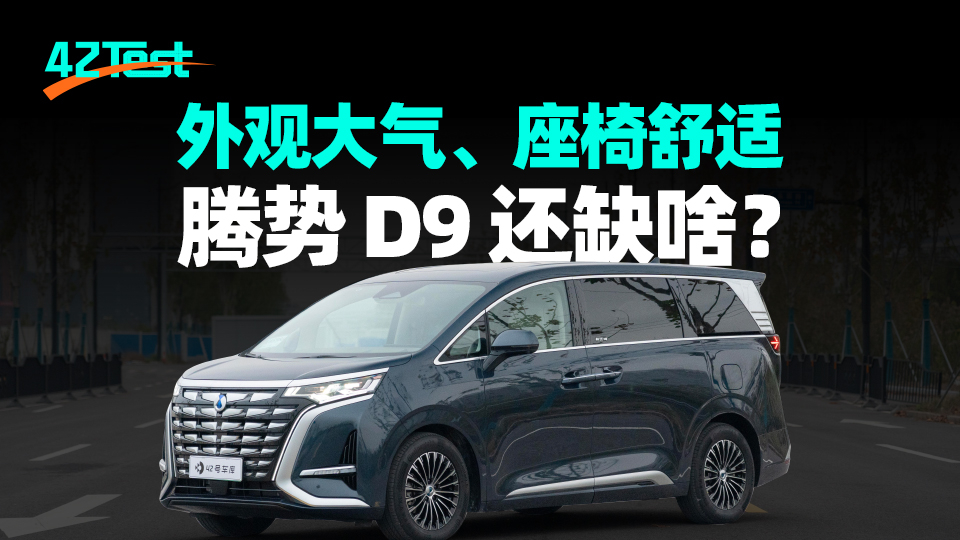Translation
In the former Chinese MPV market, the rulers were undoubtedly the Buick GL8, Toyota Sienna and Alfa, Honda Odyssey and a few other vehicles. However, in the new energy MPV field, the options are few and far between. In addition to Land Tour Dream Home and the recent JiKe 009, the more popular ones may only be the D9 under BYD’s high-end brand DENZA.
We have previously experienced the trial installation of this car from two static and dynamic perspectives. Interested friends can click the following links to take a look:
- Static experience: End of year delivery is over 10,000, where does the confidence of DENZA D9 come from?
- Dynamic experience: High-end but not arrogant? This is DENZA D9 making luxury MPVs.
This time we put the DENZA D9 into our 42Test test and conducted a more detailed test on this car, which is also the first MPV model to undergo 42Test testing.
In the end, many test results were completely different from what we expected. I will explain them one by one below.
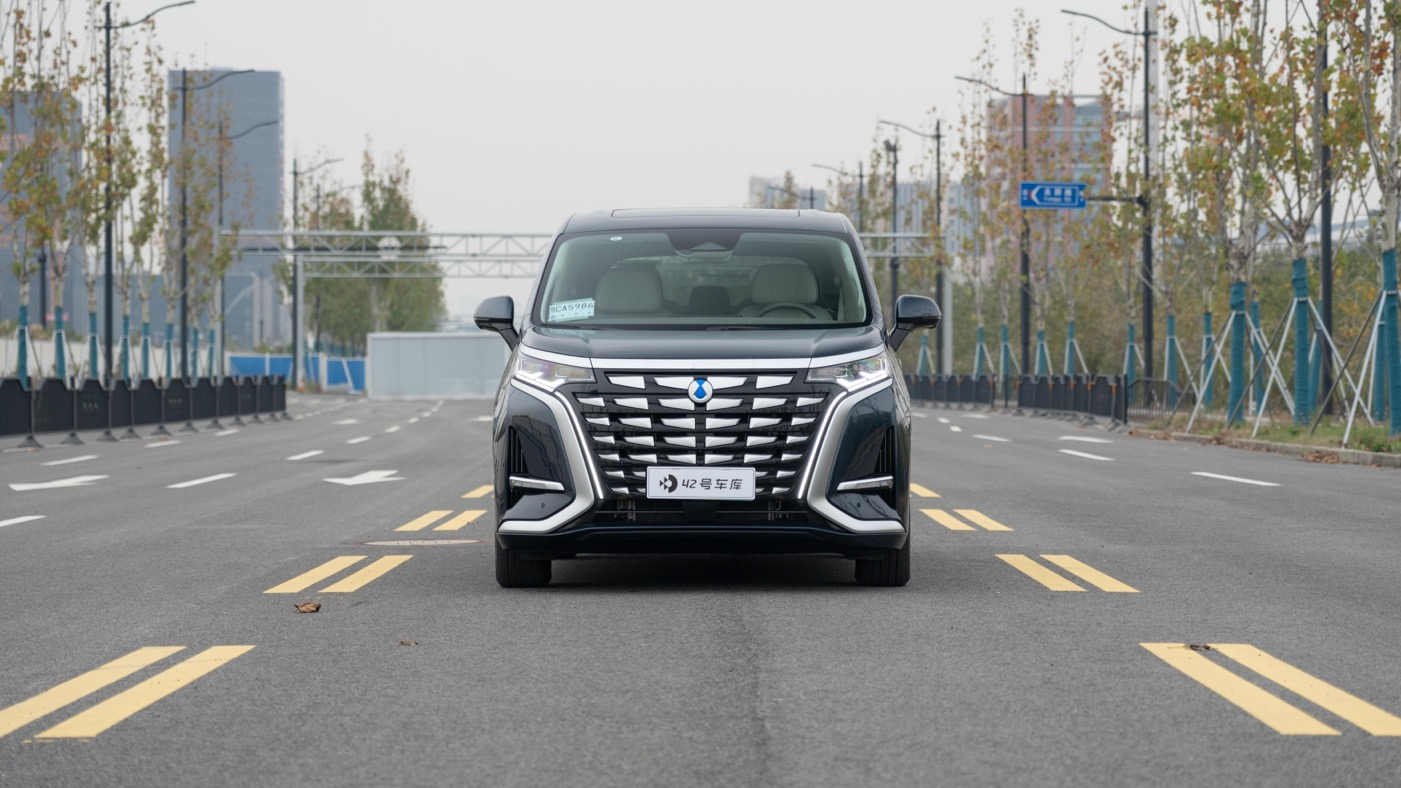
Charging Test: The fastest charging PHEV?
First of all, it should be noted that the battery of the DENZA D9 is not the common 400 V platform, but a 600 V high voltage platform. This means that the vehicle can obtain a larger voltage during charging, and theoretically the charging speed is faster than that of conventional 400 V hybrid models.
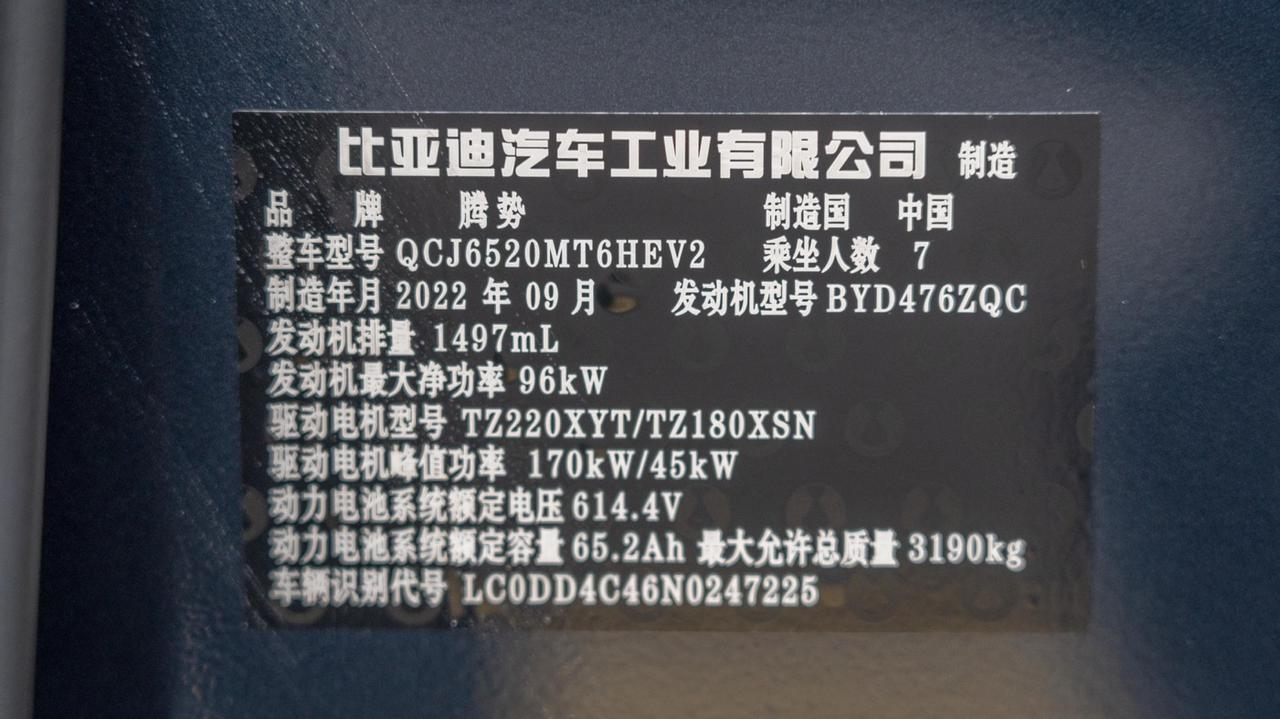
This time, we still went to the Small Orange charging pile with a maximum charging power of 120 kW to conduct a charging test on the DENZA D9. There were relatively few vehicles during the test, and no current splitting situation occurred, which was unexpected.
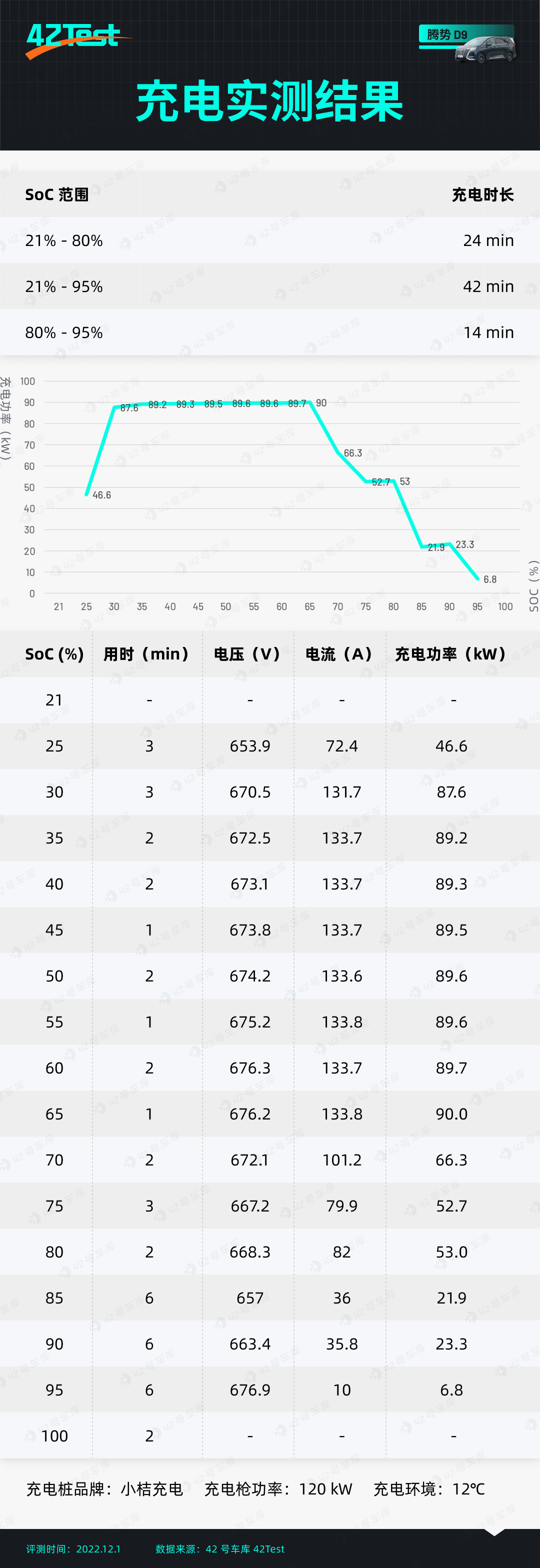
During charging, the ambient temperature is 12°C, and due to the vehicle’s power-off protection system, the initial battery level is 21%. It can be seen that when the battery level is less than 30%, the charging power is about 45-50 kW, which is not significantly different from other hybrid models.
However, once the battery level reaches 30%, the charging power will increase rapidly and can maintain close to 90 kW until 70% of the battery level. It should be noted that the official maximum charging power is only 80 kW, which means that it is cheaper than officially advertised. And the 90 kW charging power is the fastest charging hybrid/plug-in hybrid model based on our test results, reaching the charging level of most electric vehicles and shaking off the hat of slow charging for hybrid cars.
Starting from 70%, the charging power will gradually decrease to around 60 kW, and then drop to around 50 kW. After the battery level reaches 85%, the vehicle enters the trickle charging mode, and the charging power drops to just over 20 kW.
When the battery level is around 95%, the charging power will drop to 6-12 kW. But strangely, at such a low power, it only takes 2 minutes to charge from 95% to 100%, giving a feeling of ‘a quick and decisive victory’?
Overall, due to the adoption of a 600 V high-voltage platform, the DENZA D9 has a certain advantage compared to other hybrid models in terms of peak charging power, even not inferior to many 400 V pure electric models.
Endurance Test: 120 km on Pure Electric and 10 fewer liters of fuel
The model we tested this time is DENZA D9 DM-i Super Hybrid Edition 970 Four-Wheel Drive Flagship Model, and the core parameters are as follows:
- 1.5T Xiaolong engine, maximum power of 102 kW, maximum torque of 231 N·m. This engine is also the first to be mounted on an MPV over 2.6 tons.
- Front and rear AC permanent magnet synchronous motors, maximum power of 170 kW and maximum torque of 340 N·m for the front motor; maximum power of 45 kW and maximum torque of 110 N·m for the rear motor.
- Equipped with LiFePO4 blade battery, with a battery capacity of 40.06 kWh, a fuel tank capacity of 53 L, and gasoline of 92#.
- Official NEDC comprehensive endurance of 970 km, NEDC pure electric endurance of 180 km, and NDEC comprehensive fuel consumption of 6.7 L/100 km.### Pure Electric City Test: Running 100 km
As it is a hybrid model, according to the test rules of 42Test, we only tested the pure electric city range, after all, the hybrid can’t run far on the highway with pure electricity.
The test was conducted on November 30th, when the weather in Shanghai was already relatively cold. The outdoor temperature during the test was only 4°C, so we adopted the winter air conditioning test plan, which means setting the temperature to 24°C, the wind speed to 2 gears, and turning off the A/C. Adjust the driving mode to Standard, set the kinesthetic energy recovery to the maximum, set the intelligent battery protection to the lowest of 25%, and force the use of EV mode.
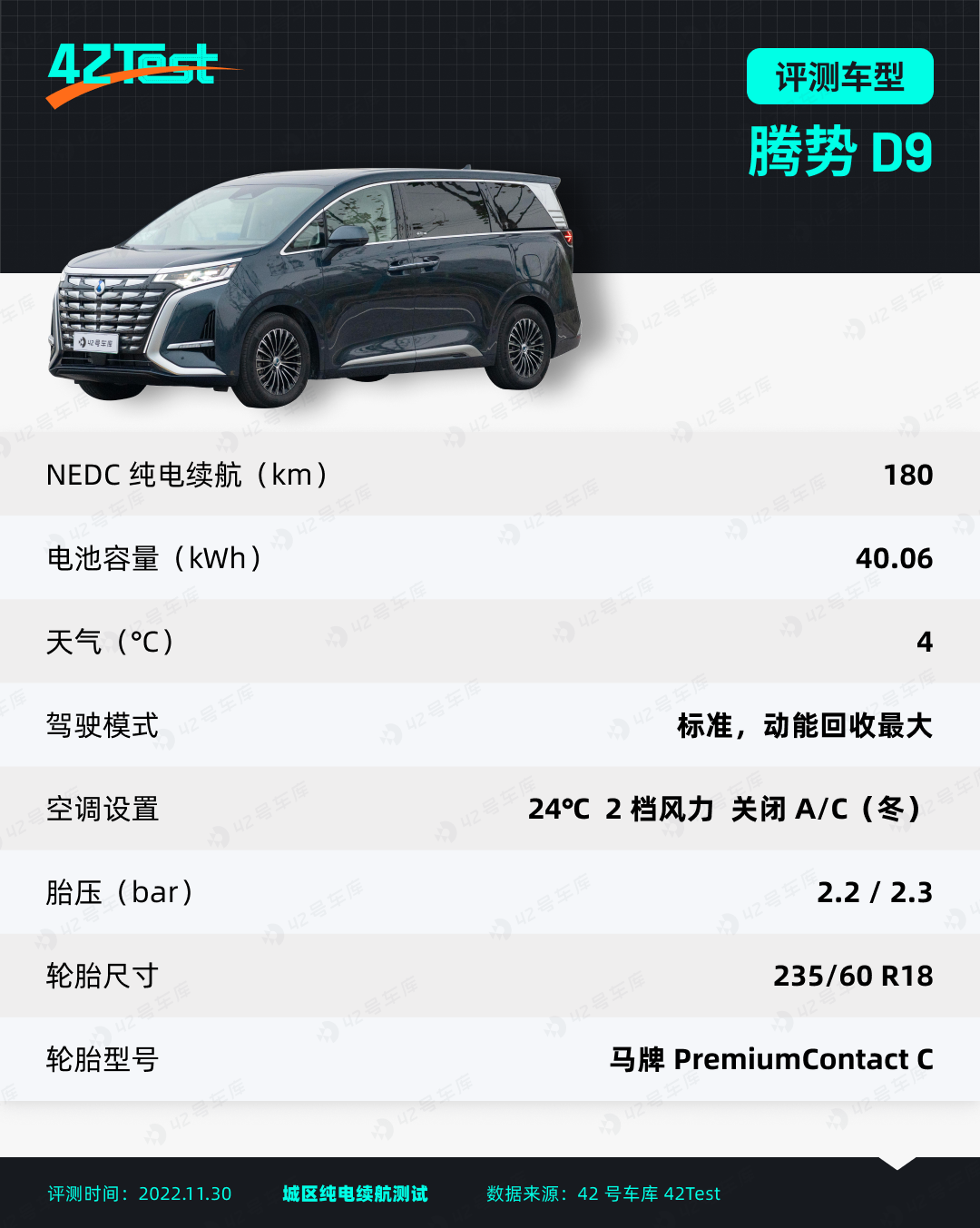
The test route for 42Test’s city range test is 100 km for outer ring road plus 50 km for city ground roads. Since our car has the registration number from another place, we are unable to enter the inner ring of Shanghai, so we have planned a new route for the city ground road test. Although the congestion level is not as severe as the city center of Shanghai, it also covers the scenarios of traffic lights, partially smooth and partially congested driving in daily driving.
As for the outer ring road, the road conditions and congestion are as severe as usual, similar to the road conditions of most urban expressways during peak hours.
Since the official NEDC pure electric range is 180 km, we first conducted a 50 km city ground test, and then immediately started the outer ring road test.
After 4 hours and 18 minutes of testing, the DENZA D9 ran a total of 101 km, with an average speed of 23.49 km/h. After completing 50 km of city ground road, the vehicle was forced to switch to HEV mode after running 51 km on the outer ring road, and the sound of the engine starting could be heard.

Since the displayed range is dynamic, the displayed pure electric range of the vehicle was 171 km when the test started, and 27 km when the test ended, with a total loss of 144 km, and the power loss ratio is 1:1.43, and the displayed energy consumption is 23 kWh/100 km. Based on this data, the theoretical full-electric range of DENZA D9 under city work condition is 119.6 km.View the power loss data every 10 km. It can be found that in the first 50 km of ground road stage, the power loss displayed every 10 km is approximately between 13-14 km. After driving on the outer ring expressway, except for a congested segment in the middle that causes a power loss of up to 15 km, the proportion of power loss on the remaining sections is about 1:1.
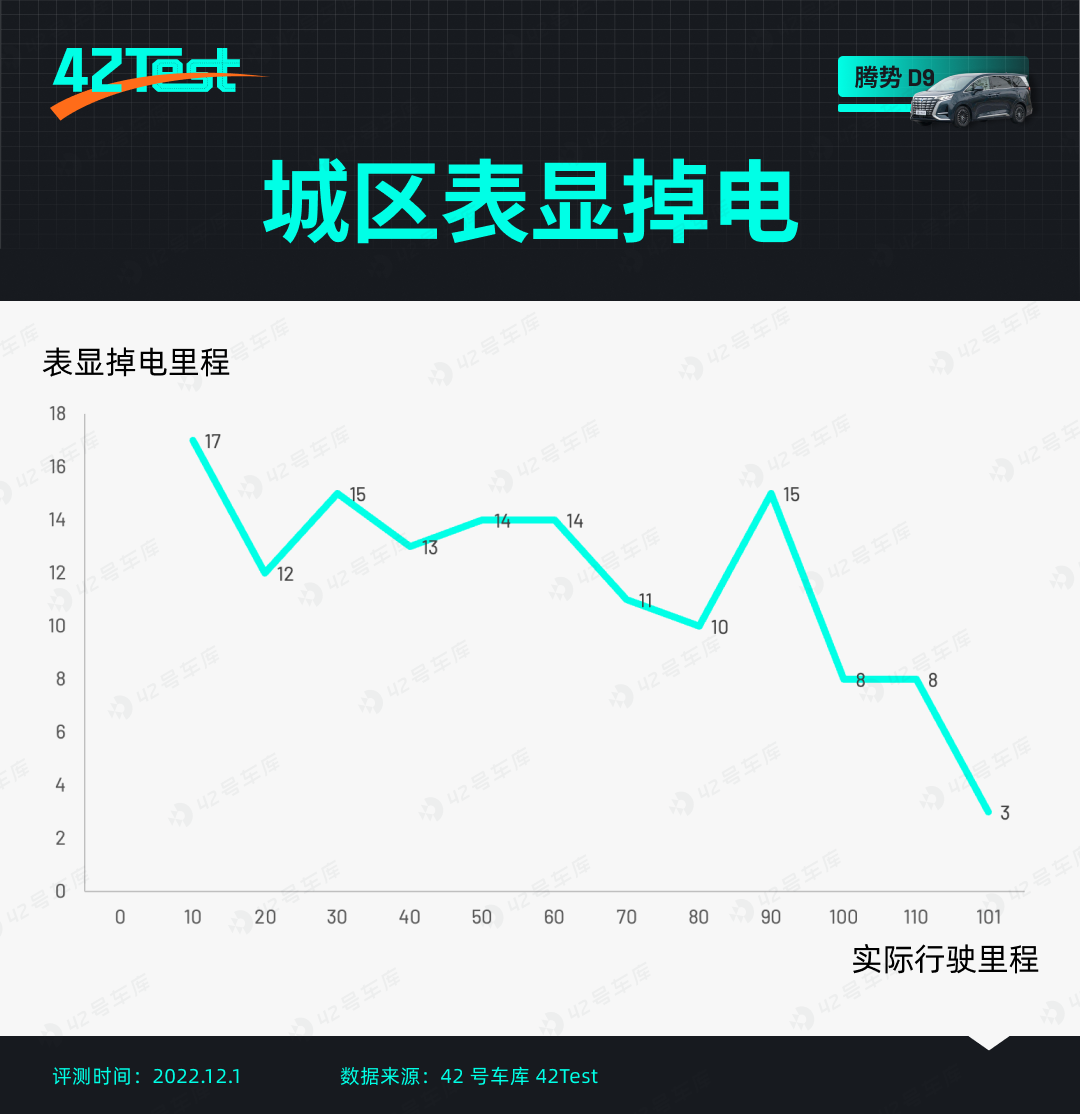
To reiterate, this is an MPV with a length exceeding 5.2 meters and a curb weight exceeding 2.6 tons. The test was conducted in cold weather. Do you think this pure electric cruising range can meet daily driving needs?
High-speed Power Loss Test: Over 10 Liters per 100 km?
The high-speed power loss test was conducted on December 1st, and the outdoor temperature was also 4 °C. Before the test, we filled the fuel tank and still set the air conditioning temperature to 24℃ and the fan speed to 2nd gear, turned off the A/C. Adjust the driving mode to standard, set energy recovery to the maximum, set intelligent power-saving to the lowest 25%, and use HEV mode.
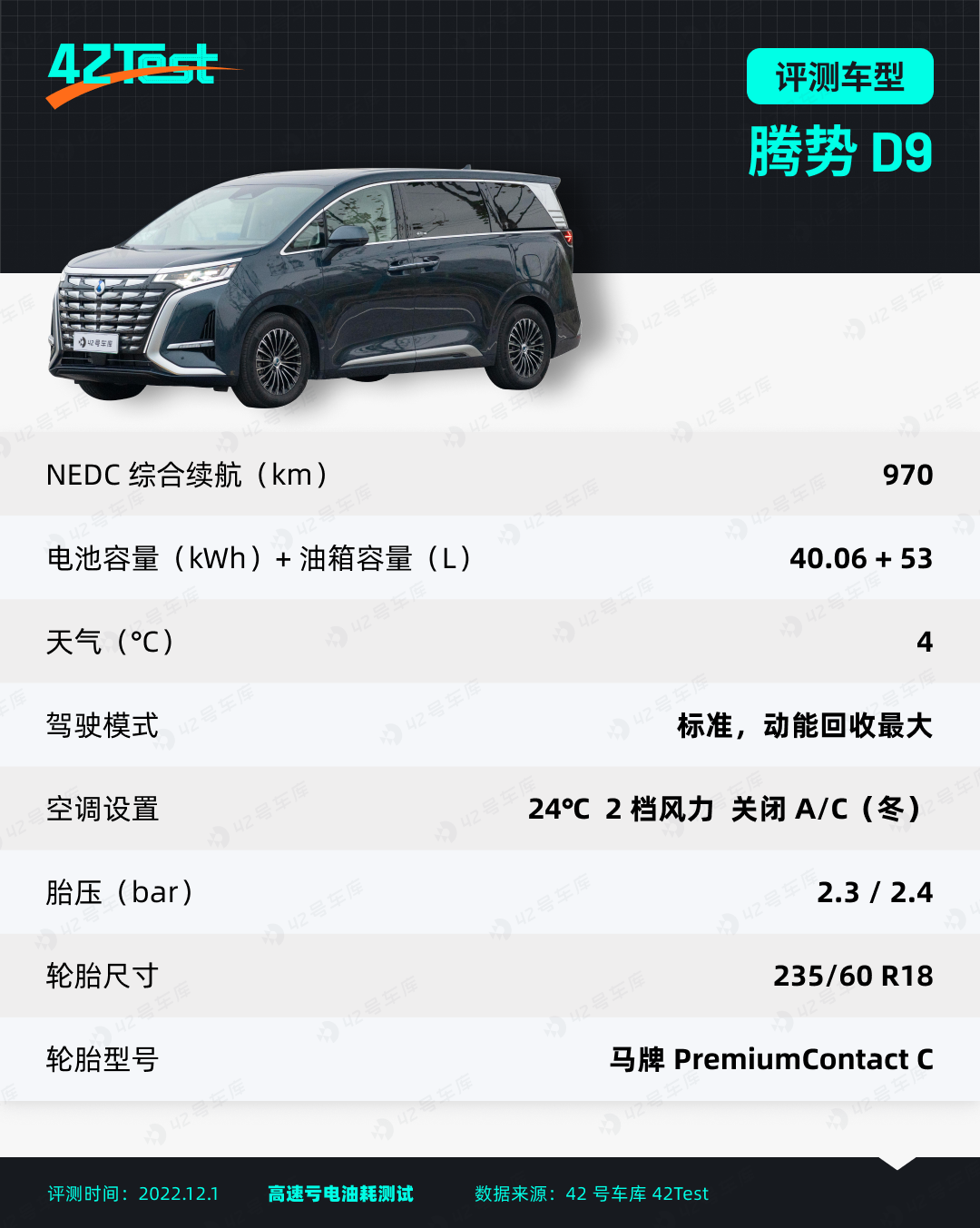
Due to the severe epidemic situation during the test, it was extremely inconvenient to travel out of Shanghai and return. This time we planned a brand new route for the high-speed test. The specific route is as follows:
- Depart from the company, drive onto the outer ring expressway, and then turn onto the Shanghai-Chongqing Expressway heading west and then onto the Shanghai Ring Expressway;
- After driving onto the Shanghai Ring Expressway, go south and then turn onto the Shanghai-Jiaxing-Huzhou Expressway heading east;
- After driving on the Shanghai-Jiaxing-Huzhou Expressway to the exit on the east side of the Shanghai Ring Expressway, follow the Shanghai Ring Expressway southbound and then return to the previous Shanghai-Jiaxing-Huzhou Expressway entrance;
- Drive onto the Shanghai-Jiaxing-Huzhou Expressway again, and after passing the exit on the east side of the Shanghai Ring Expressway, continue to drive north along the Shanghai Ring Expressway;
- Pass through the suburb ring tunnel and continue to drive along the Shanghai Ring Expressway until the intersection with the Shanghai-Chongqing Expressway where the test ends.
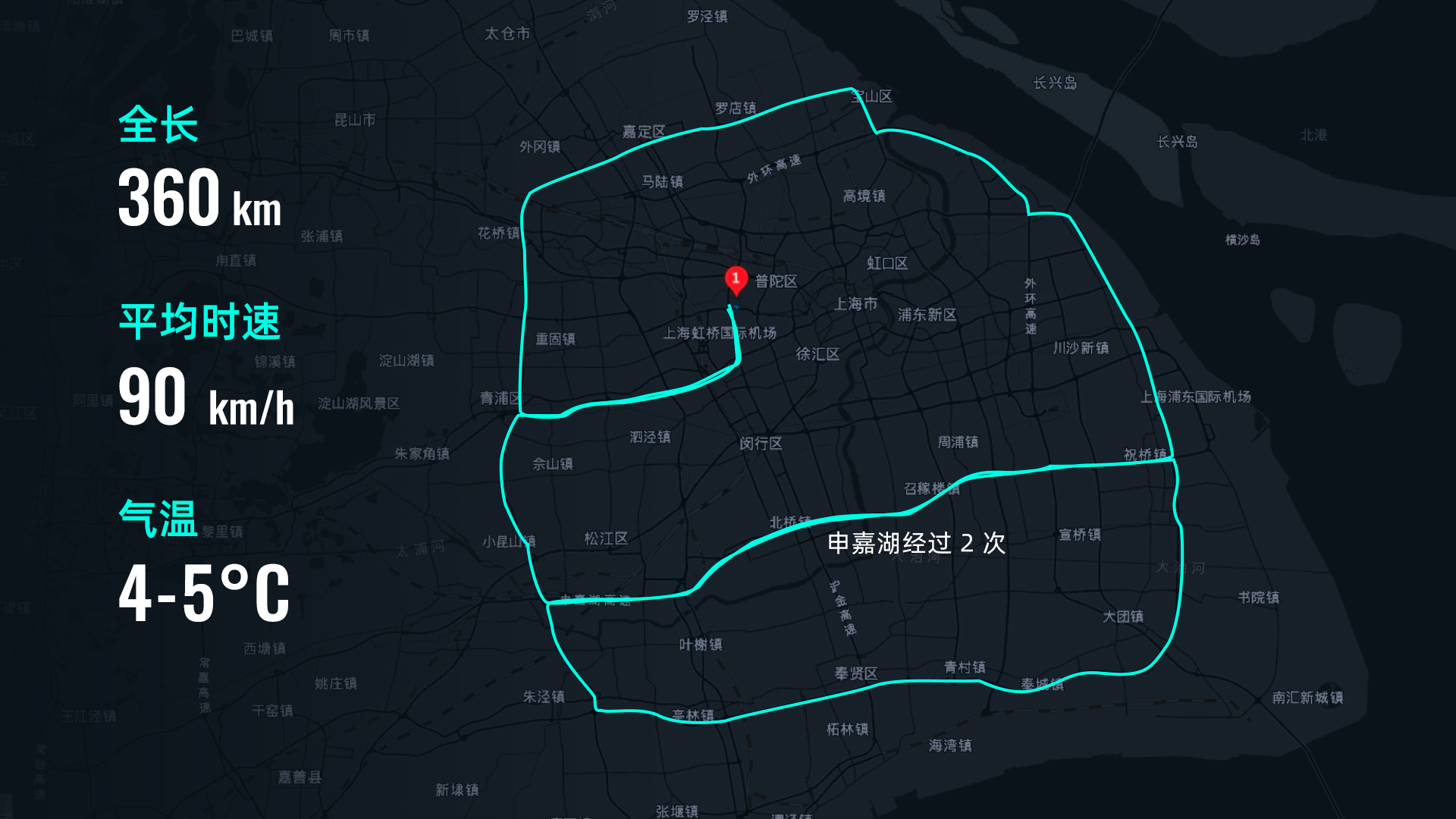
It should be noted that there are relatively few road sections with a speed limit of 120 km/h on this route, accounting for approximately only one-third, and most of the road sections have a speed limit of 100 km/h.On the day of the test, the road conditions were good, and over 80% of the road sections could be driven at the speed limit. After a 4-hour test drive, the total distance driven by the NIO ES8 was 360 km, with an average speed of 90 km/h.
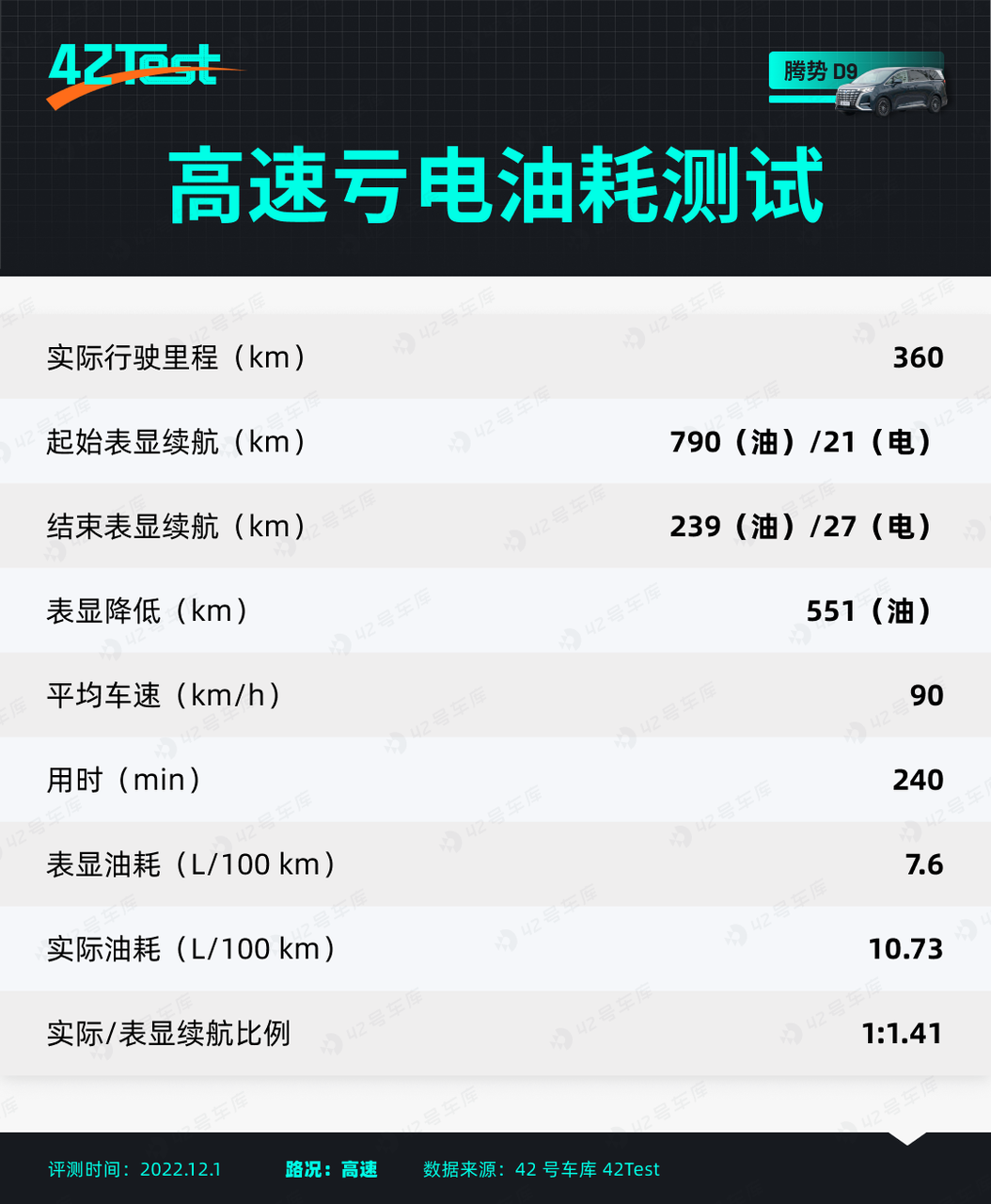
After the vehicle was fully fueled, the displayed fuel range was 790 km, and the battery range was 21 km. At the end of the test, the displayed fuel range was 239 km, and the battery range was 27 km. The displayed fuel consumption decreased by 551 km, but the pure electric range increased by 6 km. The actual range and the displayed range were in a ratio of 1:1.41.
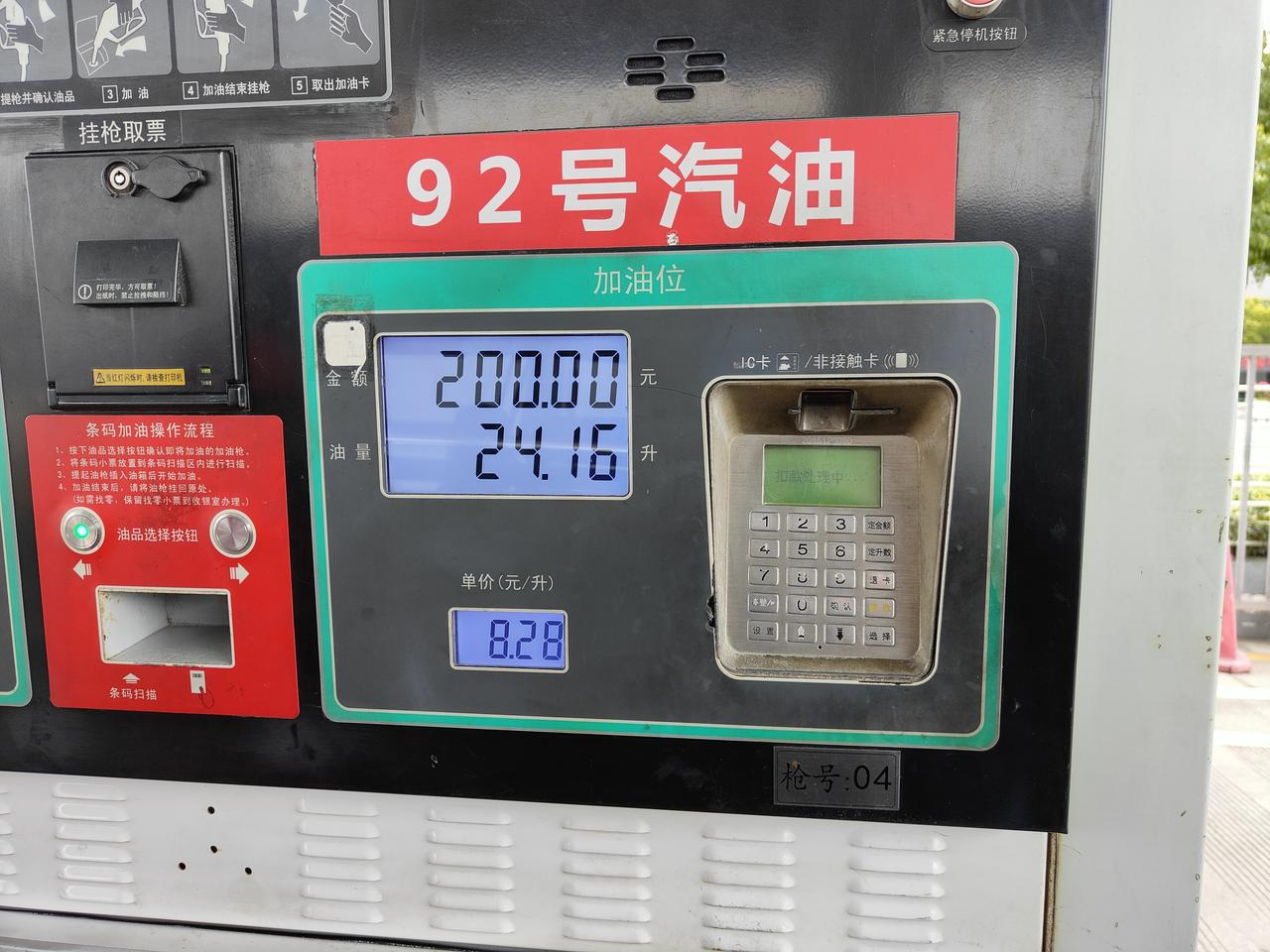
After the test, we returned to the same gas station and refueled the tank. The gas station recorded that the vehicle consumed a total of 38.64 L of fuel after driving 360 km in the test.
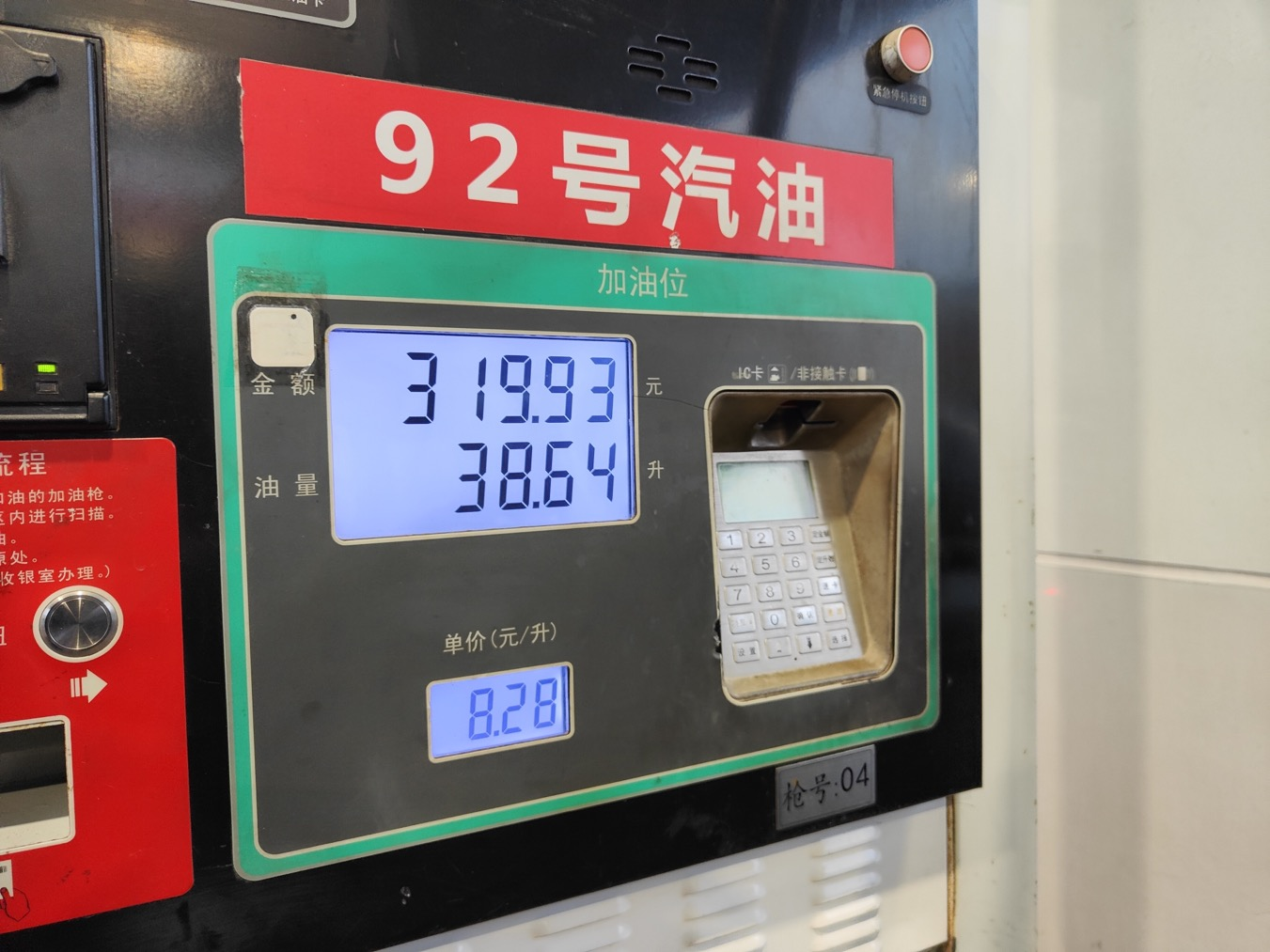
Based on these data, the actual fuel consumption of the vehicle during the high-speed test was 10.73 L/100 km, while the displayed fuel consumption at the end of the test was 7.6 L/100 km. Isn’t this a big difference?
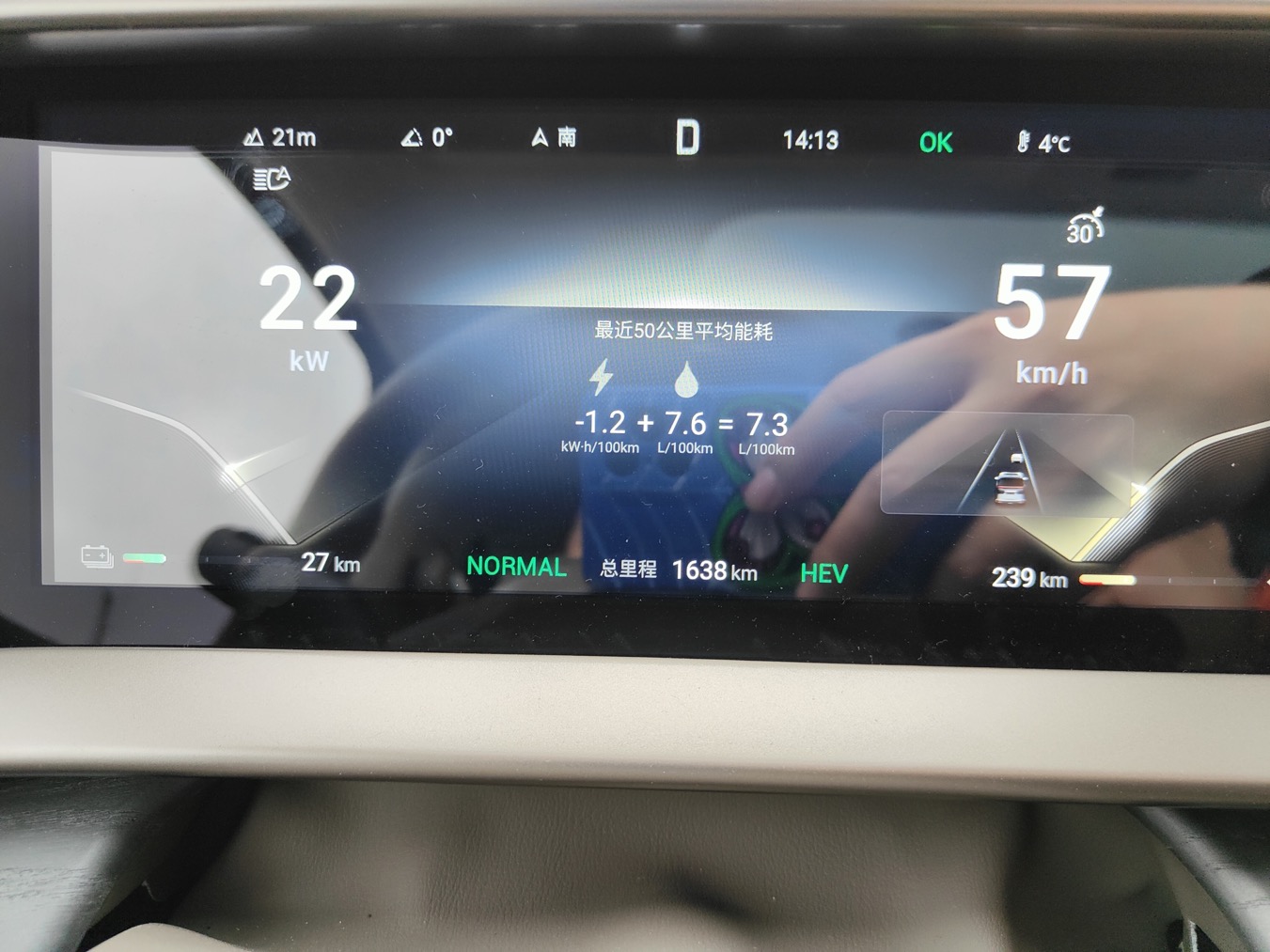
In addition, it is worth mentioning that the displayed energy consumption of the NIO ES8 includes both electric and fuel consumption. The calculation logic is not clear.
It seems that the DM-i hybrid system in the NIO ES8 does not achieve the same fuel consumption performance as in other BYD DM-i models under the condition of low battery. However, compared to the Toyota Alphard, which has a curb weight of nearly 400 kg more, the real-world fuel consumption of the NIO ES8 is about 12.8 L/100 km, which still shows the advantage of DM-i.### Battery drain city testing: fuel consumption comparable to high-speed driving
After the battery drain high-speed testing, we immediately conducted a battery drain city test. The outdoor temperature during the test was 6°C, and we filled up the fuel tank before the test. We still set the air conditioning temperature to 24℃, the fan speed to 2, and turned off the A/C. We adjusted the driving mode to standard, set the energy recovery to the maximum, and set the intelligent battery protection to the lowest of 25%, using the HEV mode.
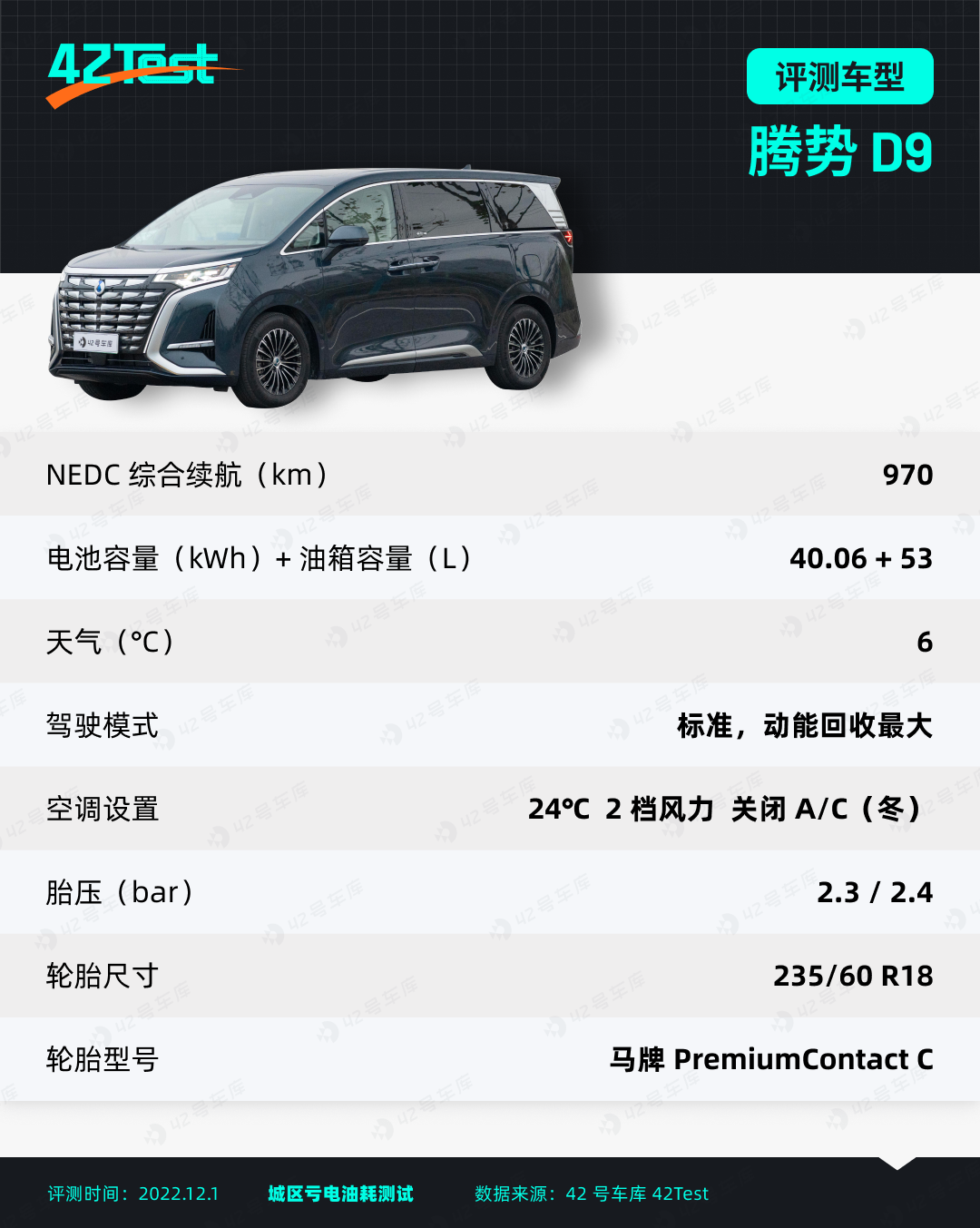
The testing route was still the outer ring road of 100 kilometers plus 50 kilometers of city surface roads. Since electric power consumption was not a concern this time, we first conducted the 100 km outer ring road test. However, during the test, the peak traffic congestion was happening in Shanghai, making the entire outer ring road section of the route heavily congested.
But during the subsequent city 50 km test, since the peak traffic had basically passed, most of the roads were relatively smooth. After 4 hours and 24 minutes of testing, the DENZA D9 ran a total of 150 km, with an average speed of 34 km/h.
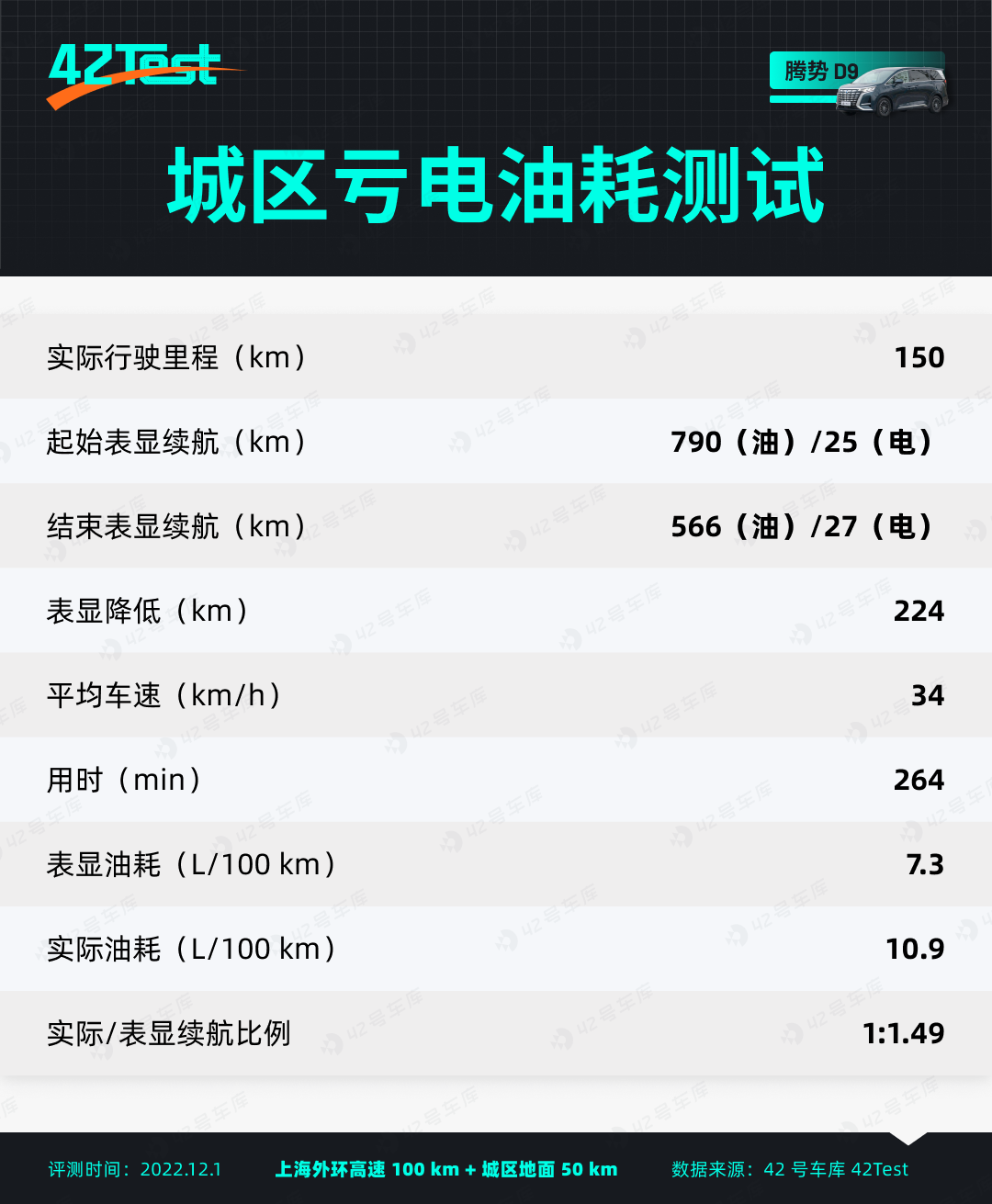
After filling up the fuel tank, the fuel range on the dashboard display was 790 km, and the battery range was 25 km. At the end of the test, the fuel range on the dashboard display was 239 km, and the battery range was 27 km. The displayed fuel consumption was reduced by 224 km, but the pure electric range increased by 2 km. The actual and displayed ranges were in a 1:1.49 ratio.
Based on the above data, the actual fuel consumption of the vehicle during the high-speed test was 10.9 L/100 km, but the displayed fuel consumption of the vehicle at the end of the test was 7.3 L/100 km, indicating a significant difference between the displayed and actual fuel consumption.
In summary, the pure electric range of the DENZA D9 can meet the city commuting needs of most people for one to two days. However, the fuel consumption in battery drain mode, whether in high-speed or city driving, is over 10 L/100 km, and the displayed fuel consumption of the vehicle significantly deviates from the actual fuel consumption, which is quite noticeable. For an MPV weighing over 2.6 tons, not only is the weight large, but also the wind resistance is high, it seems that the burden on this hybrid system is still significant.## Driving Experience: All for Comfort
What’s most important in an MPV? Acceleration performance, handling? Or suspension comfort, interior quietness? In the following sections, I will introduce the dynamic performance of the DENZA D9 from three aspects: daily driving, NVH performance, and performance, and you can discuss which aspects of the MPV experience you value most in the comments.
Daily Driving Experience
MPV models mainly have two scenarios, business shuttle and family car. The commonality of these two scenarios is undoubtedly the need to carry passengers. The requirements for comfort when carrying passengers are far beyond the demand for performance and handling, and the DENZA D9 is a car that can provide a comfortable driving experience to serve passengers.
Perhaps it was my first time driving an MPV, but getting in for the first time made me feel like I was driving a bus. Although the front of the car is relatively short, the instrument panel in front of the driver’s seat is far from the end of the windshield, so the driver is still far from the front of the car, making it difficult to judge the distance between the two sides of the front of the car.
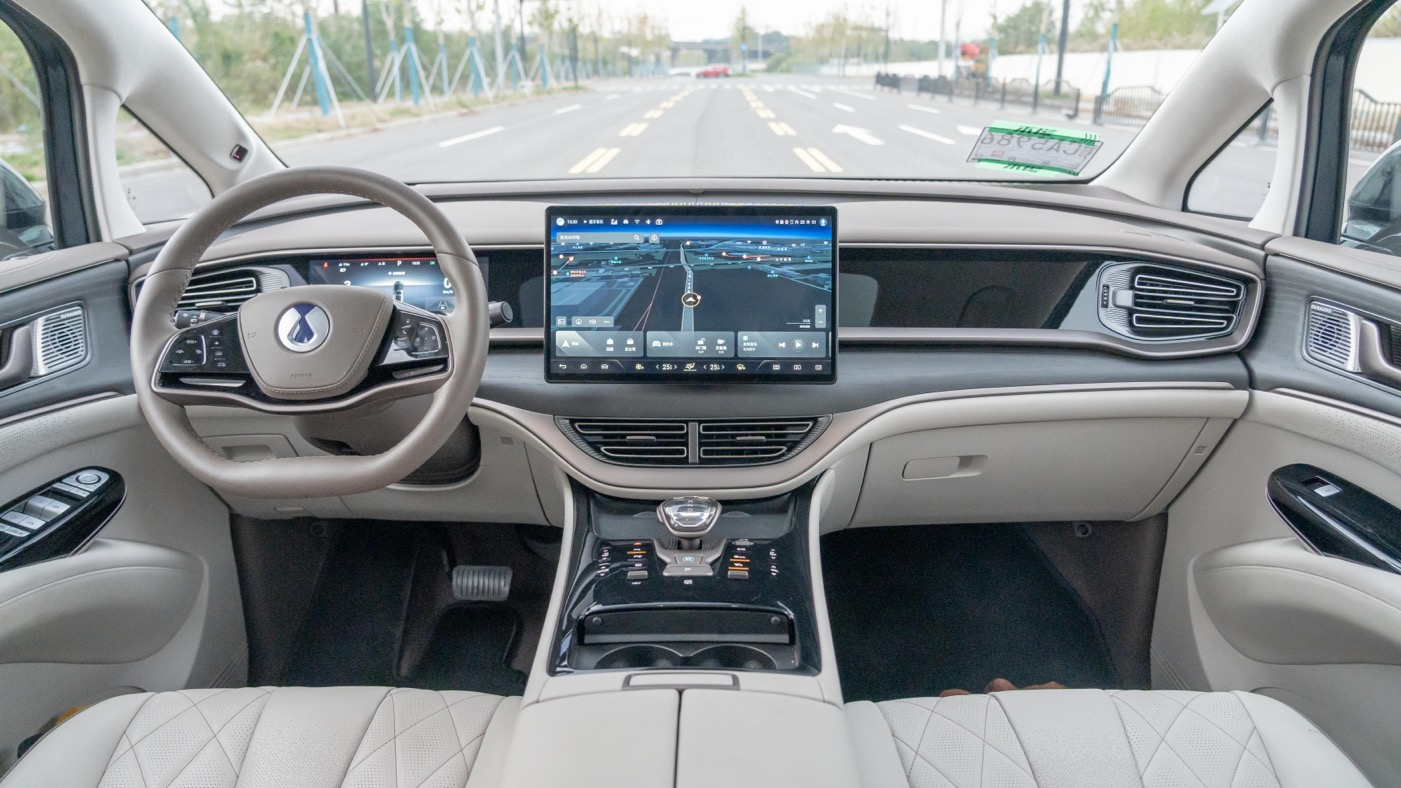
With the comfortable acceleration and deceleration function in the car, linear acceleration and deceleration can be achieved, which can prevent discomfort among passengers due to sudden acceleration or braking.
During low- and medium-speed driving in daily life, the vehicle’s kinetic energy recovery is weakly adjusted, similar to a fuel-powered car. However, when the speed exceeds 100 km/h, the maximum kinetic energy recovery power of the vehicle reaches up to 100 kW. At this time, releasing the accelerator pedal completely will result in significant deceleration.
The vehicle’s suspension tuning is relatively soft, and it feels like driving a big boat. Minor vibrations on the road do not transmit to the interior of the car. However, when encountering large pits or higher road bridge joints, the vehicle will produce significant undulations. But for most of the undulations in the city, the suspension can filter out the vibrations between the first two undulations, and the third undulation will not occur.
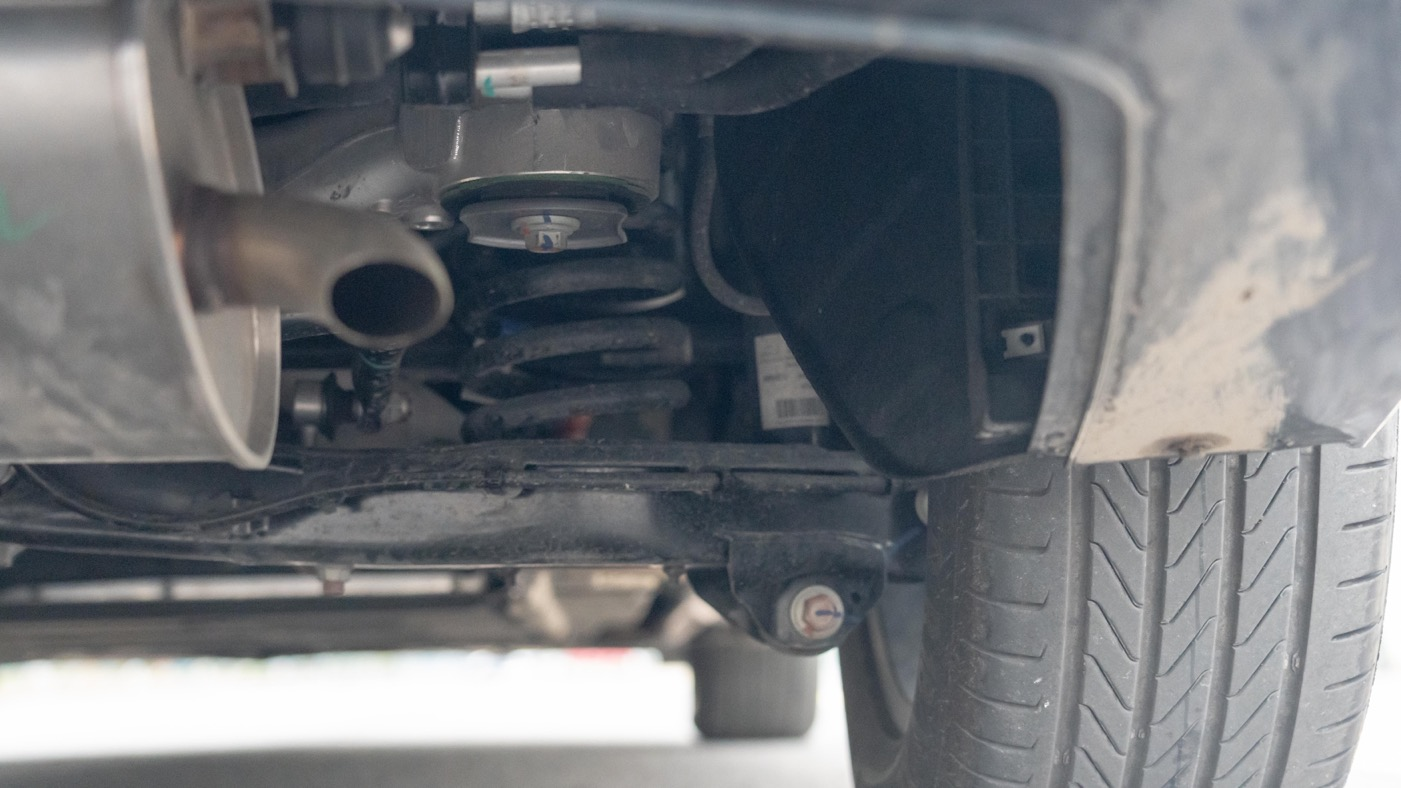
The grip of the steering wheel is relatively full, similar to the steering wheel of a sports car. However, in fact, this car is not suitable for intense driving. Its mission is to drive it comfortably. There are two adjustable steering modes, and the sports mode is still more biased. The electronic power-assisted steering is well made, and the strength of the steering wheel to return to the center is relatively linear.“`
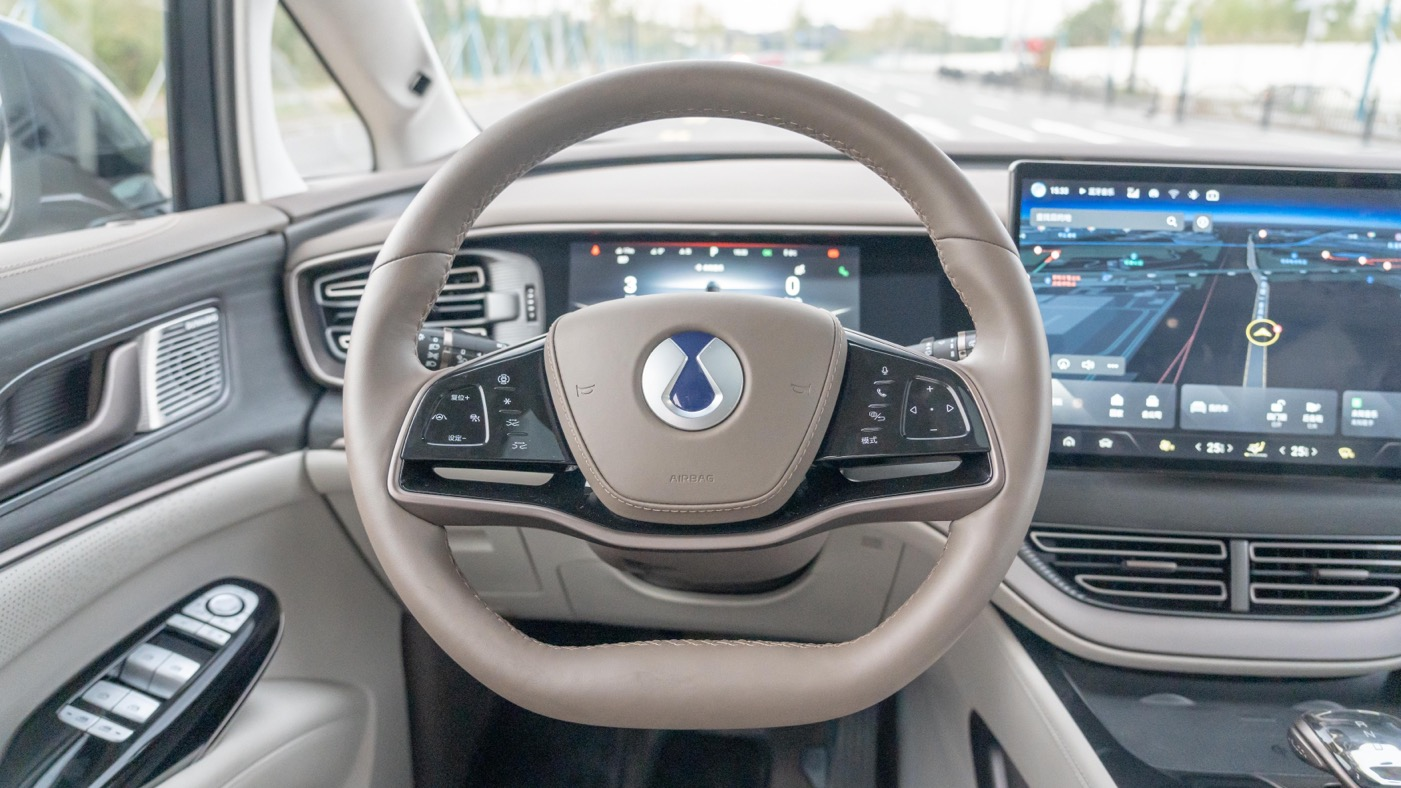
Although the vehicle is large and long, the minimum turning radius of 5.95 meters allows the car to not have to turn twice due to the inability to make a U-turn directly.
Overall, as an MPV, DENZA D9 spends most of its time carrying passengers, and driving comfortably is the most suitable driving scenario for it.
NVH Performance
The DENZA D9 uses double-layer laminated glass throughout the entire vehicle, which theoretically should result in good NVH performance. How well the NVH performs is crucial for MPVs intended for business scenarios.
During the noise testing stage, we closed all windows, turned off the air conditioning, audio, seat massage, driving assistance, and other sound functions, and emptied the car to ensure that the test results were not affected. Then, we drove on a closed road at speeds of 0, 60, 80, 100, and 120 km/h and collected three samples of the noise levels around the driver’s ear and obtained the average value for each speed.
As it is a hybrid model, two tests were conducted for pure electric mode and hybrid mode, with the specific results shown below.
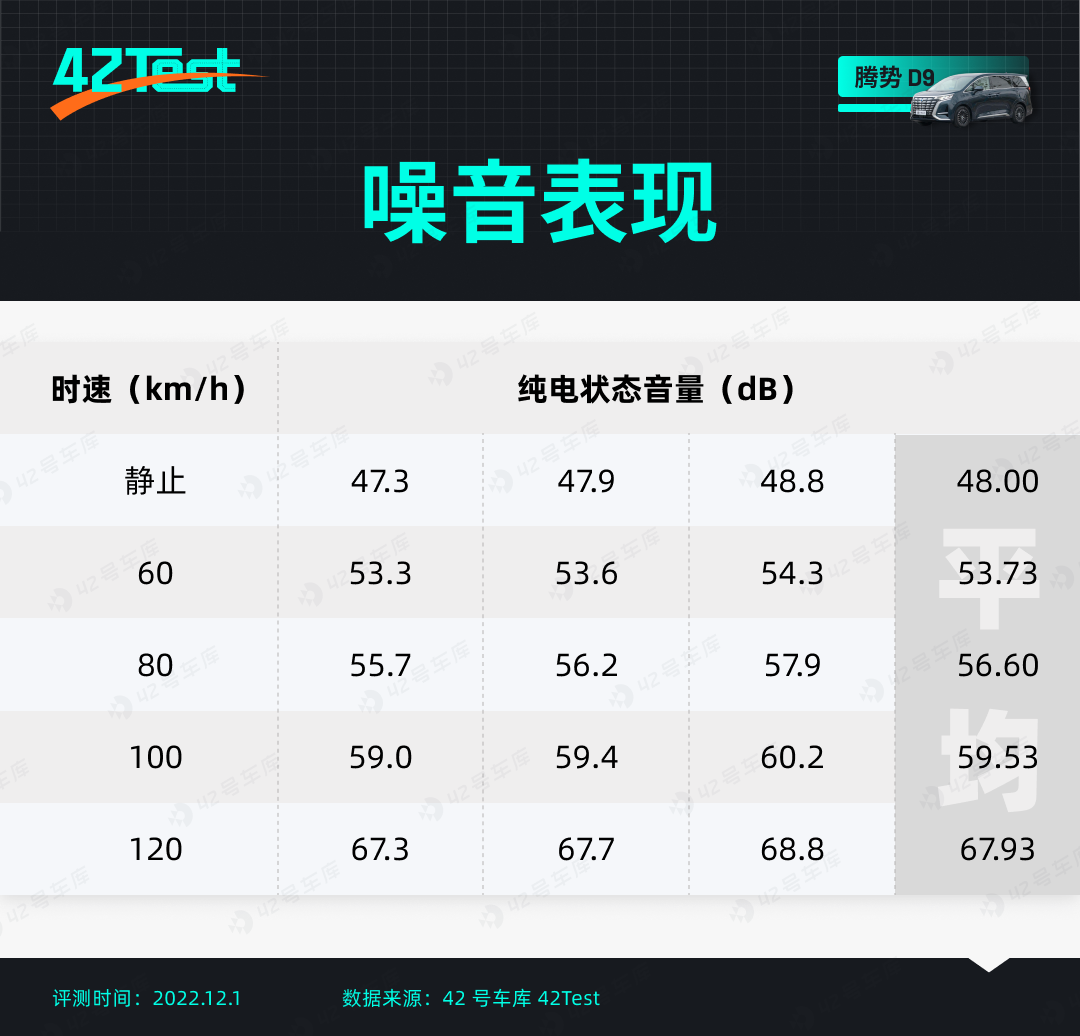
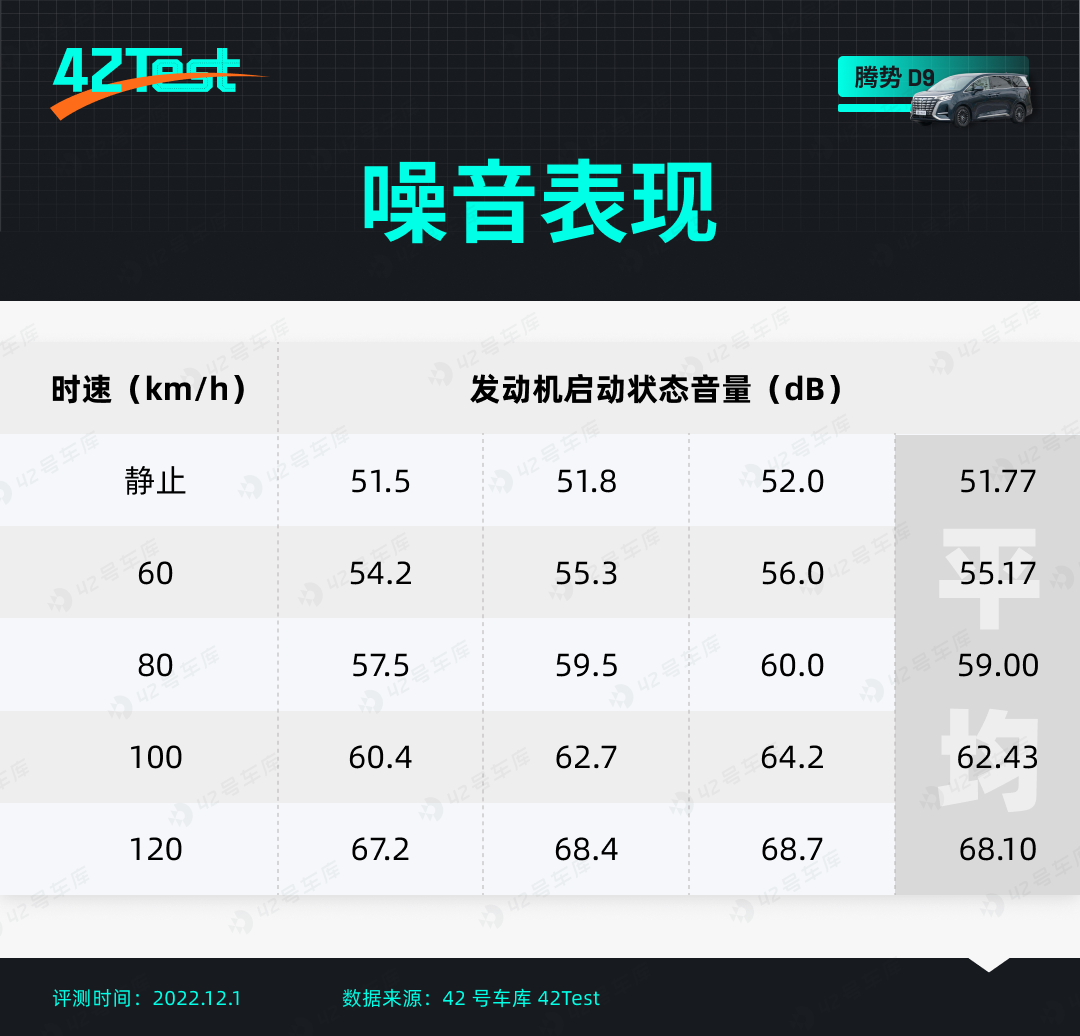
It can be seen that at speeds below 100 km/h, the difference between the NVH performance of the pure electric mode and the hybrid mode is between 1.5 and 3 dB. However, at speeds above 100 km/h, the wind and tire noise become apparent, and both NVH performances are almost the same.
As a comparison, here are the actual results for the same price Ideal L9 NVH. It can be seen that the performance of the two cars is similar in pure electric mode. When the engine / range extender is started, the two cars perform similarly at 120 km/h, while Ideal L9 performs better when idling or at 80 km/h, and DENZA D9 performs better at 60 km/h and 100 km/h.
“`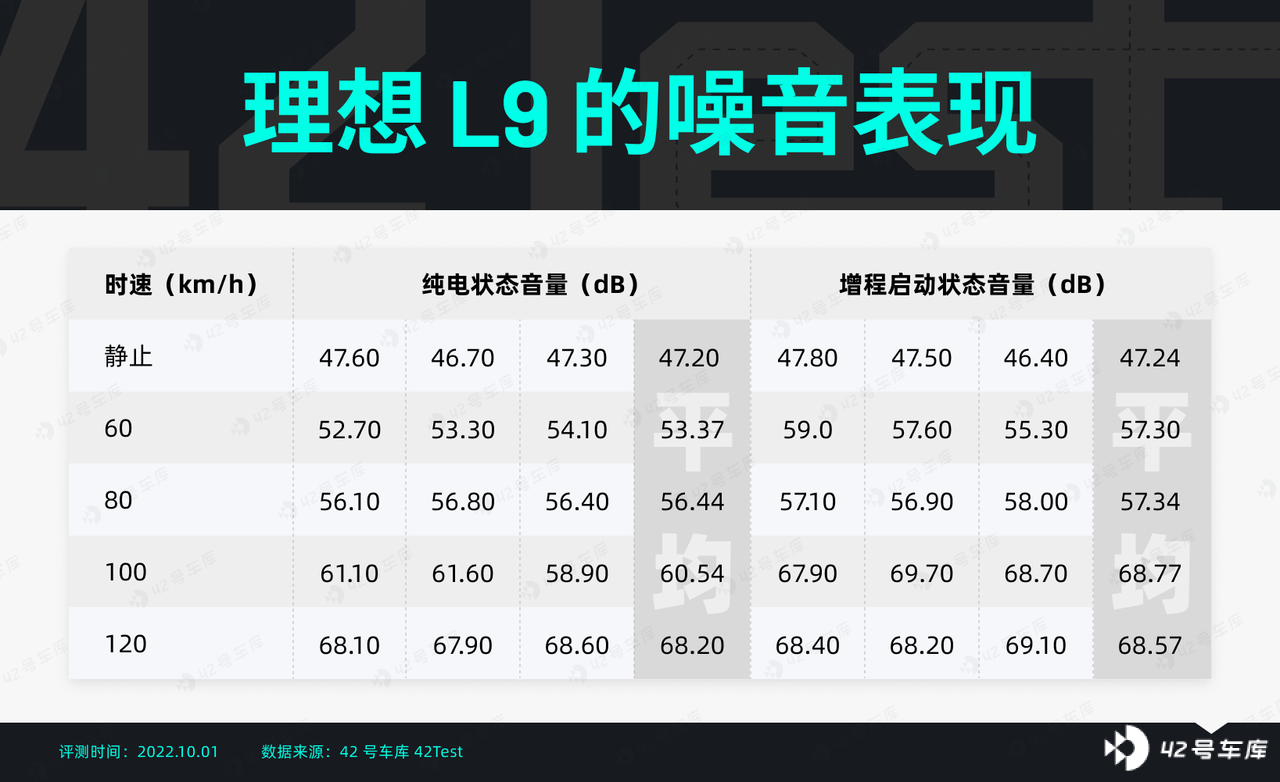
It is worth mentioning that when the DENZA D9 accelerates in hybrid mode, the engine will make a huge noise. After the speed stabilizes, the engine will be in a relatively quiet state, which is similar to most hybrid models.
Acceleration & Braking Performance
Generally speaking, the acceleration performance of MPVs is not the rigid requirement of its purchasing group. In the era of fuel cars, Japanese cars became the dominant players in the MPV market by relying on comfort and fuel economy. However, in today’s new energy era, the Voyah Dreamer and Zeekr 009 have both raised their performance to under 5 seconds. MPVs can also achieve strong performance now.
Friends who are familiar with BYD should know that the DM-i system, unlike the DM-p system, is dominated by economic fuel efficiency, and performance is not its focus. Although this DENZA D9 970 four-wheel drive flagship version we tested has a dual motor, the maximum power of the rear motor is only 45 kW, and the official 0-100km/h acceleration is 7.9 seconds, which is obviously not a car pursuing performance.
During our test, the displayed battery level of the vehicle was 175 km, and the remaining battery level was over 95%, so there was no performance degradation due to battery depletion. The temperature during the test was 12°C, and the power mode was adjusted to Sport, while all driving-related assist functions were turned off. In a closed field environment, we conducted 10 consecutive 0-100 km/h acceleration tests and 10 100-0 km/h braking tests using hybrid mode, and the specific results are as follows.
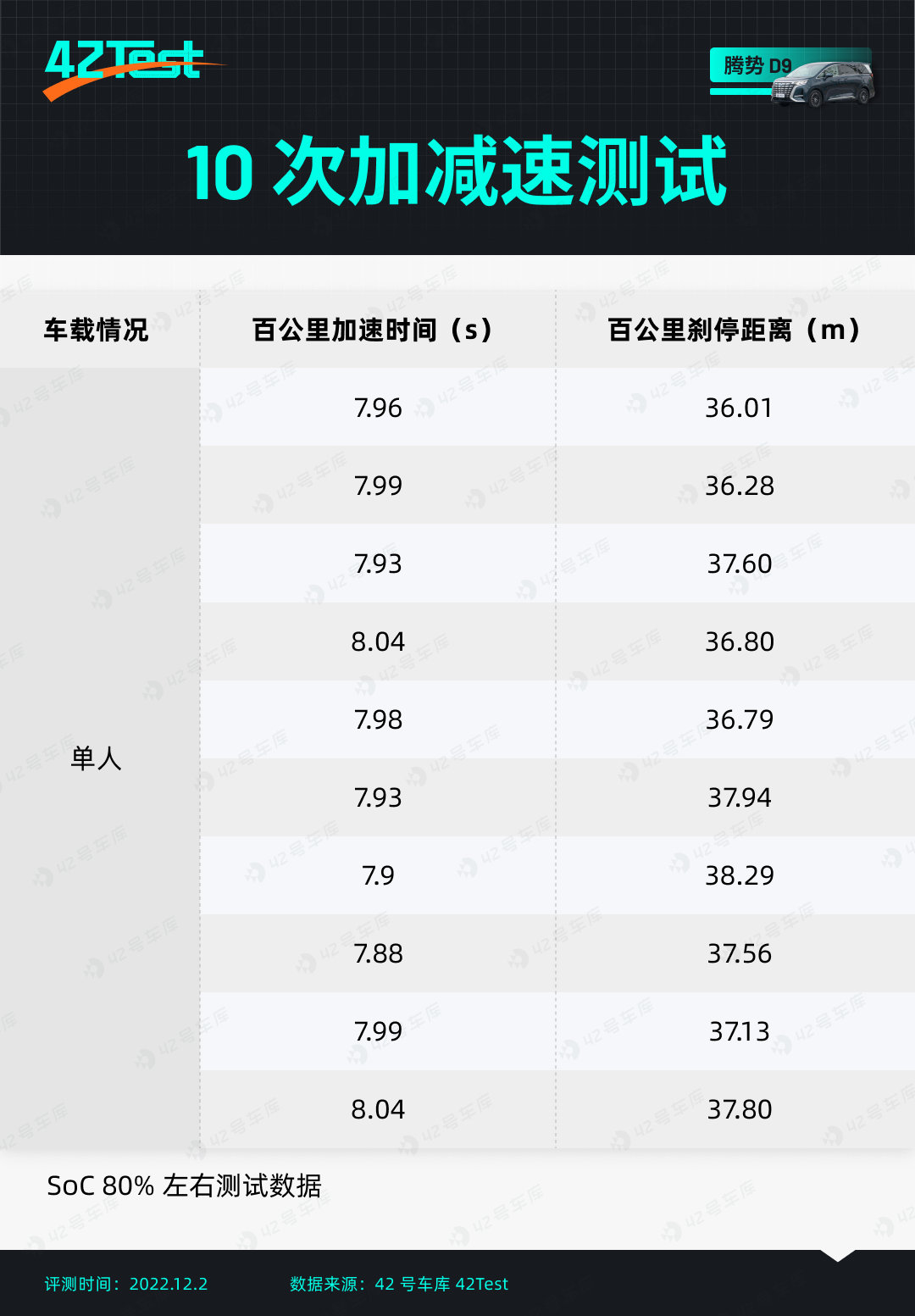
From the real test data above, we can see that the average score of D9’s 0-100 km/h acceleration is between 7.9-8 seconds, which is basically the same as the official data.
However, the braking performance is somewhat unstable. The shortest one only takes 36.01 meters to achieve 100-0 km/h braking, and it should be noted that this is an MPV with a curb weight of 2.66 tons. The longest one requires 38.29 meters.
As an aside, the brake pedal feedback of the DENZA D9 is slightly soft. When it is deeply stepped on in an emergency situation, it will give people the feeling of insufficient braking force. Of course, this is not a car suitable for aggressive driving.Before pressing the accelerator pedal to the floor, there will be an obvious pause due to the physical characteristics of the pedal, probably to prevent the driver from frequently pressing the accelerator to its limit.
Appearance and Interior: The Interior is slightly inferior despite the imposing appearance
Although we have previously introduced the appearance and interior of the Techrules D9 in related articles, in order to take care of friends who have not yet had a detailed understanding of the Techrules D9, I will still introduce in detail how the static experience of the mass-produced Techrules D9 is.
Appearance: Full of presence
The three-dimensional dimensions of the Techrules D9 are 5,250 mm × 1,960 mm × 1,920 mm, with a wheelbase of 3,110 mm. In MPVs, this size is quite large.
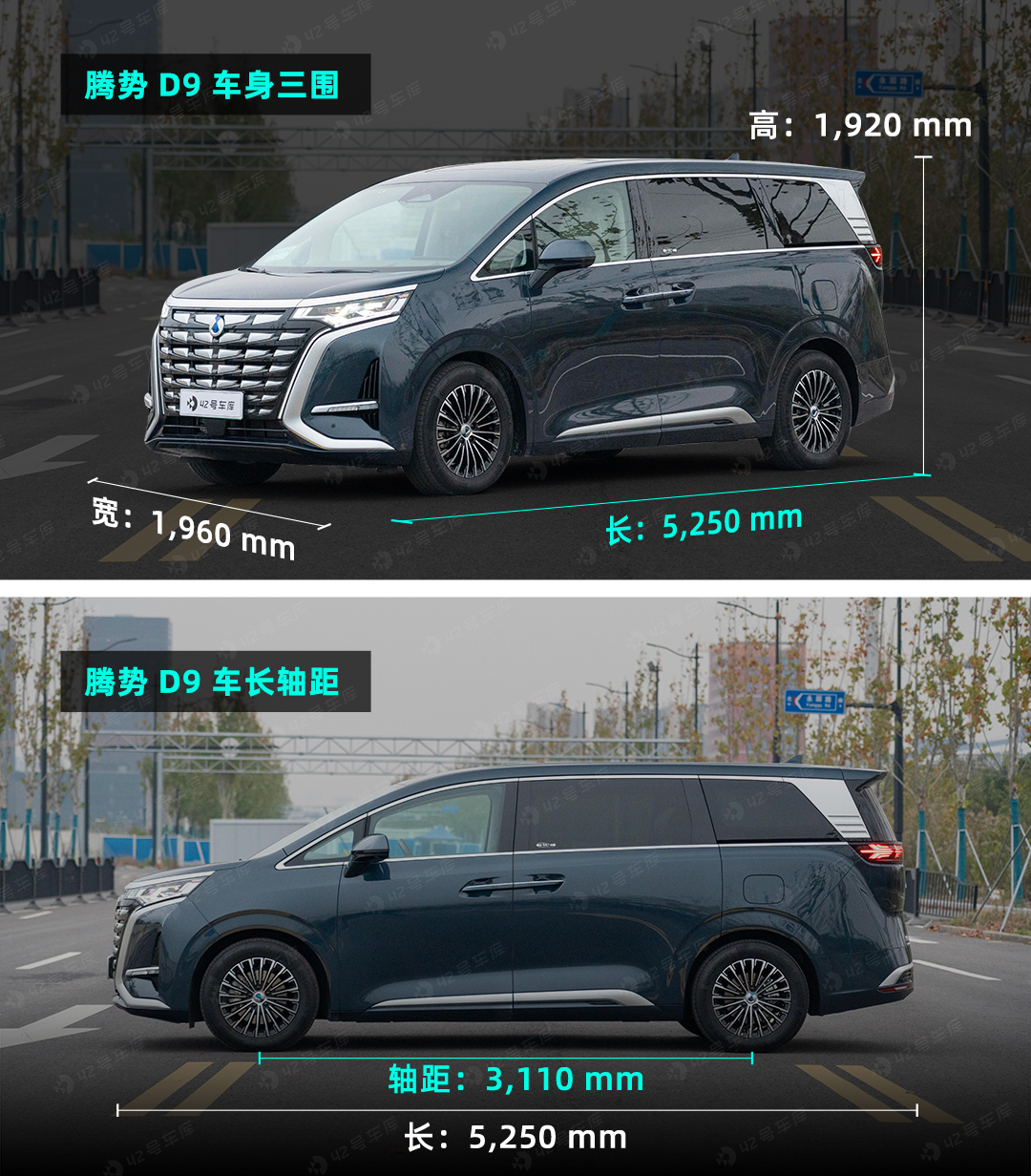
For comparison, I also list the three-dimensional parameters of the Toyota Sienna, the Ideal L9 and the more expensive Alphard at the same price. It can be seen that compared to the two major MPVs of the Toyota family, the Techrules D9 has certain advantages in size, and only the size of the Ideal L9 is basically the same as it.
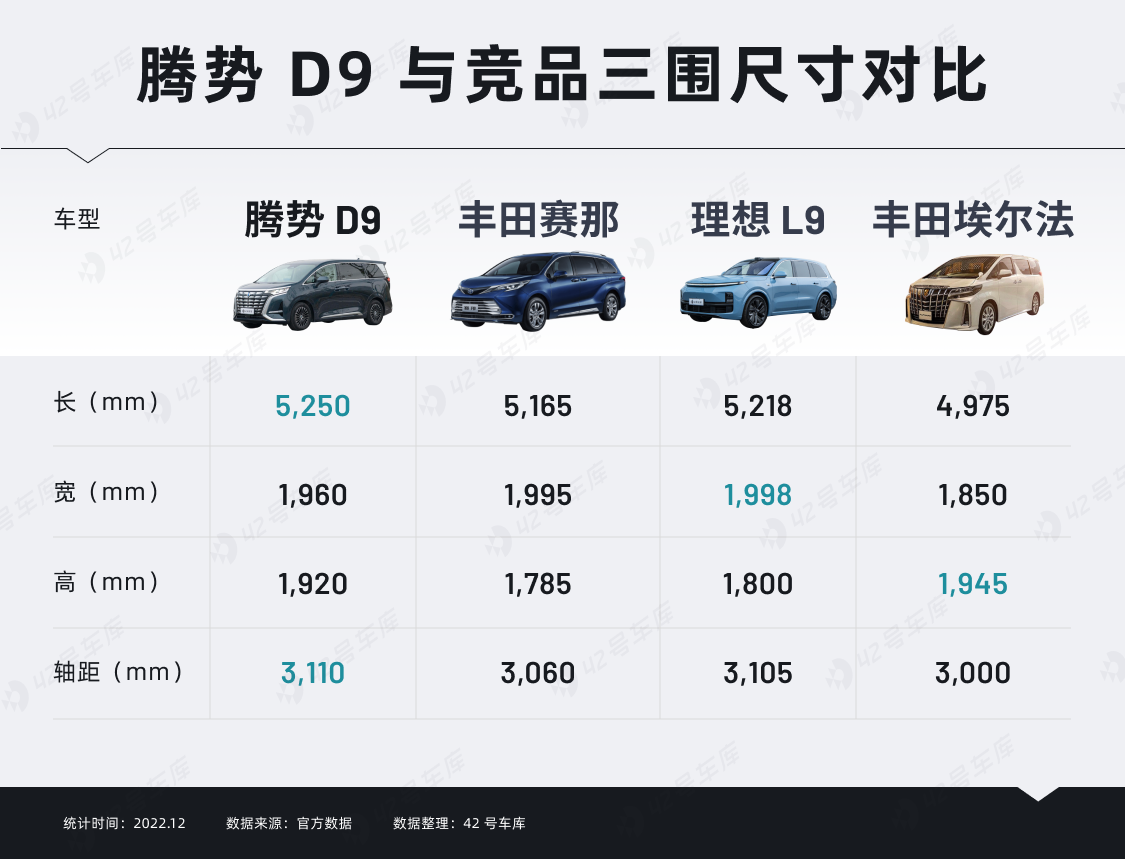
In terms of the front of the car, you can more or less see some shadow of the Alphard, and there is a feeling of a leopard head ring eyes. The biggest difference is that the grille uses a different design. The Techrules D9 uses a design similar to dragon scales, and the grille area is larger than that of the Alphard, and it looks very imposing.
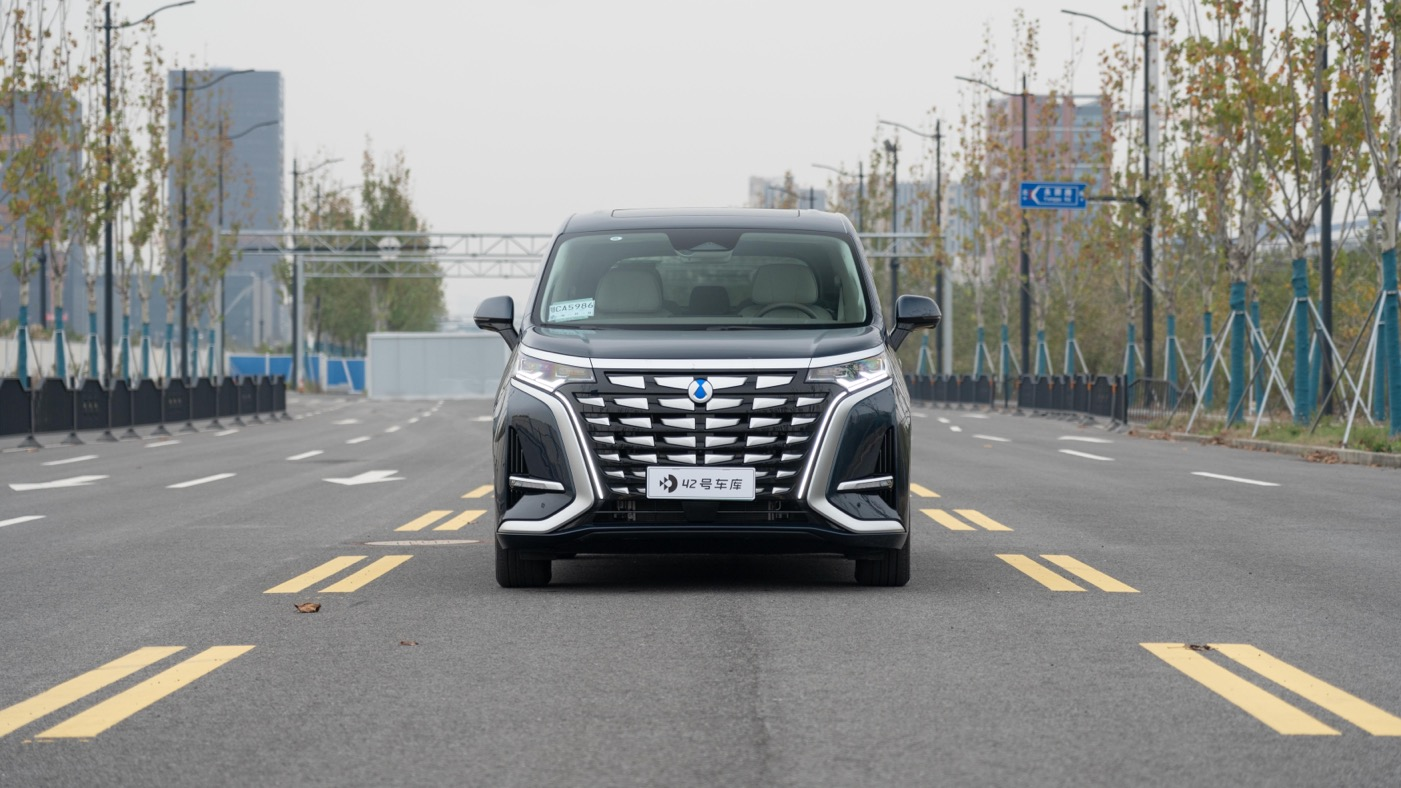
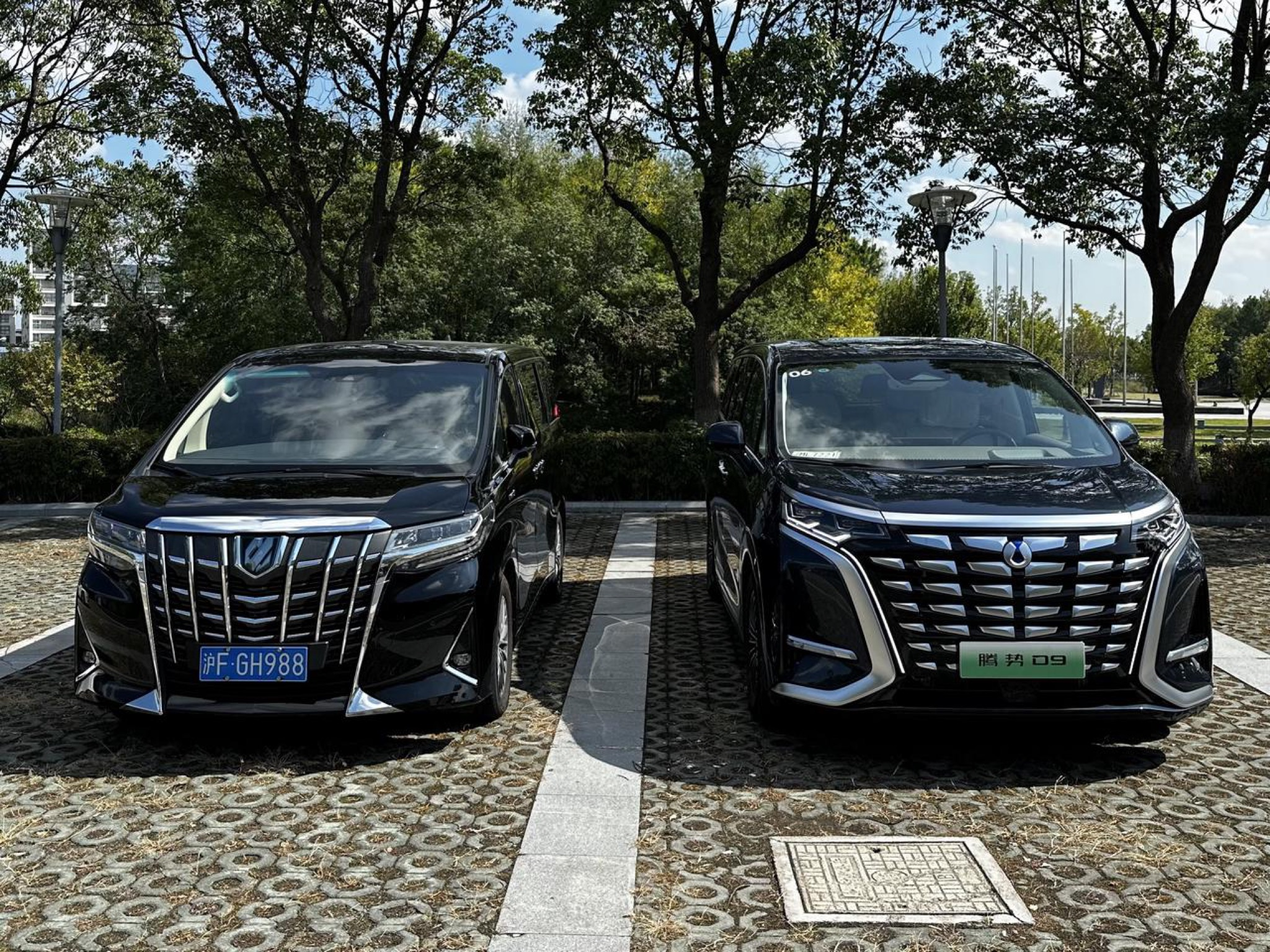
In addition, the Techrules D9 has placed two LED light strips on both sides of the grille, and even during the day, you can clearly see the light emitted by the light strips.
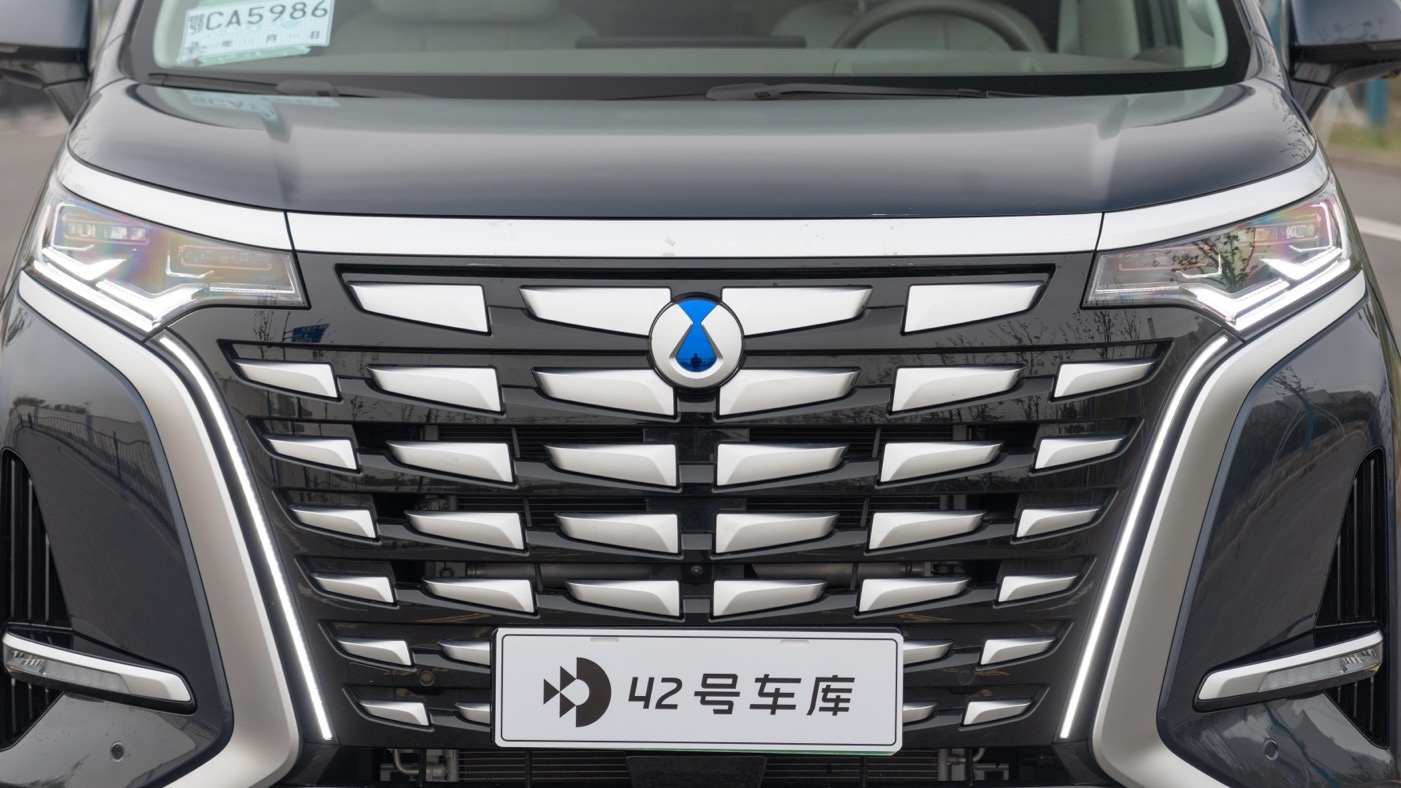
The split-type headlights of DENZA D9 are carefully designed by designers, which integrate the daytime running lights and high/low beam lights. The outer perimeter of the high/low beam light is wrapped in a golden band.
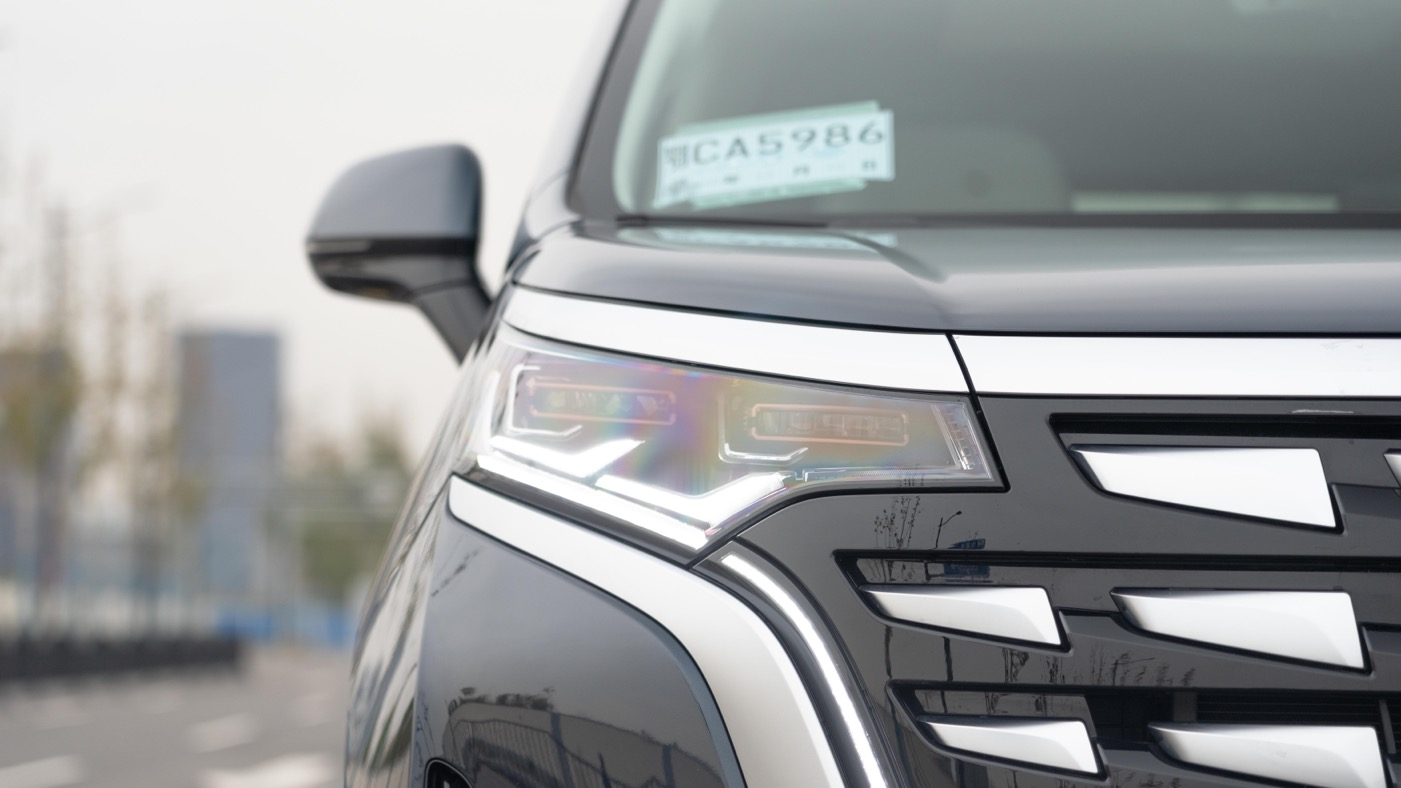
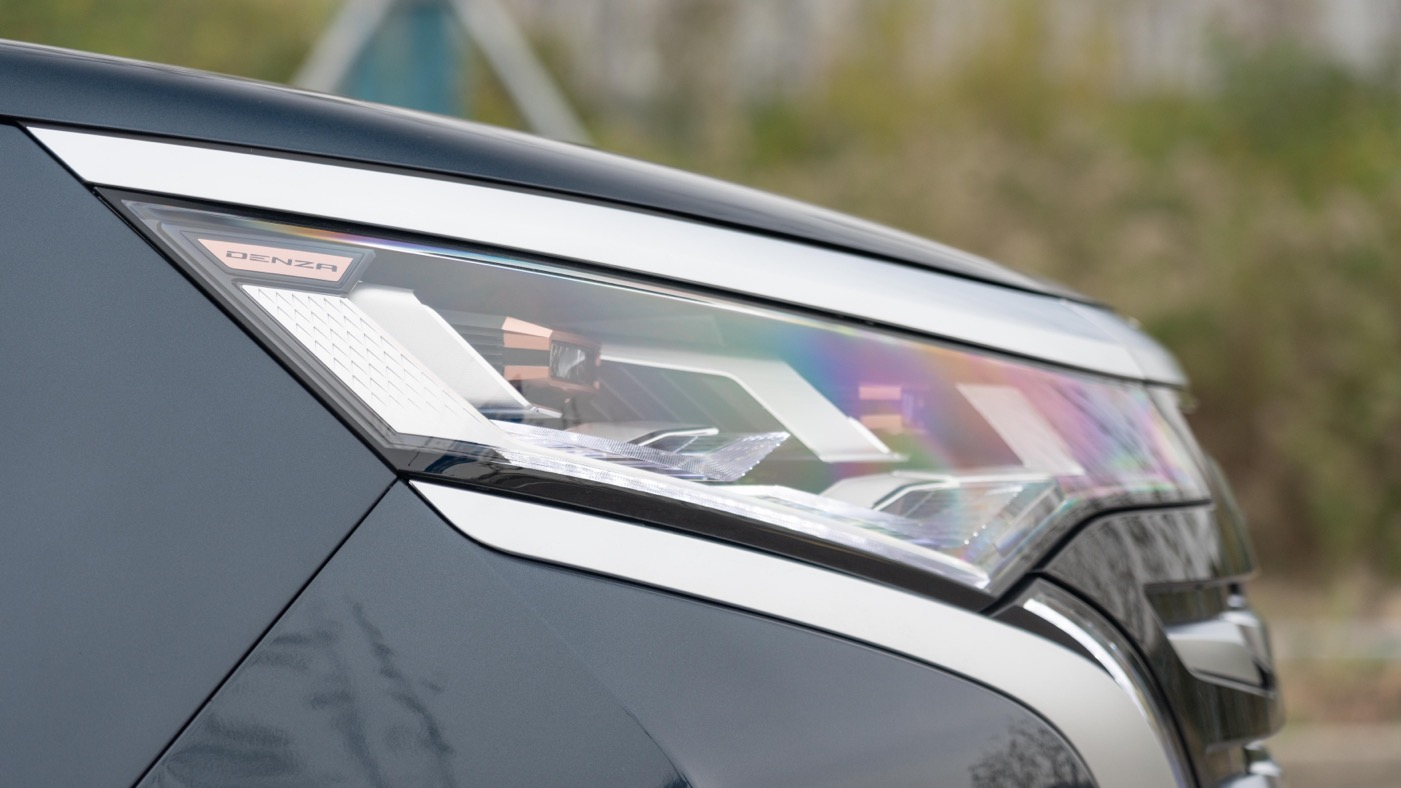
On the side, a golden decoration with the “DENZA” logo and a silver ornament plate are applied.
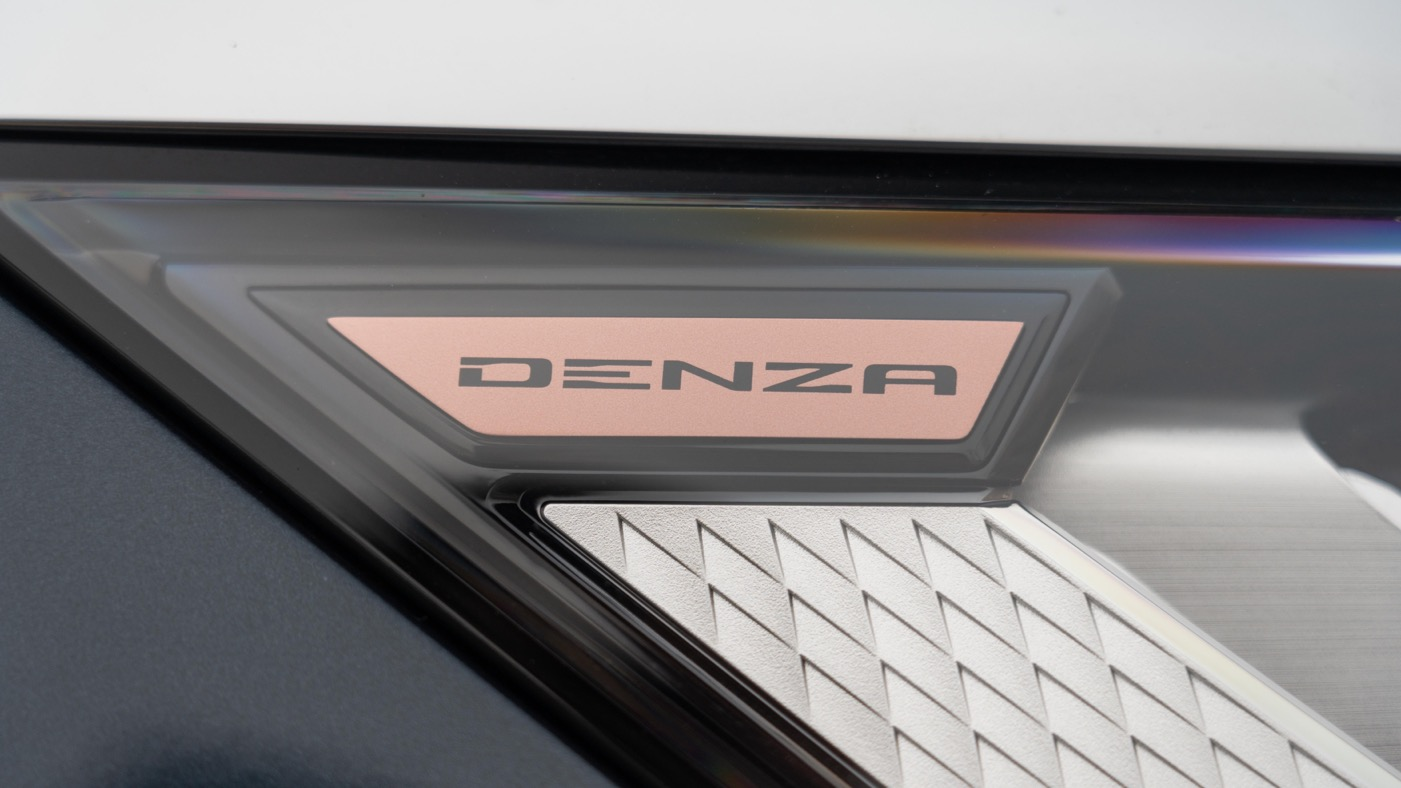
The front surround-view camera is placed slightly below the axis of the grille, with a higher ground clearance, which is not easy to be dirtied even in rainy and snowy weather.
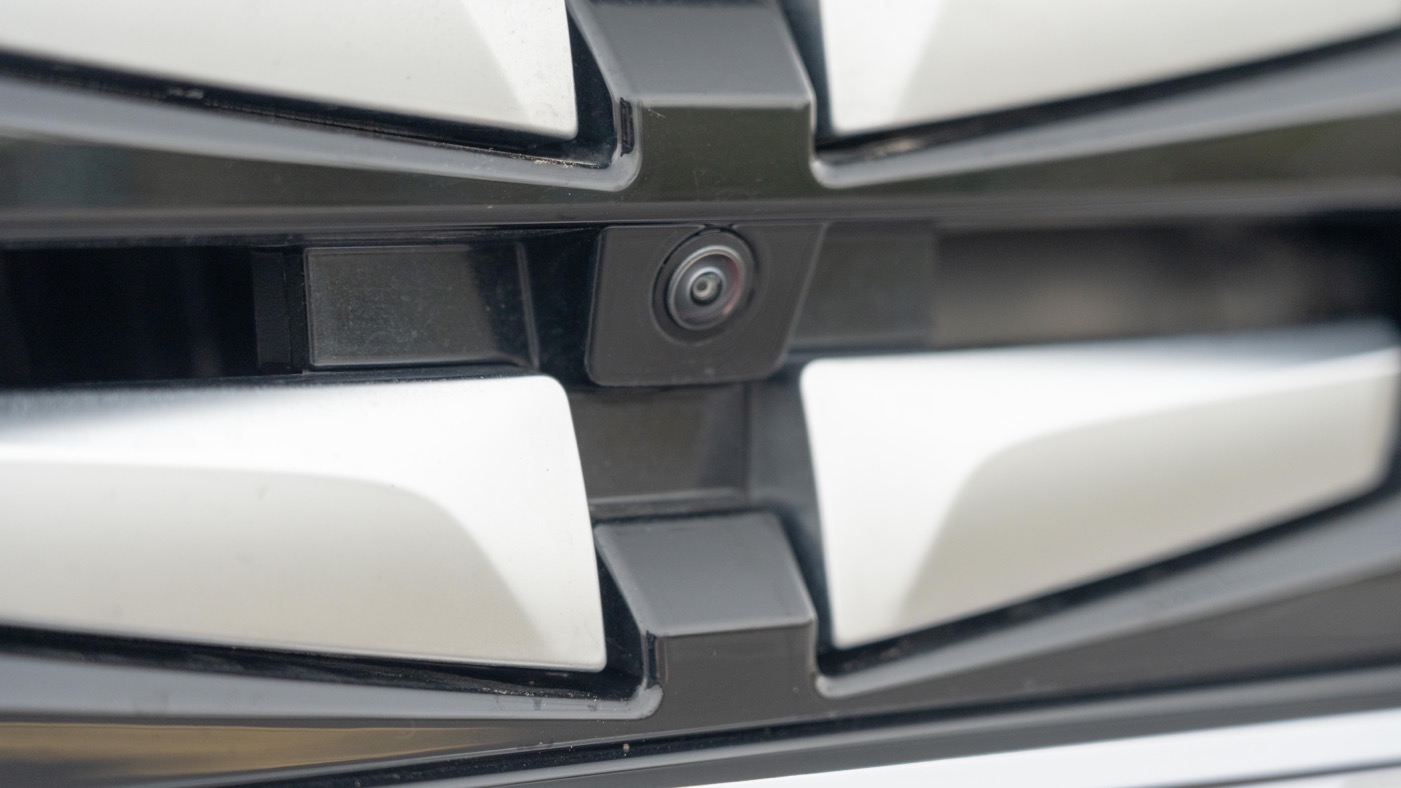
The D9’s ADAS system adopts a single-camera solution, with a dashboard camera next to it. Currently, only ACC adaptive cruise control is available.
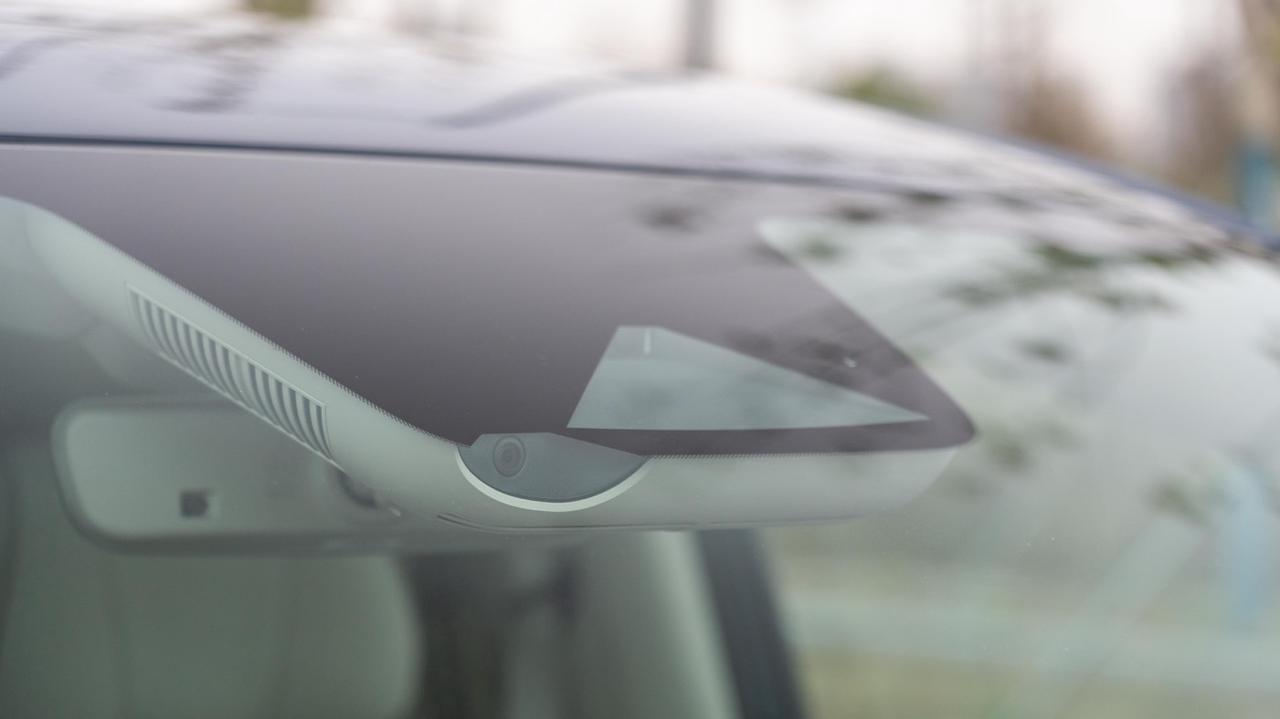
When the following distance is set to the second gear, the acceleration and deceleration control is relatively gentle, but the starting speed is slow. If the following distance is adjusted to the first gear, the braking point is later than normal driving and the braking is not linear enough, which is not suitable for daily driving.
As a hybrid model, there is no front trunk. However, we can show you some real pictures of the DM-i power system.
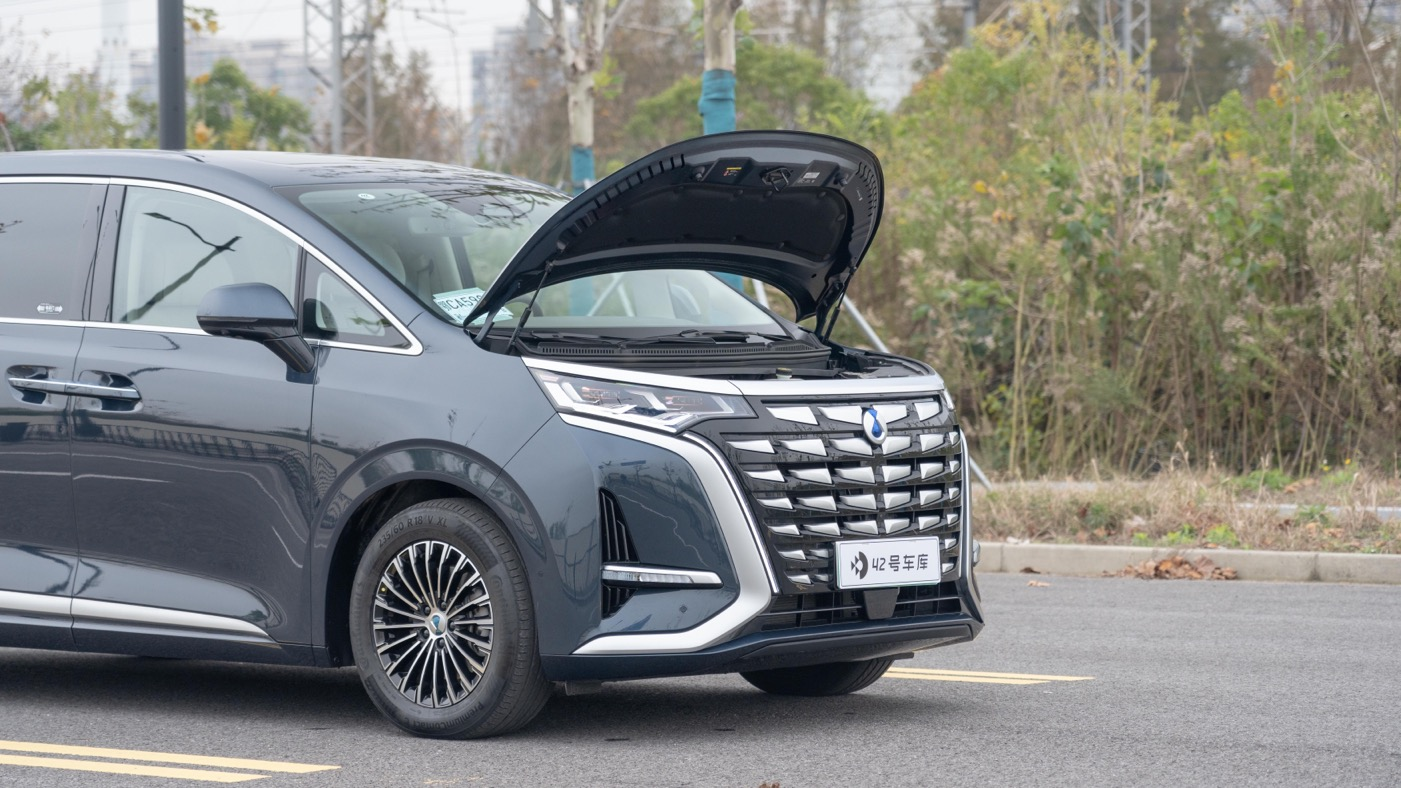
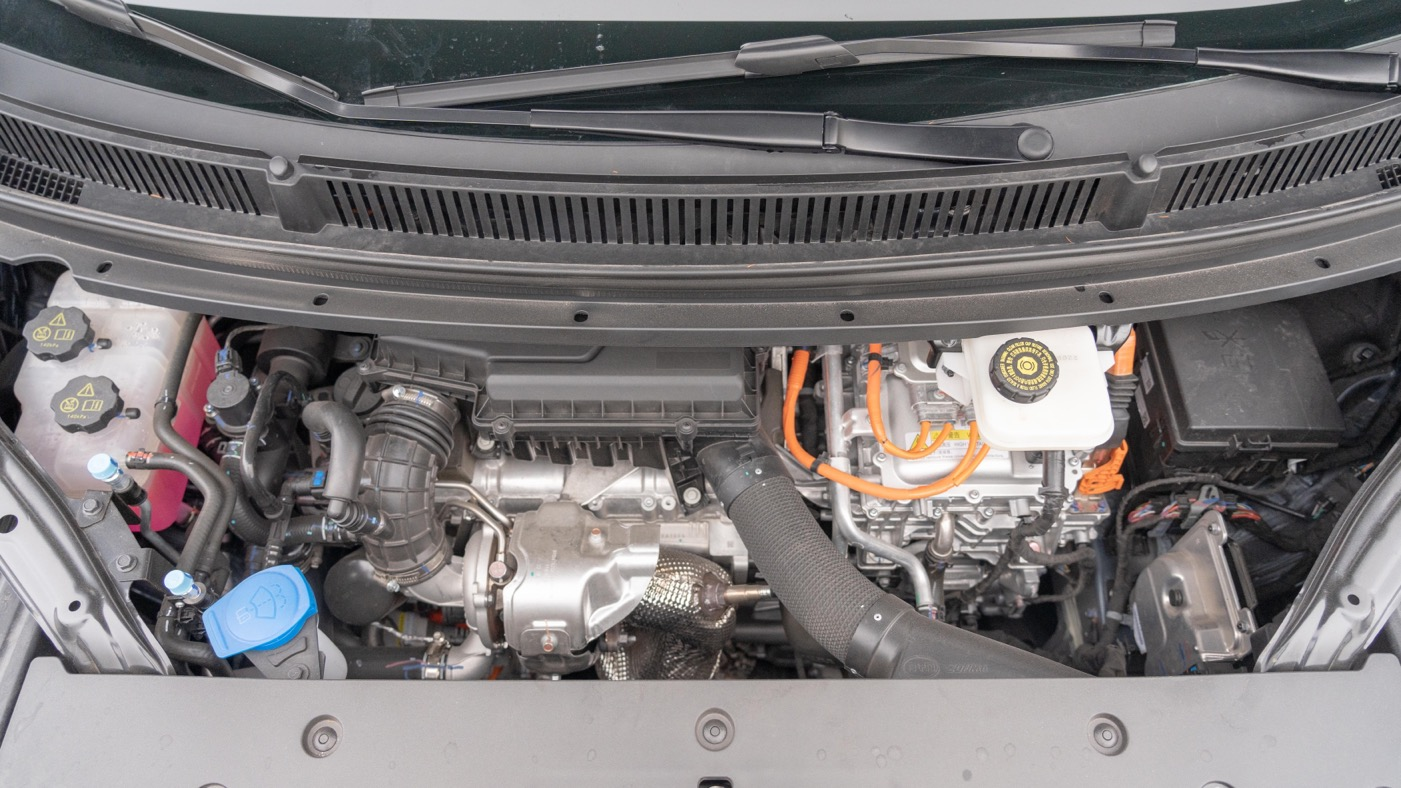
From the side, we will find that the lines of the DENZA D9 are basically horizontally and vertically designed, and the body color is relatively uniform. Only a few silver decoration strips and plates are used to enrich the color. As a business vehicle, it adds a touch of solemnity.
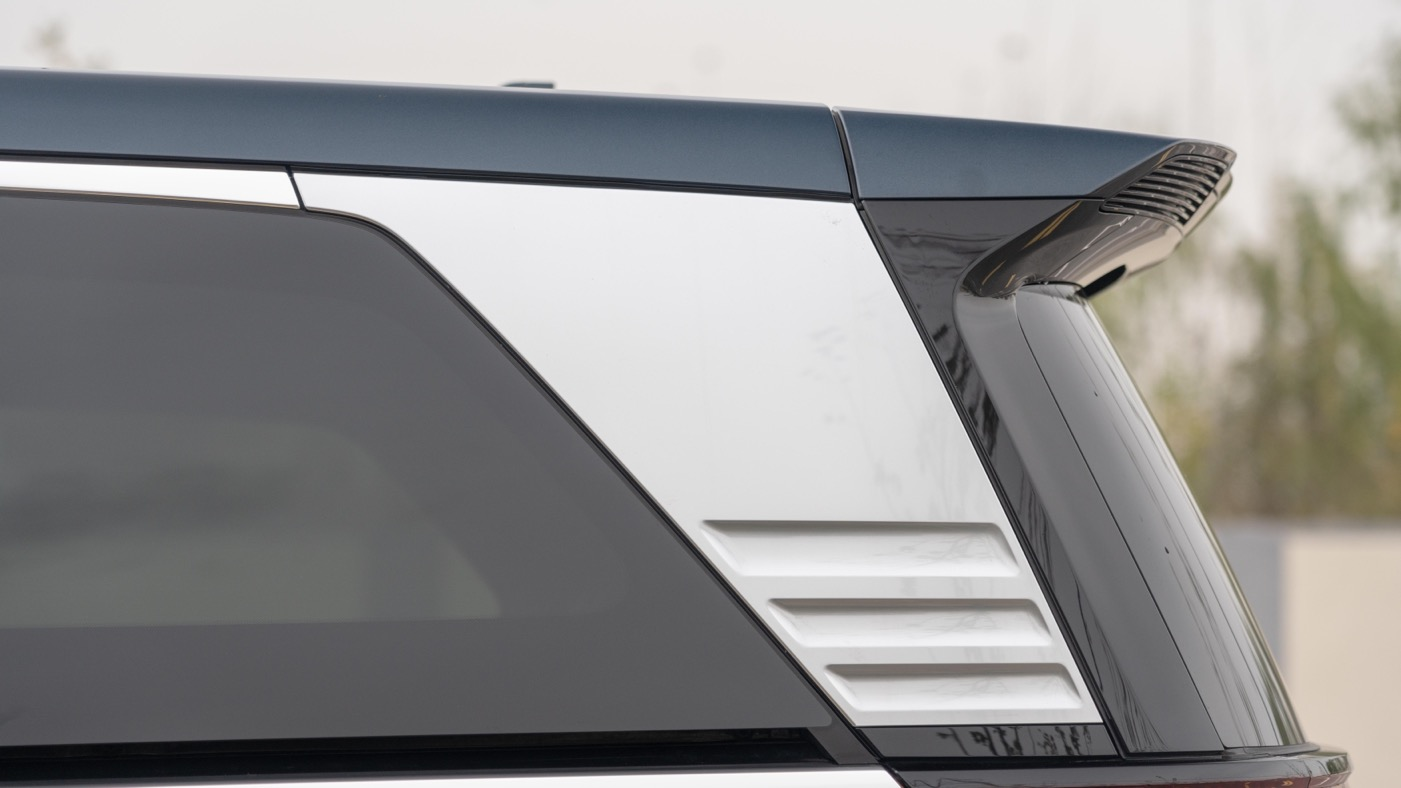
As an MPV, the size of the rearview mirror is large enough to meet the daily driving needs for side lanes visibility, and the side-view cameras are located below the rearview mirror.

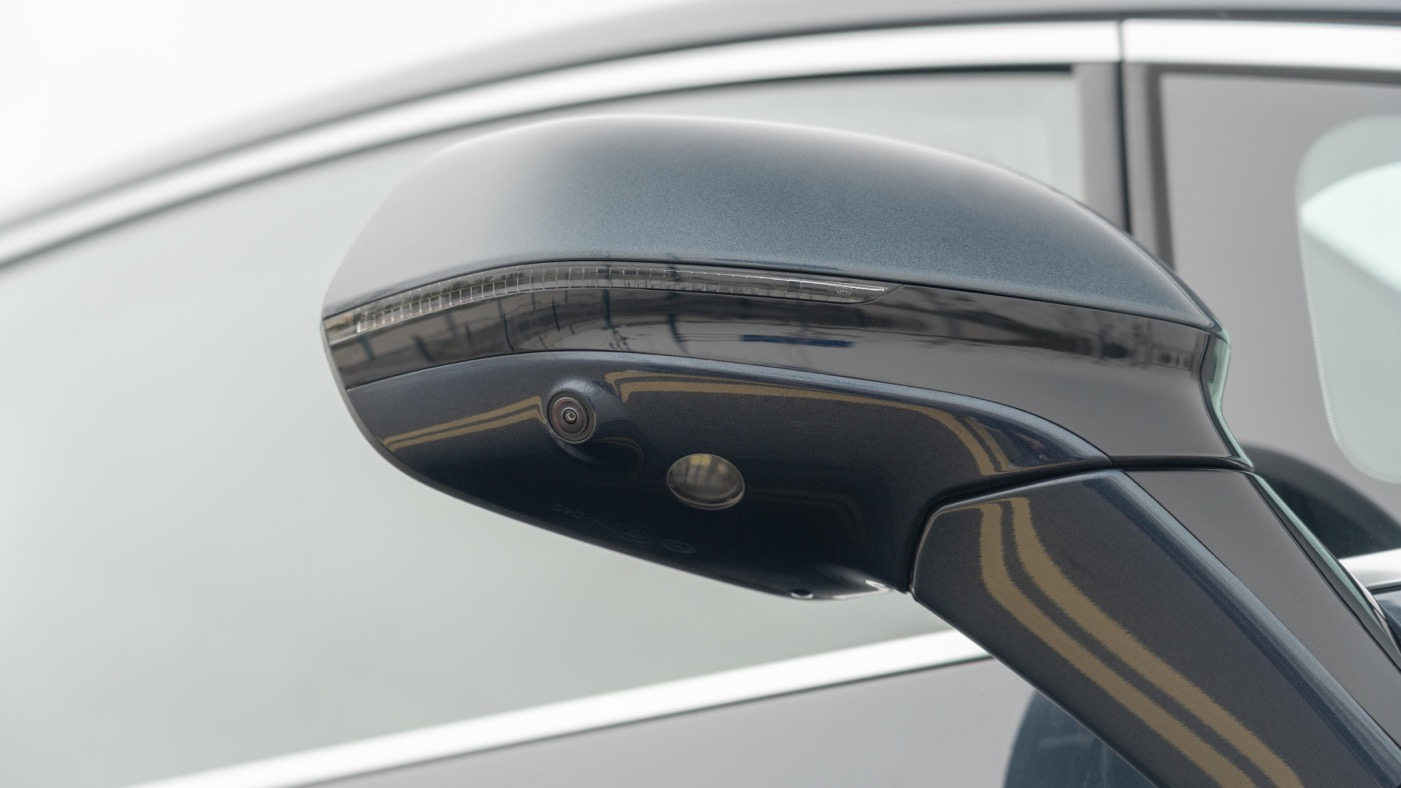
The NFC key recognition is placed on the left side of the rearview mirror close to the driver’s seat.
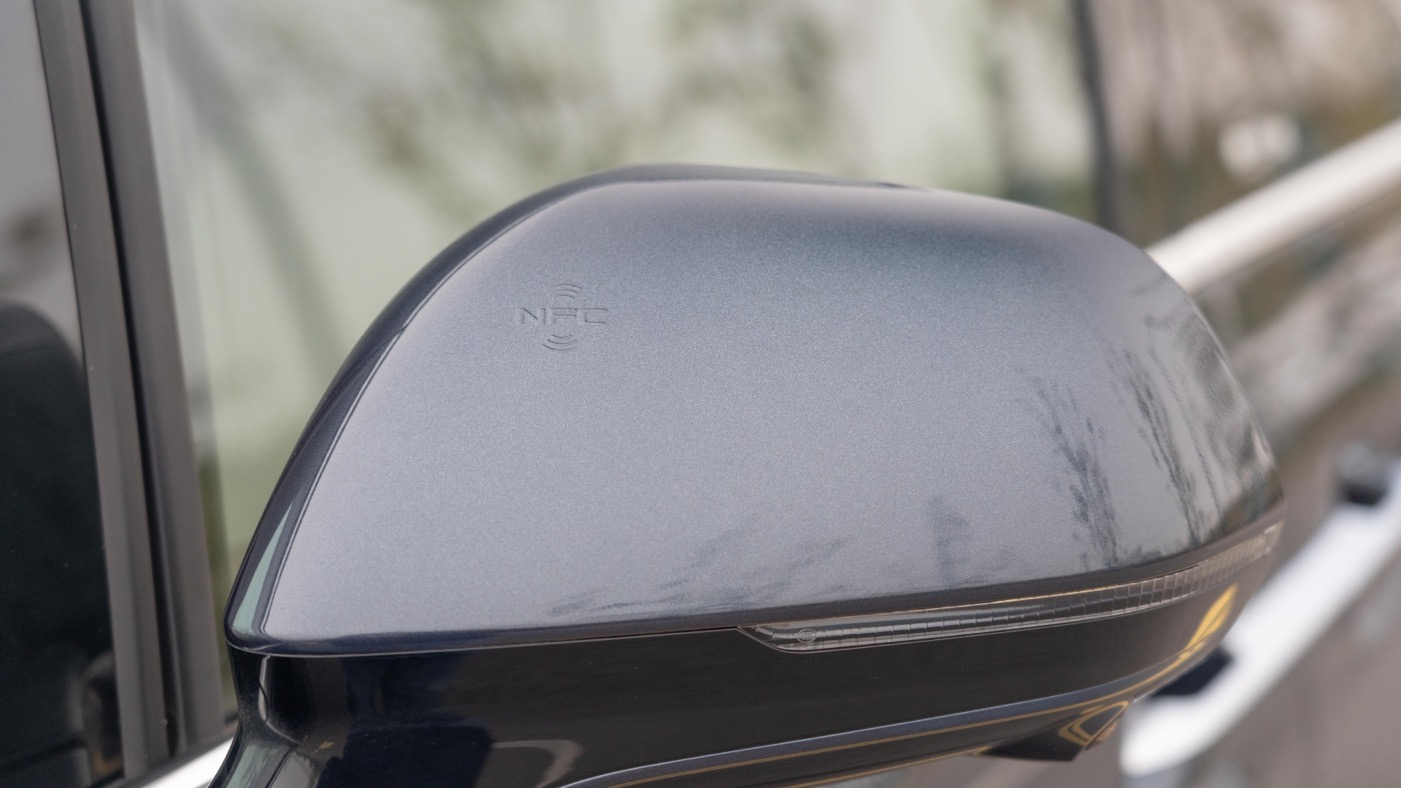
Our four-wheel-drive flagship model uses Michelin PremiumContact tires with a specification of 235/60 R18, which are sufficient for daily driving.
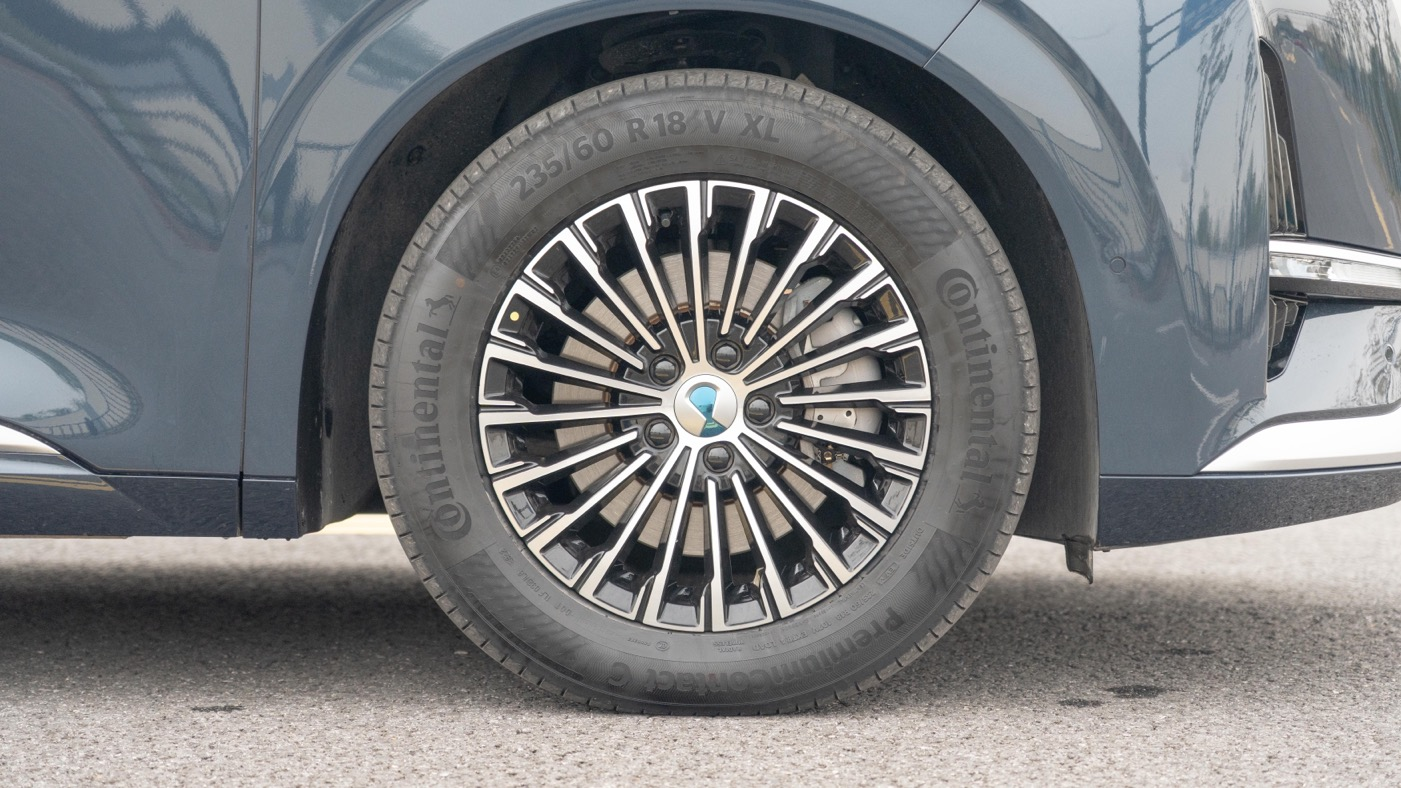
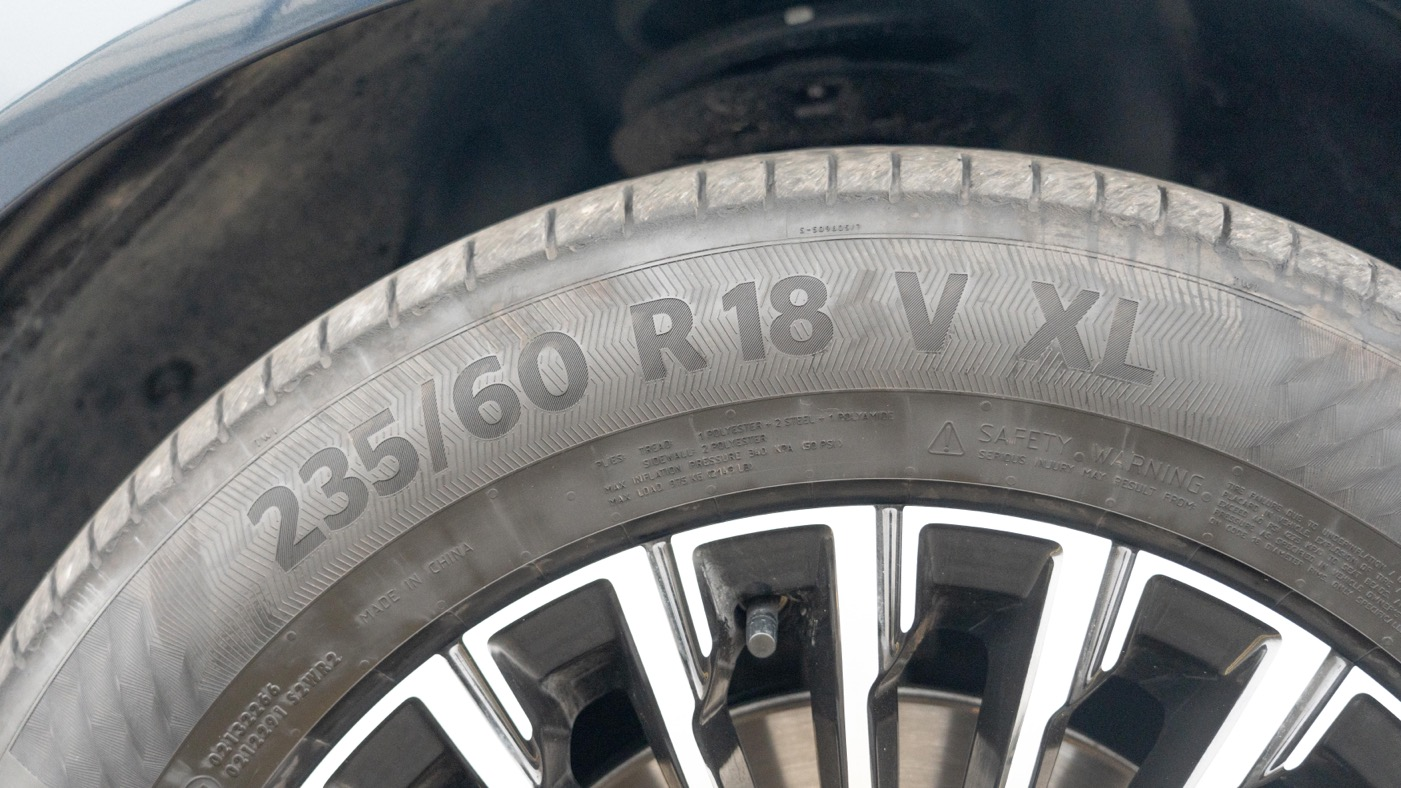
The door handle still adopts a conventional design and does not use a hidden-door handle. There is a micro-switch above it to unlock the door.
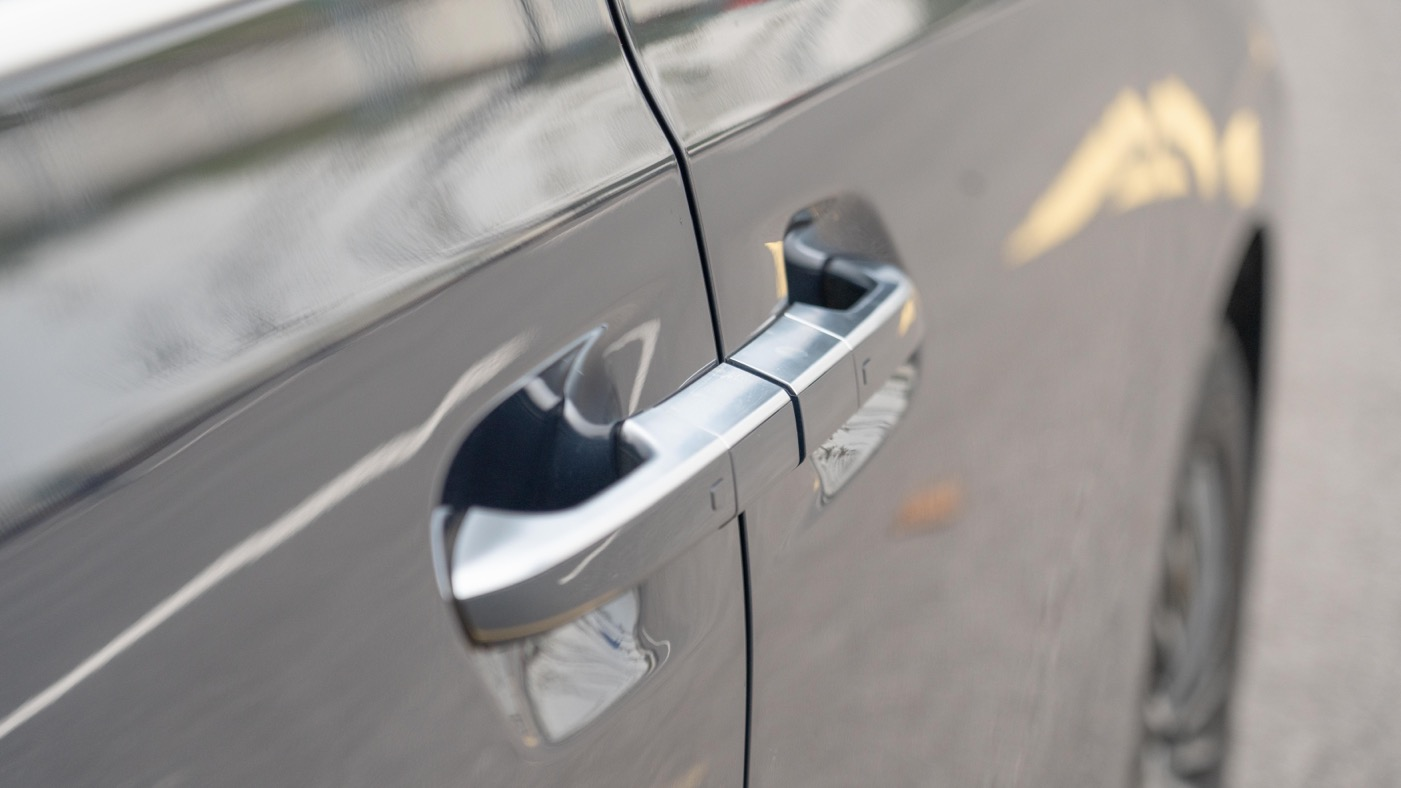
The DC fast-charging port and AC slow-charging port are placed on the right-rear side of the car body, with manual opening covers, and both charging ports have protective covers. The peak fast-charging power is tested to reach 90 kW.
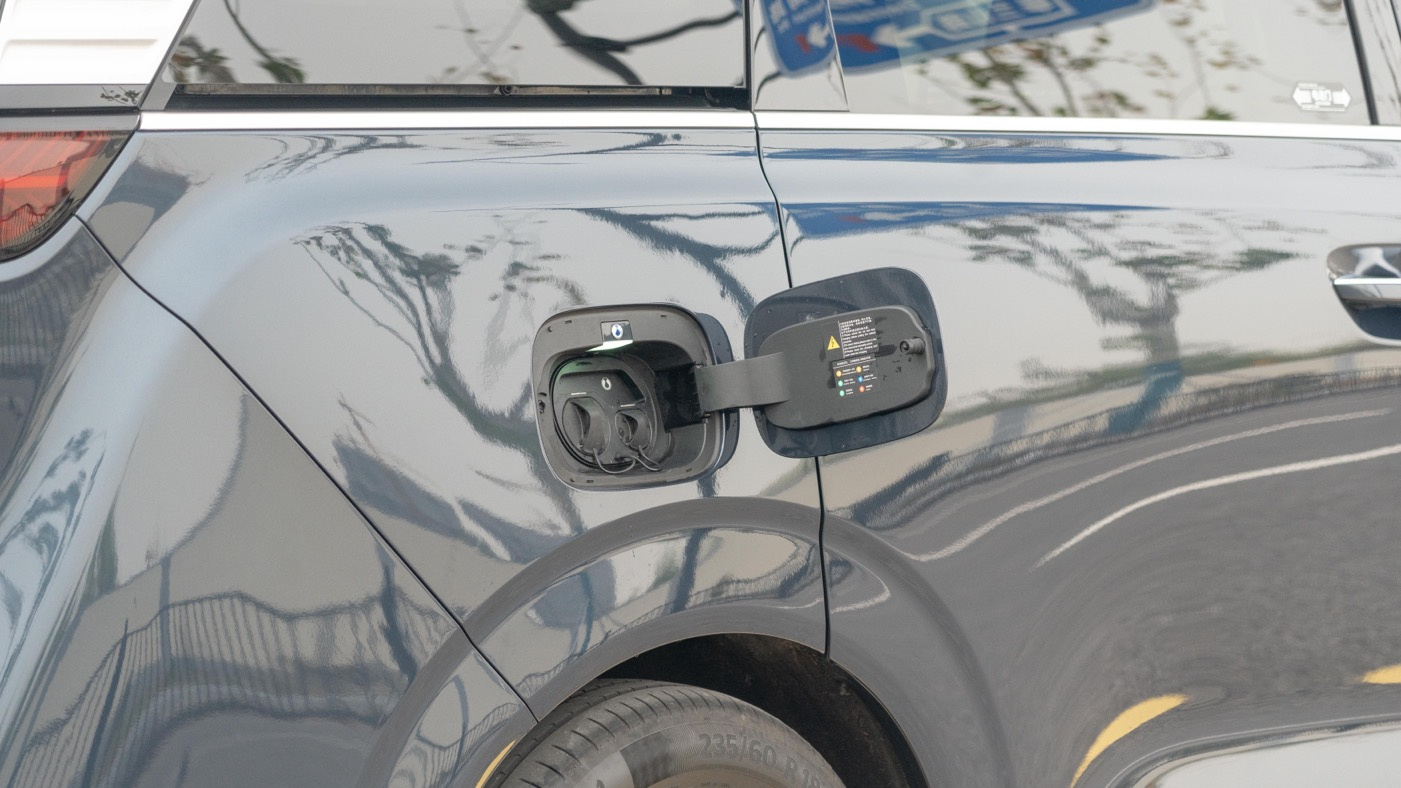
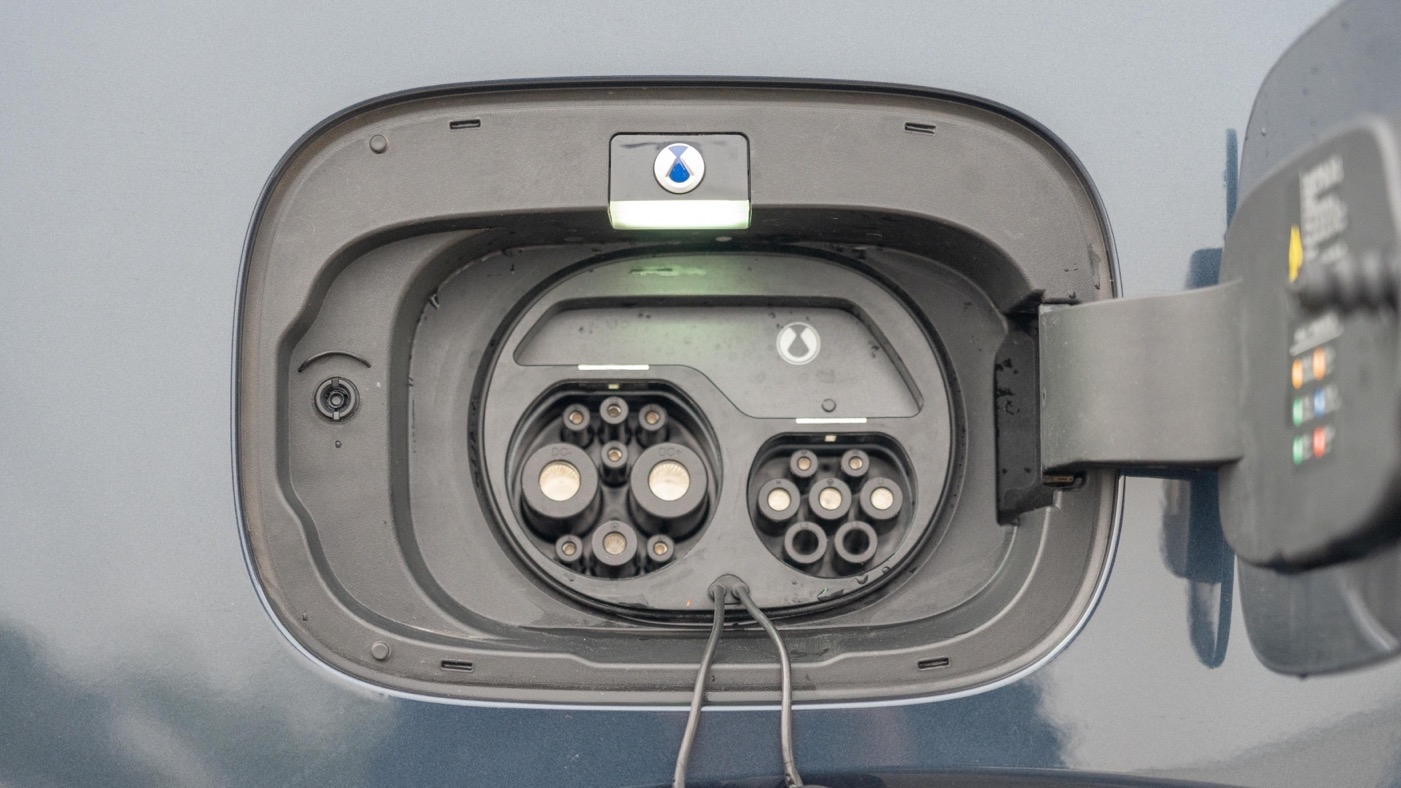
As a hybrid version, the fuel filler cap of DENZA D9 is located on the left rear side of the vehicle. Like other DM-i models of BYD, DENZA D9 also uses 92# gasoline, which can save some fuel costs in today’s expensive gasoline market.
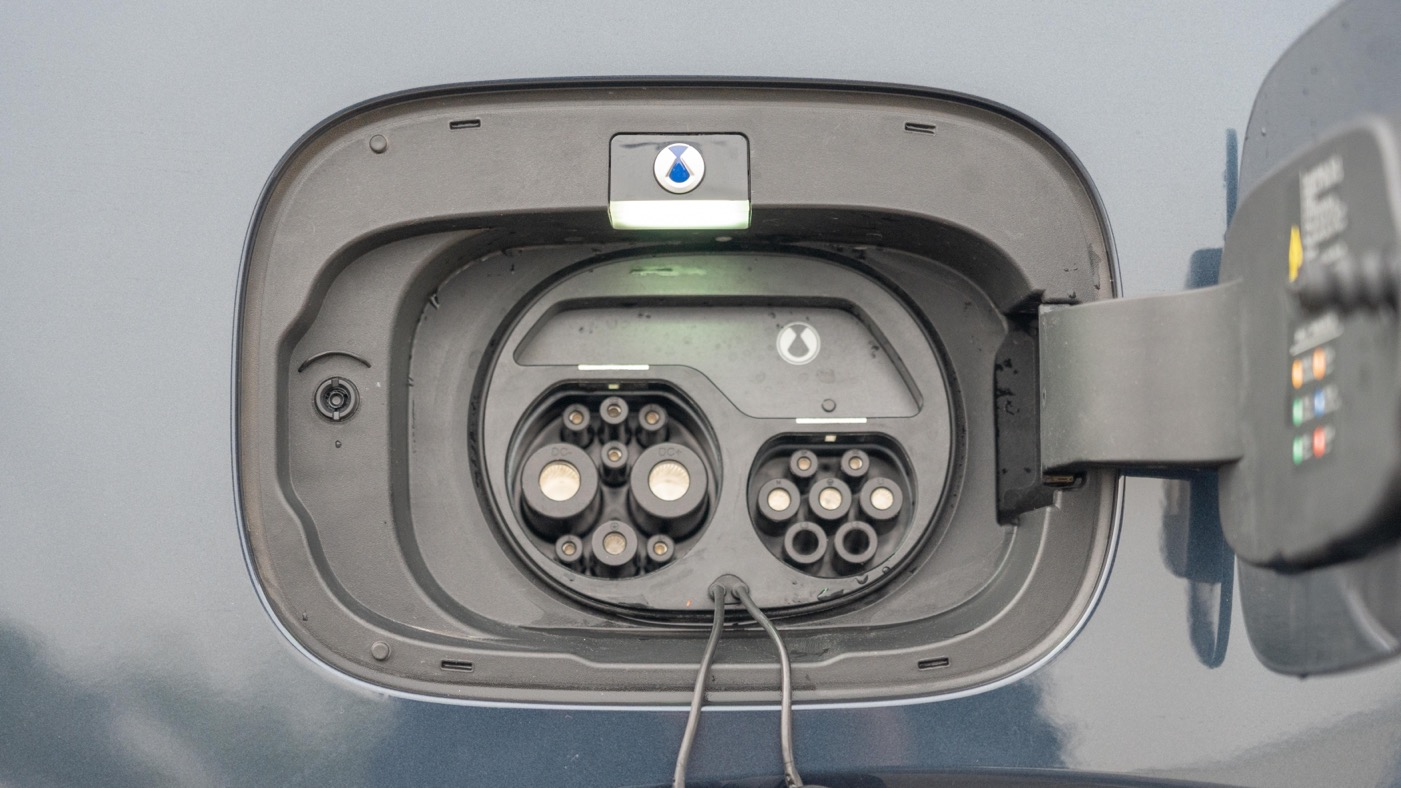
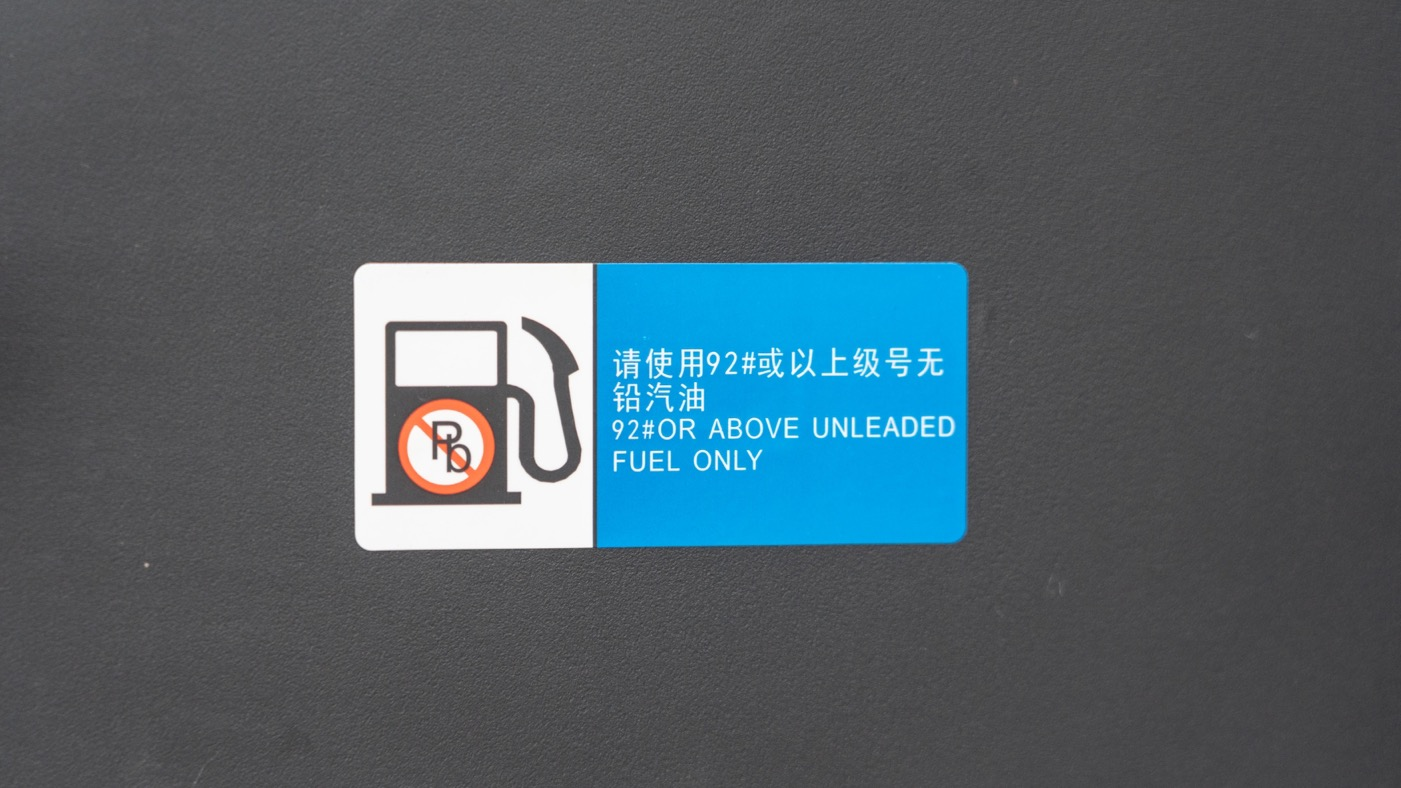
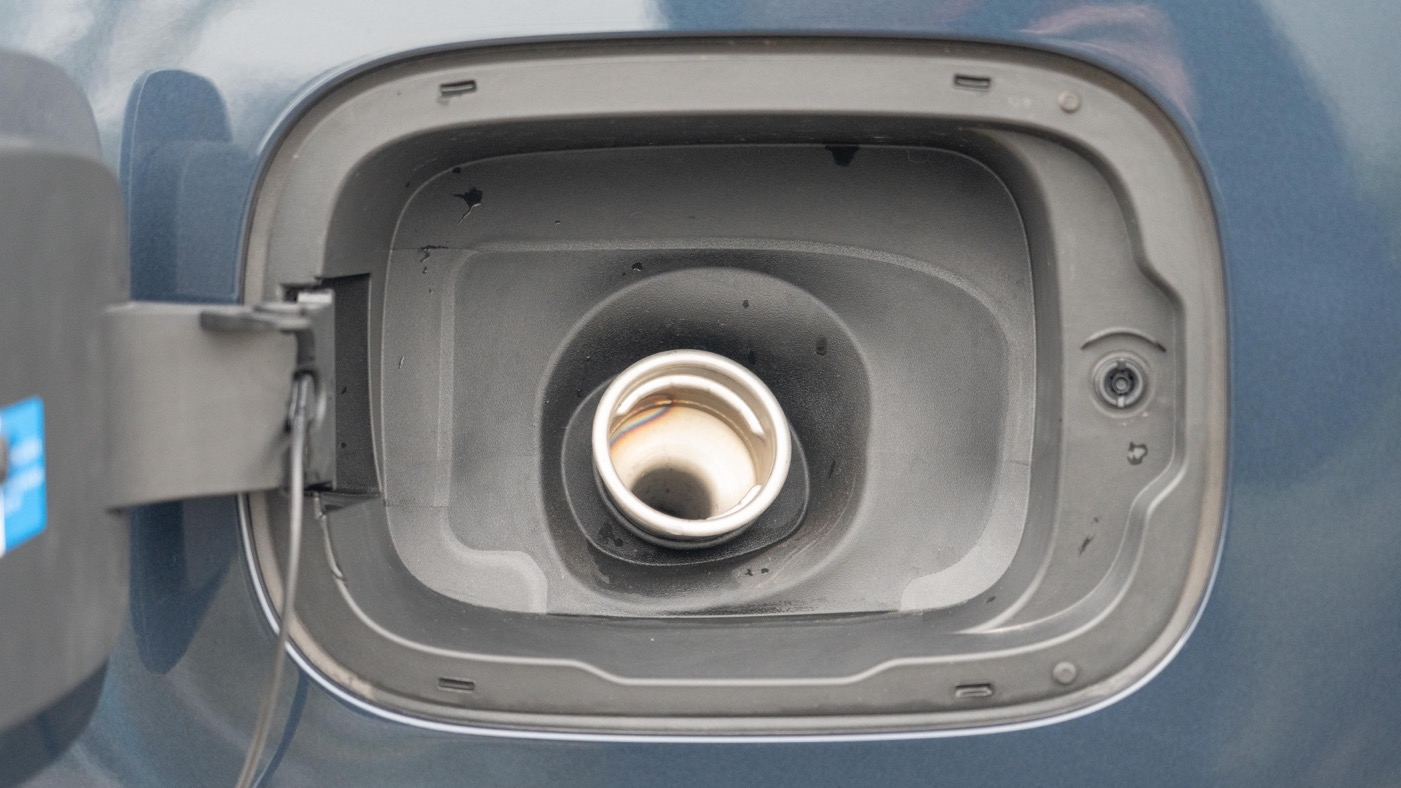
In addition, it is worth mentioning that since the rear door is a sliding door design, when the charging port or fuel port is opened, the sliding door will detect obstacles on both sides and will not open the door completely.
The tail retains the square and simple design concept, reducing complicated lines.
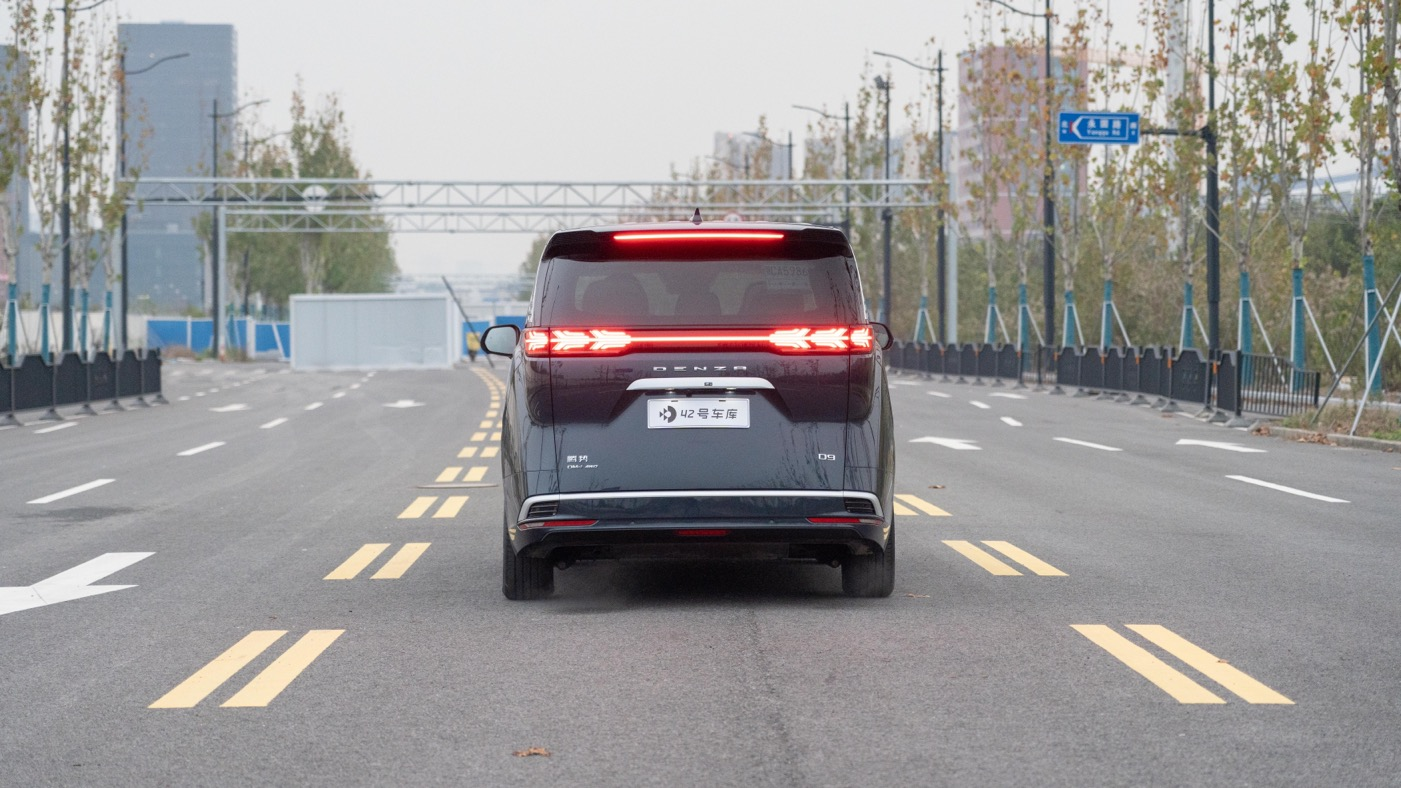
The hidden rear wiper is placed inside the rear wing and the high-mounted brake light.
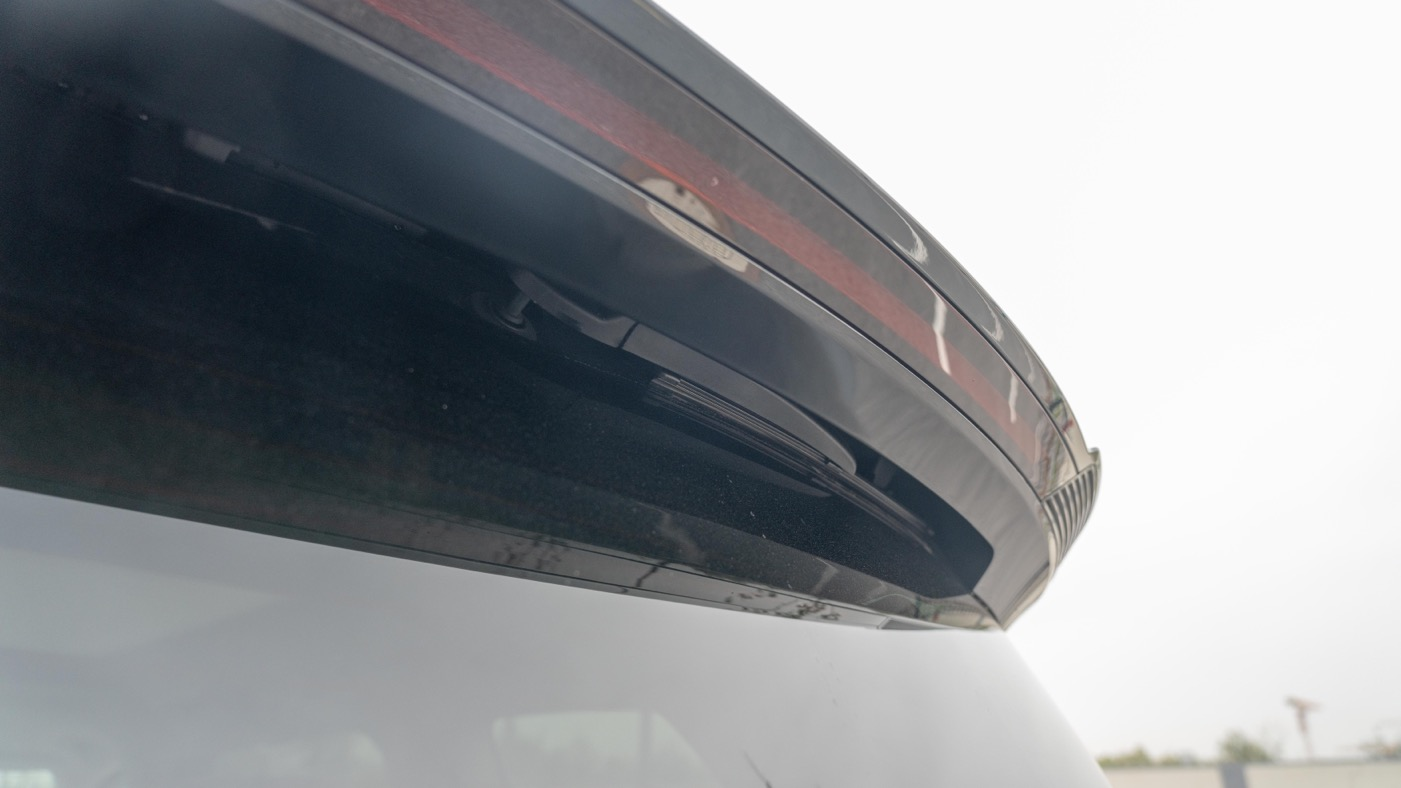
The taillights adopt a through-type design, and when the brake lights are on, a pattern similar to a trident will appear. What do you think of this taillight design?
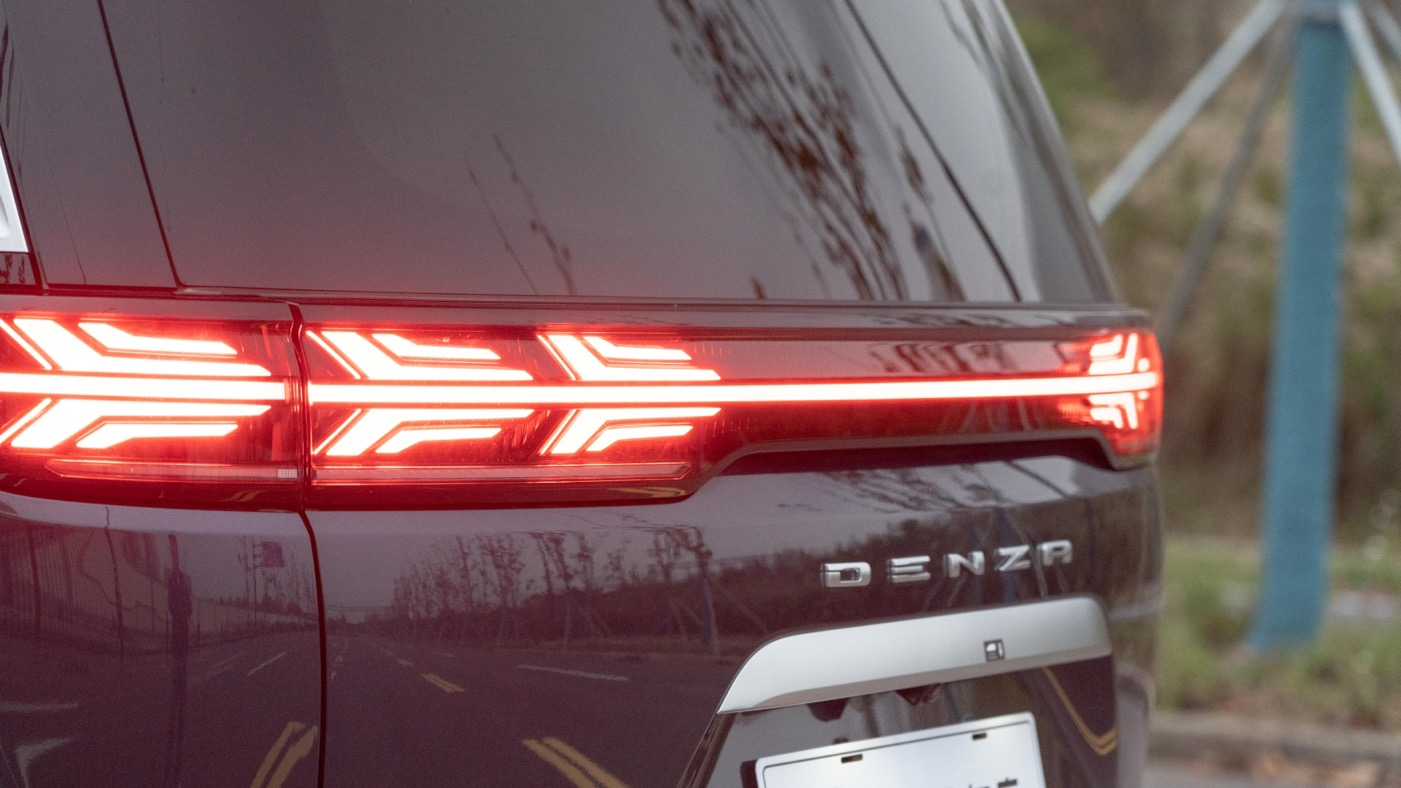
The rearview camera is placed next to the tailgate switch, with illumination lights on both sides, which can quickly locate the tailgate switch in poor lighting conditions.
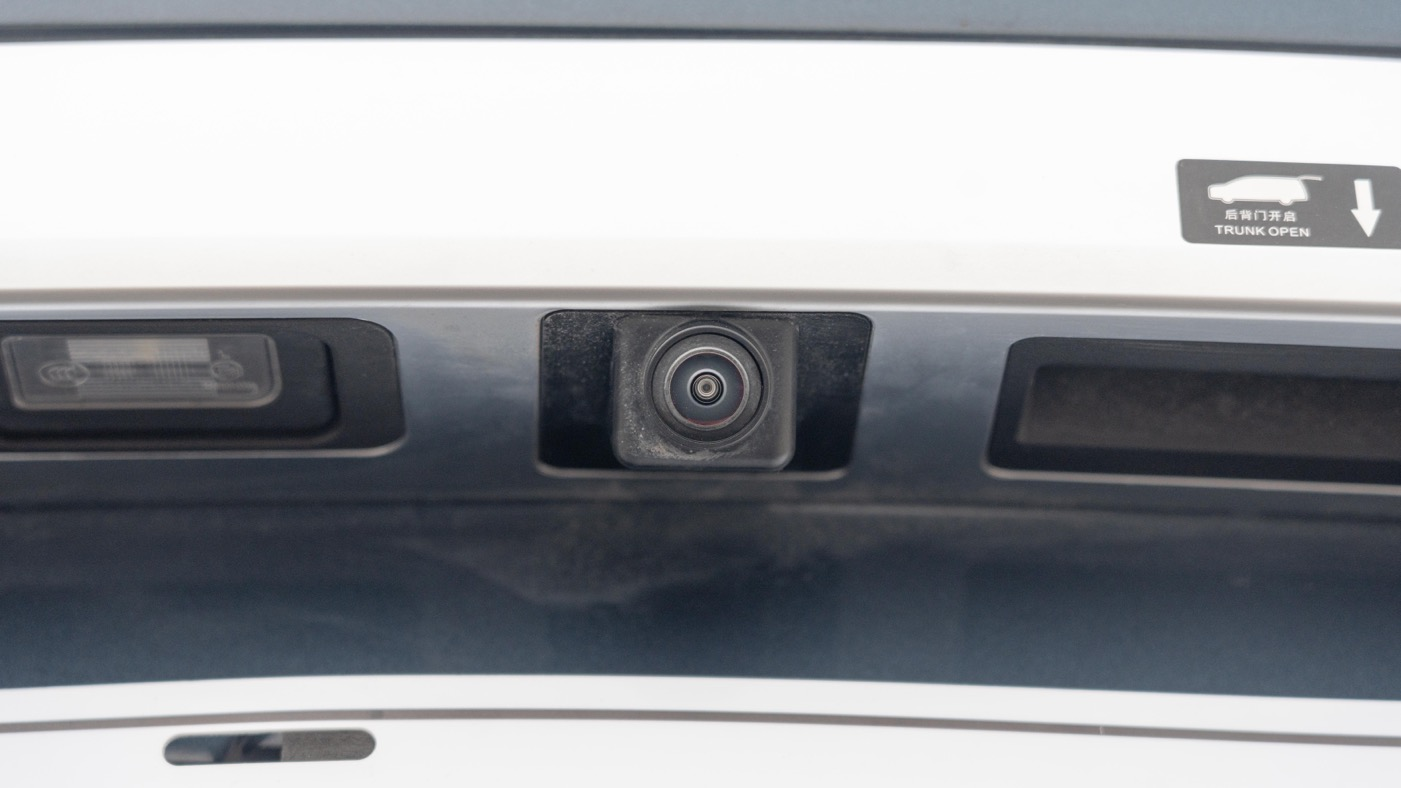 ## Rear Trunk
## Rear Trunk
The tailgate of the DENZA D9 adopts a lift-back design. Due to the length of the tailgate, if the parking space behind is very close to the wall or other vehicles, the trunk cannot be opened, which is a bit inconvenient.
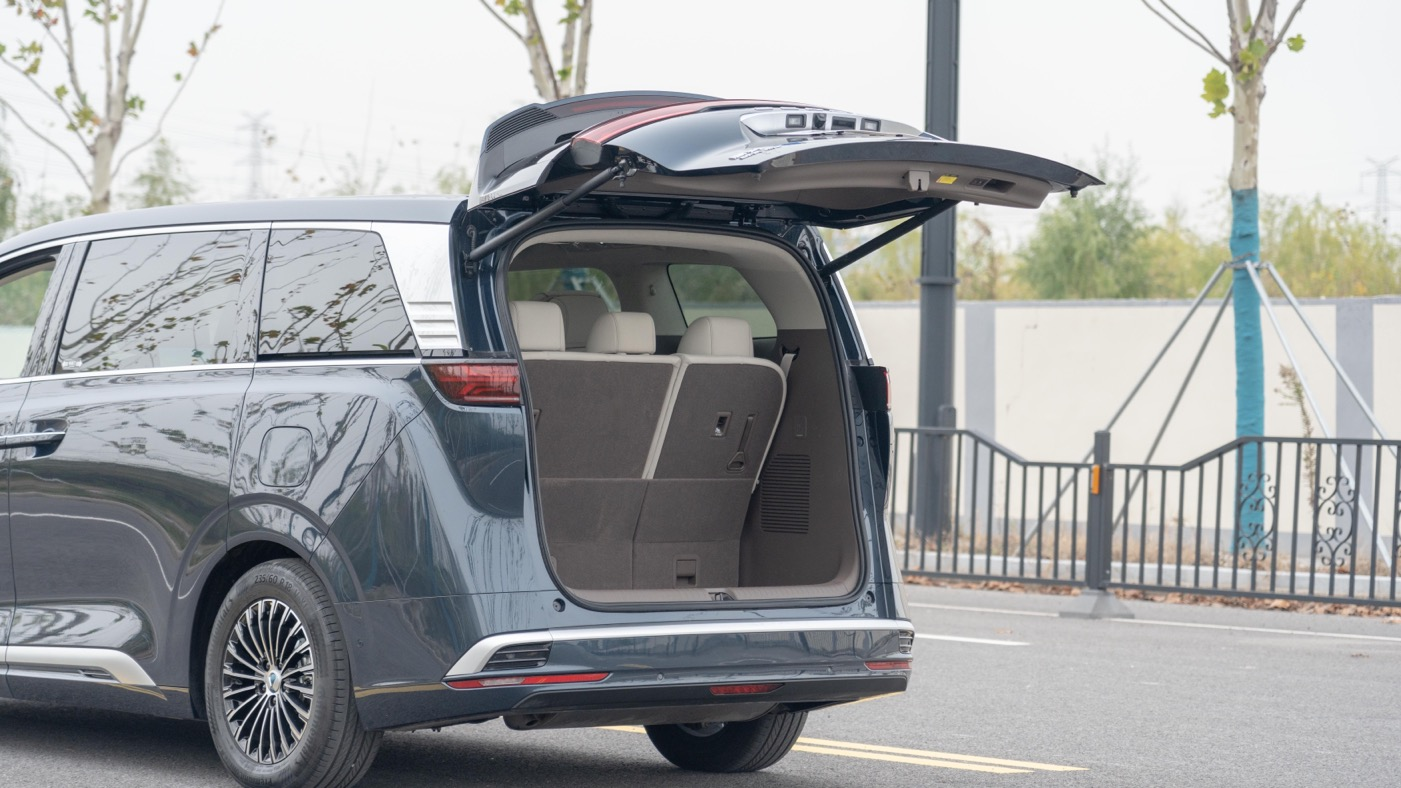
In everyone’s inherent impression, MPVs generally do not have too large trunk space because they focus more on the riding experience of the passengers inside the car. The size of the trunk of the DENZA D9 is as follows.
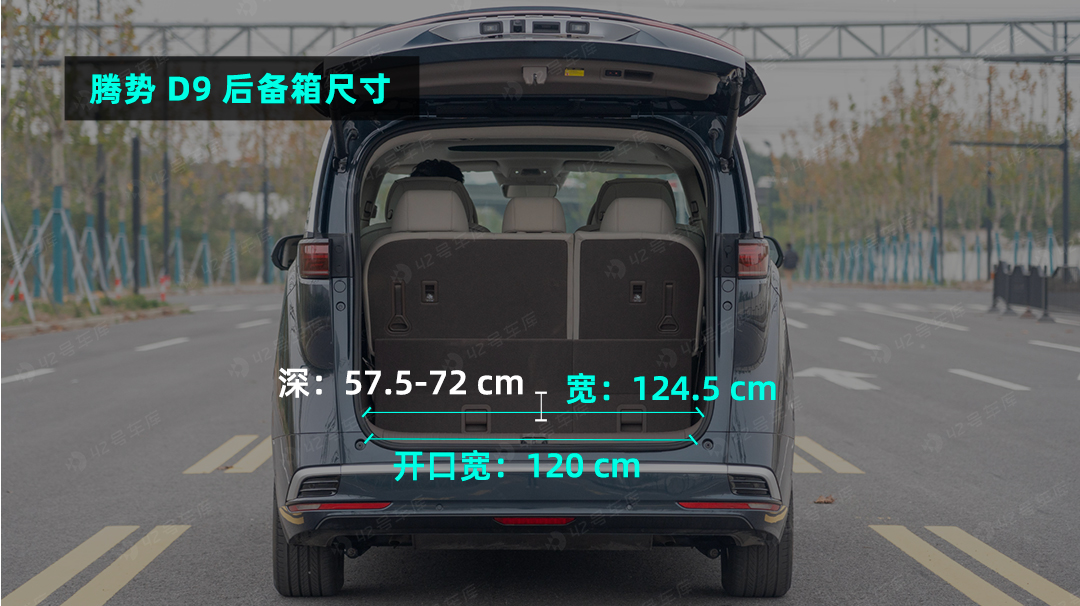
It is worth mentioning that the third-row seats support front and rear adjustment. When adjusted to the frontmost position, the depth of the trunk reaches 72 cm. In the previous official demonstration, the trunk space was sufficient to hold seven 20-inch carry-on suitcases.
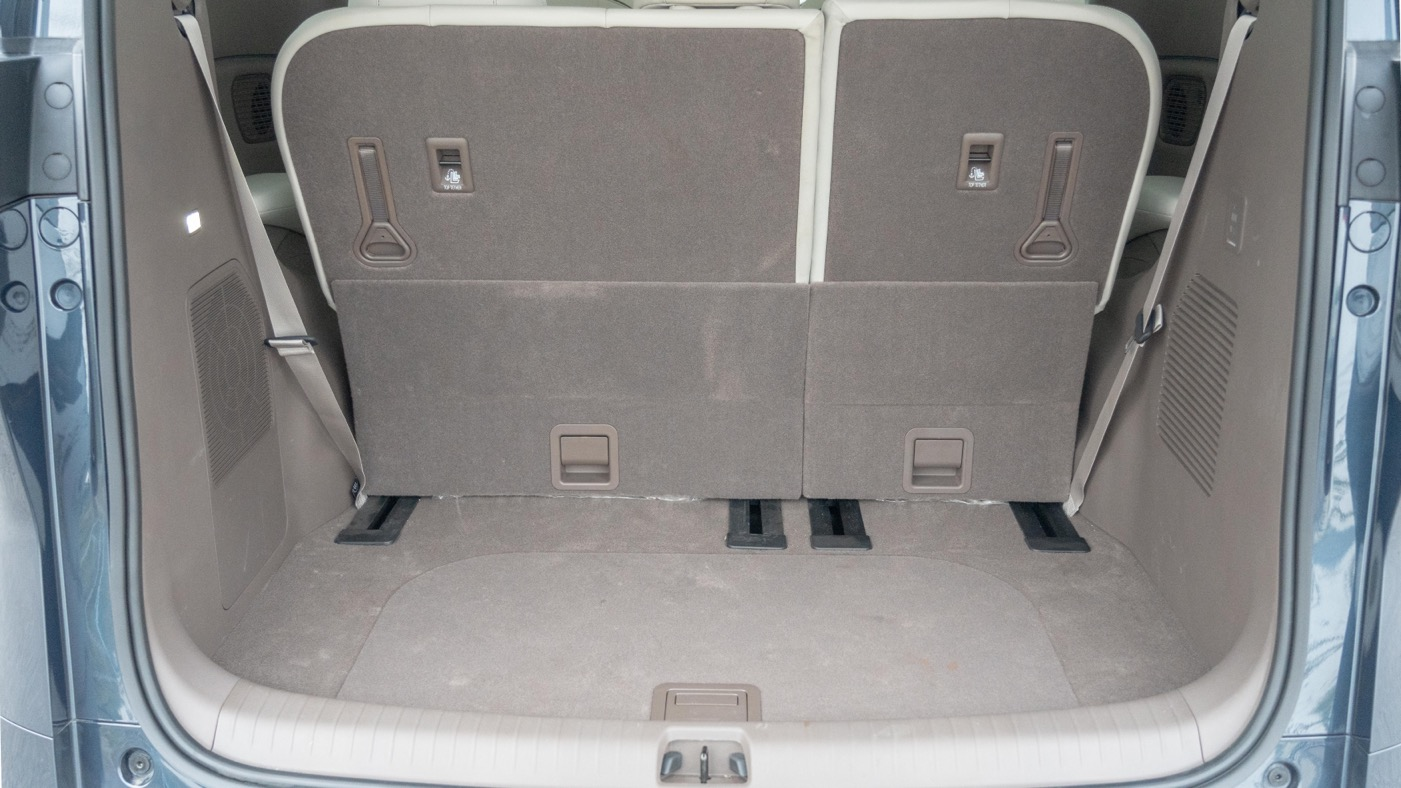
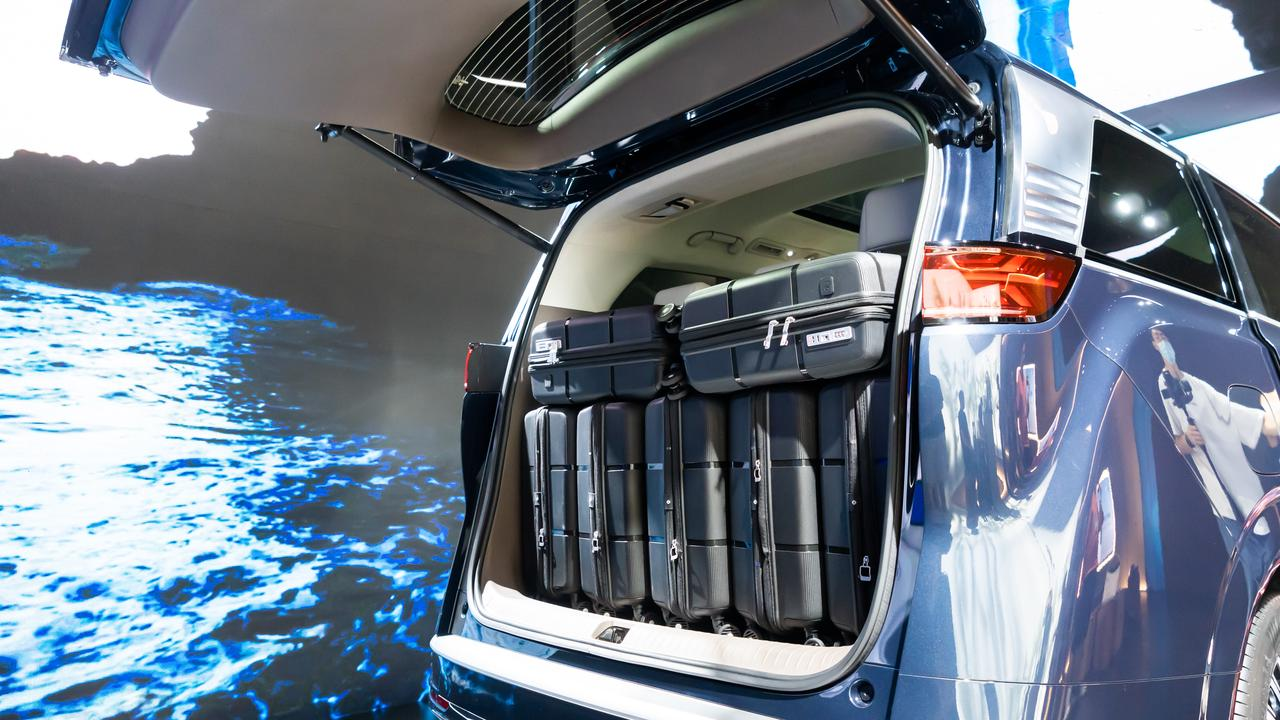
At the same time, the third-row also supports 4/6 seat folding. However, when the third-row seat is adjusted to the frontmost position, if someone is sitting in the second-row seat, the third-row seat cannot be completely flattened.
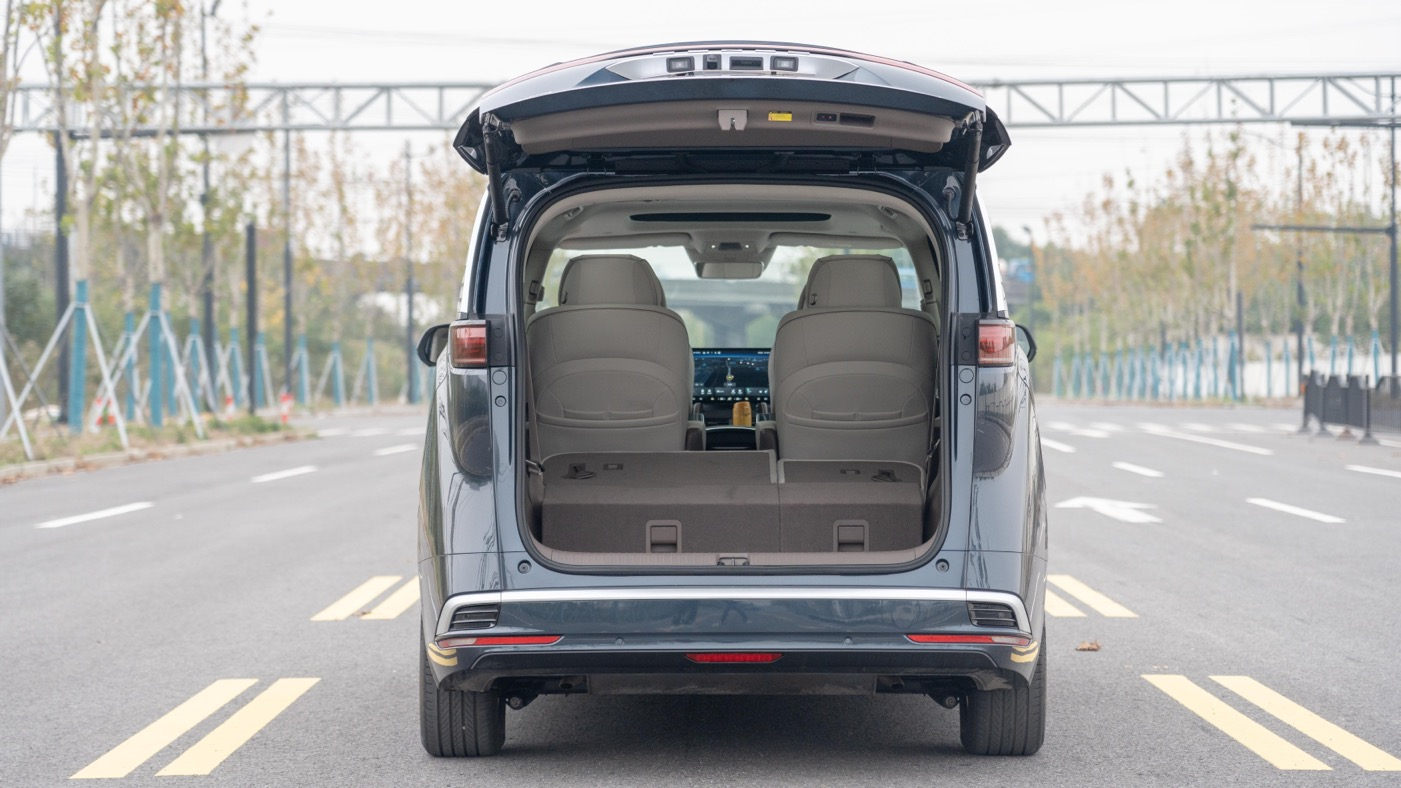
On the left side of the trunk is an illumination lamp and a speaker, and on the right side is a 220V power interface with a maximum output power of 2,200 W, which is enough to supply power to most in-car electrical appliances.
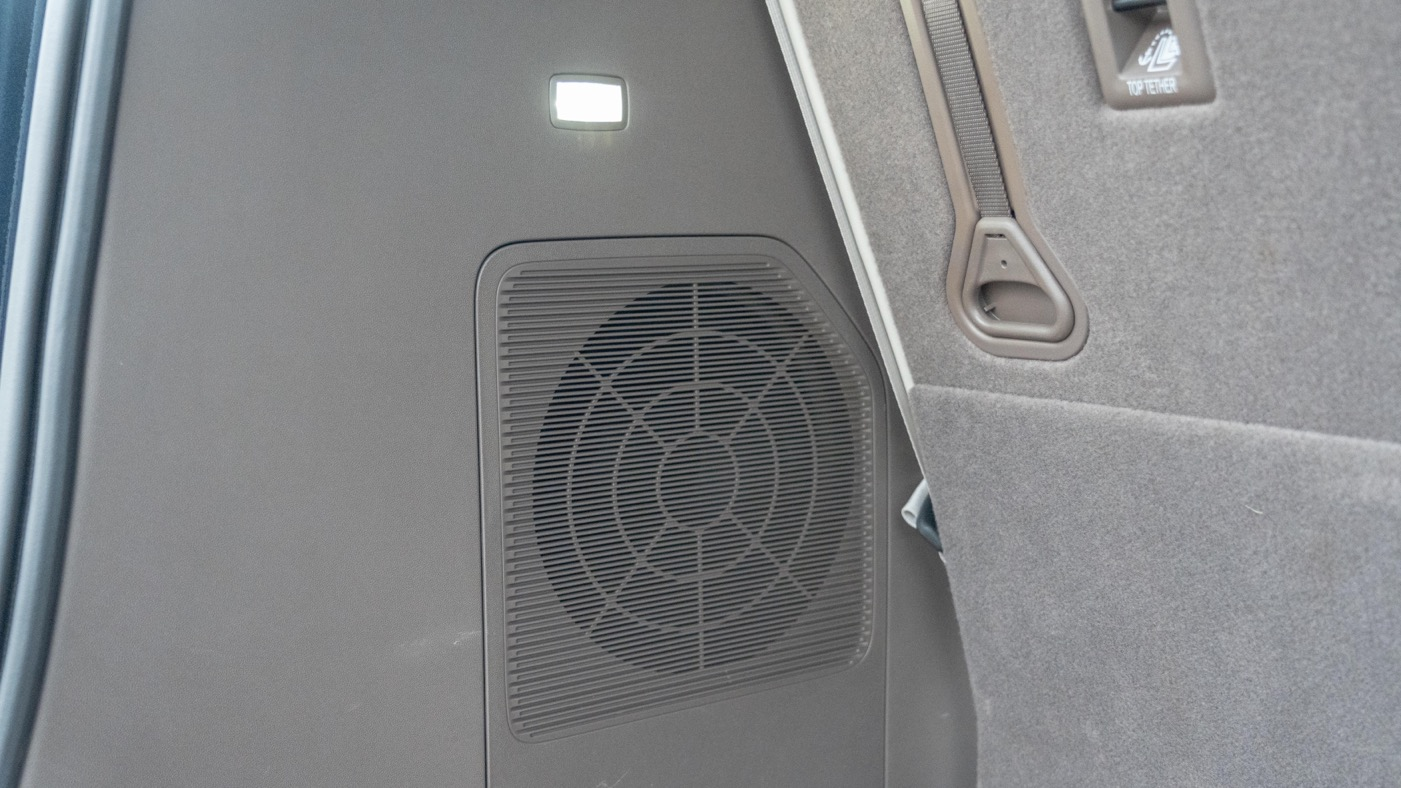
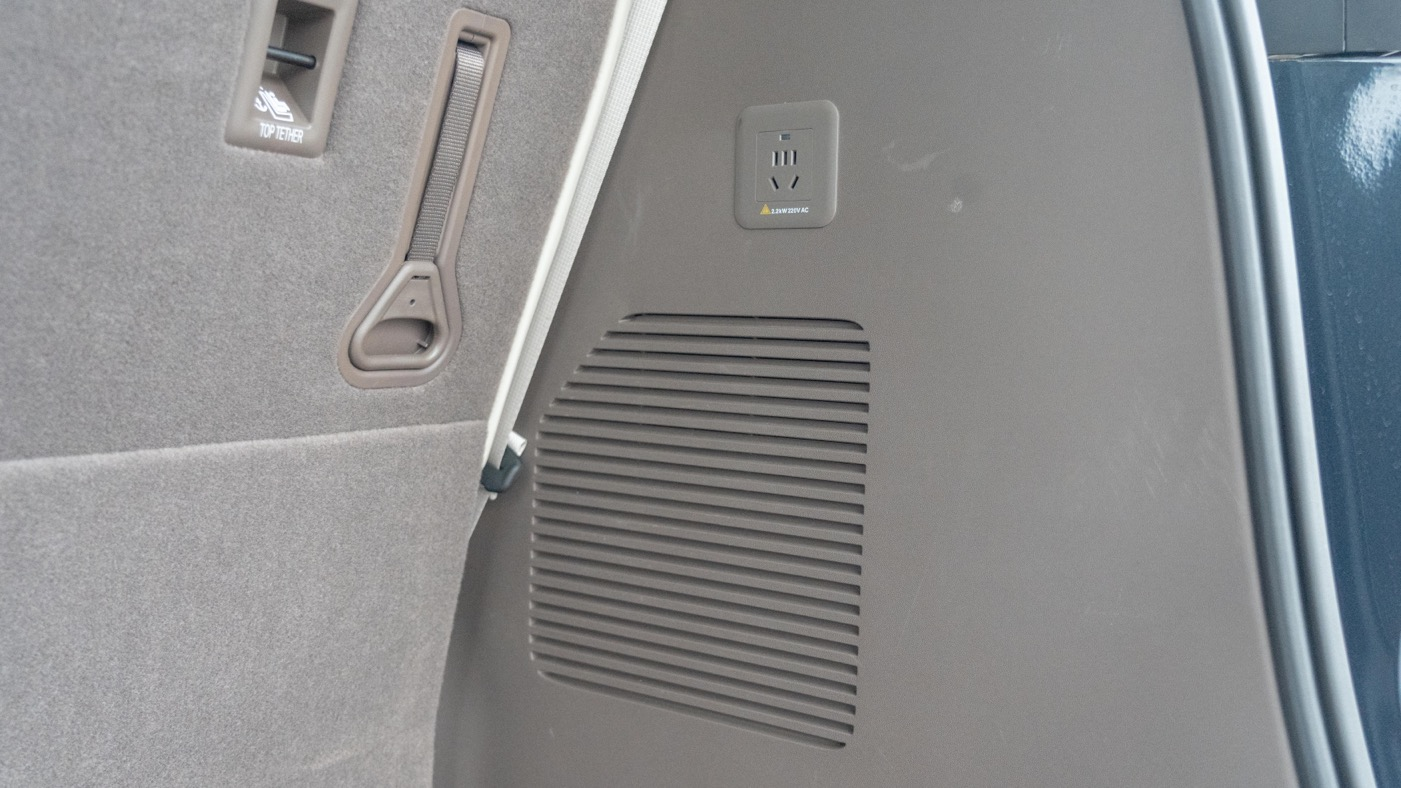
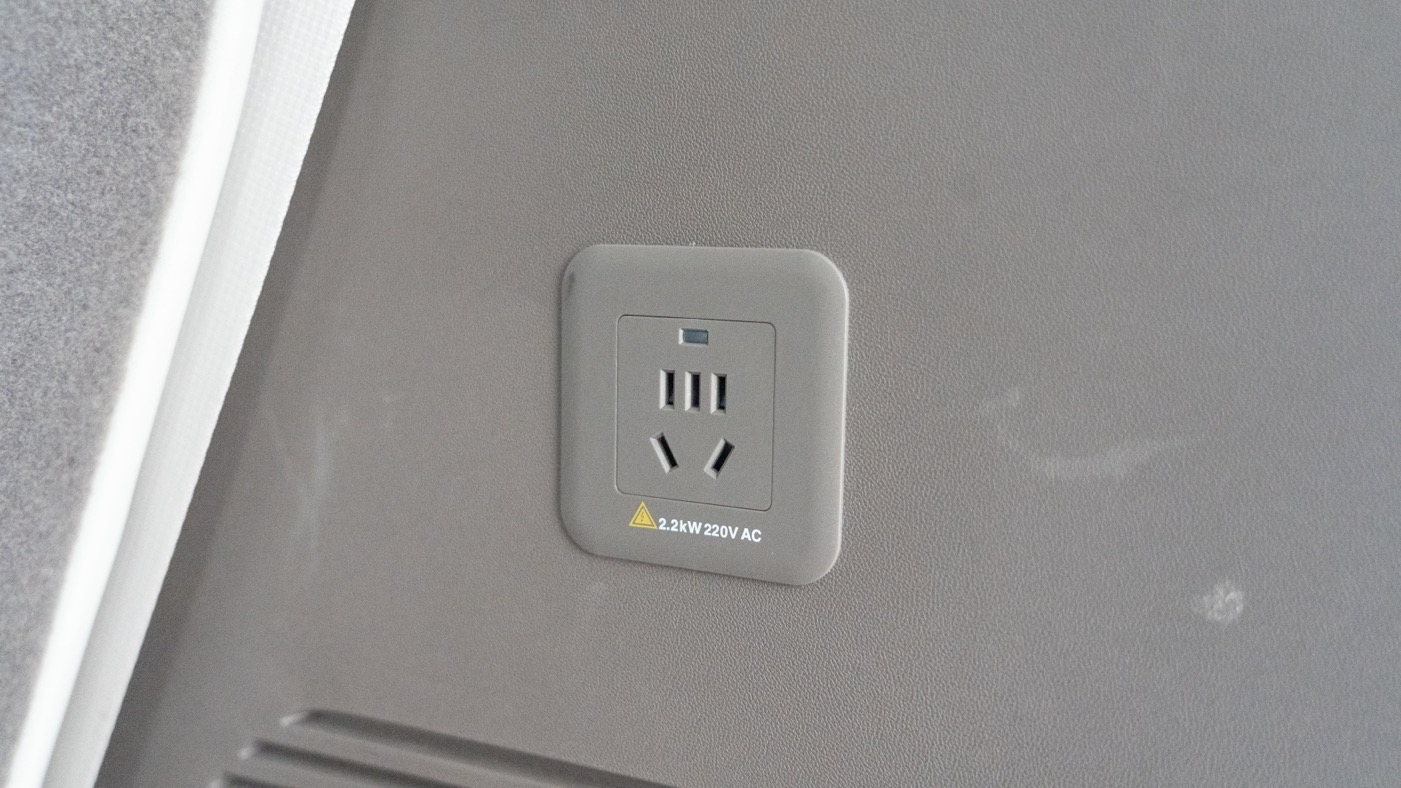
Under the cover below the trunk, there is a toolkit for the vehicle, including emergency tools such as a warning triangle, tow hook, air pump, tire repair fluid, etc.
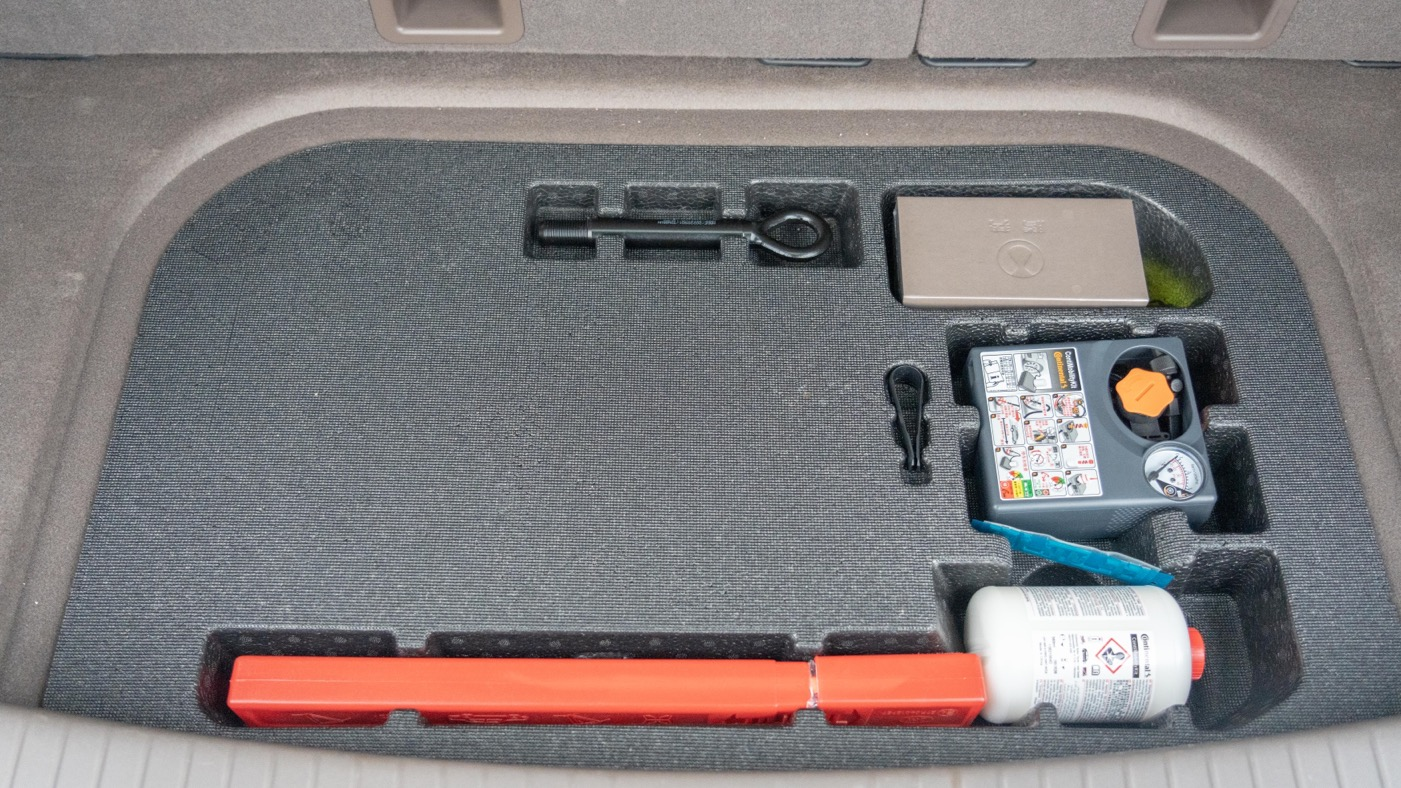
Finally, we show you the key of the DENZA D9. The key is mostly rounded and slightly elliptical in shape, not large in size, and not easy to bump against the leg when put in the pocket.
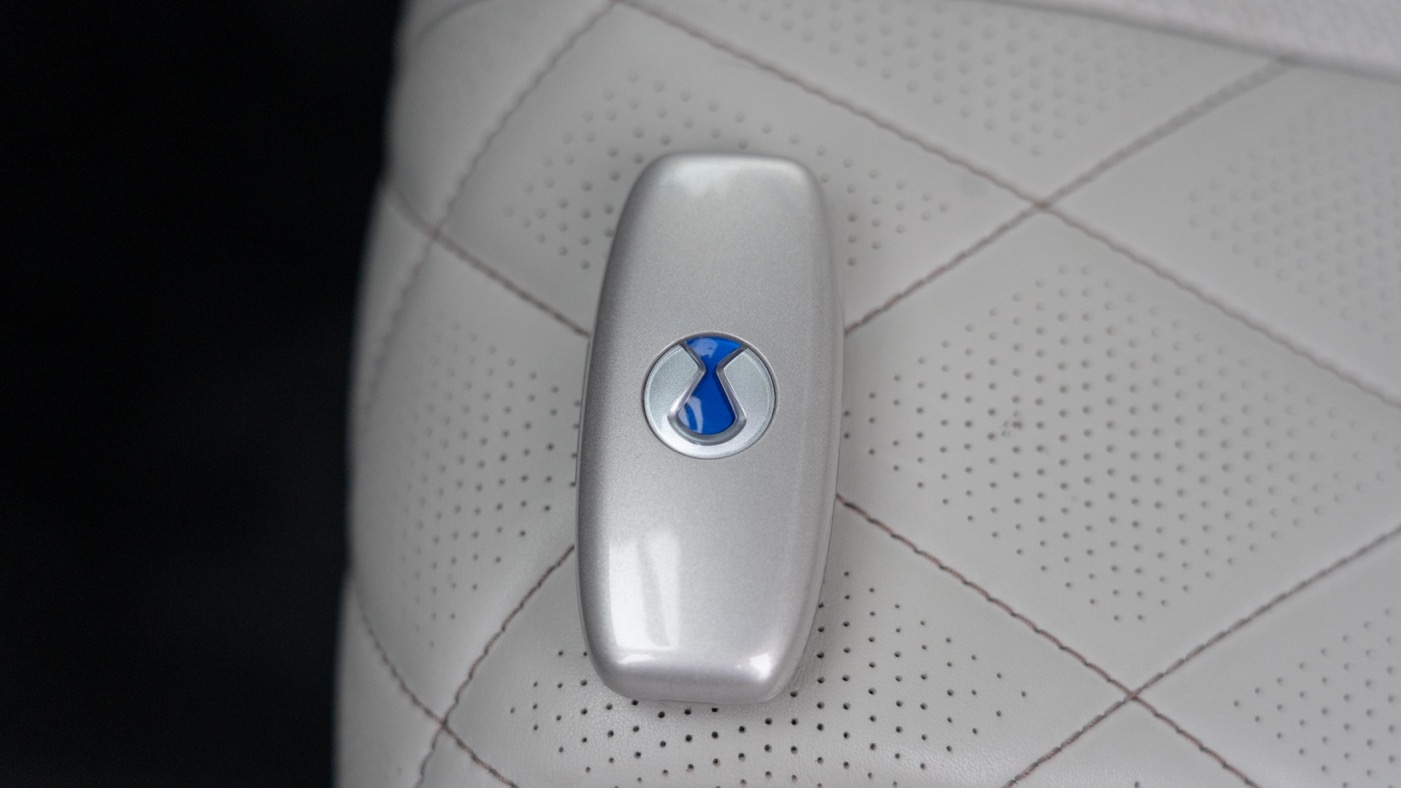
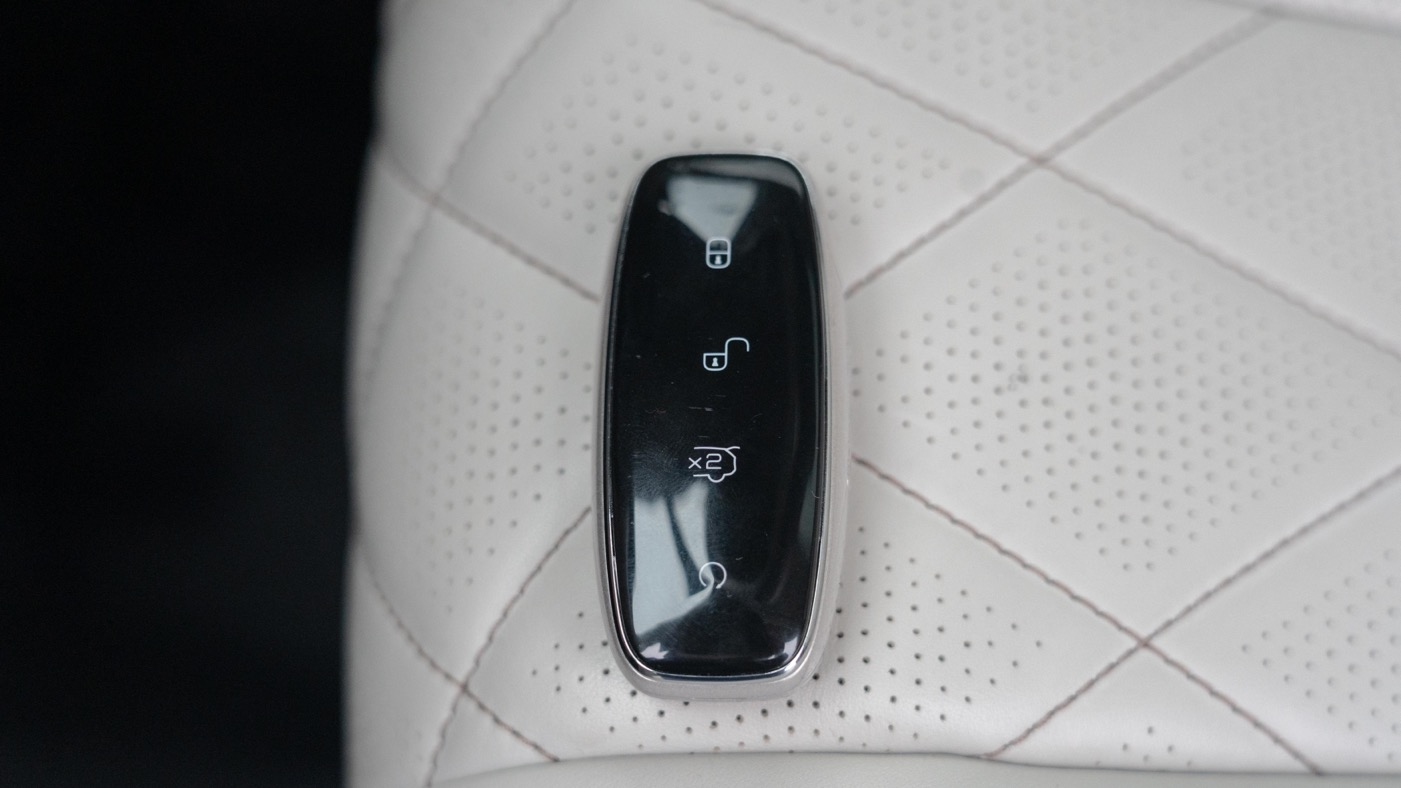
That’s pretty much it for the exterior. Overall, the DENZA D9’s appearance is impressive and is suitable for some business transportation occasions. Next, let’s take a look at the interior and see if it lives up to its position as a luxury MPV.
Interior: Good Core Experience, But Details Need Improvement
The interior of our car is of light color, with overall colors mostly in shades of coffee and beige.
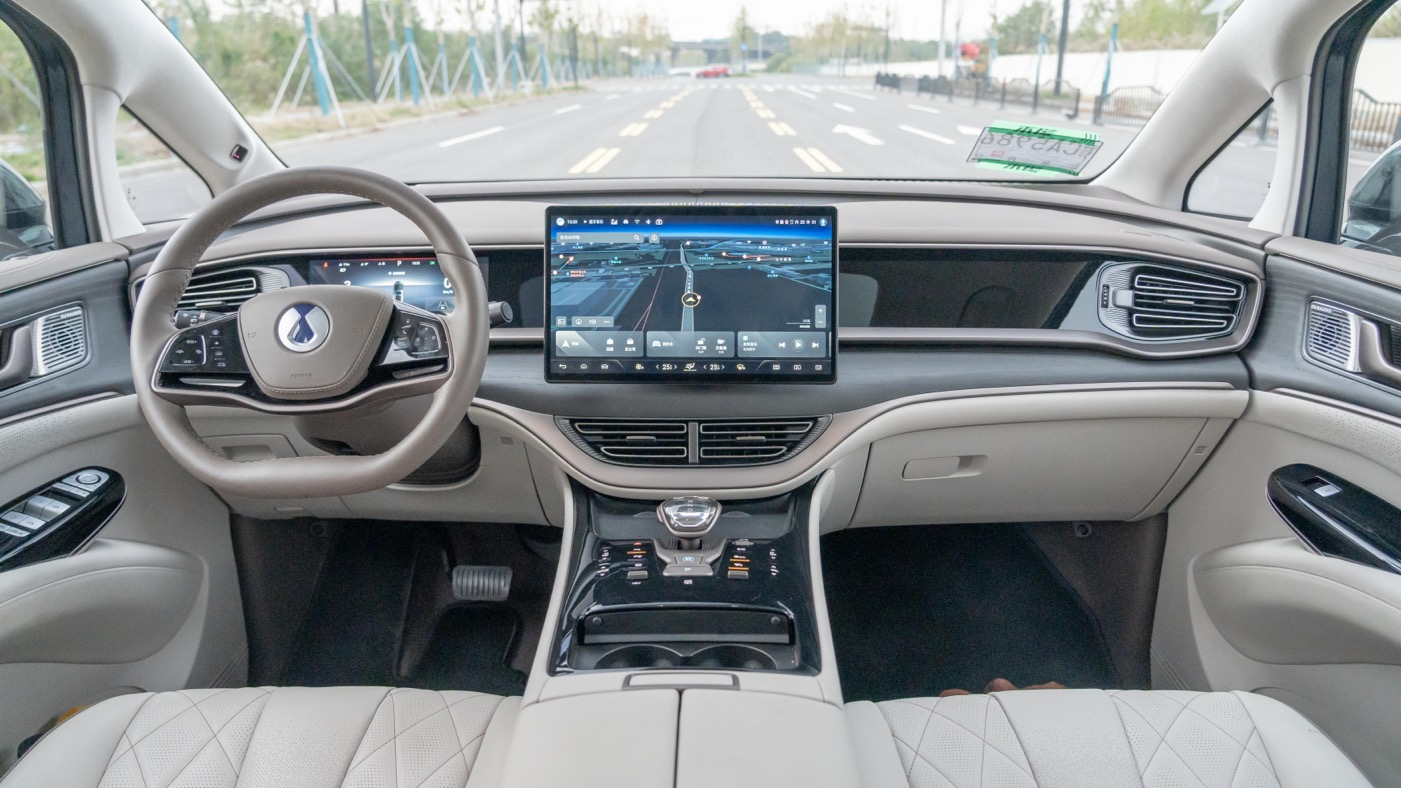
As shown in the figure, the size of the seats in the first row is sufficient.
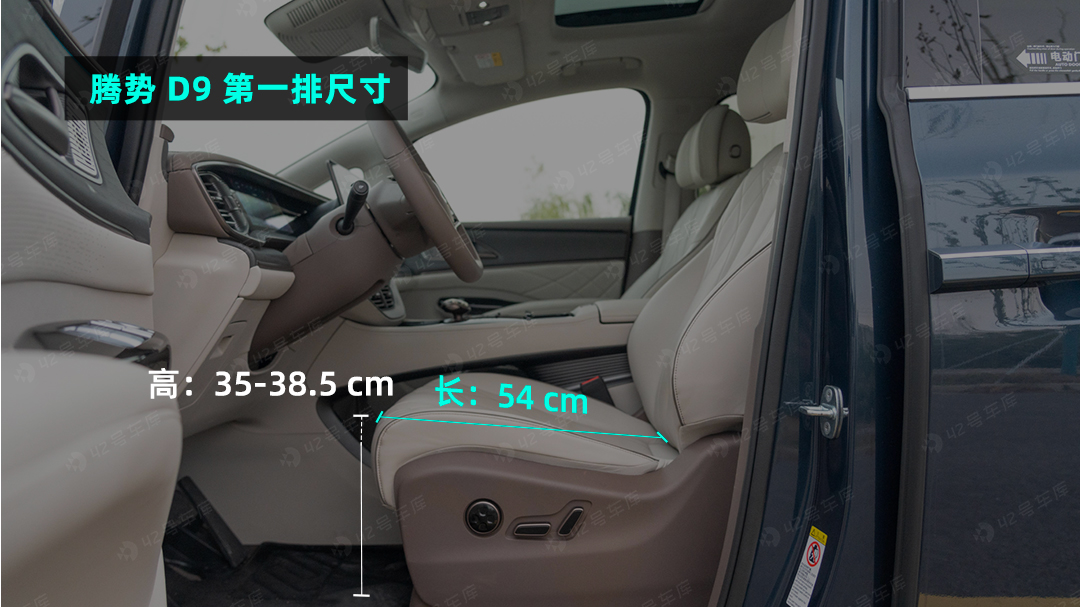
The slightly soft medium padding, along with the sufficiently long cushion and the wide headrest, make the first impression of sitting on it quite good.
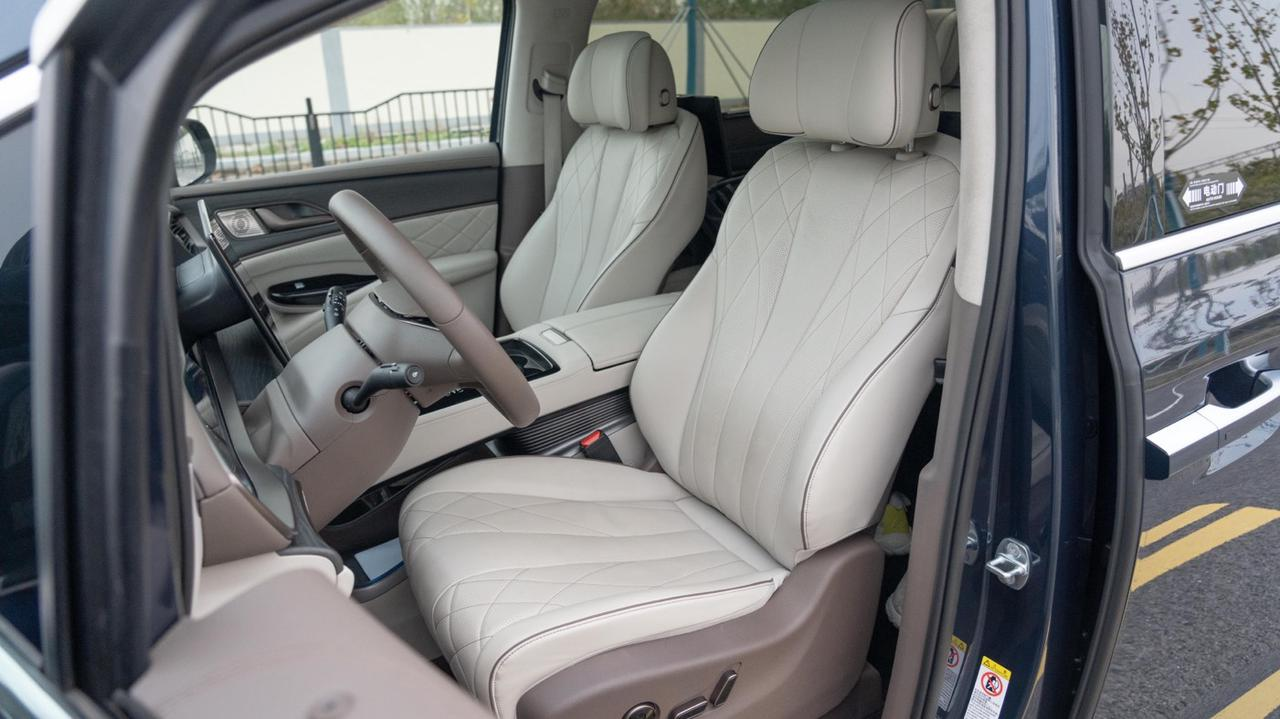
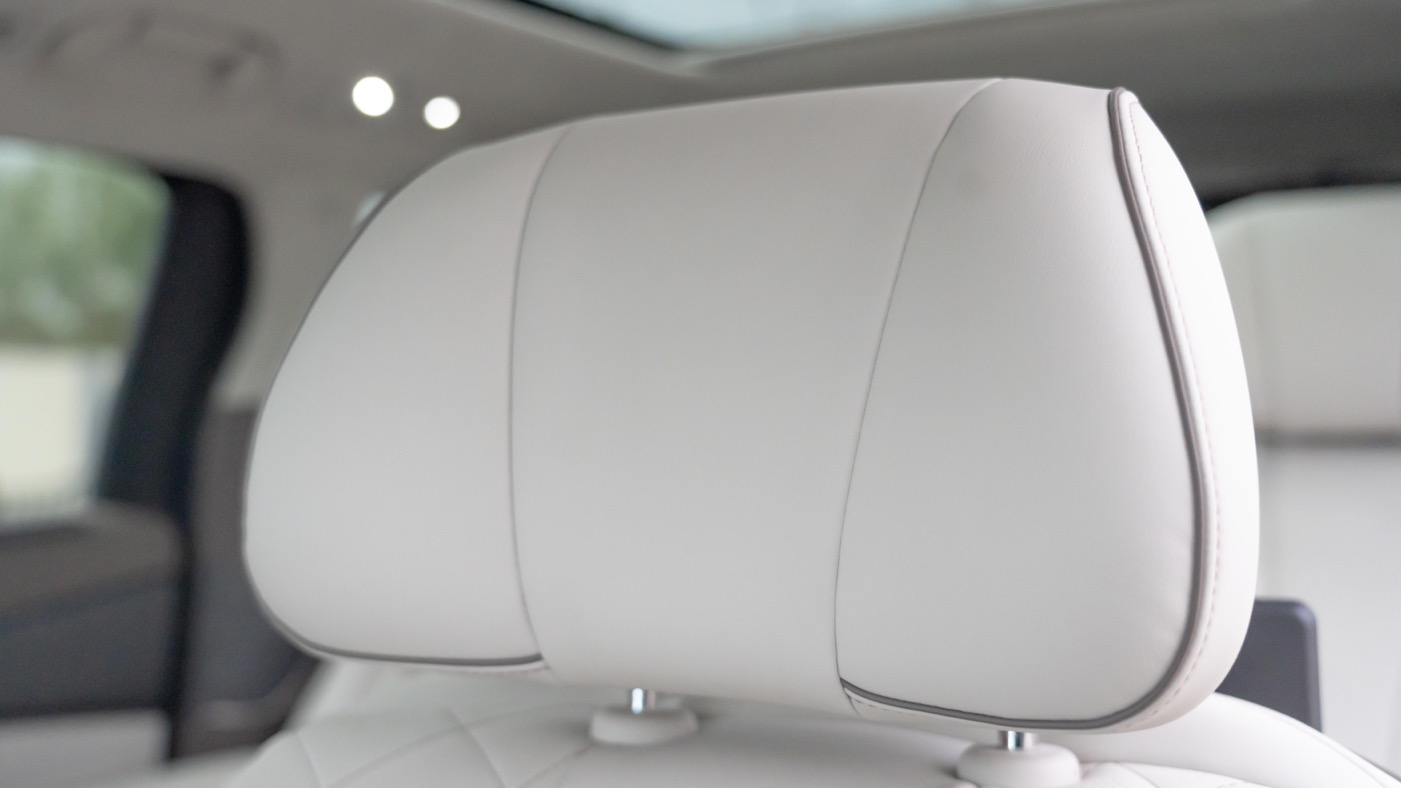
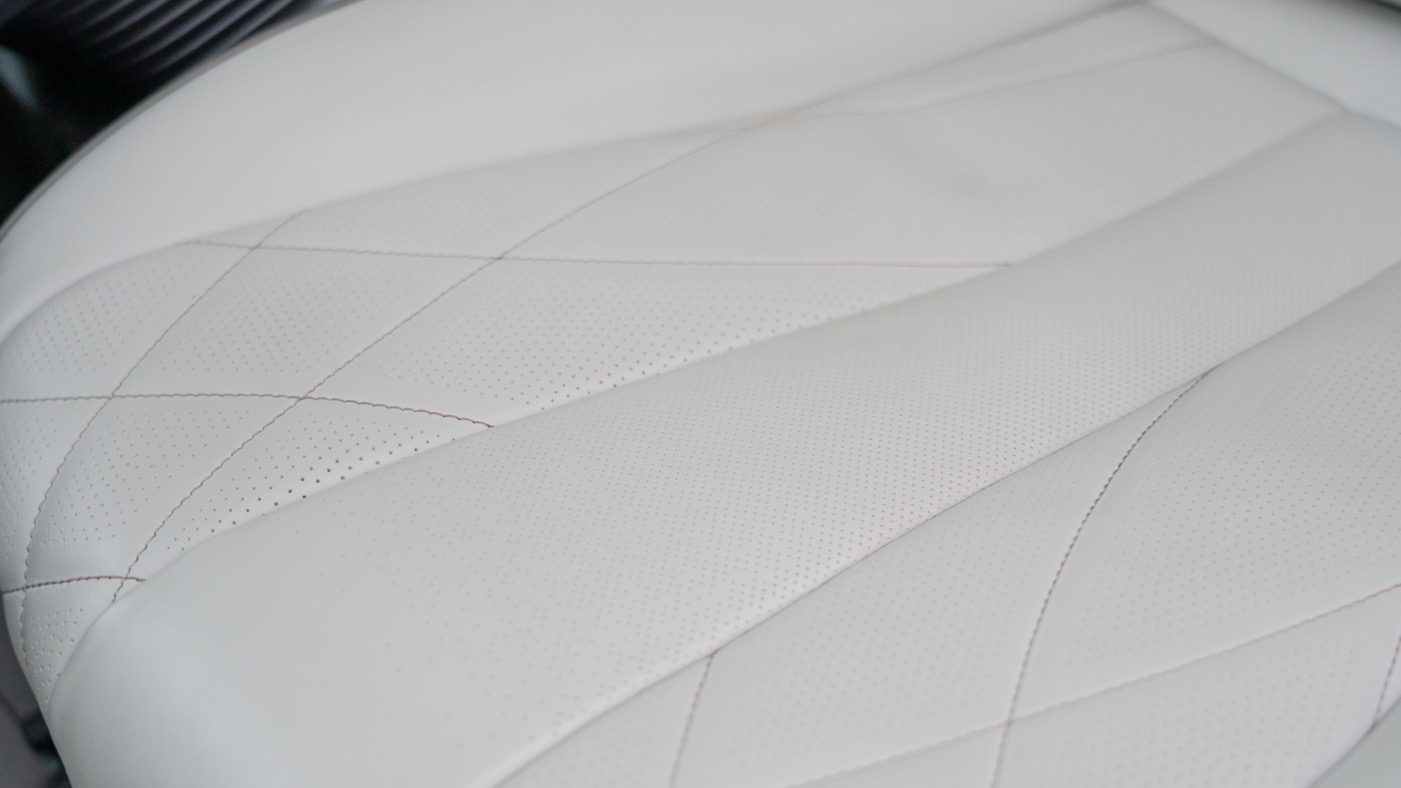 Unfortunately, the driver’s seat is not equipped with a massage function, but only has a lumbar support. The passenger seat does not even have the lumbar support.
Unfortunately, the driver’s seat is not equipped with a massage function, but only has a lumbar support. The passenger seat does not even have the lumbar support.
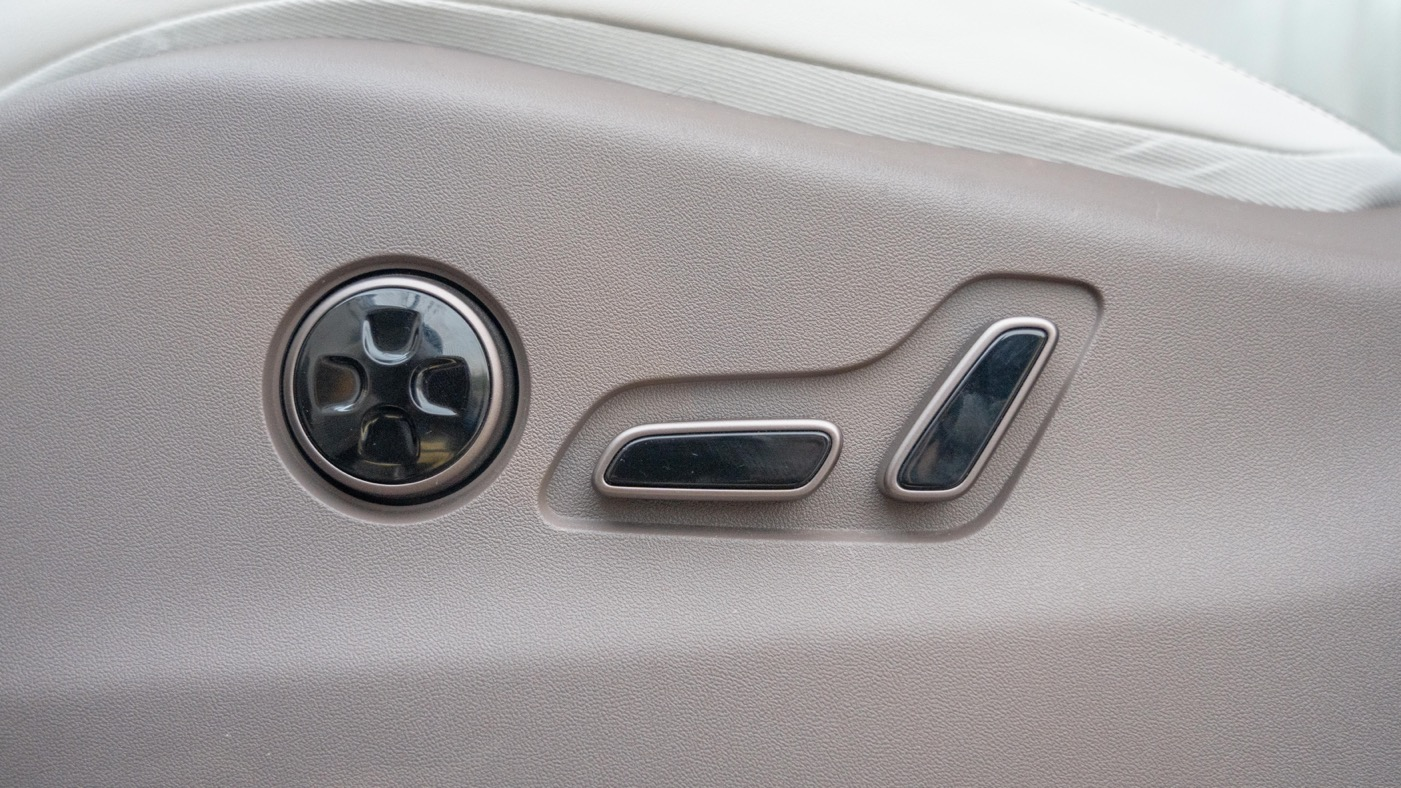
For the space test, I found our company’s largest and heaviest person, 175 cm tall and over 100 kg in weight, Mr. Doraemon, to compare the seating position of the passenger seat with the driver seat. As you can see, the seating position of the DENZA D9 is higher, but there is still enough headroom above the head, about two fists.
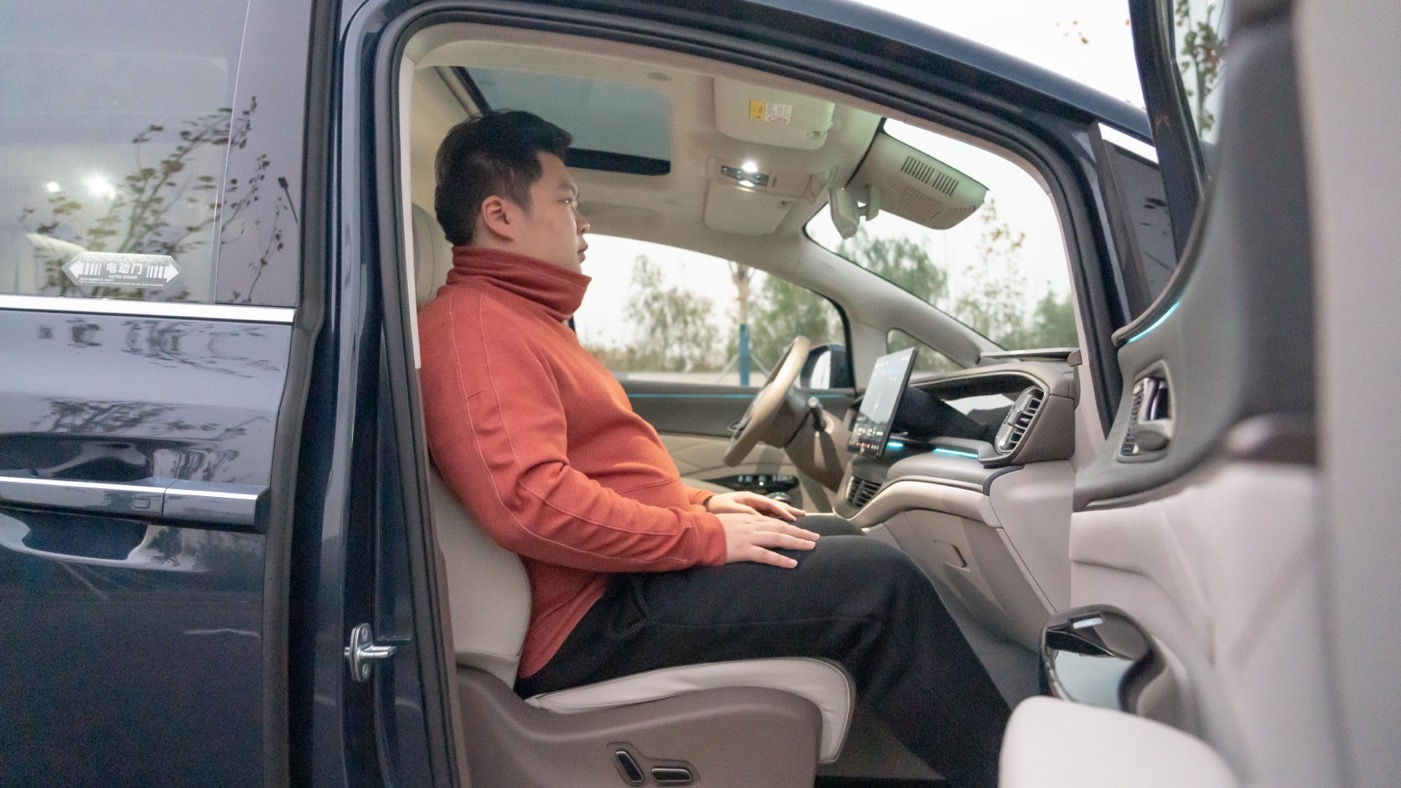

The doors of the car are designed with a framed door and double-sided laminated glass, but the NVH performance is only average.
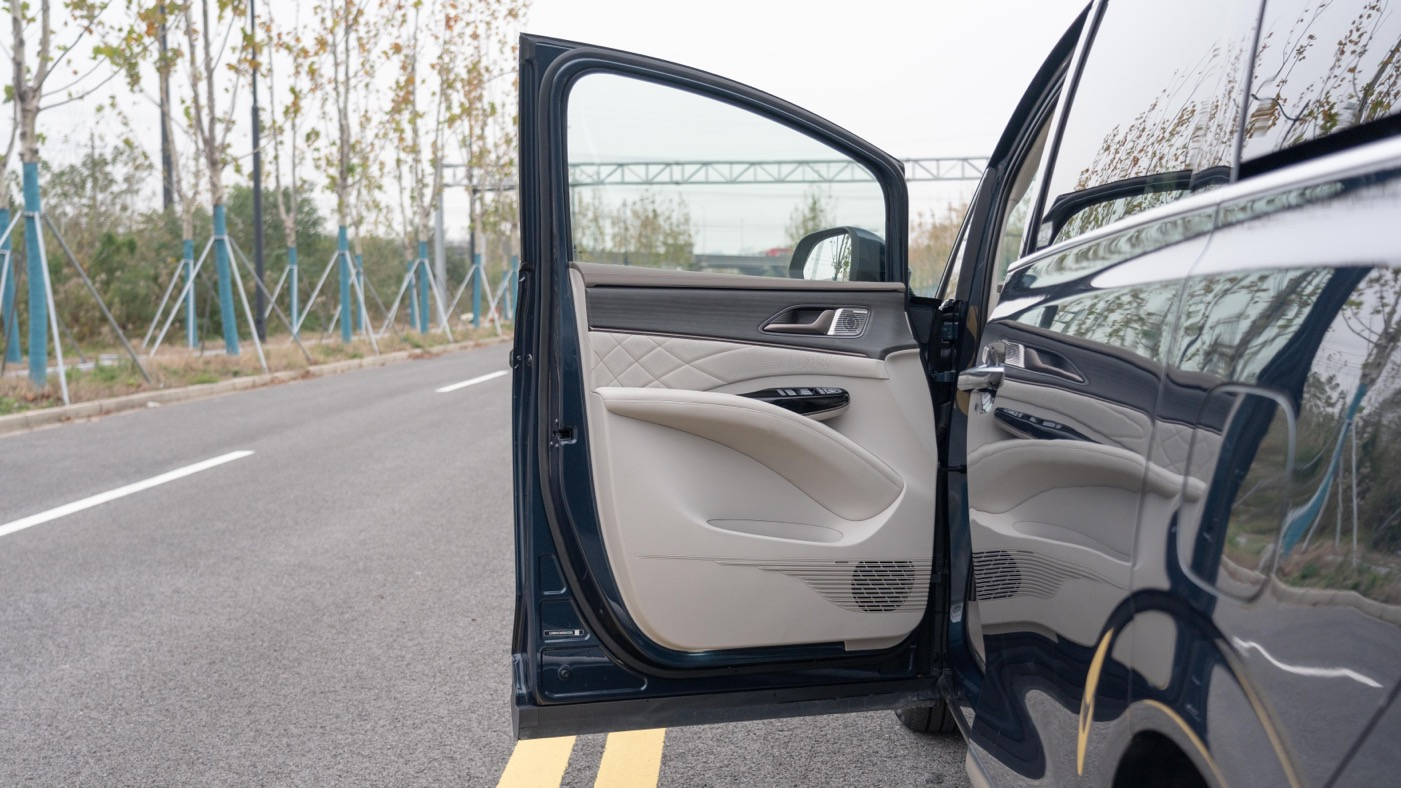
The upper part of the door is decorated with a dark wood grain panel, and the lower part is wrapped in soft leather.
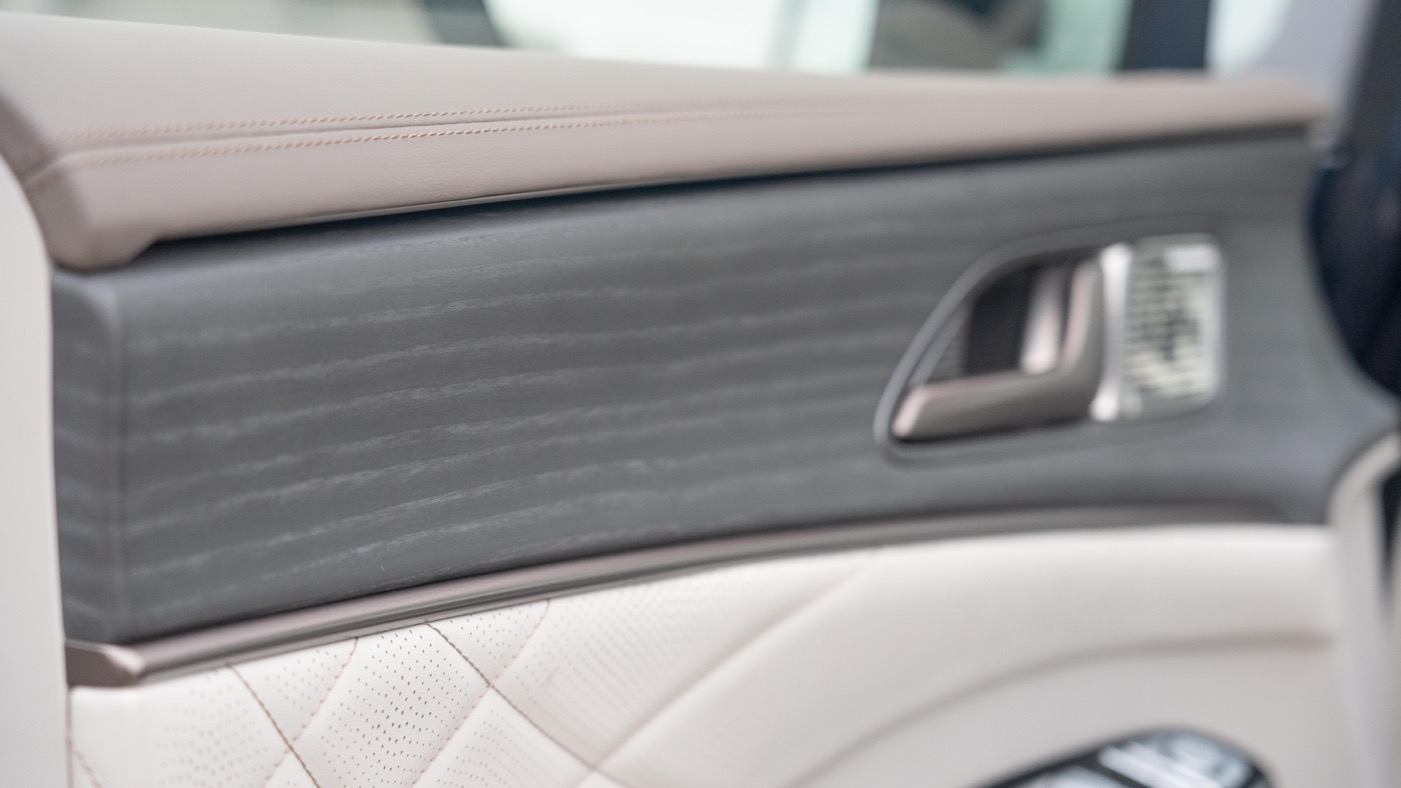

The door unlocking handle is still a conventional design, using brown metal sandblasting. The DENZA D9 uses 14 Dynaudio speakers throughout the car. One of the speakers is located to the right of the handle, but the metal cover feels rough to the touch and needs improvement in details.
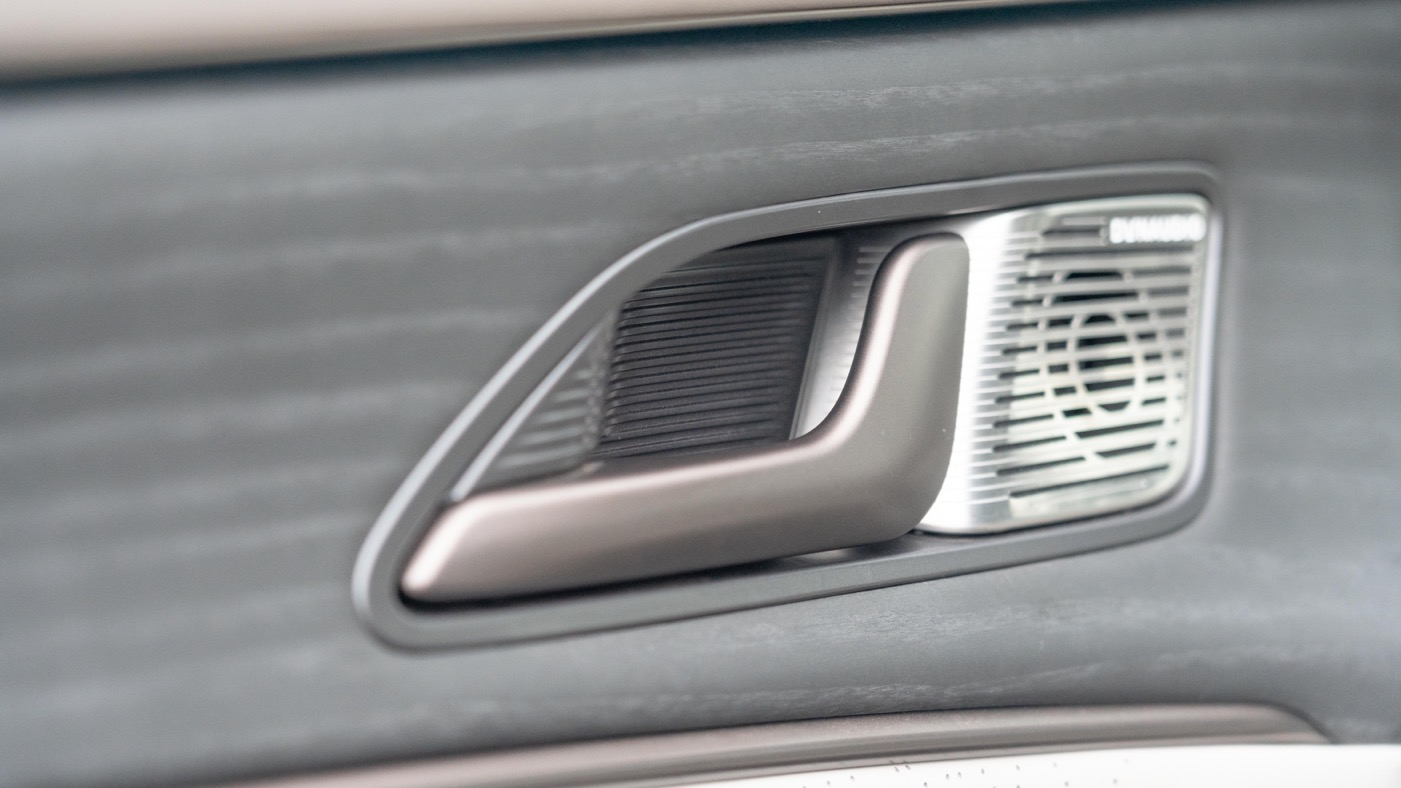
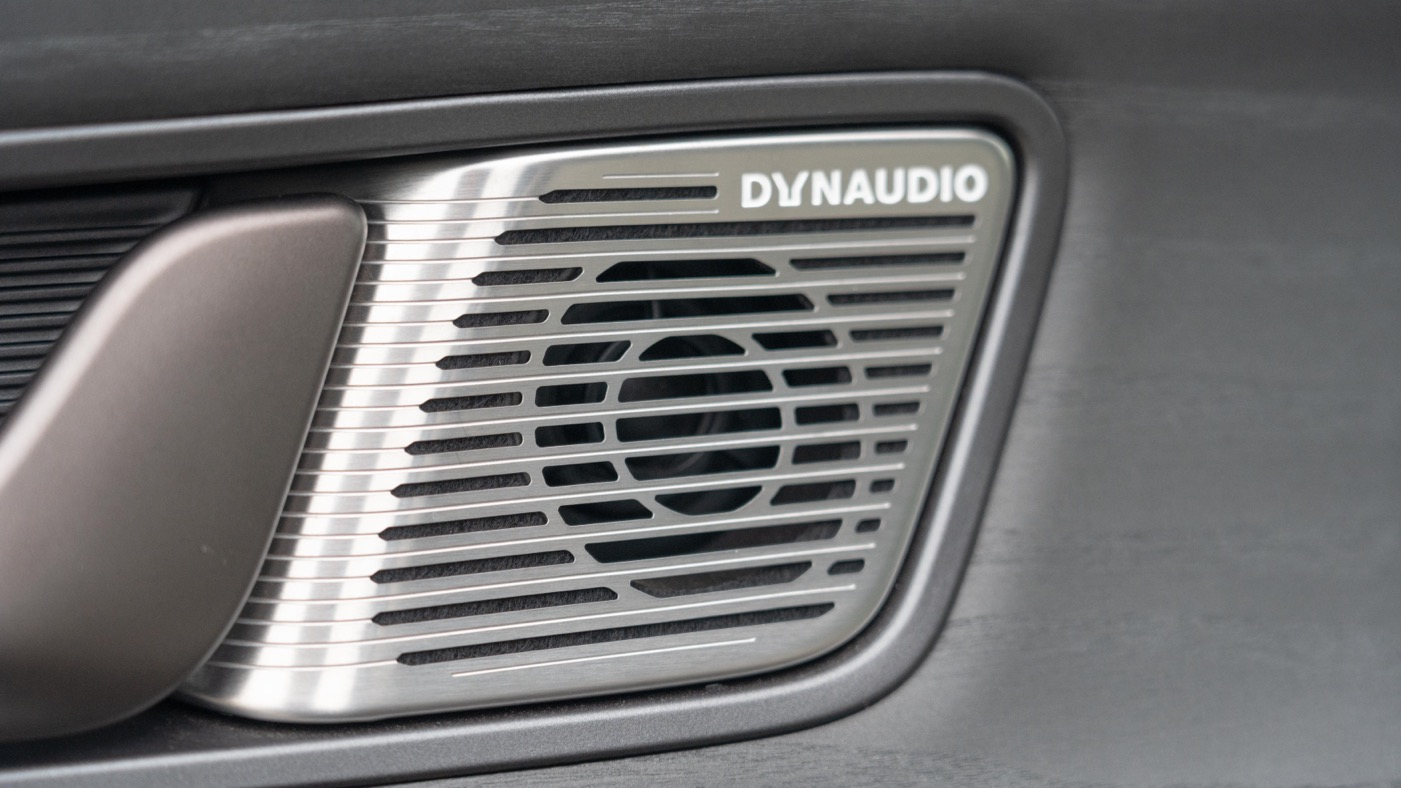 The driver’s door retains most of the physical buttons, making it easy to adjust the rearview mirrors. However, the use of black metallic paint on the door handle means that it will inevitably accumulate a lot of fingerprints and scratches in the future.
The driver’s door retains most of the physical buttons, making it easy to adjust the rearview mirrors. However, the use of black metallic paint on the door handle means that it will inevitably accumulate a lot of fingerprints and scratches in the future.
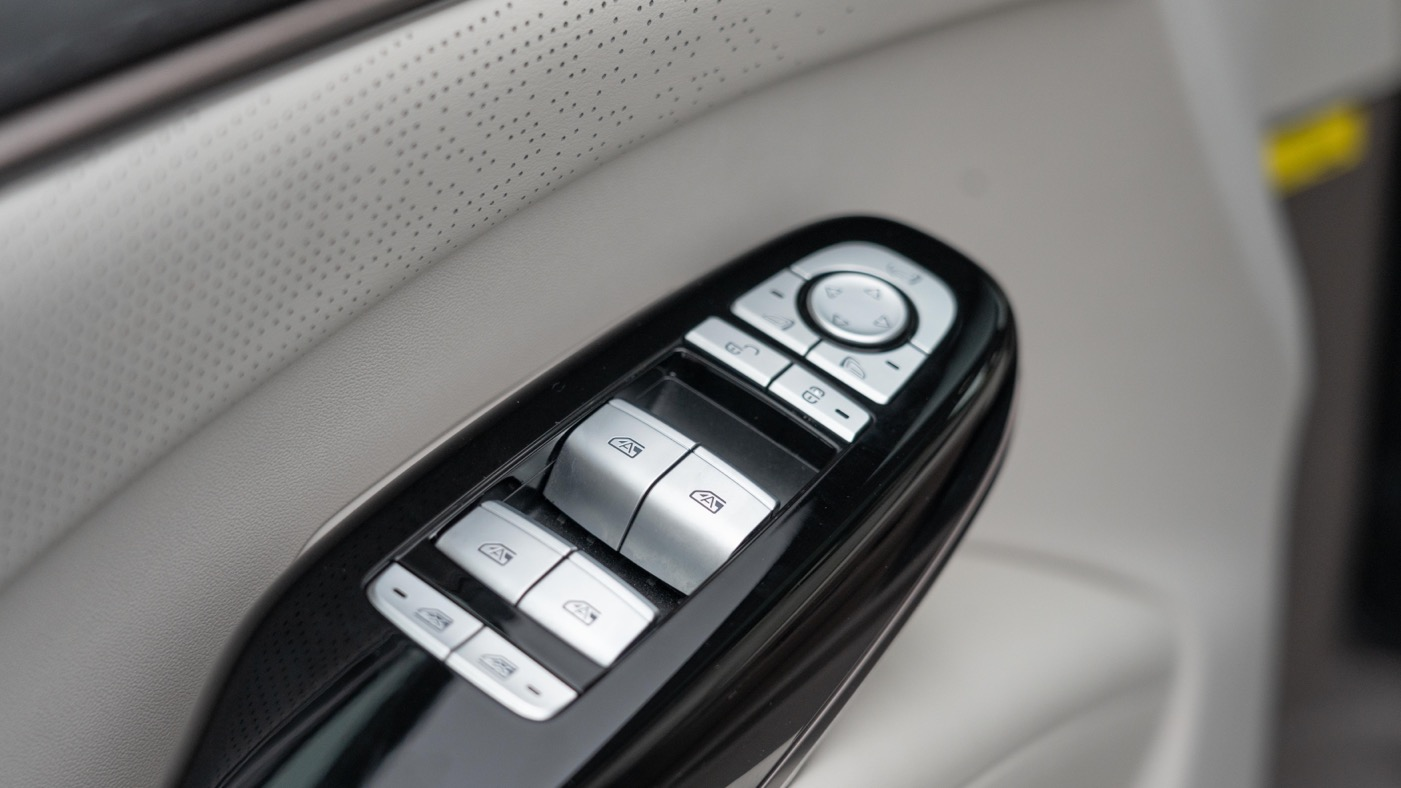
The storage space on the door panel is large enough, with a dedicated cup holder in the front that is slightly recessed compared to the conventional door panel storage space. However, since the seating position of this car is relatively high, reaching for the cup in that position requires a slight stoop. In addition to the cup holder, the remaining space can hold at least two bottles of water.
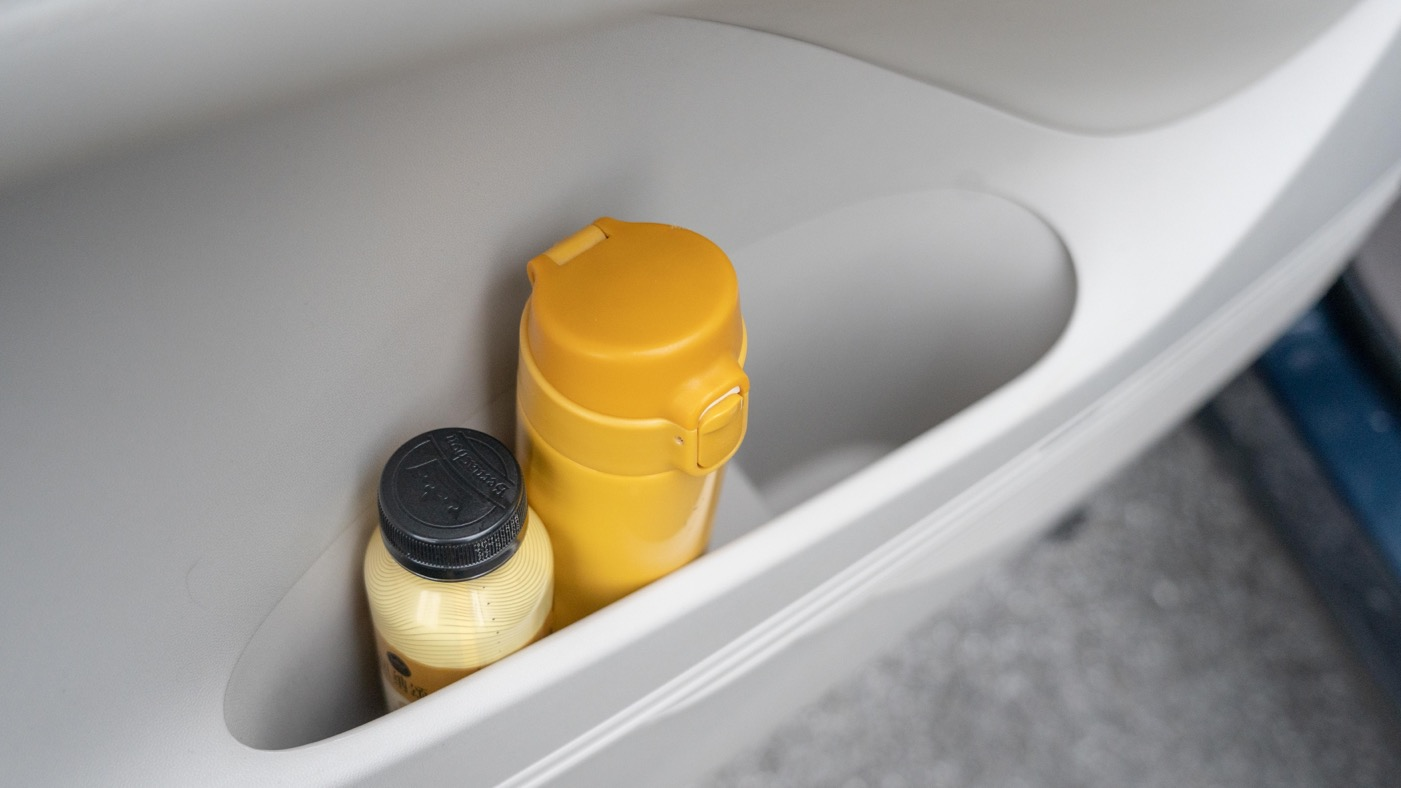
As previously mentioned, the steering wheel has a full grip, but the hand feel of the buttons on both sides is average.
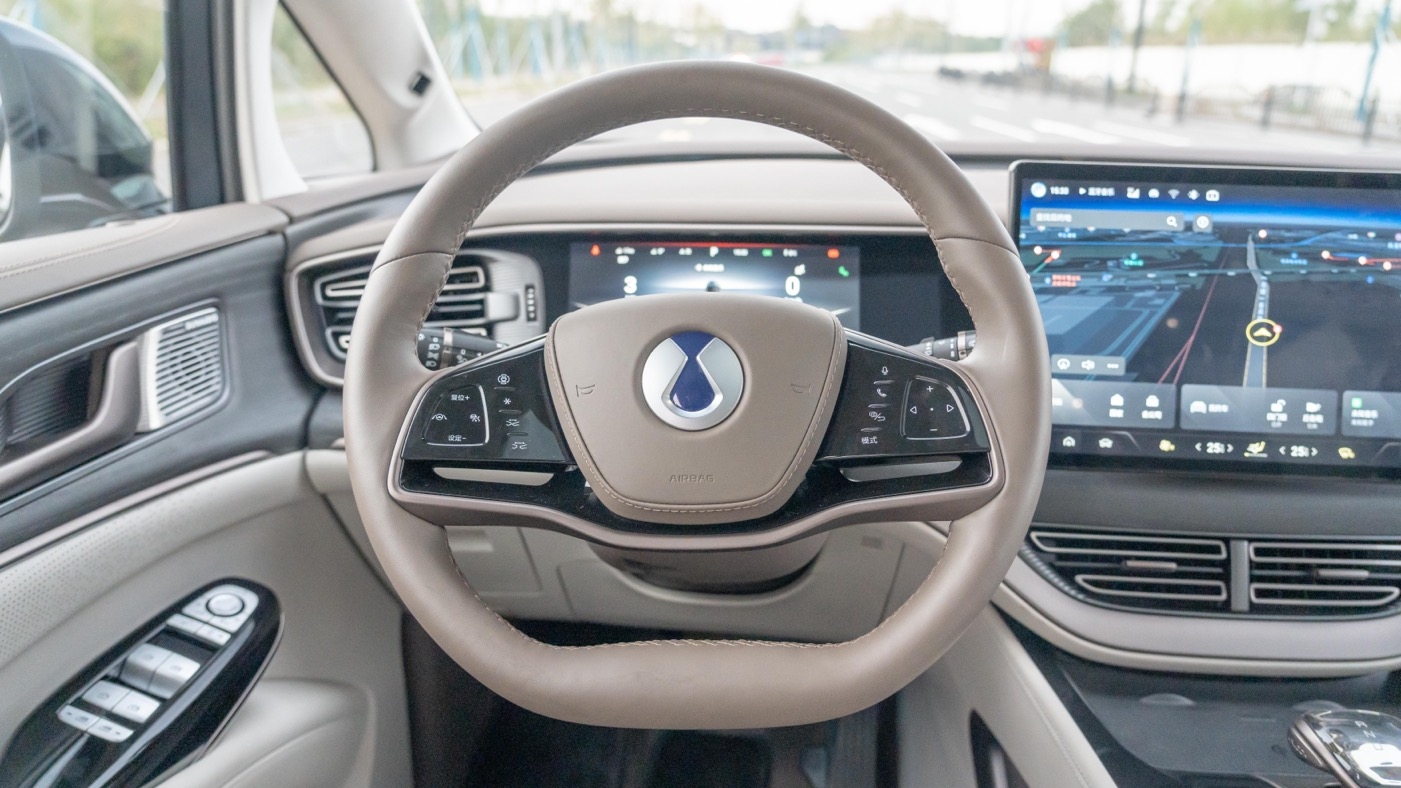
The left-side buttons are for auxiliary driving-related functions, 360-degree imaging, and custom star buttons.
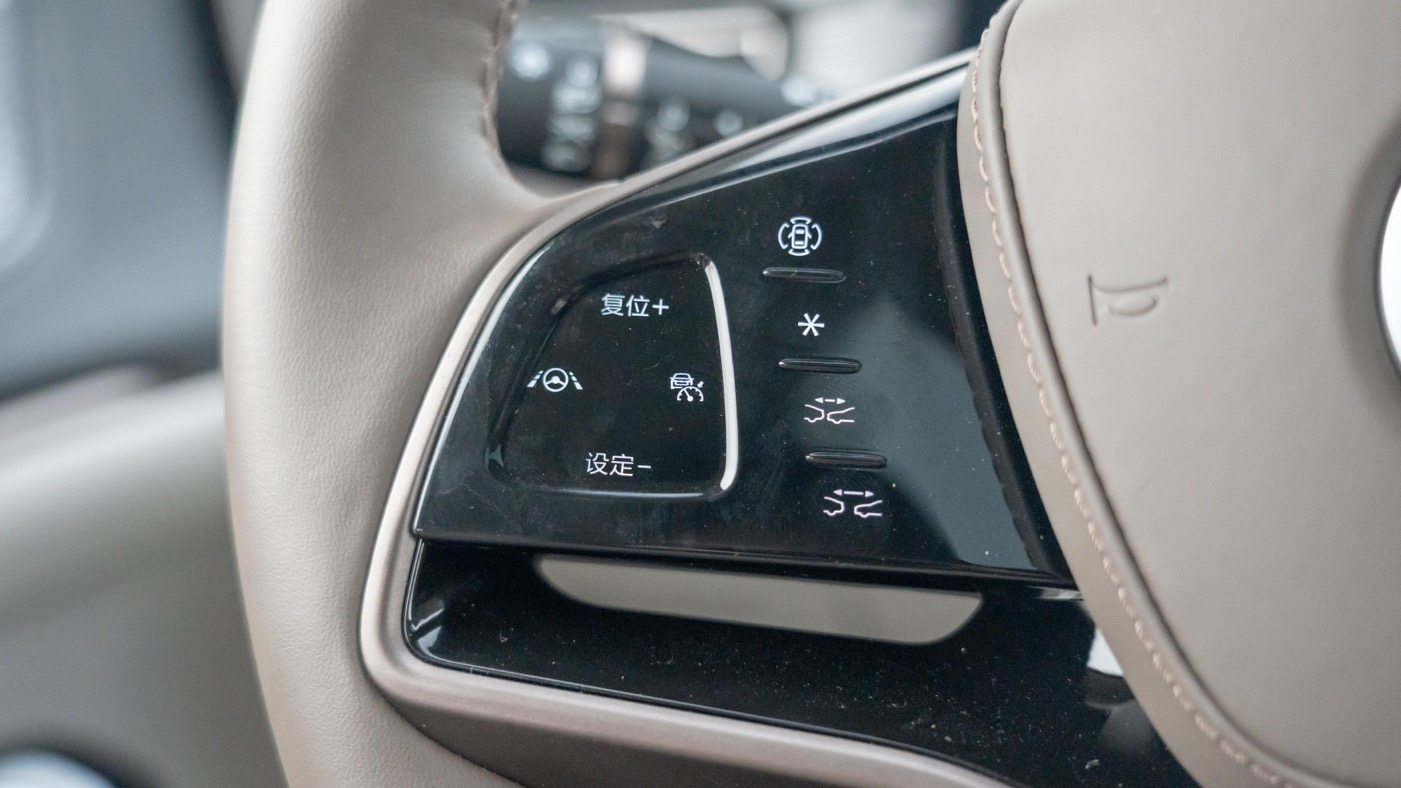
On the right side of the steering wheel are the voice command button, the call answer/end button, the instrument panel display switch button, and the multimedia control button.
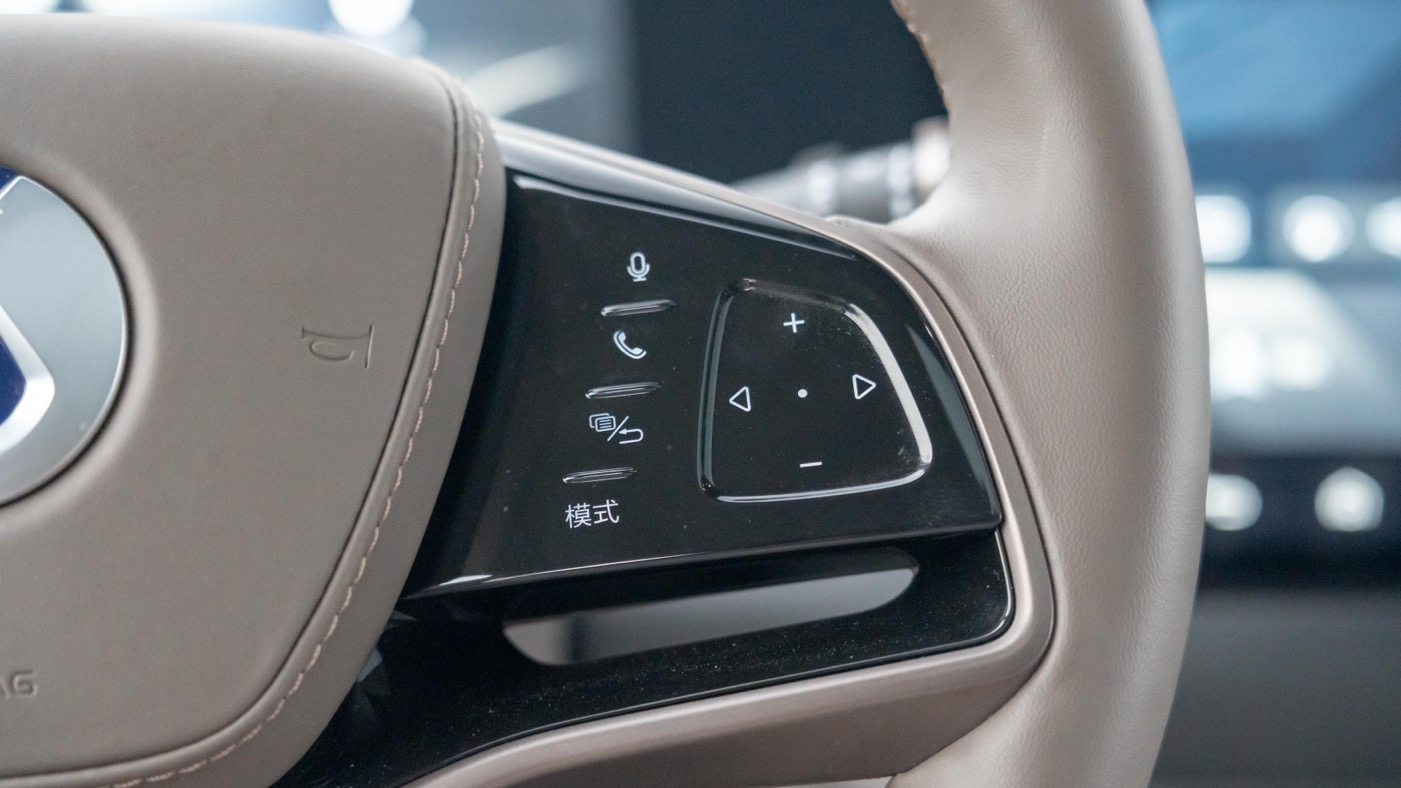
Speaking of the voice command of the NIO ES8, the recognition rate and response speed are both very good, and most daily operations can be done through voice commands. The voice experience is comparable to that of new energy vehicle models.
The dashboard displays a lot of information, and the display switch button can be used to show energy consumption, navigation information, and road visualization information.
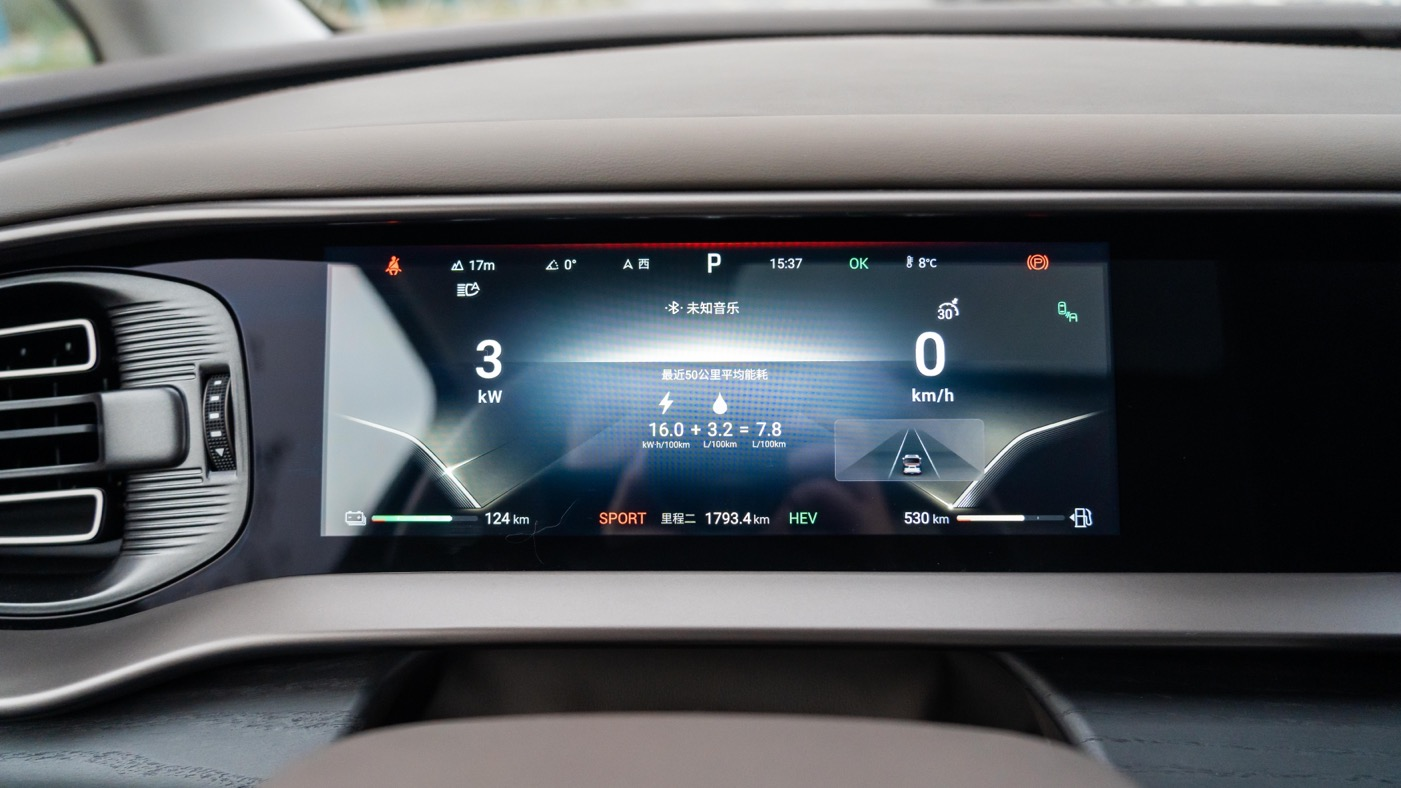
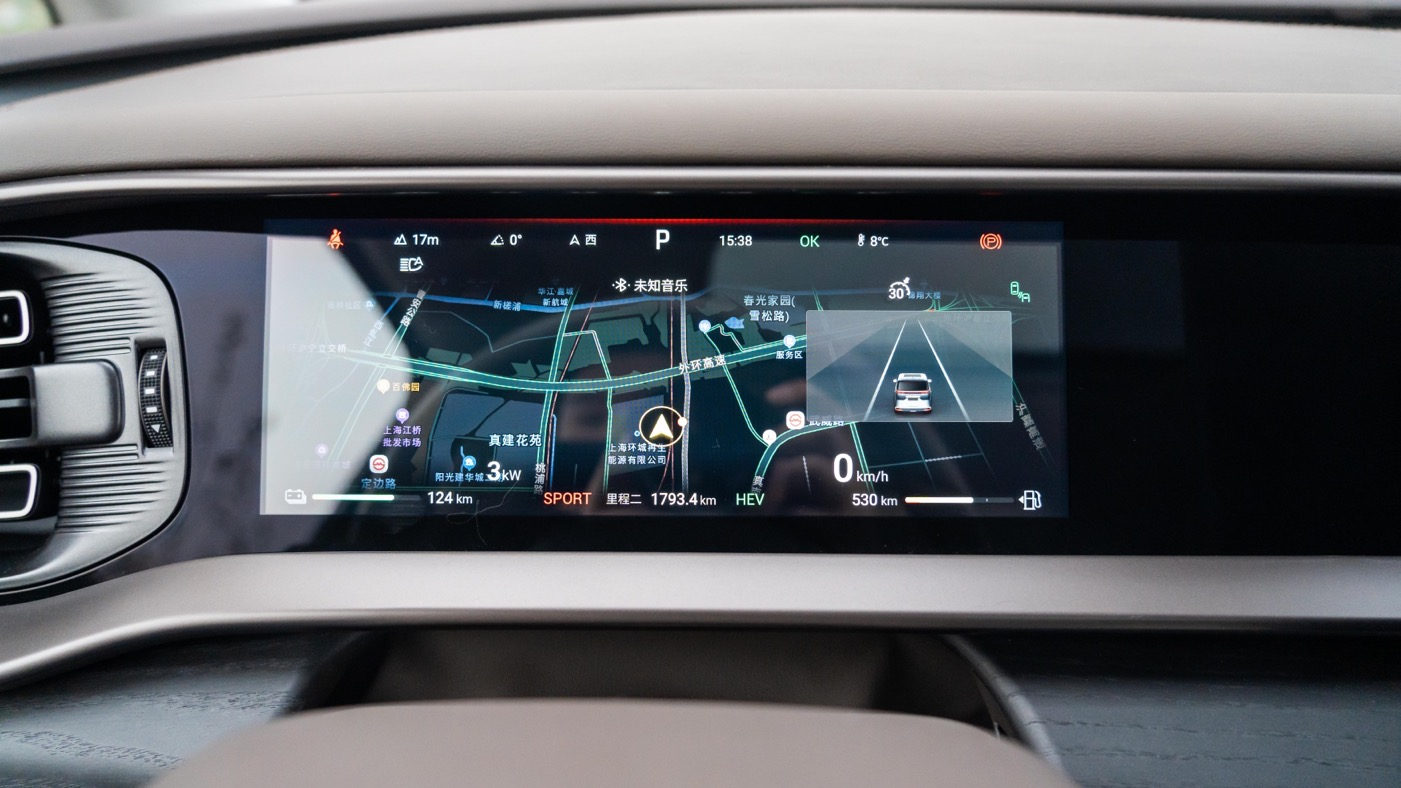 #
#
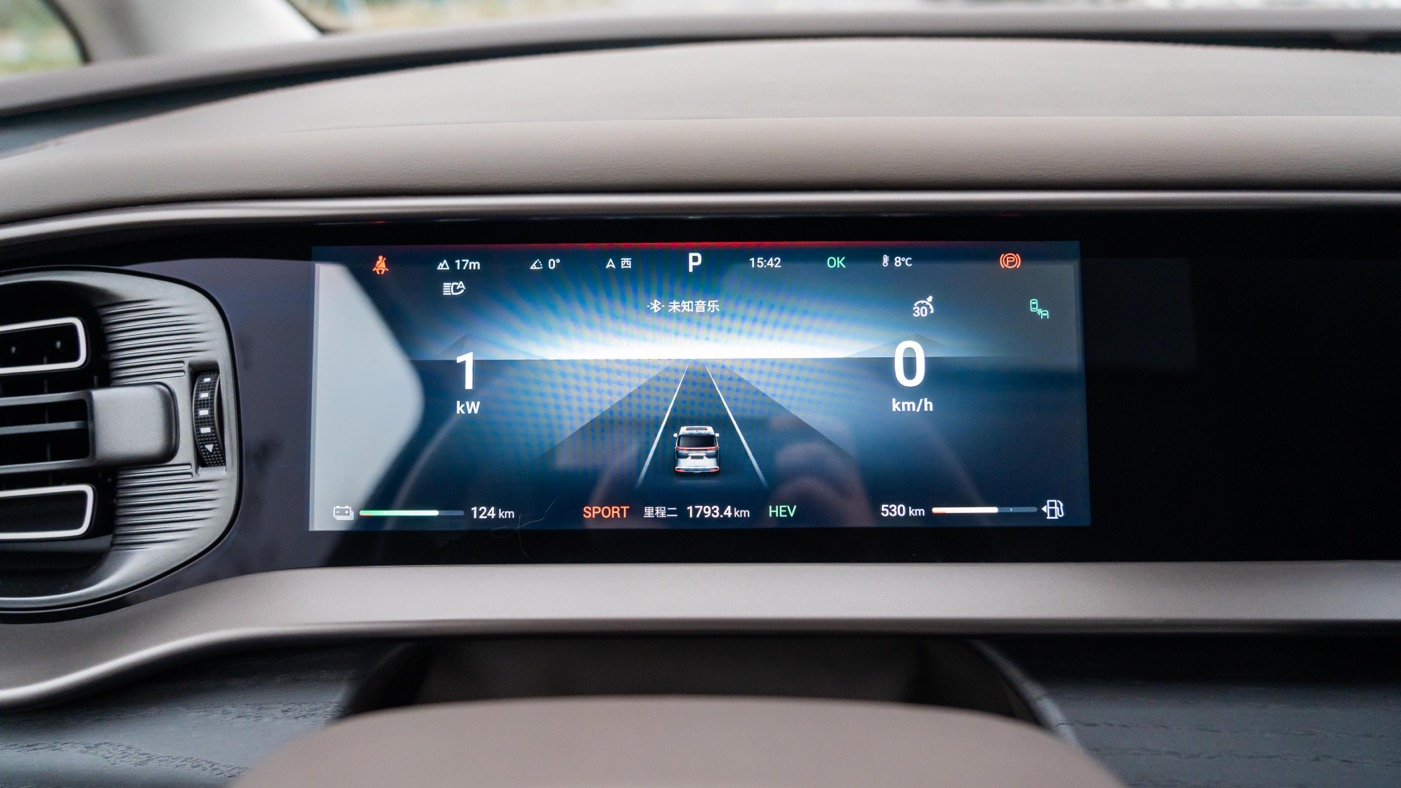
However, during driving, we found that the DENZA D9’s road visualization system can only display the vehicles in the current lane, and cannot display the vehicles in the adjacent lane.
Our top-of-the-line hybrid model is equipped with a HUD function. It was found that in addition to displaying the speed, it can also display navigation information after navigation is turned on. Unfortunately, the HUD cannot display information such as Auto Hold, and you still need to lower your head to look at the instrument screen to confirm.
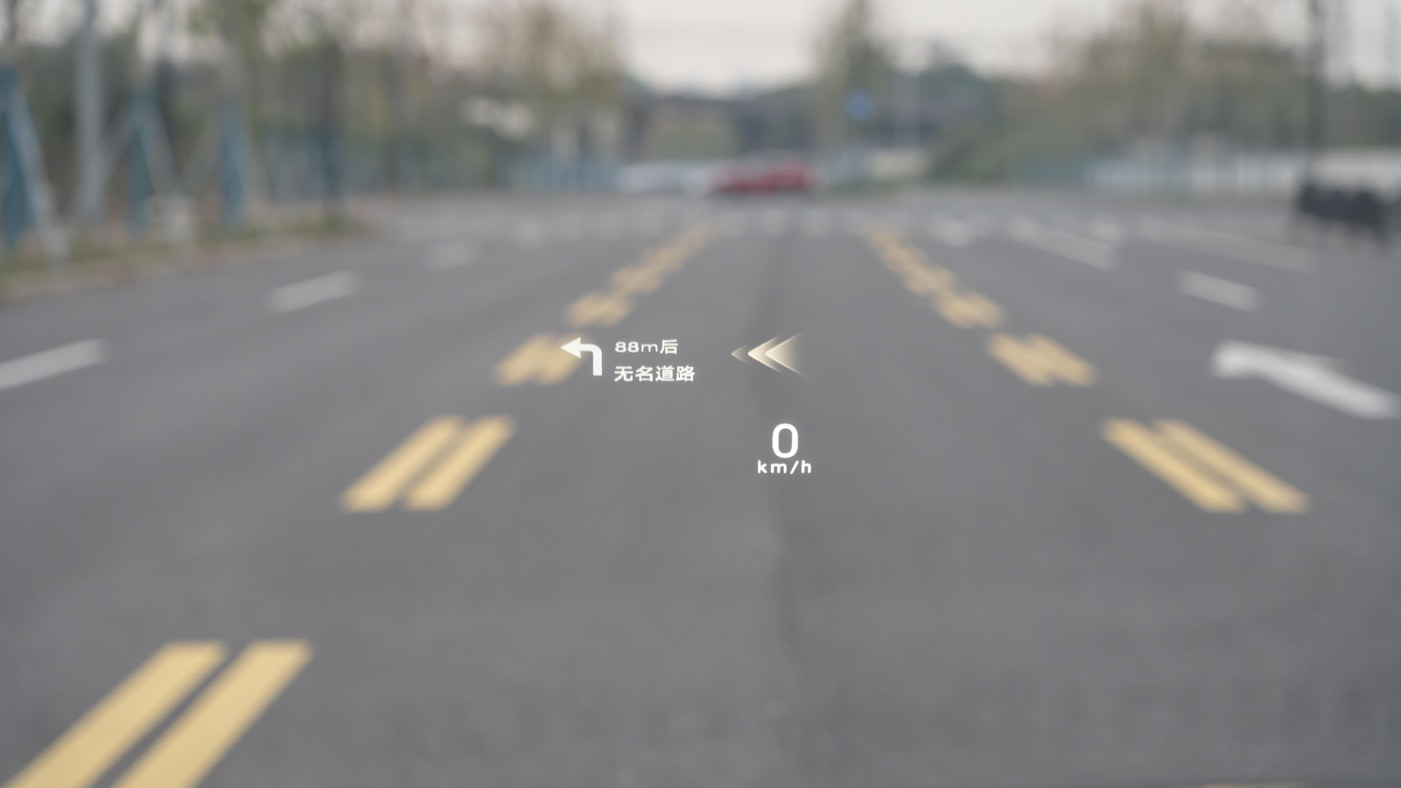
The gear lever on both sides of the steering wheel is the same as most fuel vehicles. The gear lever on the left side is related to the lighting control function, and the gear lever on the right side is related to the wiper control function.
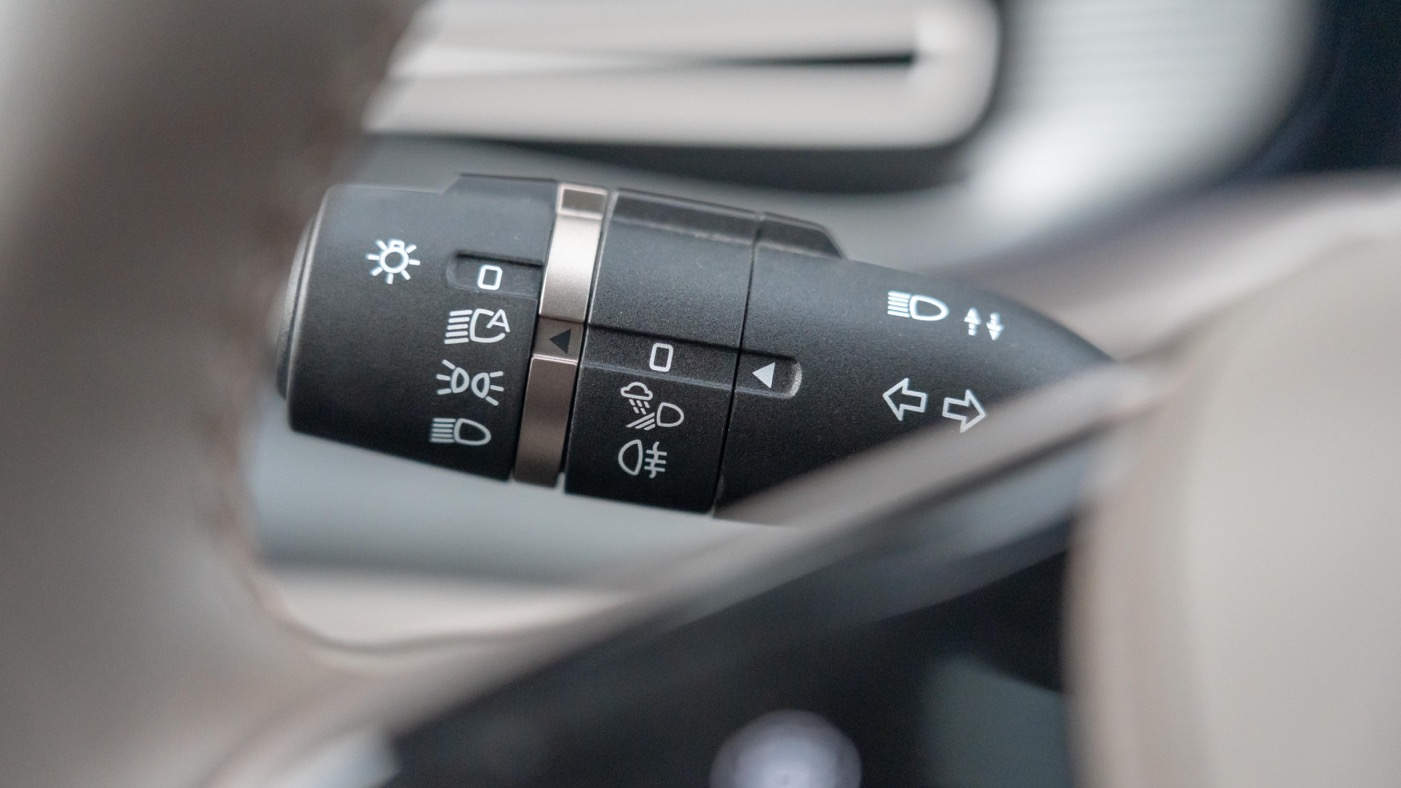
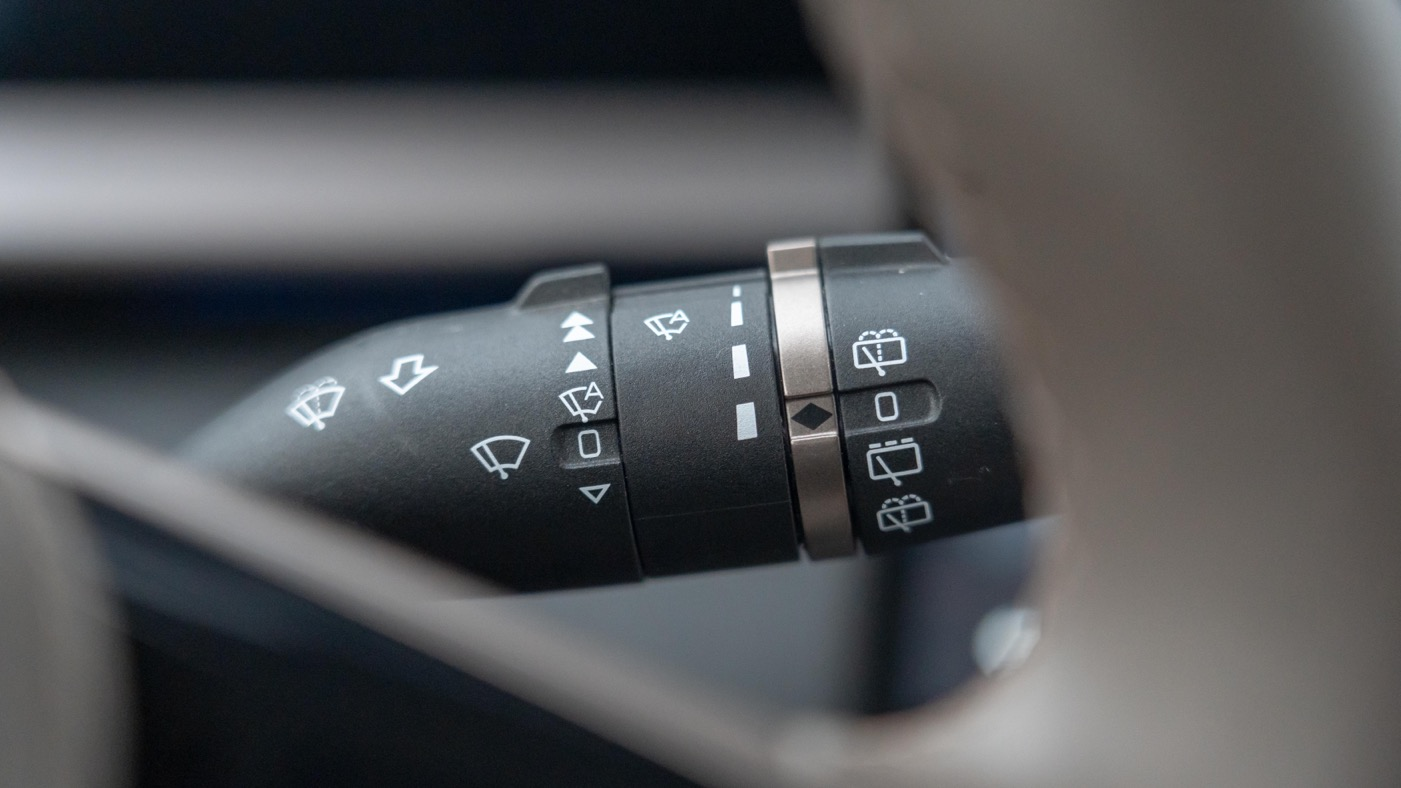
The main driver, central control area, and passenger’s air outlets all use a physical adjustment design, which is more convenient to adjust the air conditioning wind direction during driving.
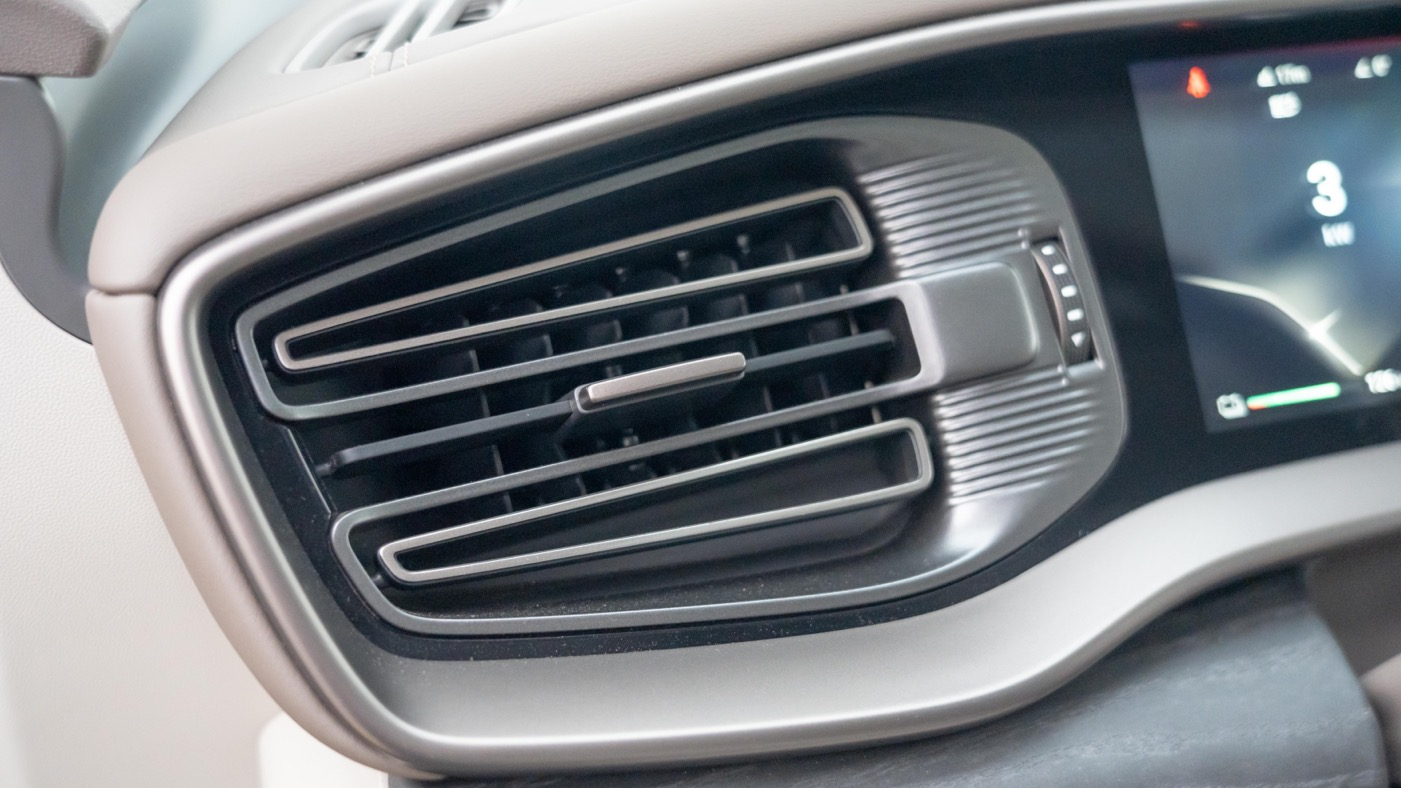
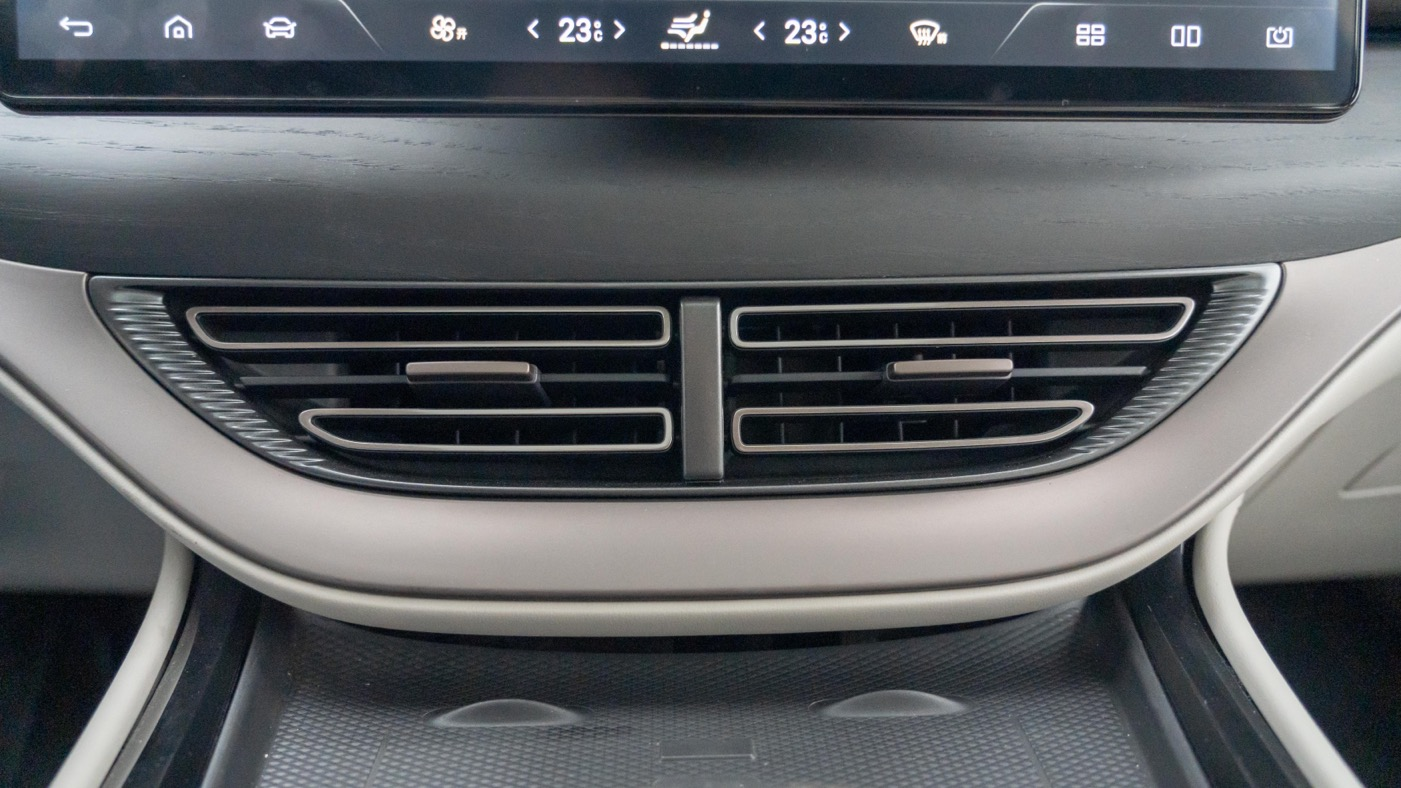
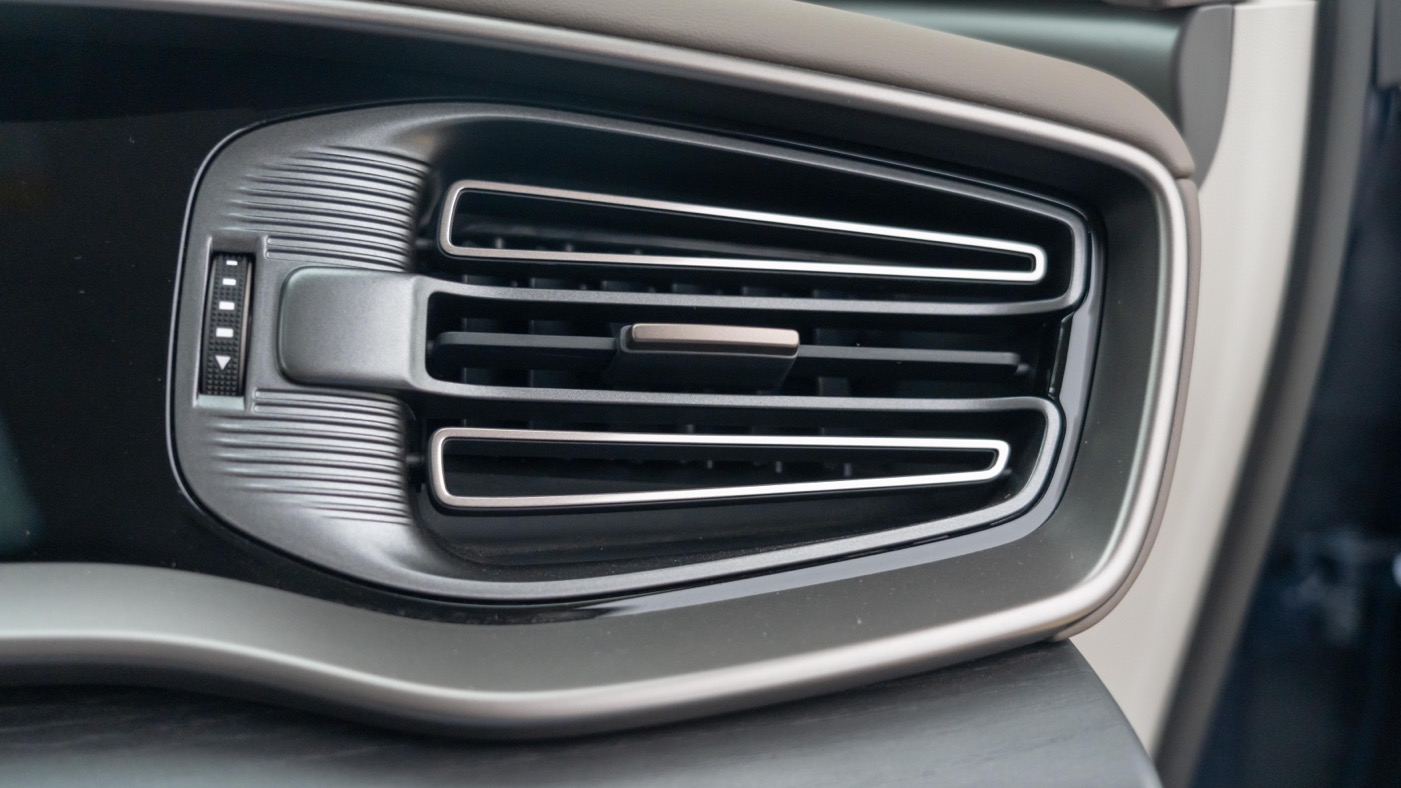
There is a small storage box below the lower left of the steering wheel where you can place some small items. The handle for opening the front hood is located below it.


The center console area still features the black piano paint that I don’t like, which is prone to fingerprint scratches after time. The gear shift lever uses a crystal shift knob design, which adds a bit of luxury.
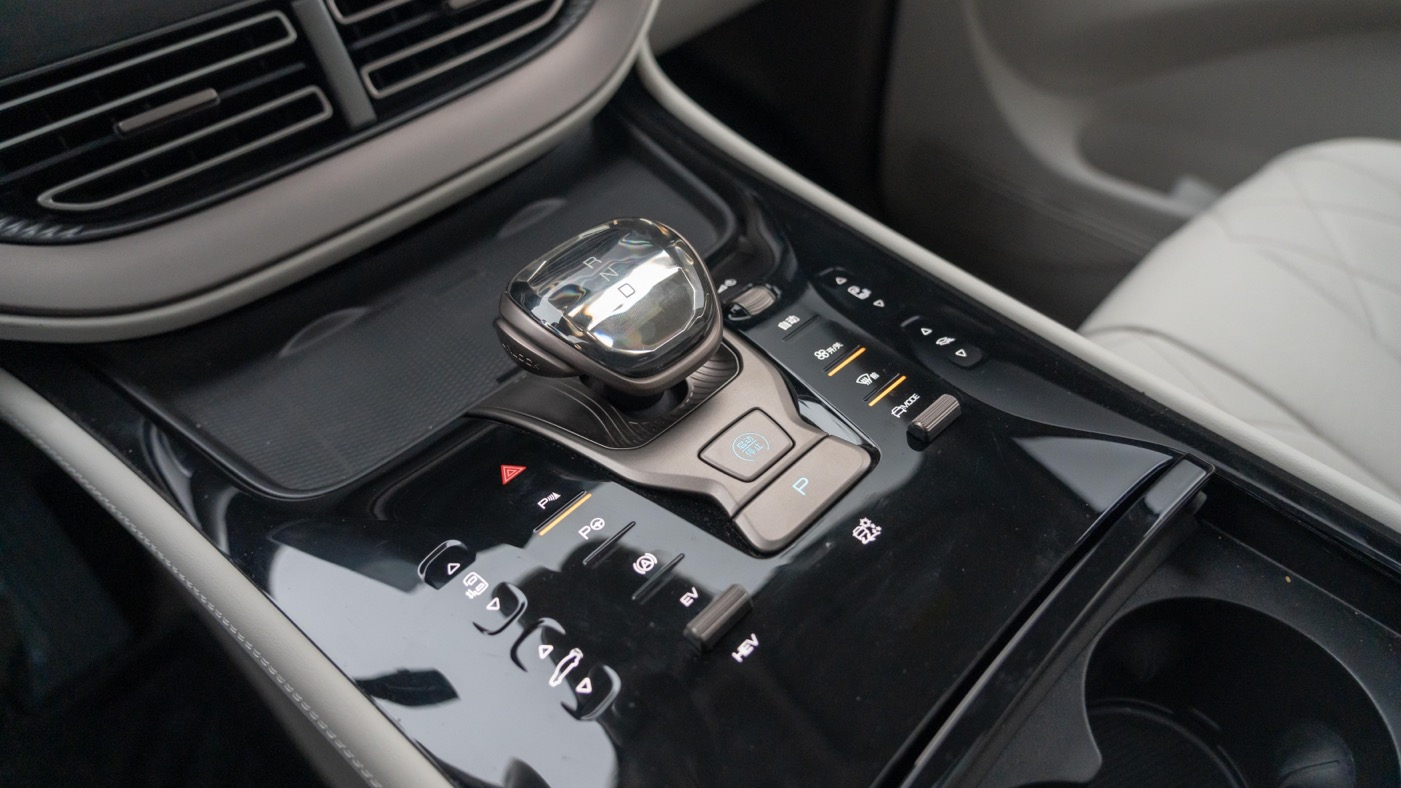

The left side of the gear shift lever has buttons for the sliding door, trunk lid, emergency flasher, electronic parking brake, automatic parking and pure electric hybrid mode switch lever.
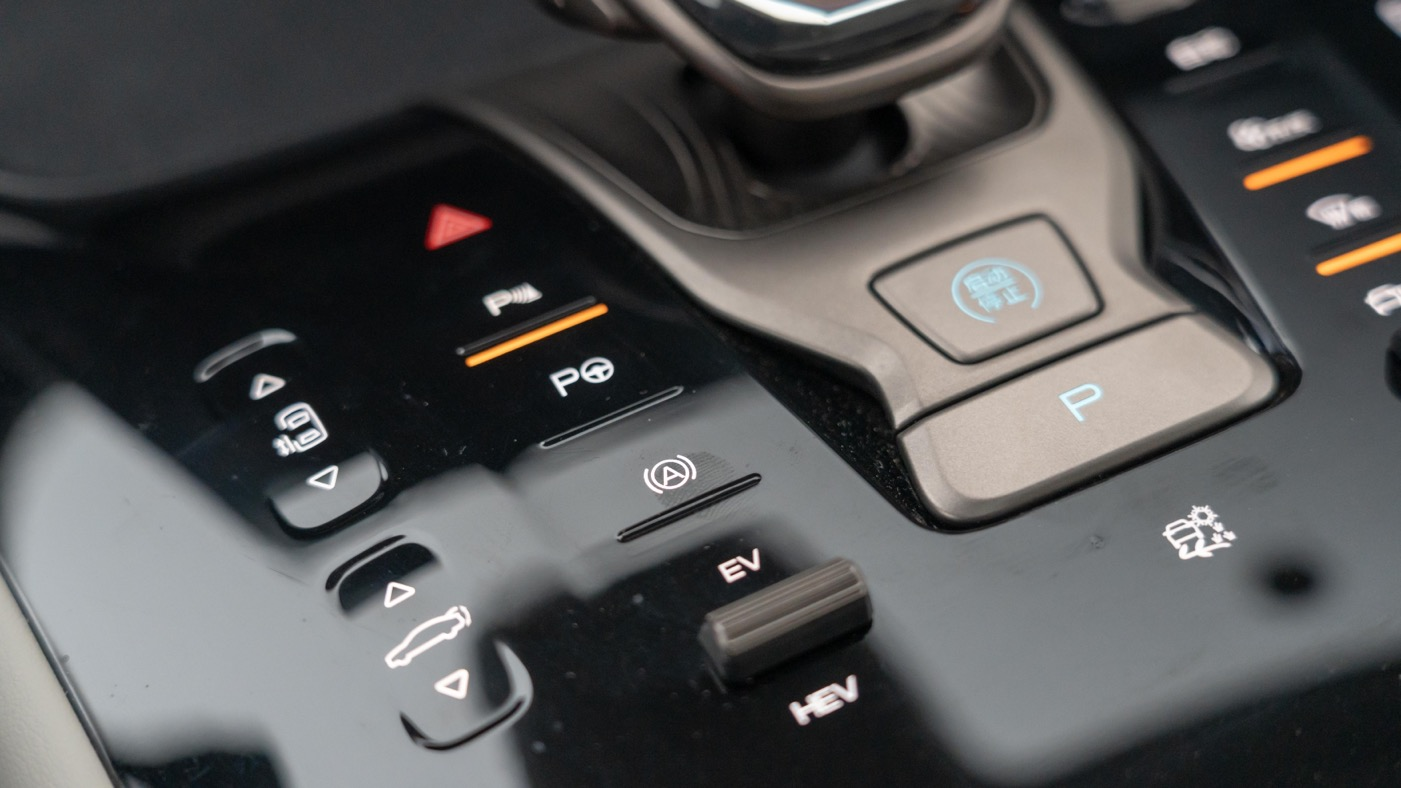
The right side of the gear shift lever has buttons for multimedia volume control, auto air conditioning, air conditioning switch, windshield defrost button, driving mode switch lever, sliding door on the right side of the second row, and intelligent magic cube switch.
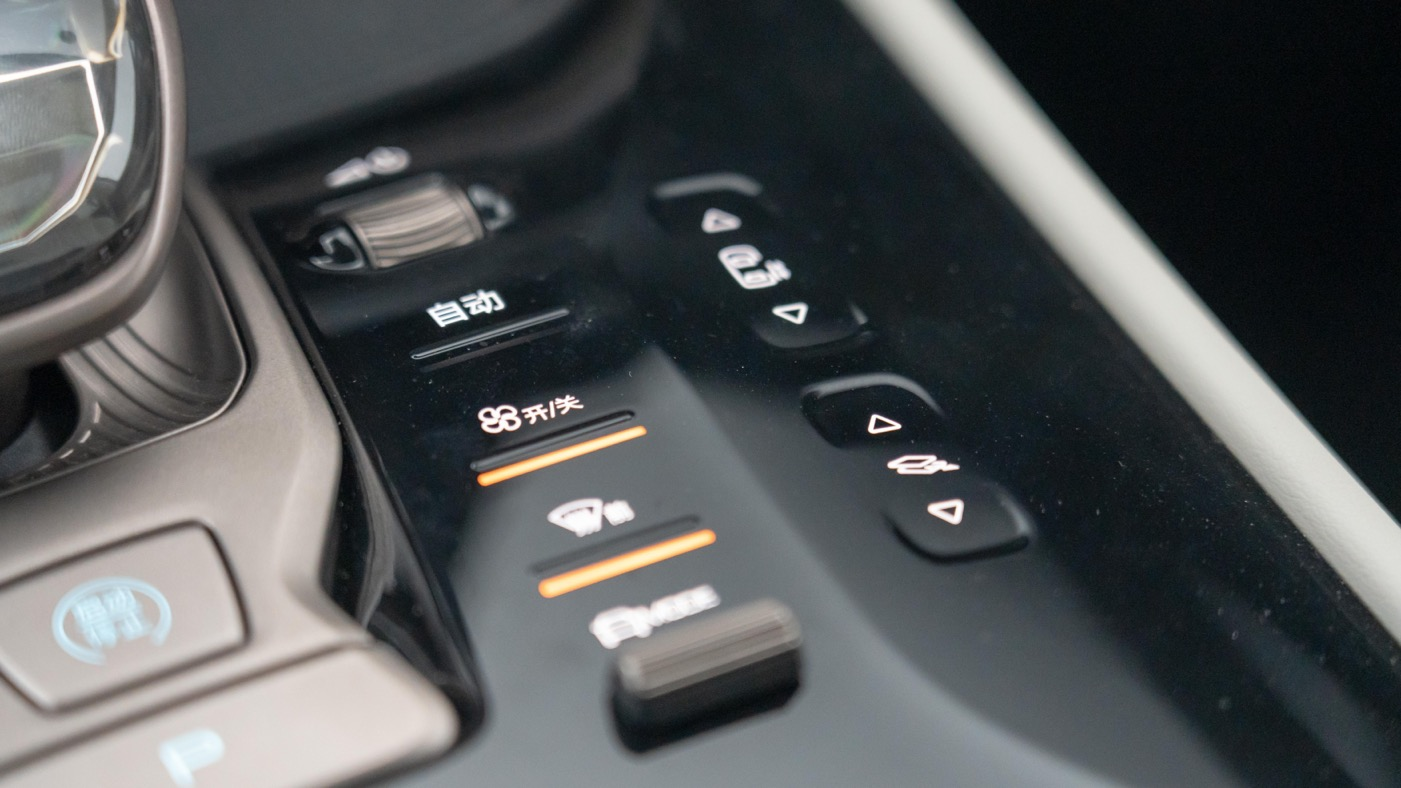
There is only one wireless charging position in front of the gear shift lever, but it supports up to 50W Qi protocol wireless charging. Additionally, a vent is equipped here, just like in the Lexus LS model, to prevent the phone from overheating during the charging process and failing to charge.
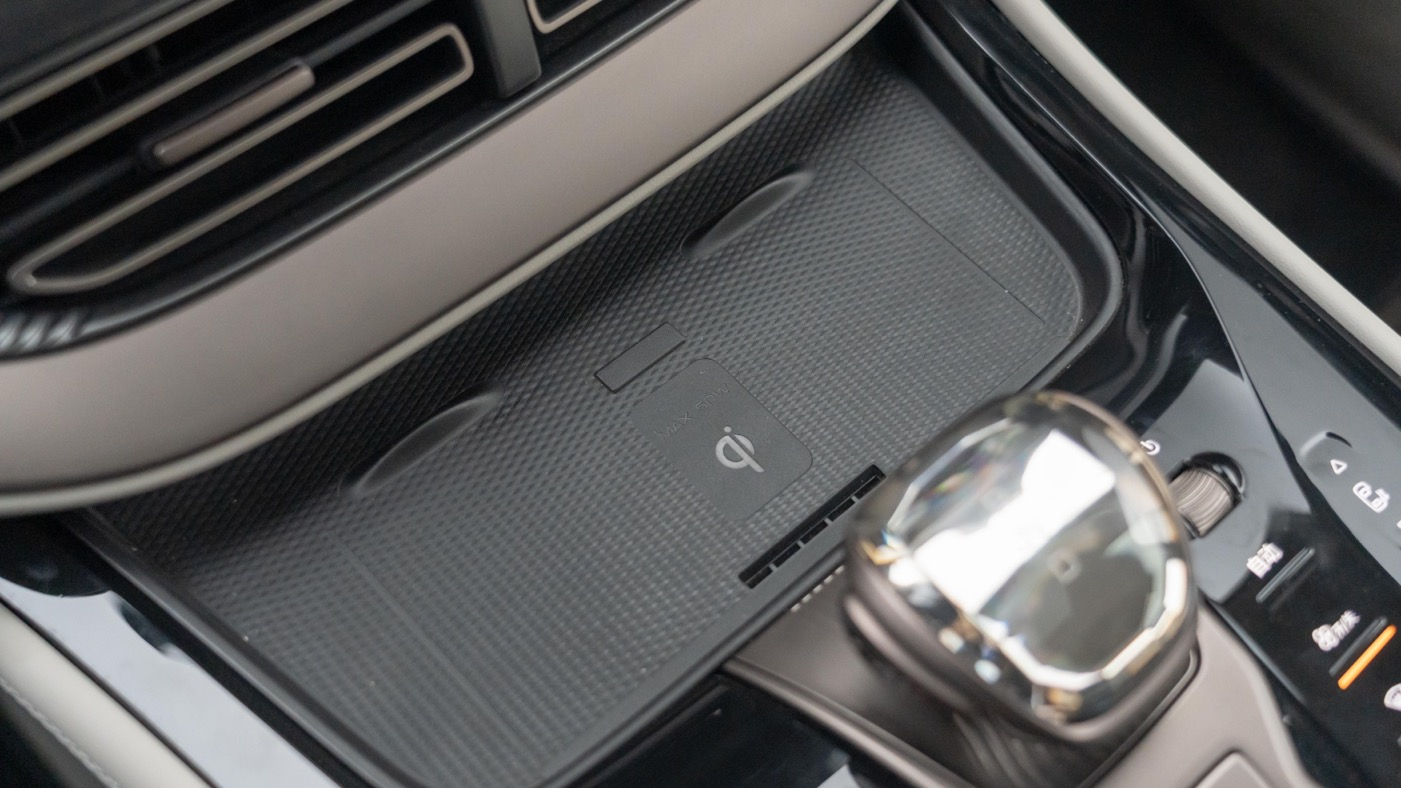
The limiter greatly reduces the occurrence of situations where the phone is not properly positioned and not charging. When charging starts, the center screen will display an animation to indicate that charging has begun. Actual charging speed is impressive.
There is a black piano paint protective cover behind the gear lever, which, when opened, reveals two cup holders inside.

Due to the storage space of the Intelligent Magic Cube, the interior space of the front central armrest box is small, and it can only hold some documents or receipts.
There are two cup holders at the end of the armrest box’s black cover for use by second-row passengers.
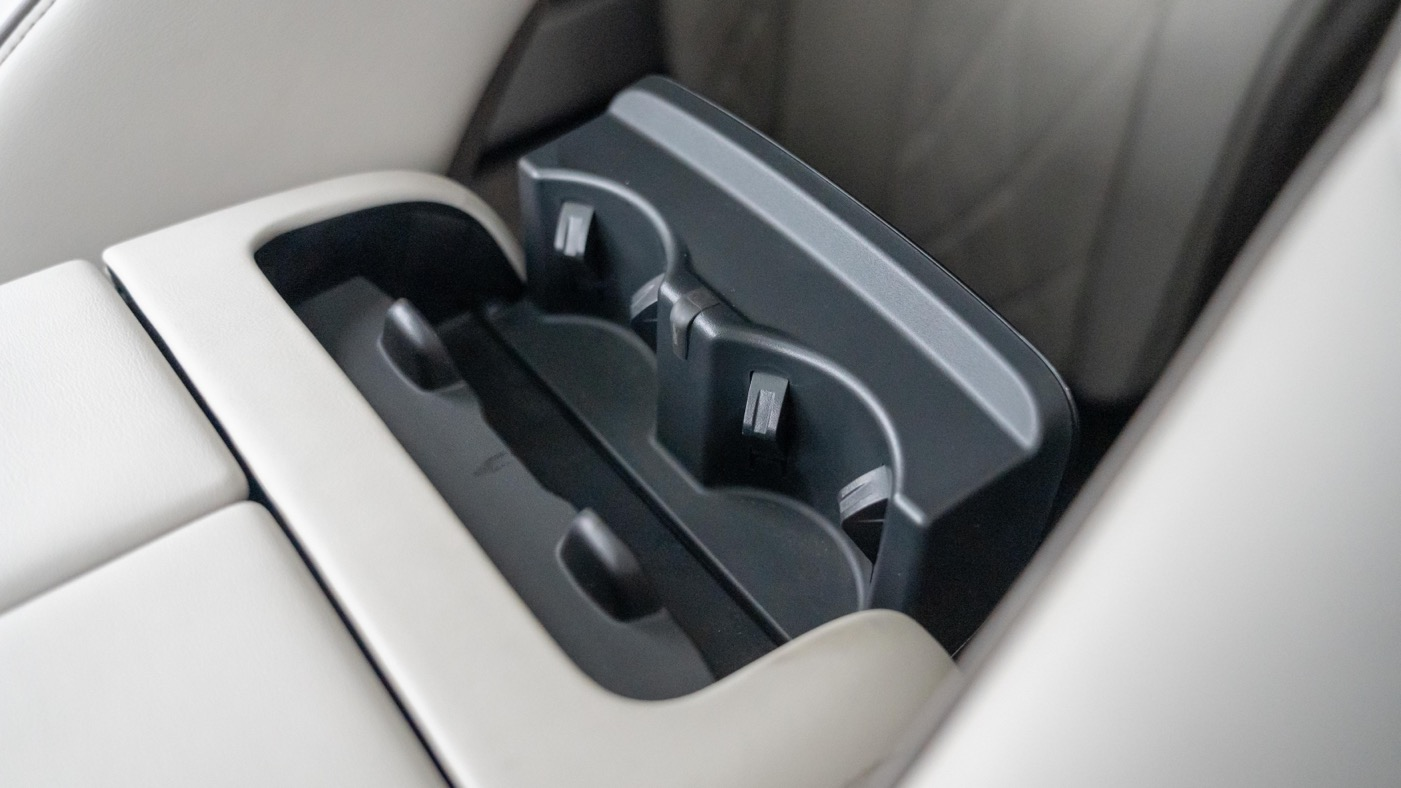
There is a hollowed-out area below the center armrest that can hold some small items, such as men’s messenger bags or women’s high heels.
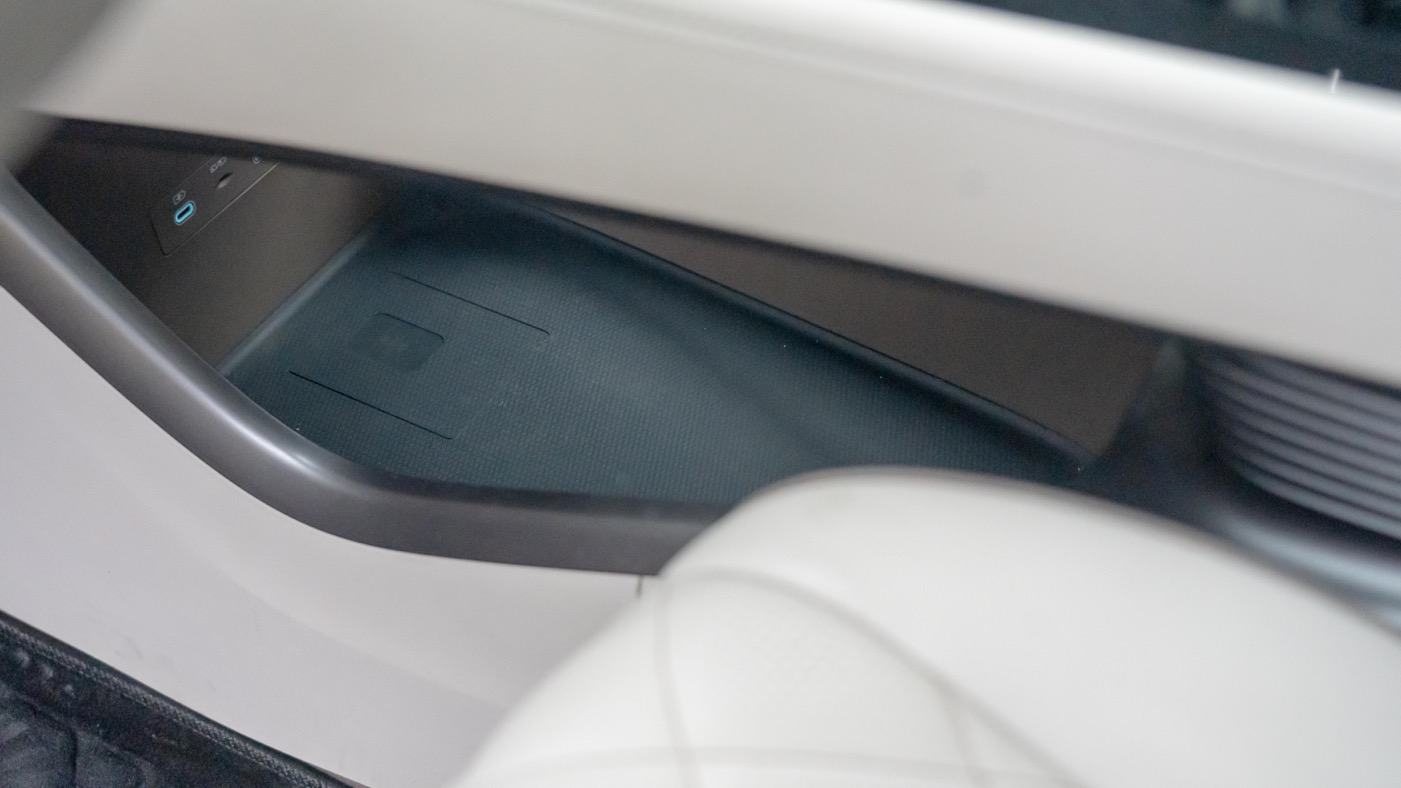
From left to right in the front part of the hollowed-out area are the Type C fast charging interface, the storage card slot for the driving recorder, the Type A interface for data transmission, and a 12 V maximum 120 W car fast charging interface.
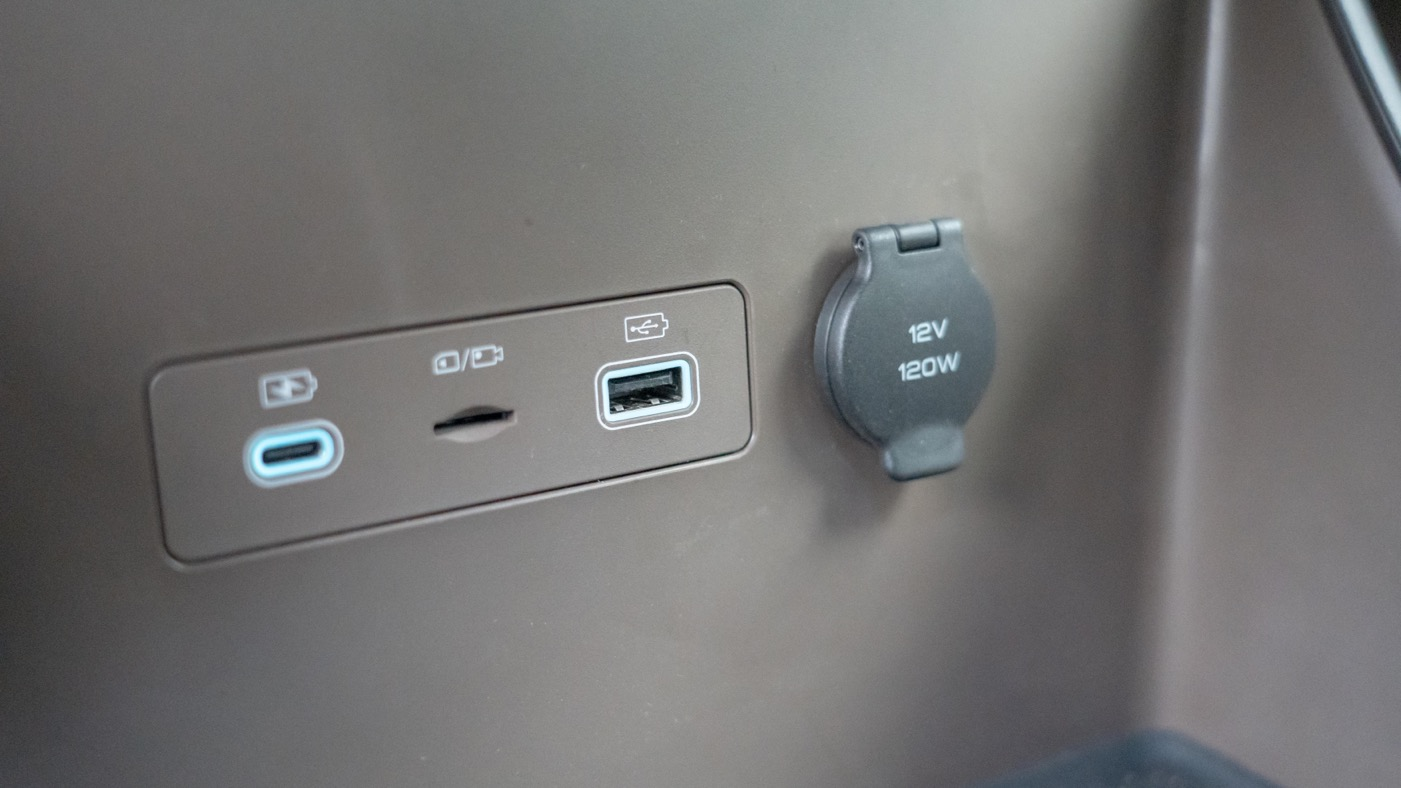
The central control screen of BYD Dolphin D9 adopts a flat horizontal design with narrow borders. It uses the Android system like other BYD models and can realize many functions. However, this screen does not support rotation and cannot switch to portrait mode.
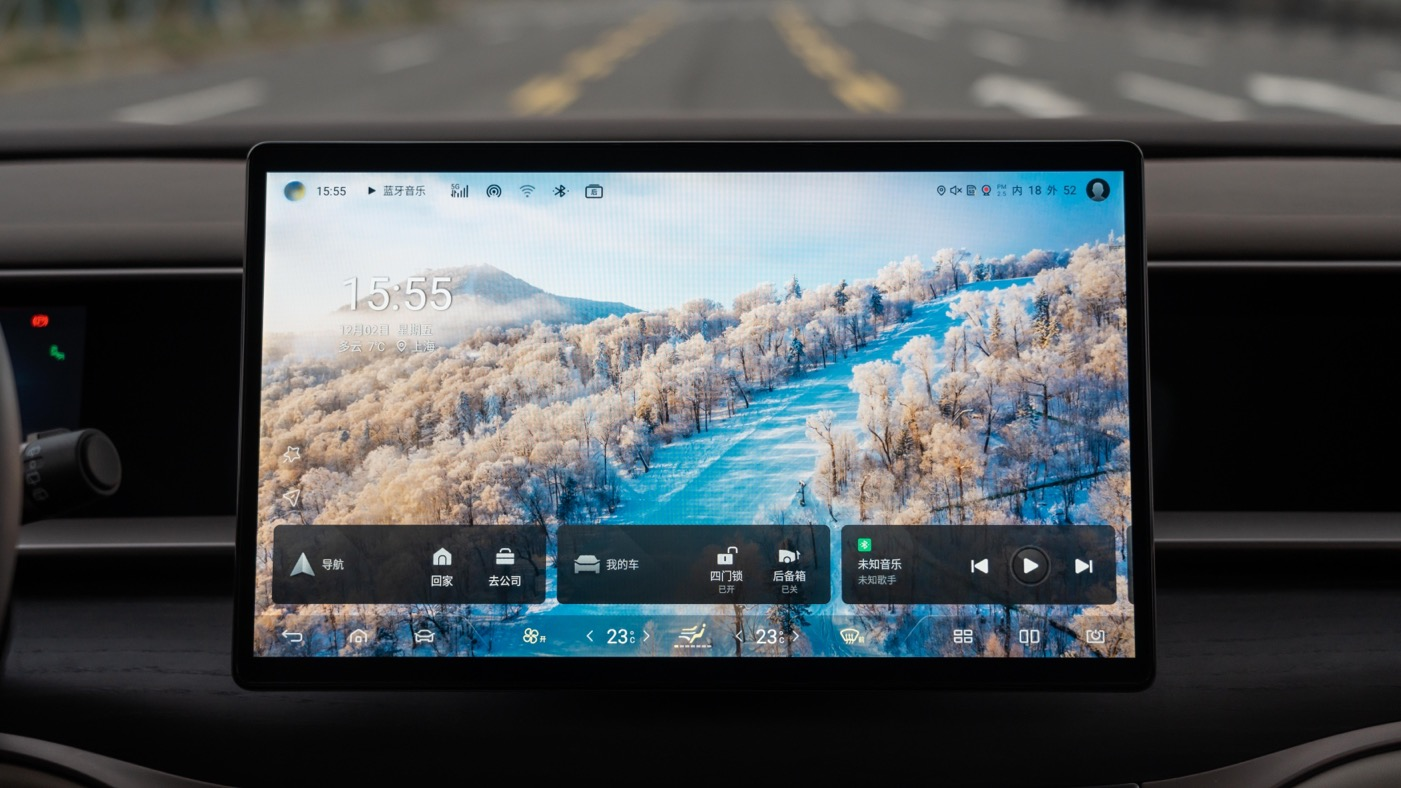
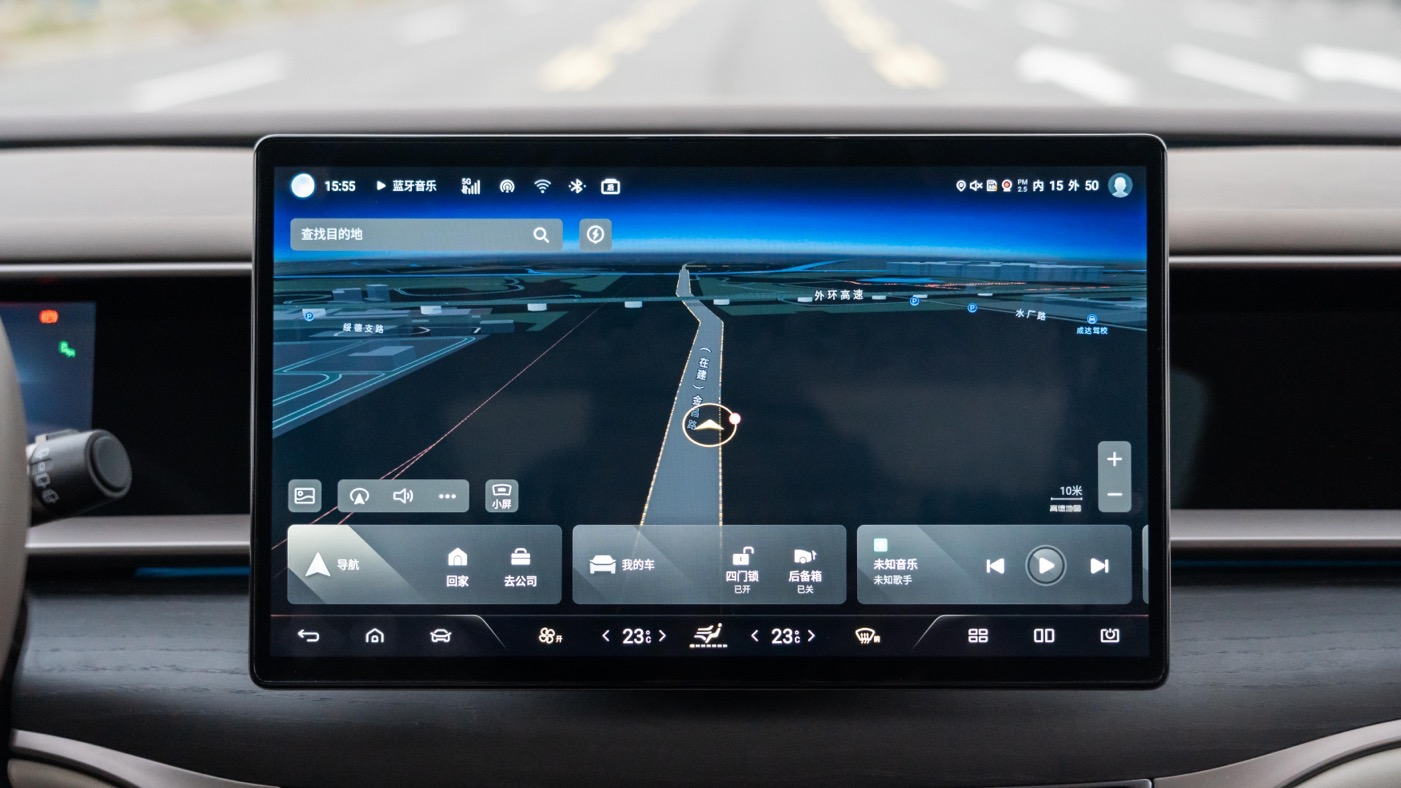
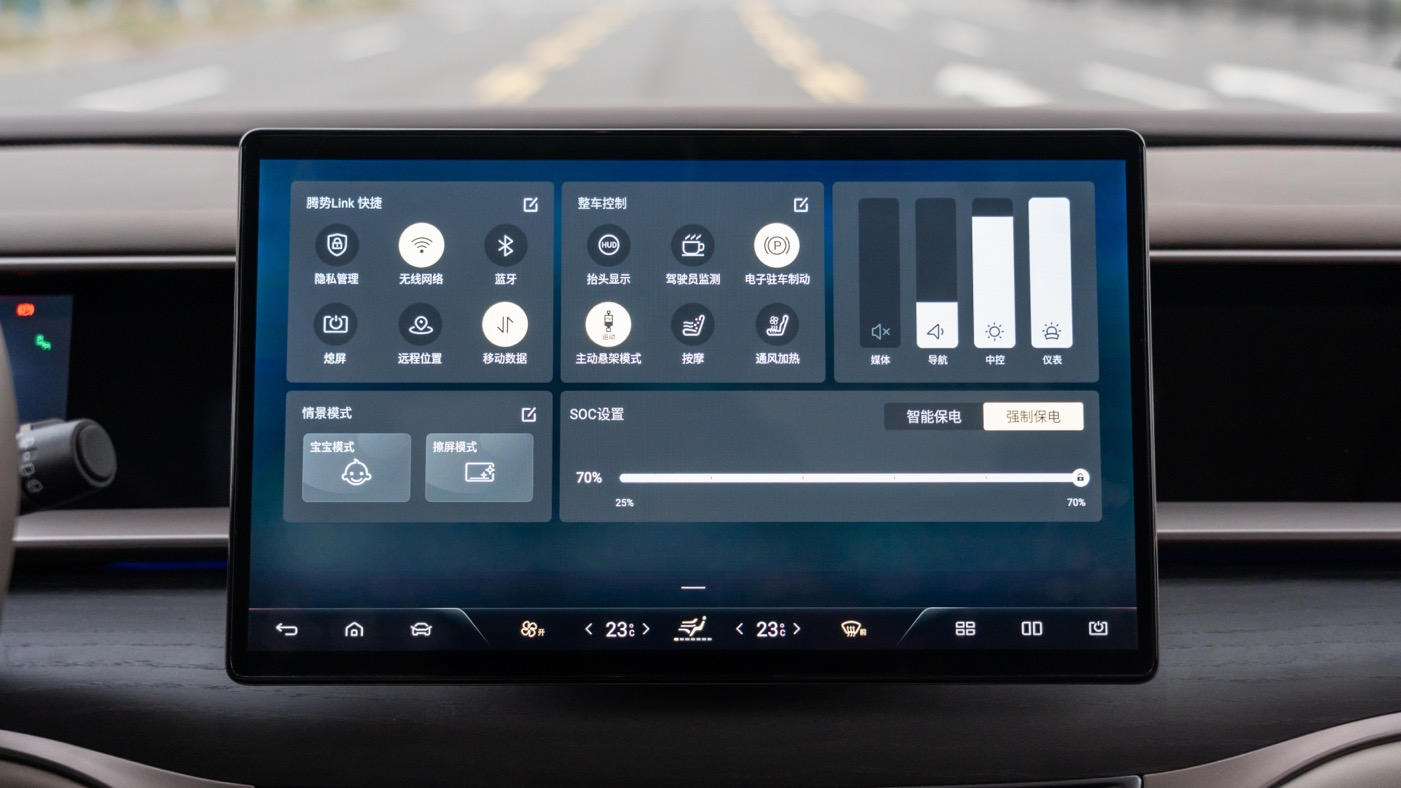
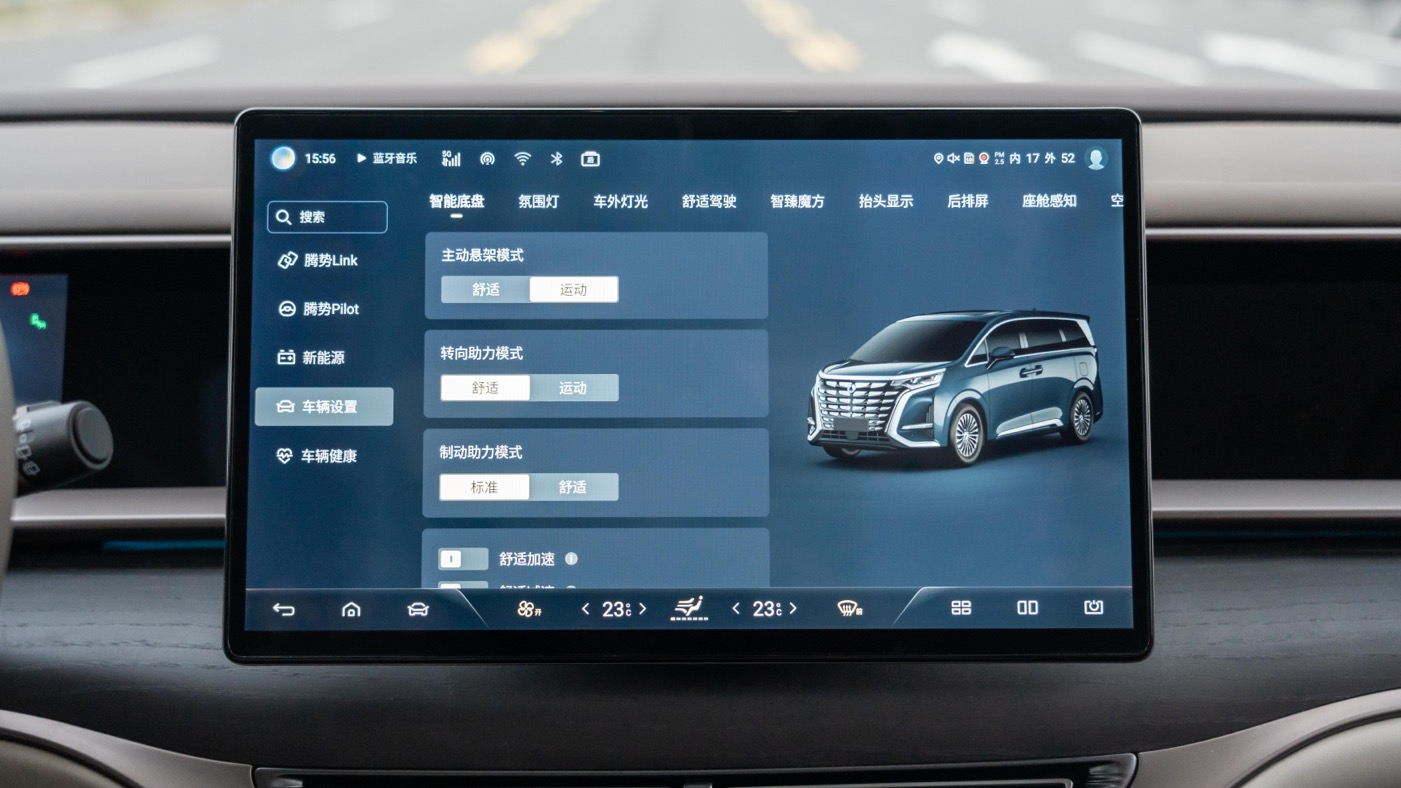
It is worth mentioning that this screen supports split-screen function, which can display navigation information on the left and entertainment information on the right, so that the driver and passenger can have their needs met.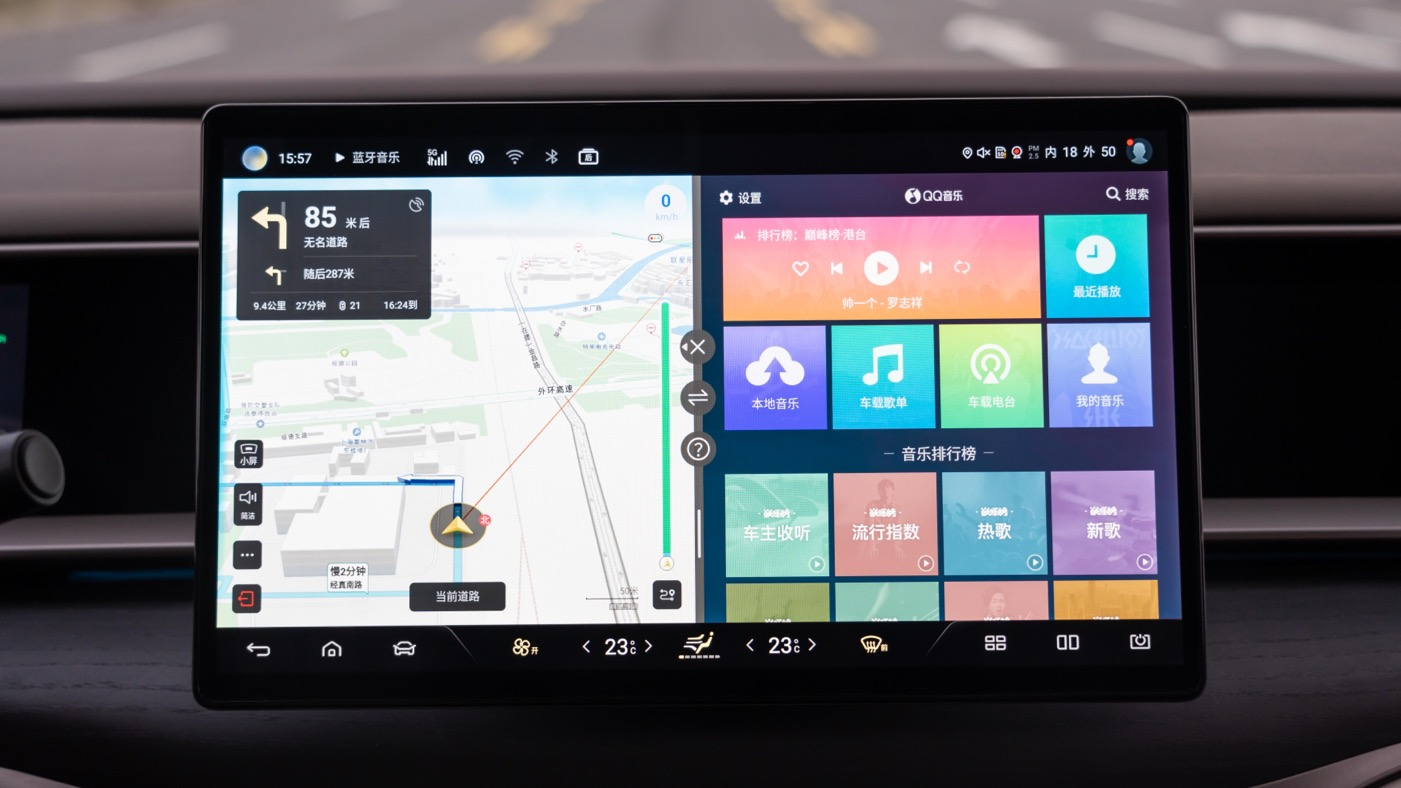
Currently, there are two major drawbacks with this car’s central control system:
- The brightness of the control screen is too dim. Even when adjusted to the highest level, it’s still difficult to see the screen clearly in daylight, especially with direct sunlight.
- The system only has a black theme, and only the navigation supports a light-colored page. Combined with insufficient screen brightness, it further exacerbates the problem of not being able to read the screen content clearly during the day.
The area on the right side of the control screen might initially give people the impression that there is a co-driver screen here, but in reality, this area is only made of normal black glass.
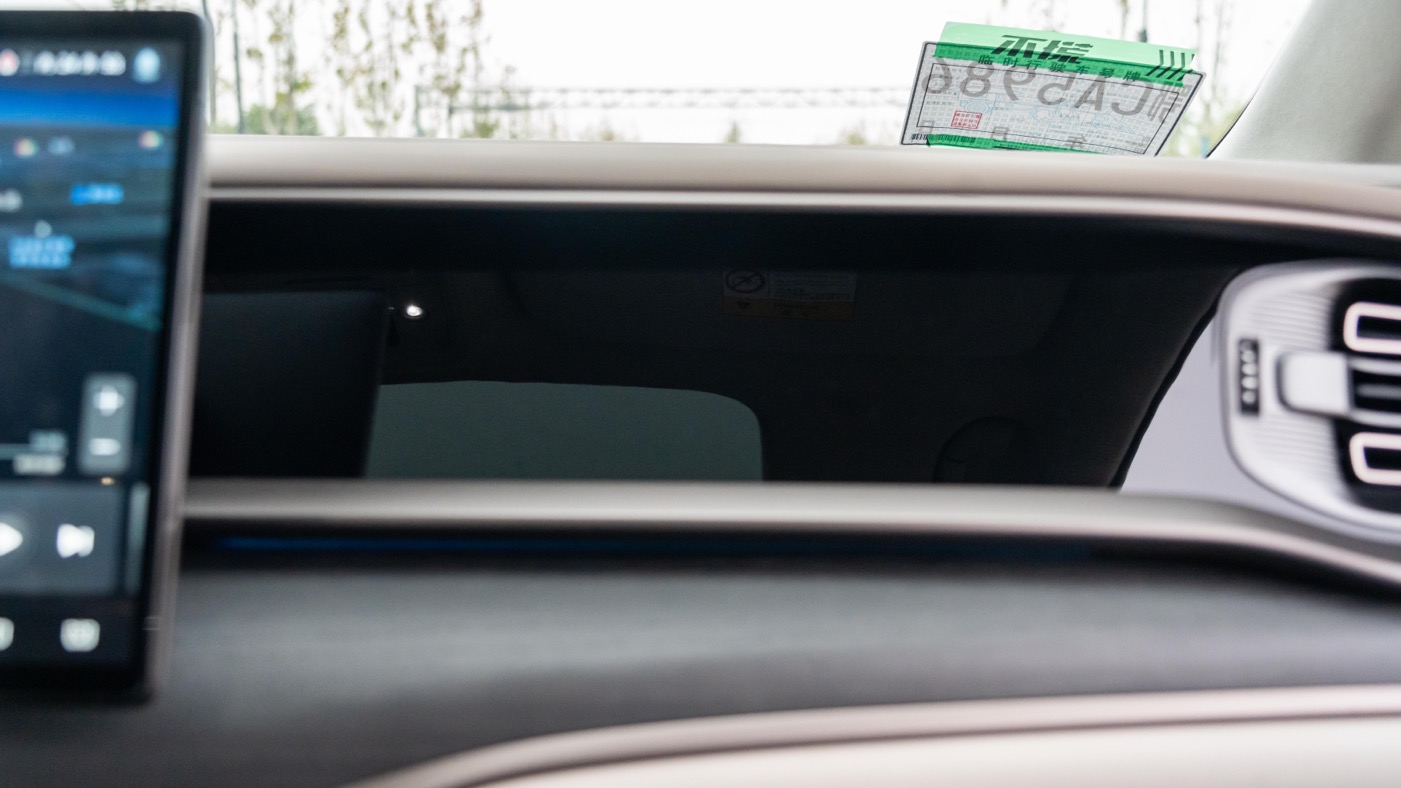
Although the sun visor in the front row is large, the mirror area is small, so it seems like this car is mainly driven by male drivers who don’t need a makeup mirror.
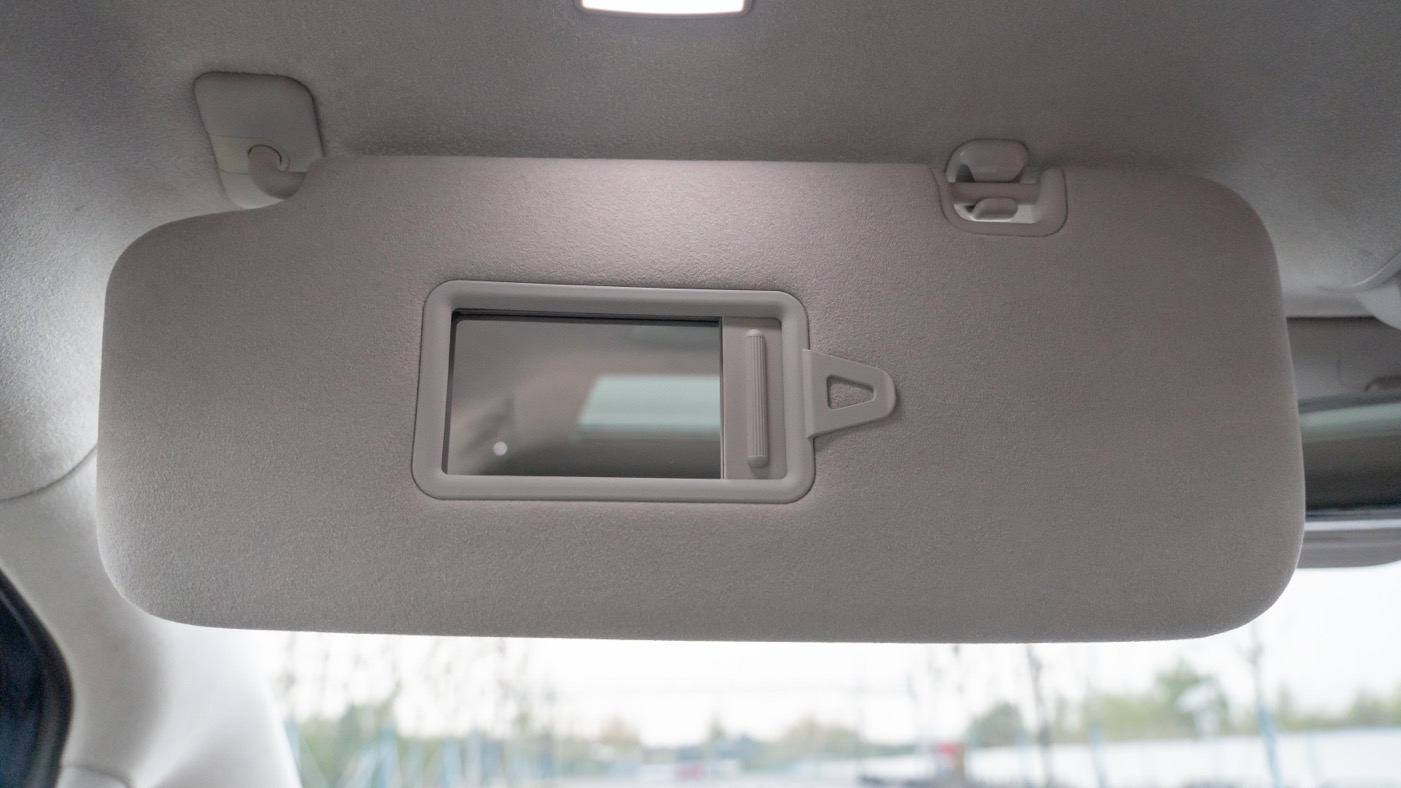
The DENZA-D9 supports four-tone zone voice recognition, and the 4 top microphones are essential.
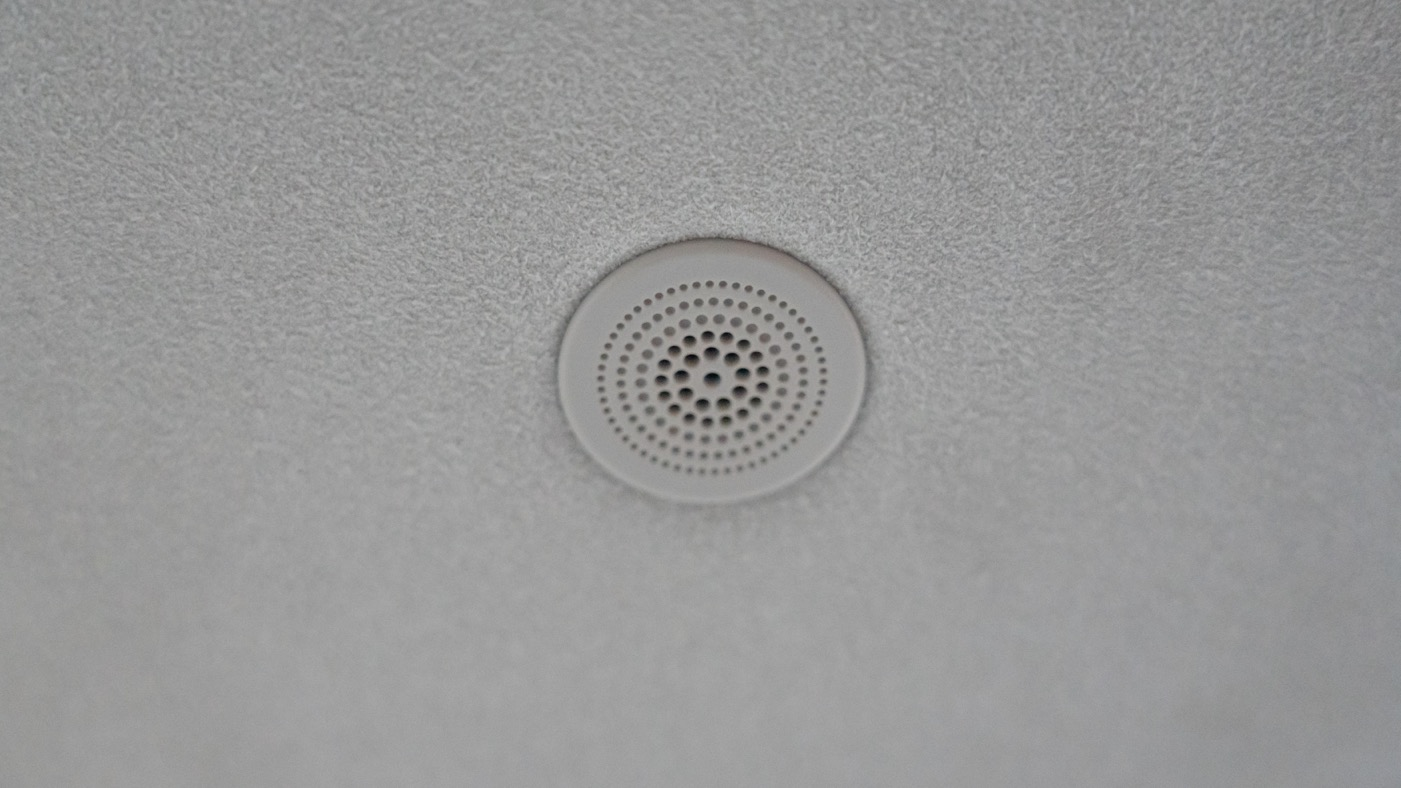
The driver monitoring system (DMS) camera is placed on the A pillar of the vehicle, with a physical switch to manually turn off the camera. Although the A-pillar is relatively thick, the D9 has a small triangular window to alleviate the problem of obstructing the driver’s line of sight.
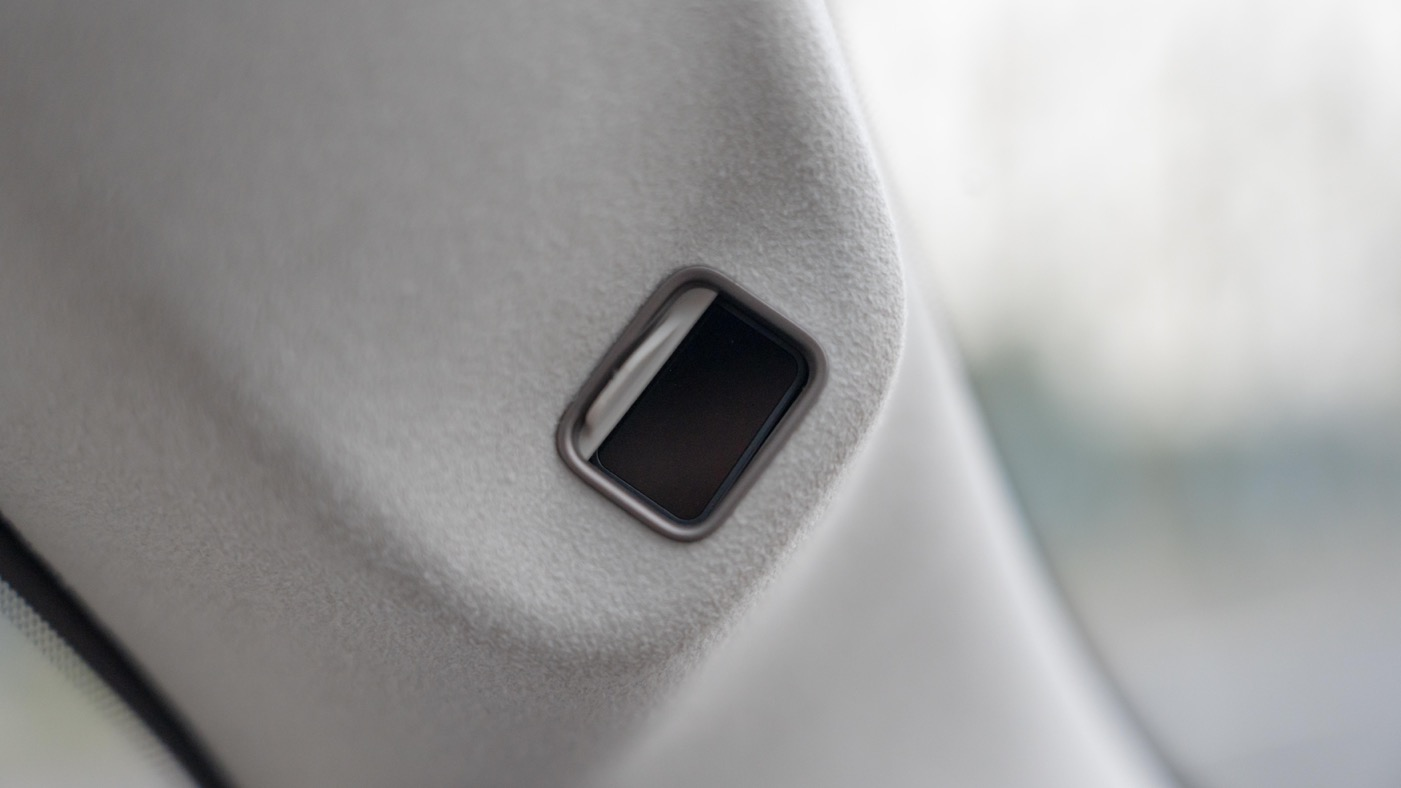
There is a glasses box in the center of the front roof, and you may have noticed that this car’s roof uses a suede material.
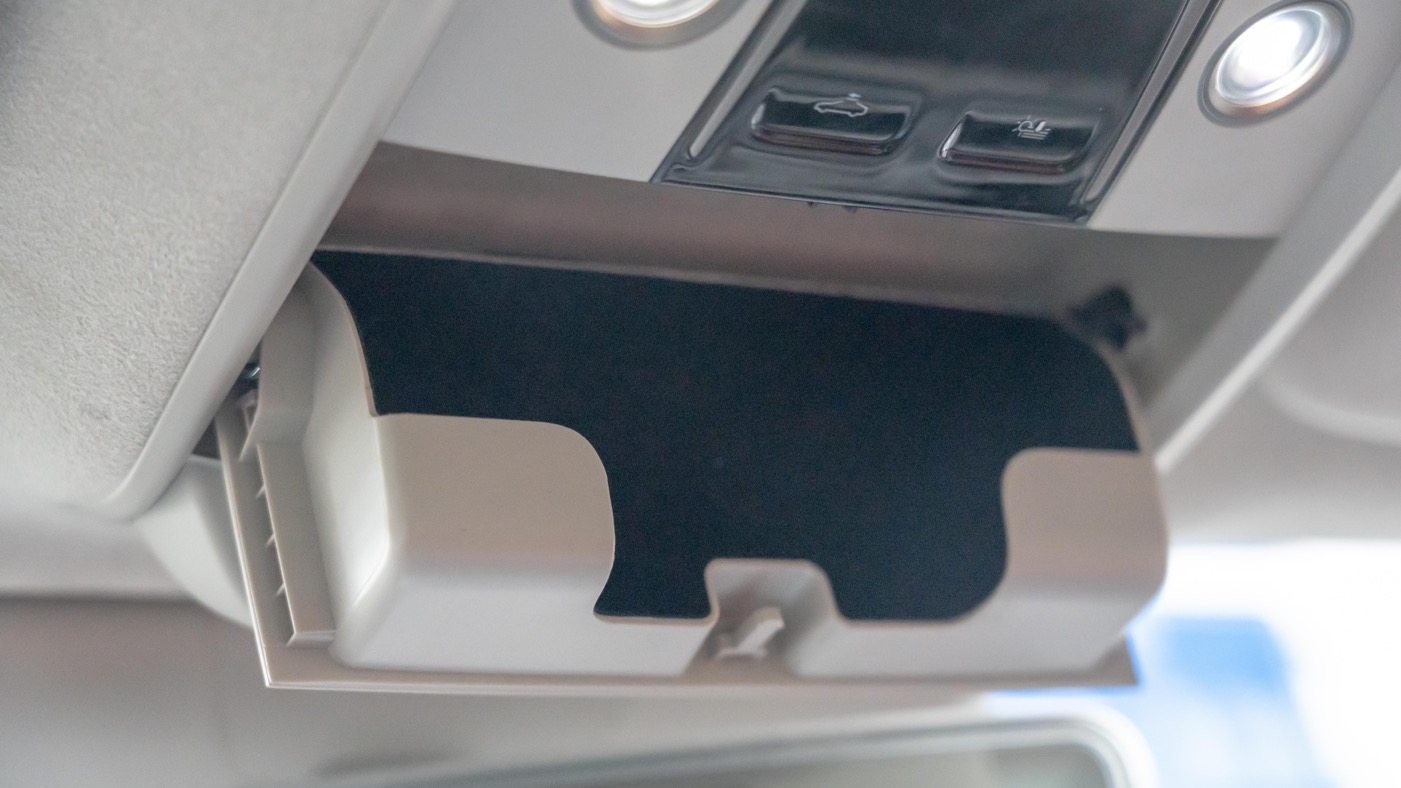
The brightness of the two reading lights in the top center control area is good. The buttons are respectively used for the front sunroof switch and the front sunshade switch.
The small skylight at the front can be opened for ventilation or closed for sun protection.
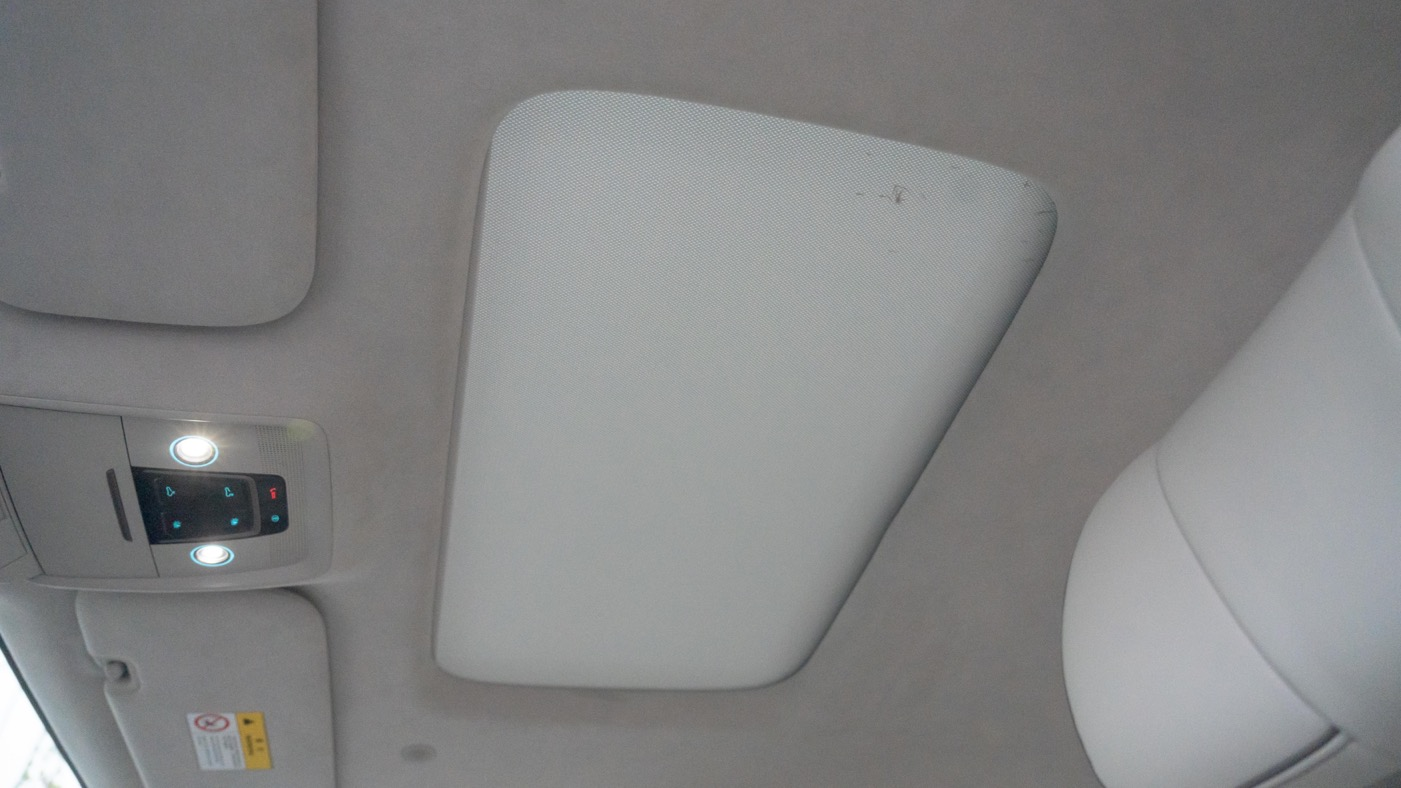
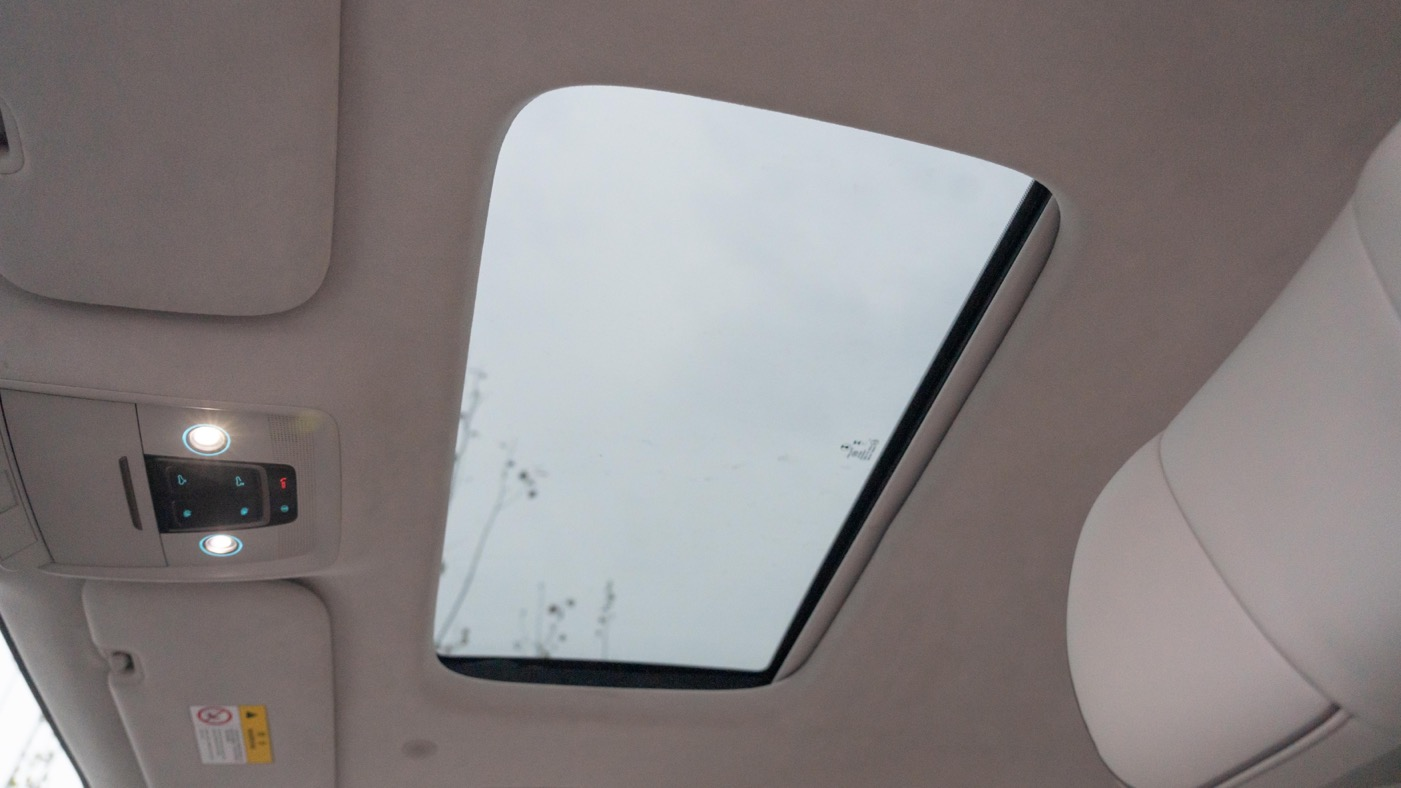
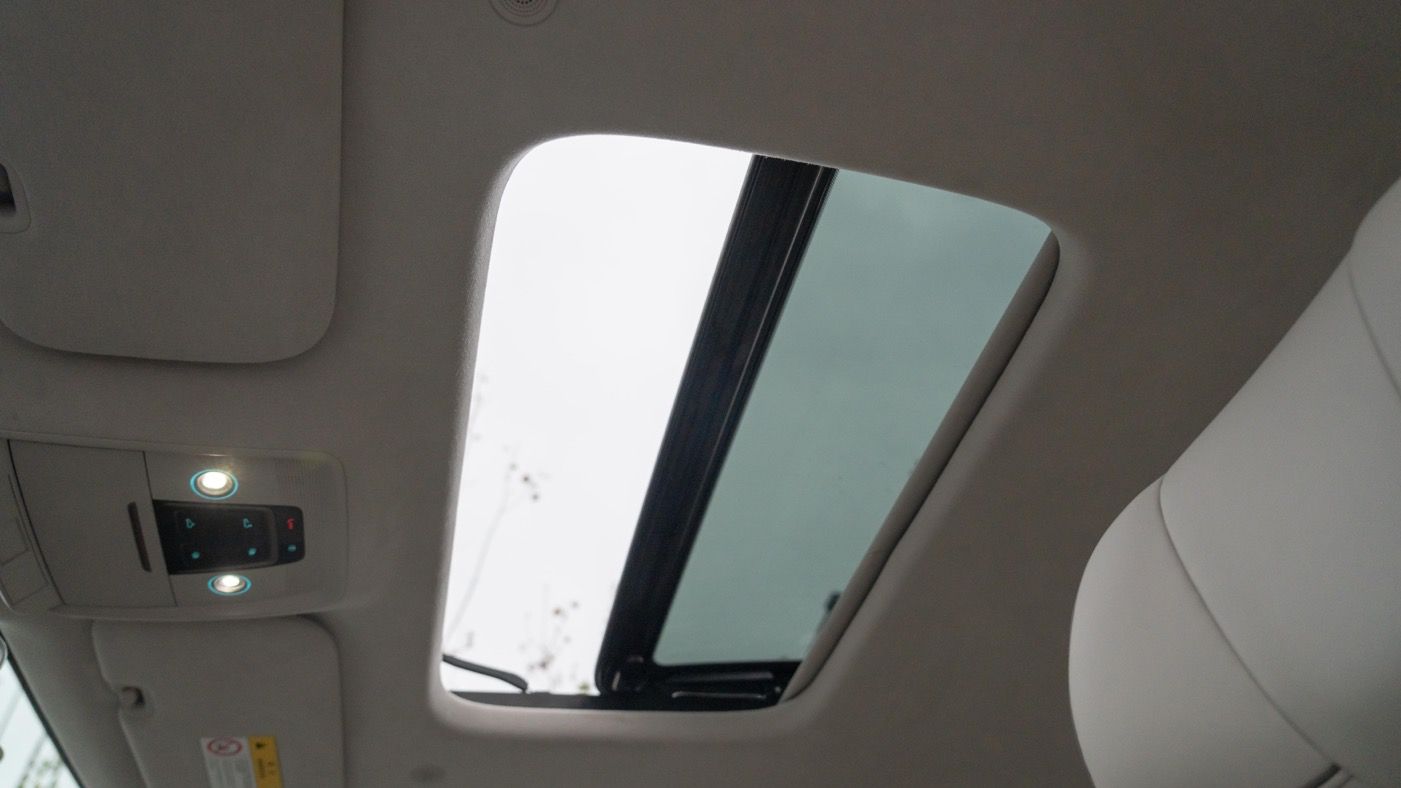
The rearview mirror does not use a streaming media rearview mirror, but the rear windshield visibility is still good when driving. There is a camera inside the car for taking selfies, which can be physically turned off.
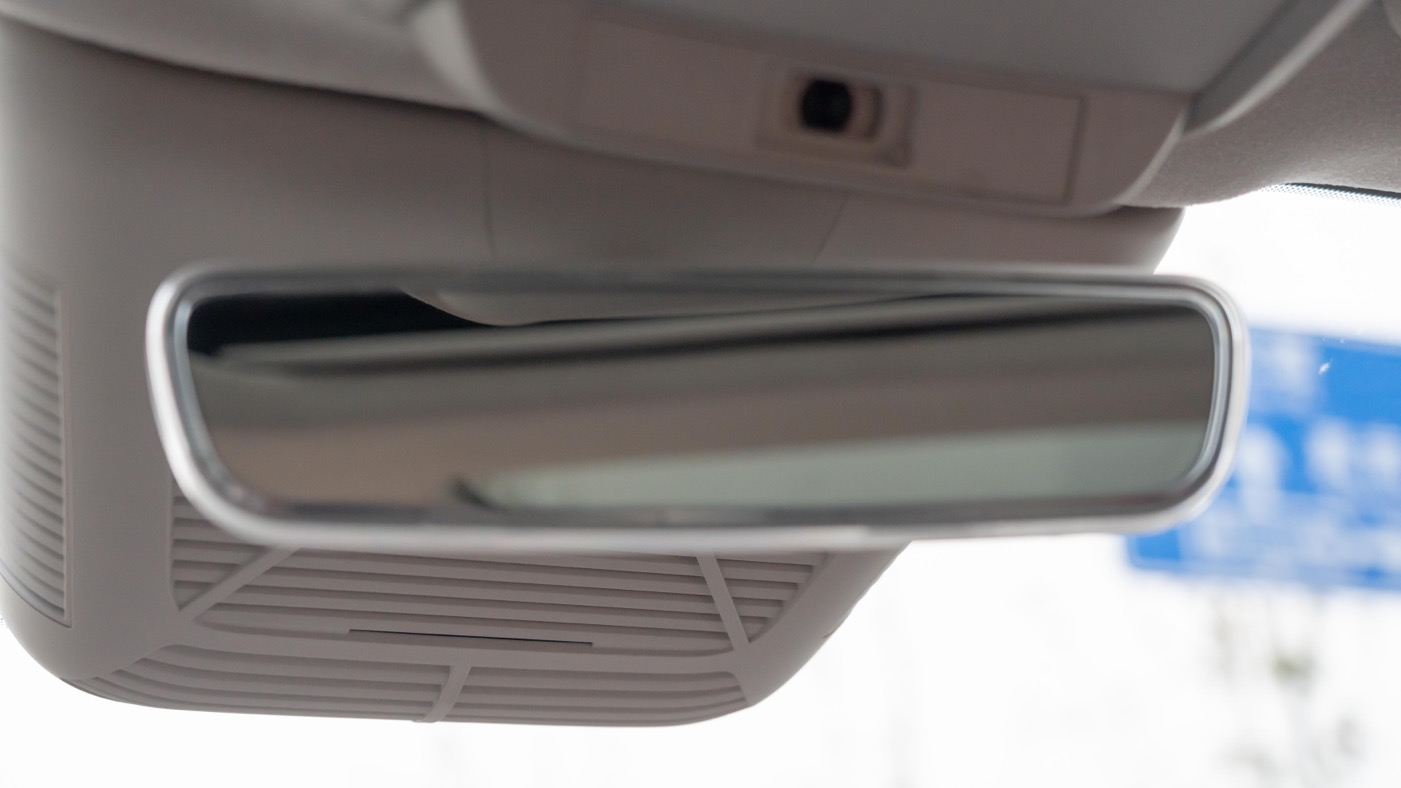
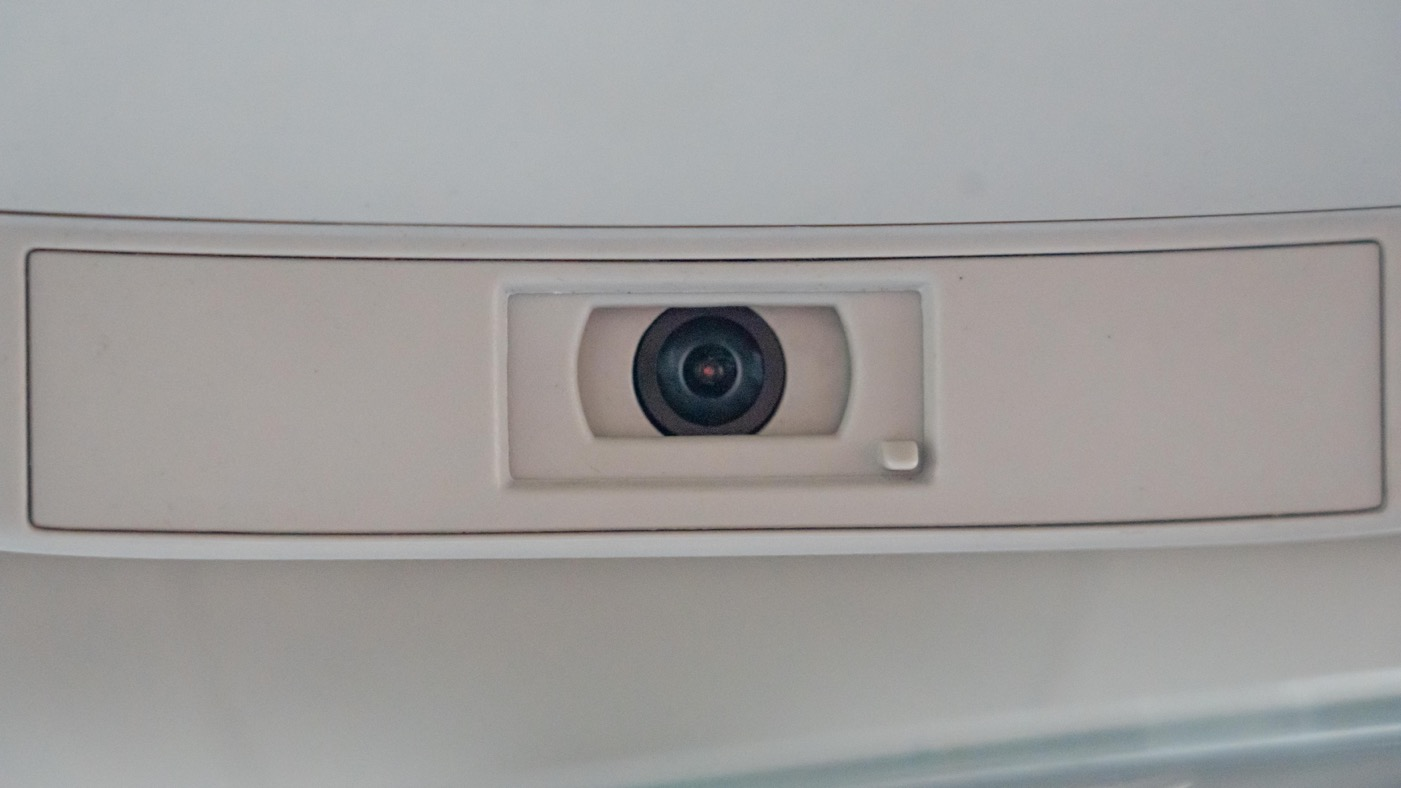
As we all know, the second row of seats is the most important for MPVs, and the DENZA D9 is no exception. The second-row seats are softer than the first row, with ventilation, heating, and massage functions, as well as a calf support, providing a first-class experience.

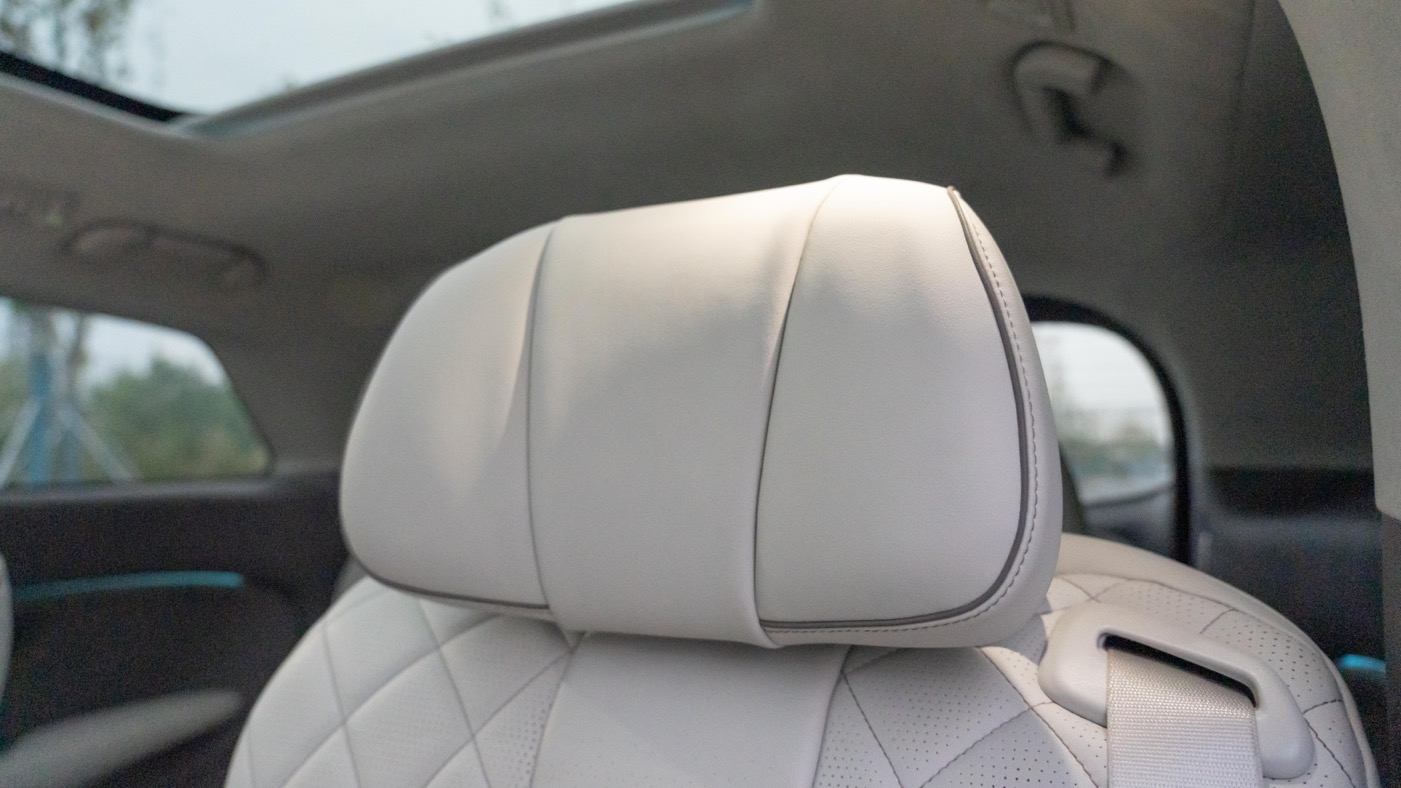
The specific dimensions are as follows: when the calf support is fully extended, the seat length can reach 87 cm. When the seat back is reclined and enters the “zero gravity” mode, it provides a boss-level experience.
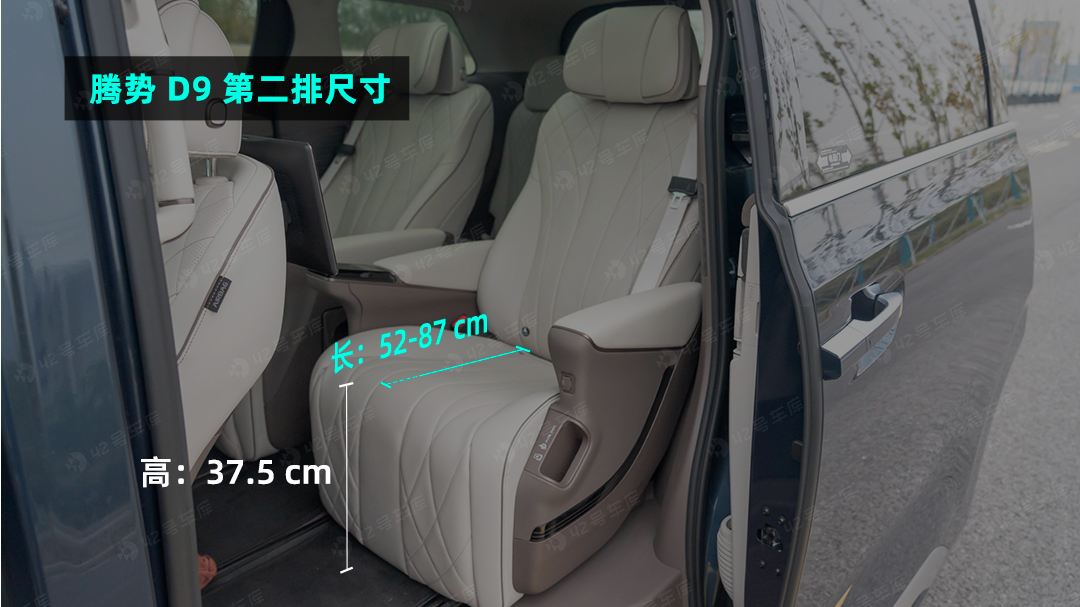 # Second-row Seating
# Second-row Seating
Xiaodingdang sits comfortably in the second row with ample legroom (space for at least two fists) and headroom (also space for two fists). The second-row space is very spacious.
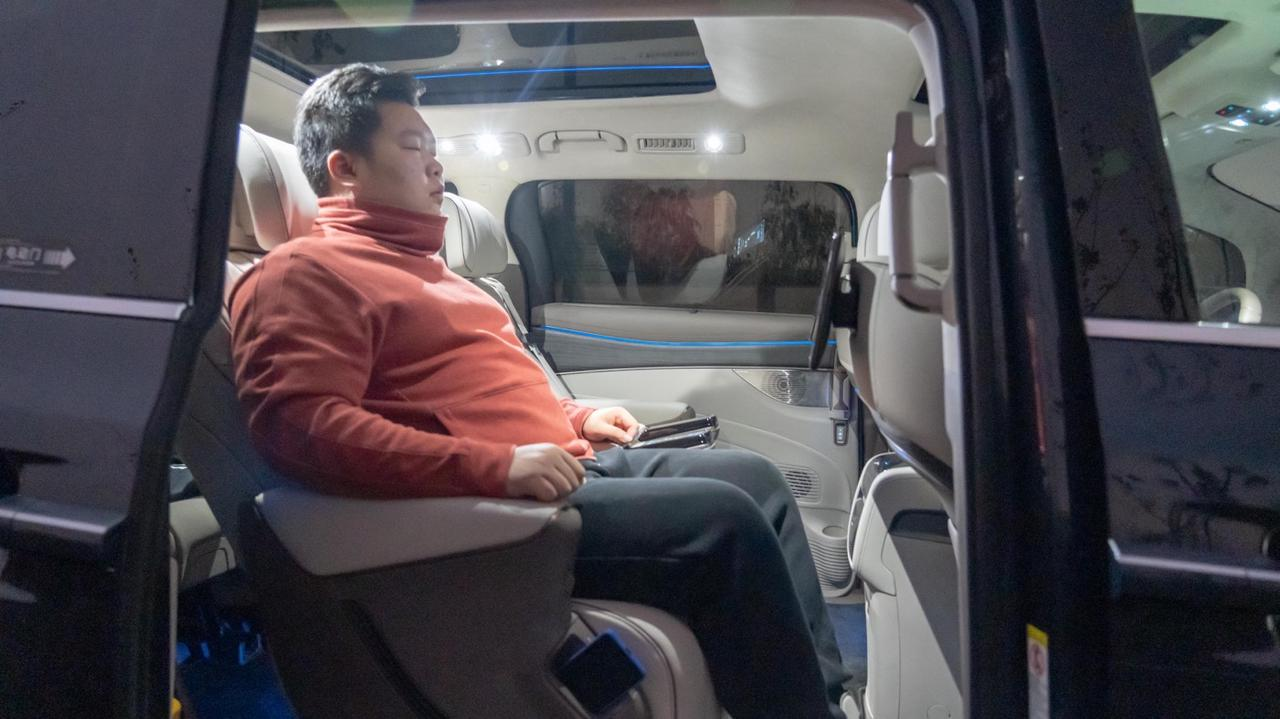
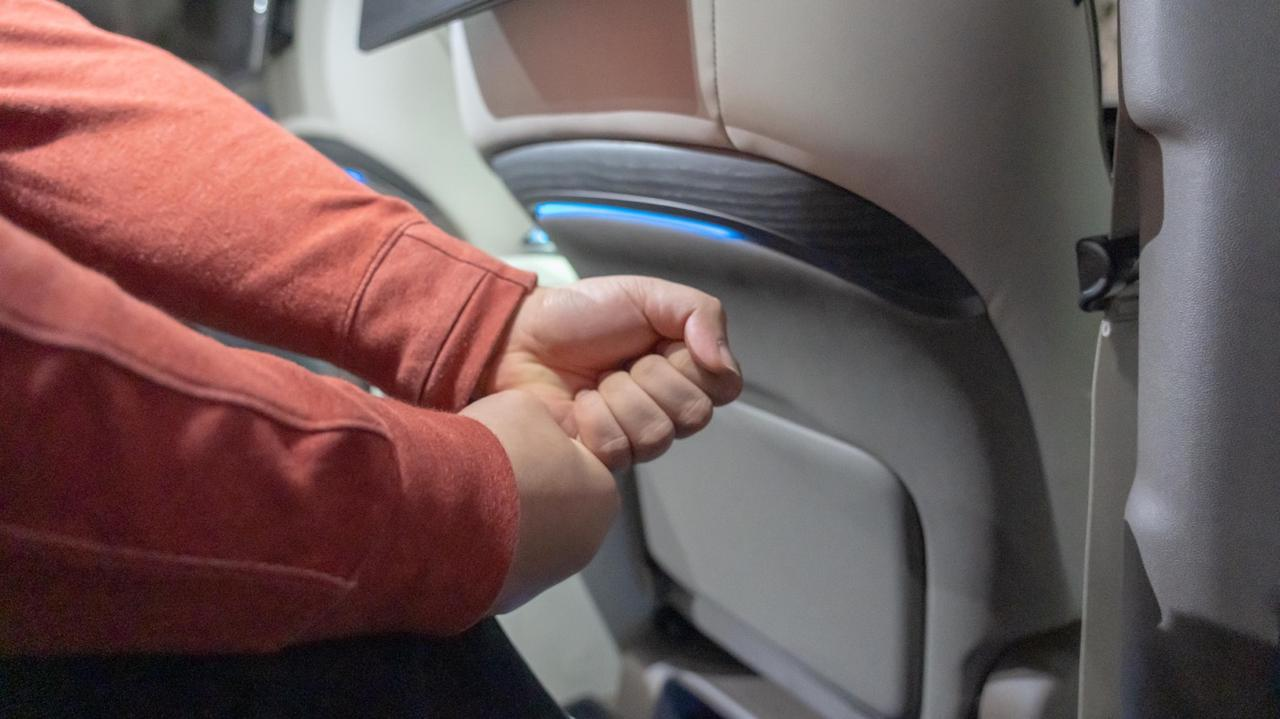
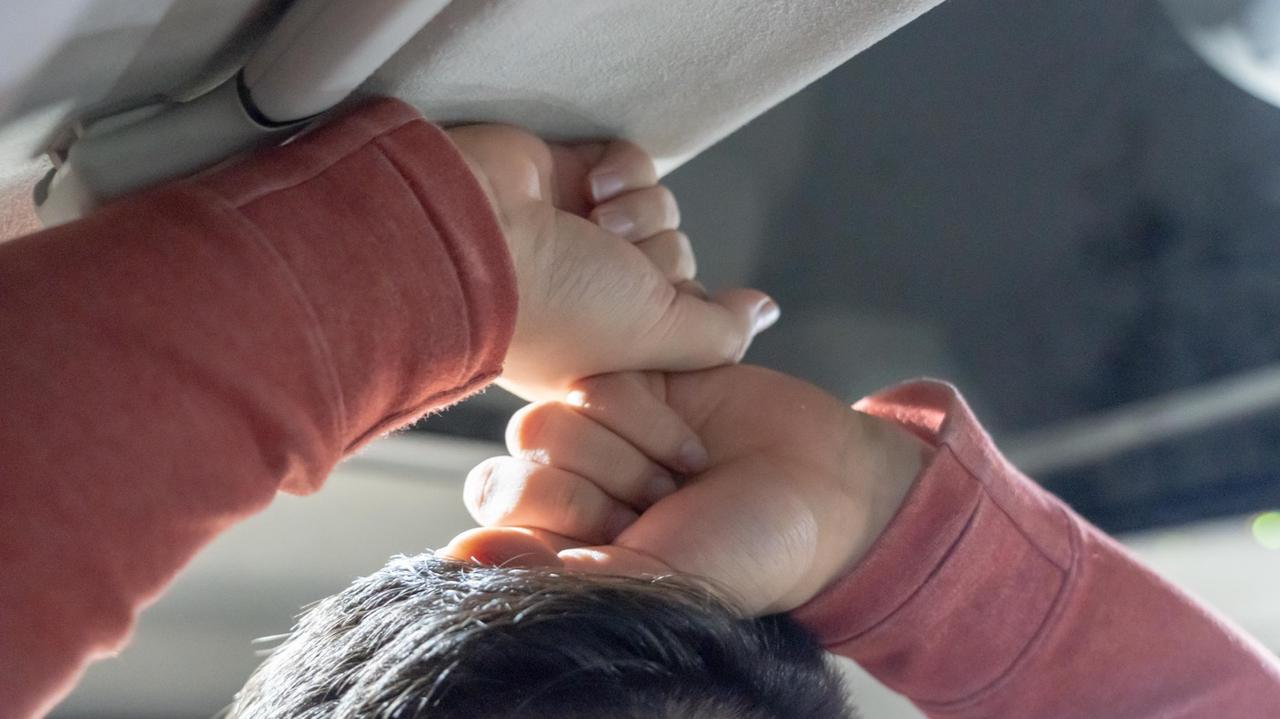
The second-row seats have child seat interfaces that can be used to accommodate child seats.
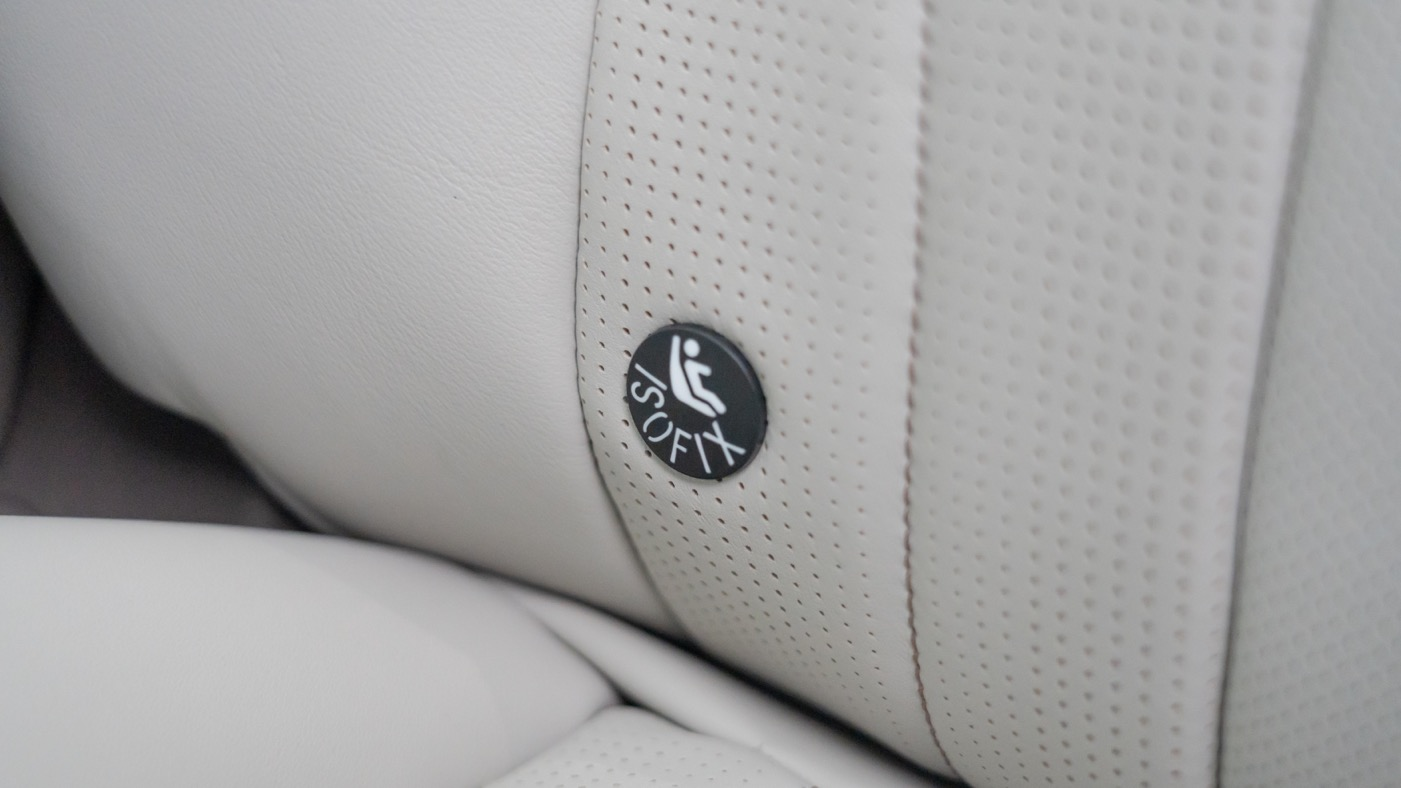
There is a wireless charging slot for mobile phones on each side of the two seats. They also support 50W Qi protocol wireless charging, and are consistent with the front-row wireless charging specifications. It should be noted that since the wireless charging coil is located on the side of the seat, the phone needs to be placed with the screen facing outward during charging, otherwise it cannot be charged.
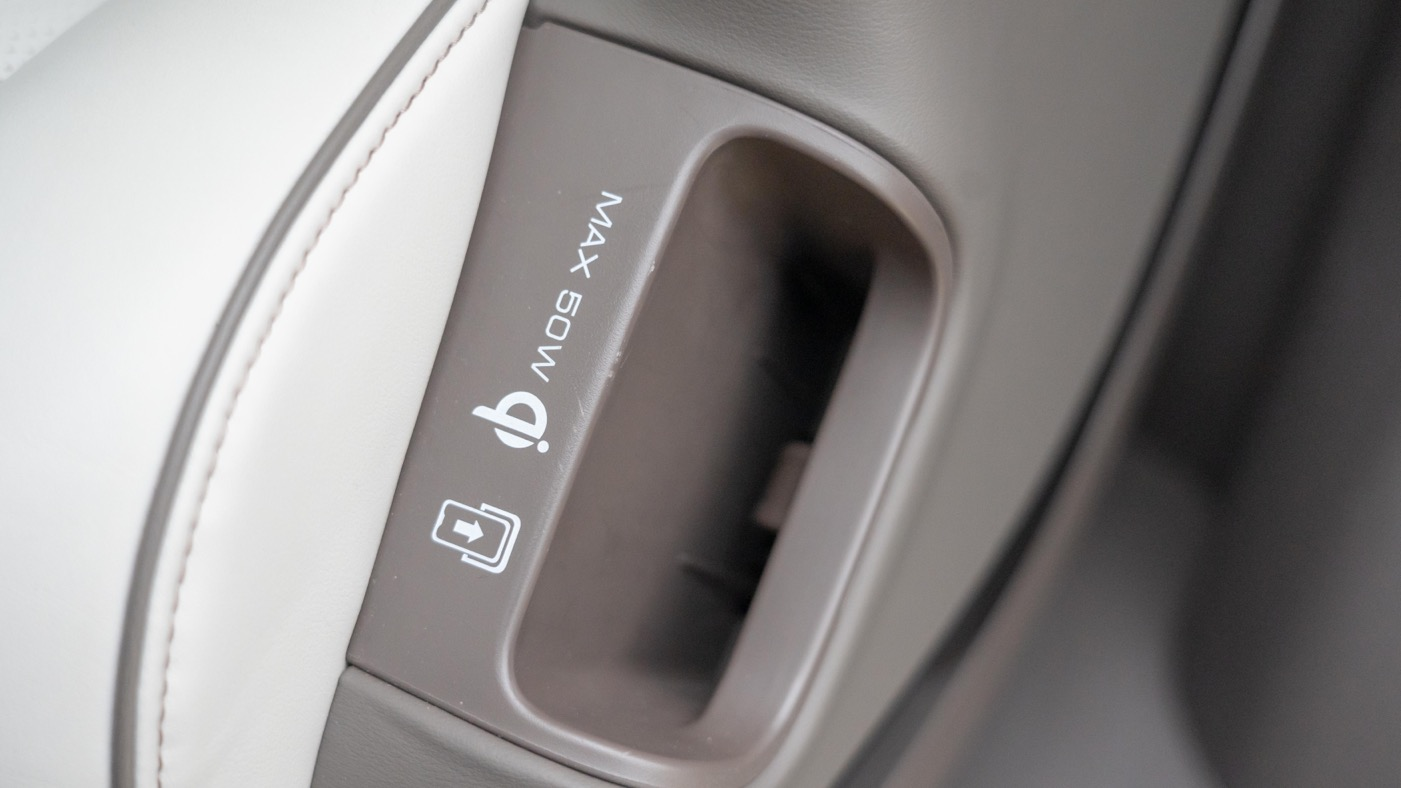
There is a Type A charging interface underneath the armrest of each of the two seats, with a silicone protective cover above the interface.
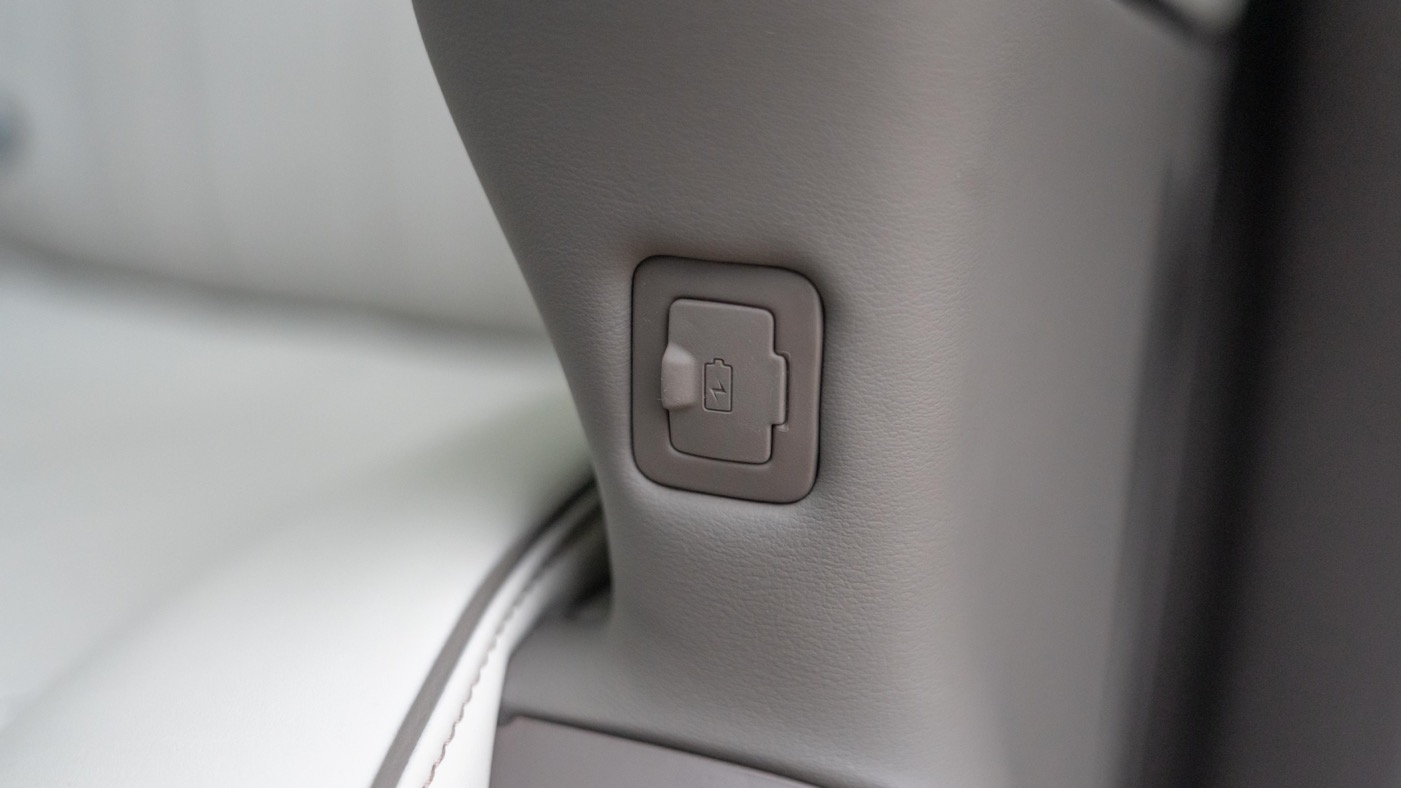
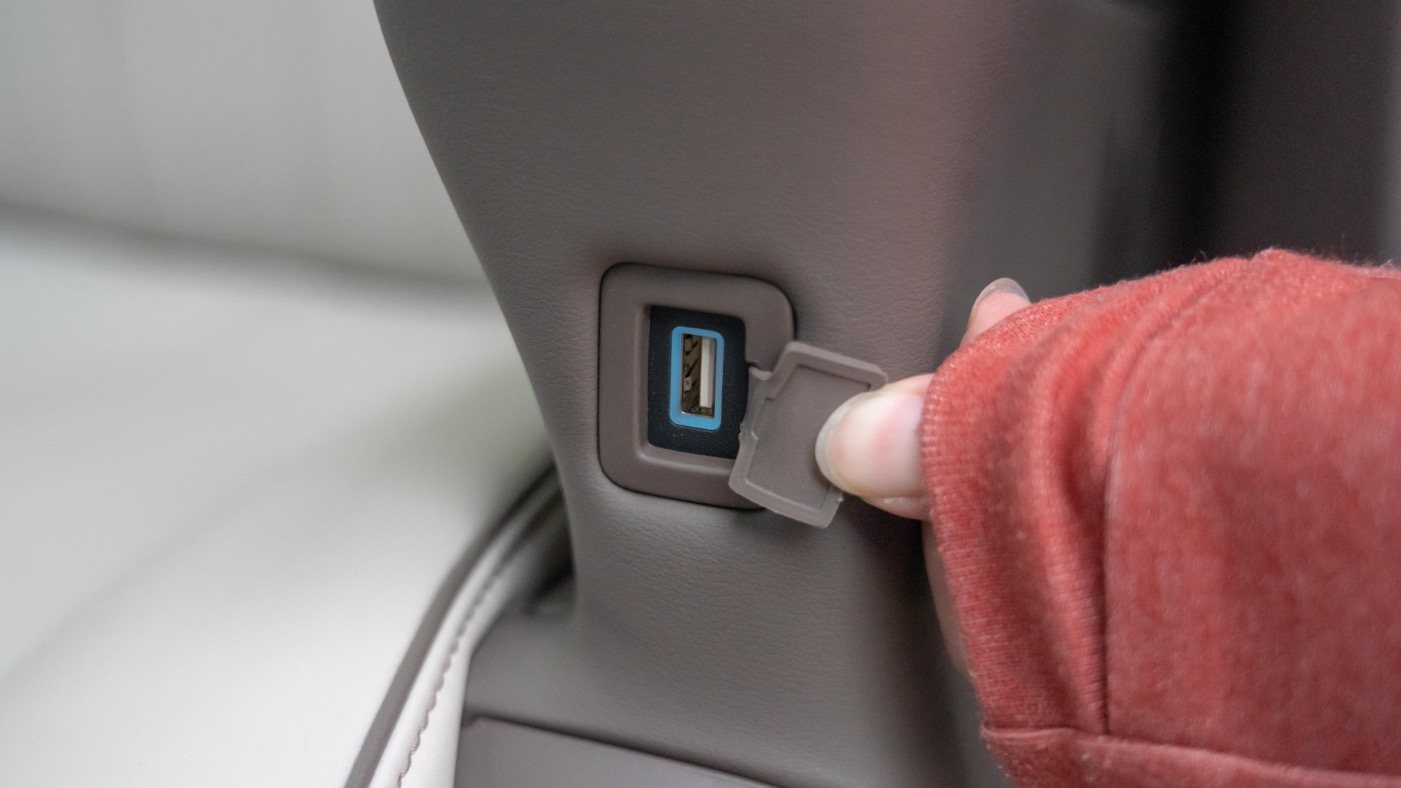
There is a one-button adjustment for the “zero gravity” mode on the inner side of the seat.
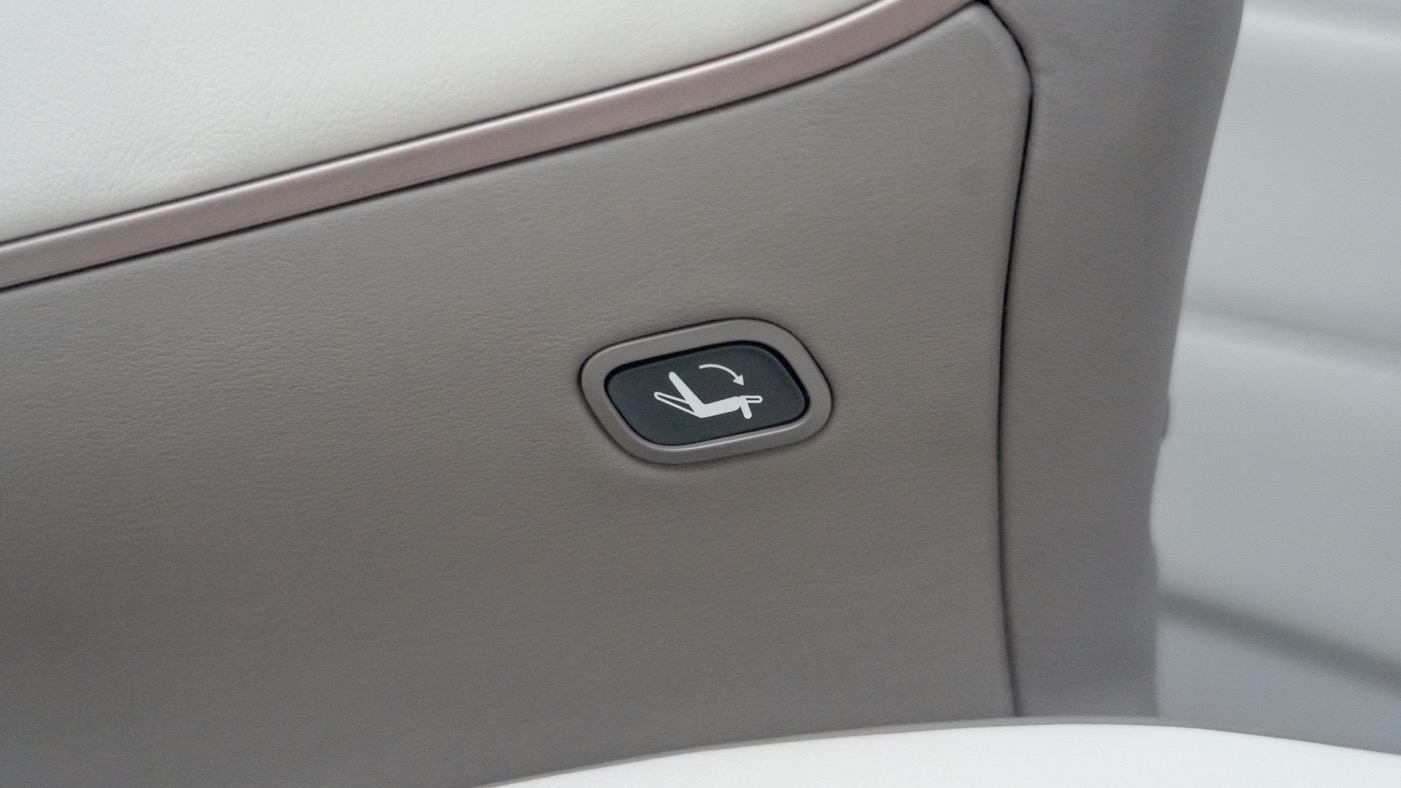
There is a small screen on each inner armrest of the two seats, which can control music, seats, air conditioning, lighting, Rubik’s cube, sunroof, and settings.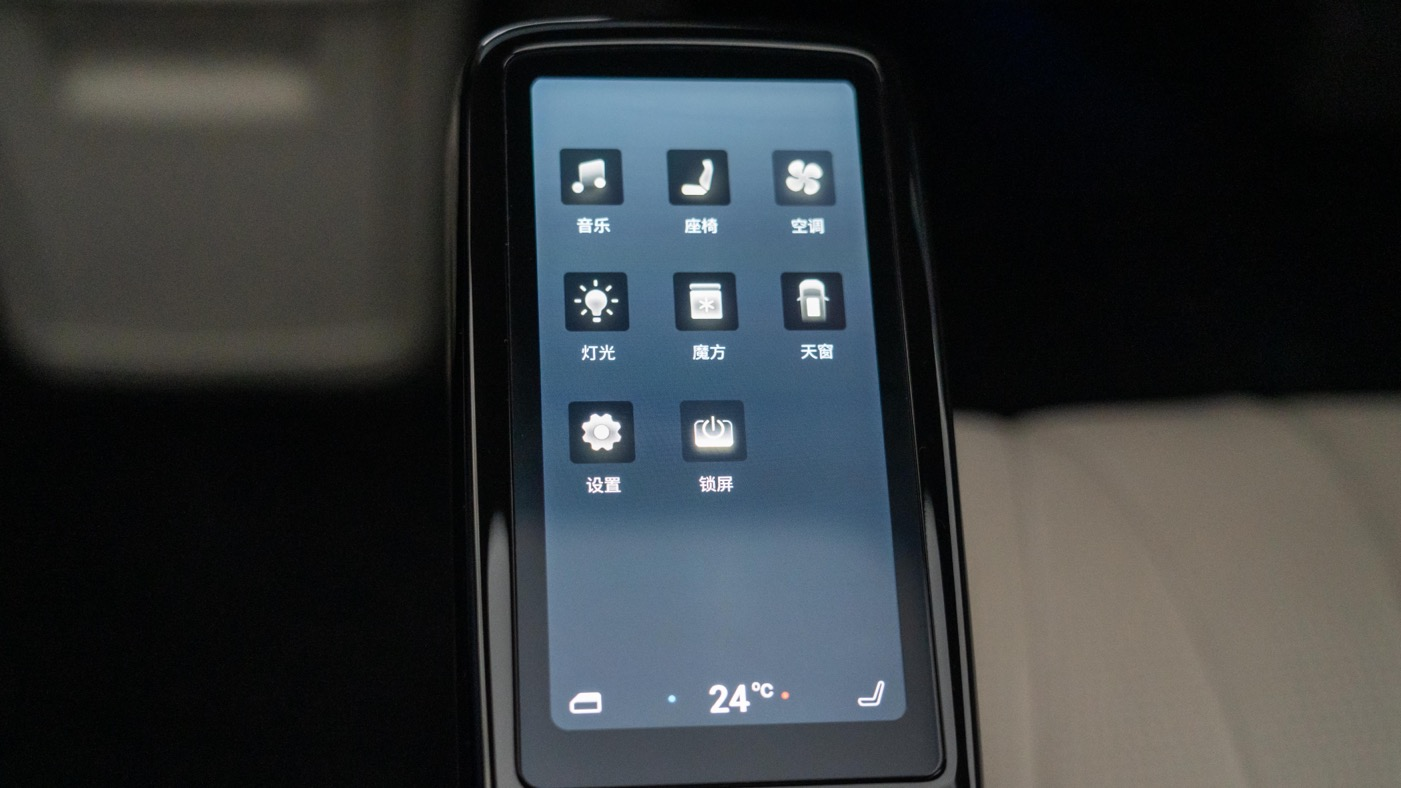
The seat controls do not have physical buttons, as all the function controls are integrated into this screen. It takes some time for first-time users to learn how to use it, and it is not very user-friendly for elderly people.
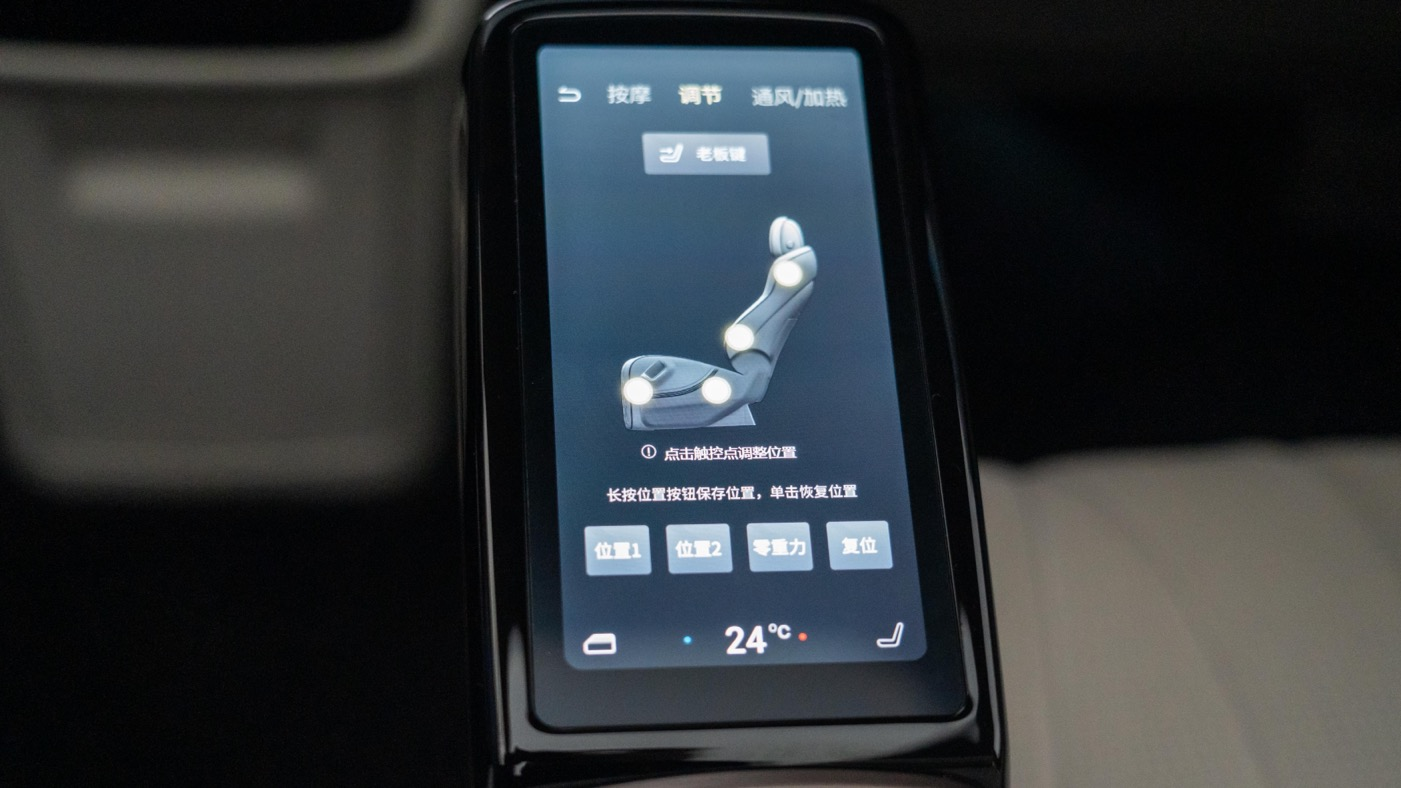
The Wisecube consists of two parts, a tray for storage and a cooling and heating box with a temperature range of 5 to 55 ℃.
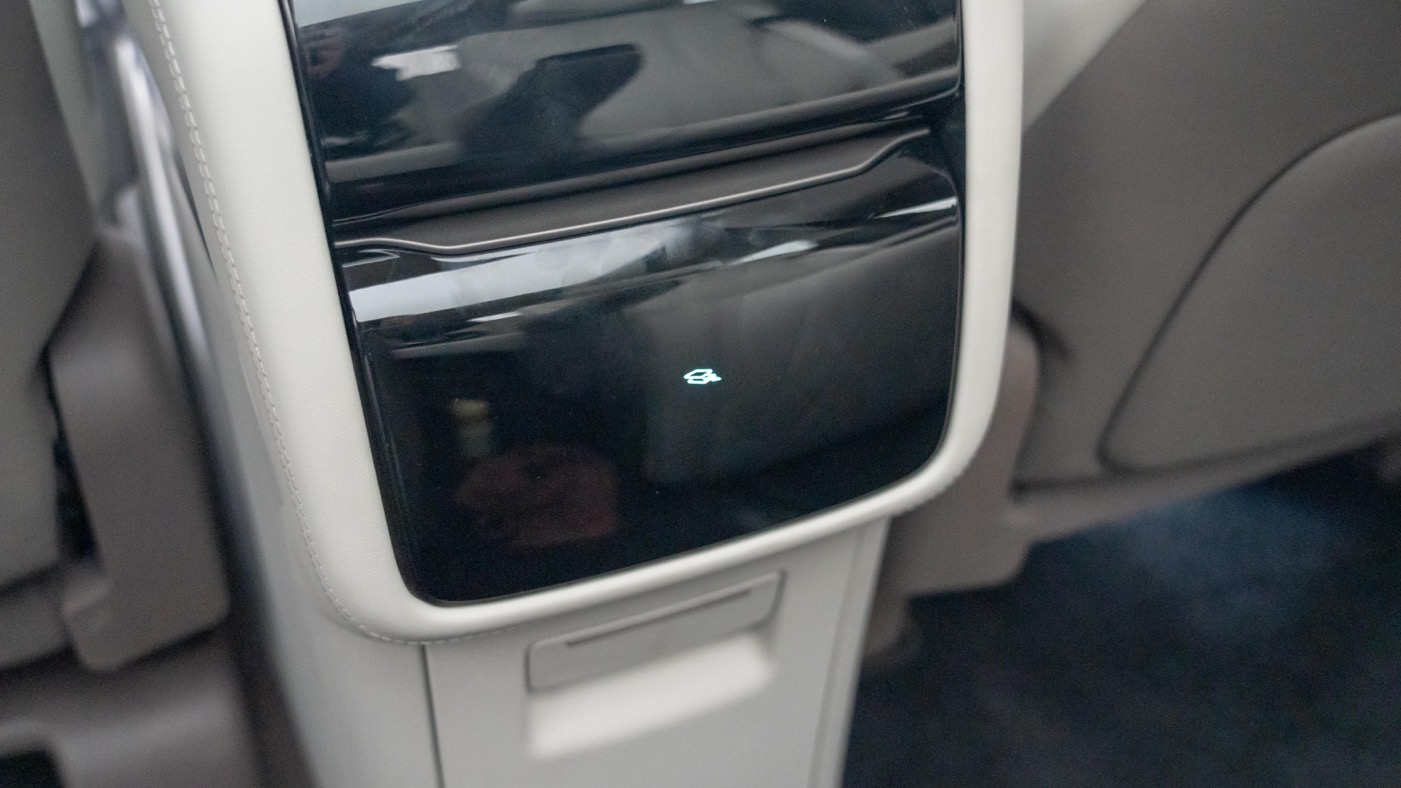
The storage tray can be electrically switched on/off via the touch button on the top or through the relevant button on the control screen. Its storage space is basically the same as the central armrest box, mainly used for placing bills, documents, and small items.
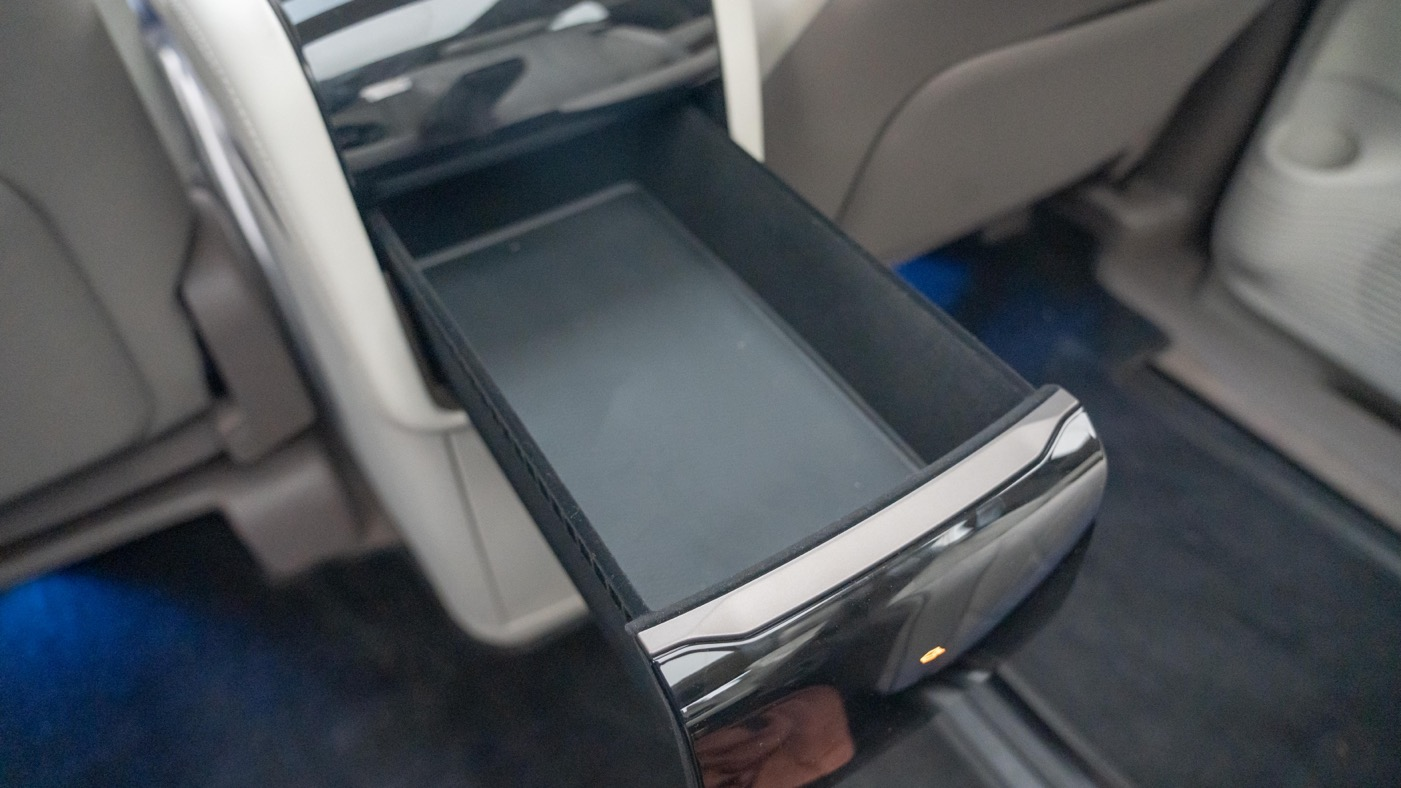
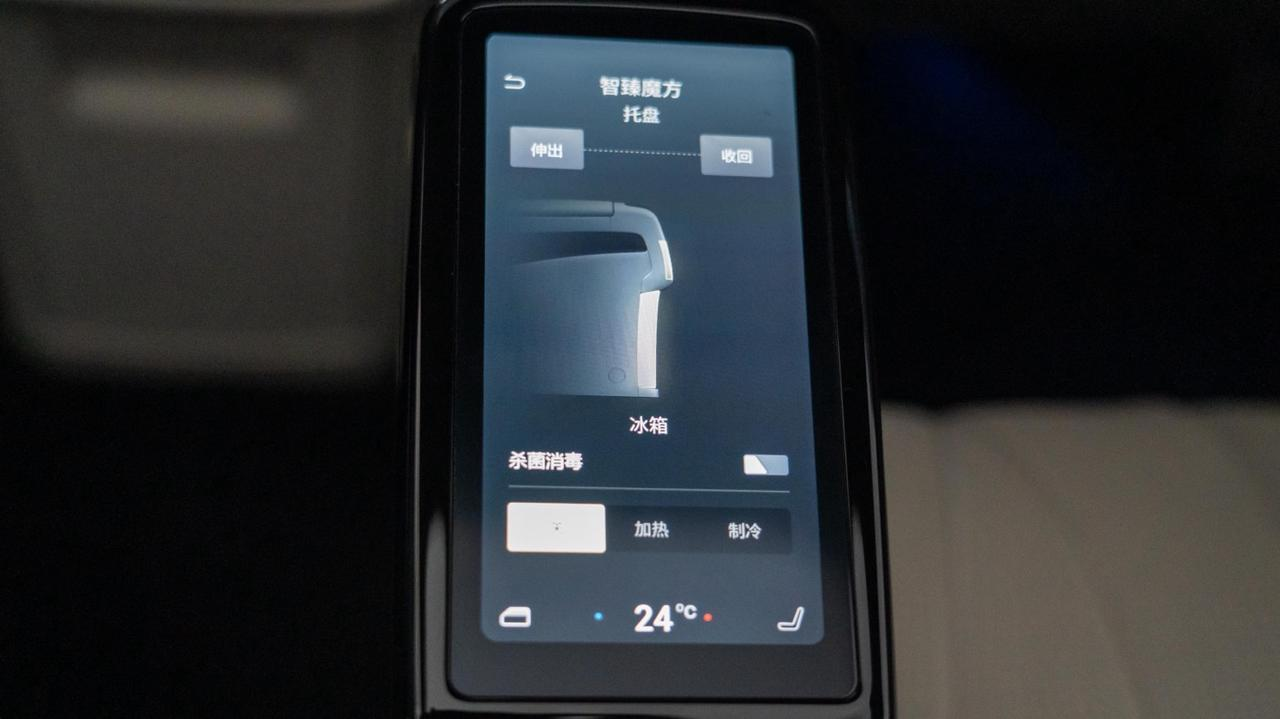
The cooling and heating box at the bottom is manually opened and has a capacity of approximately six bottles of drinks. However, the plastic feel of the box is a bit cheap.
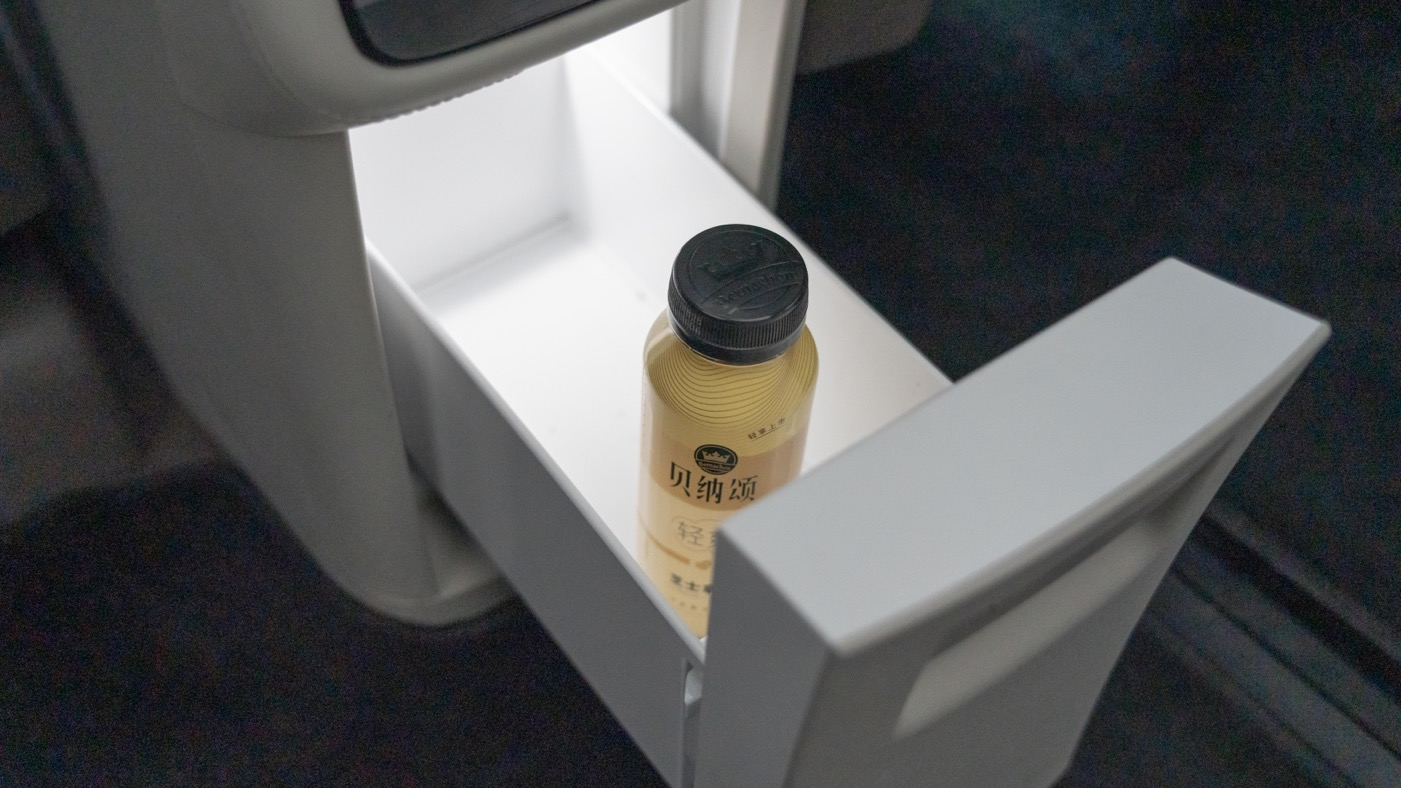
The control of the air conditioning and fragrance is basically the same as that of the front control, and all functional options can be controlled.
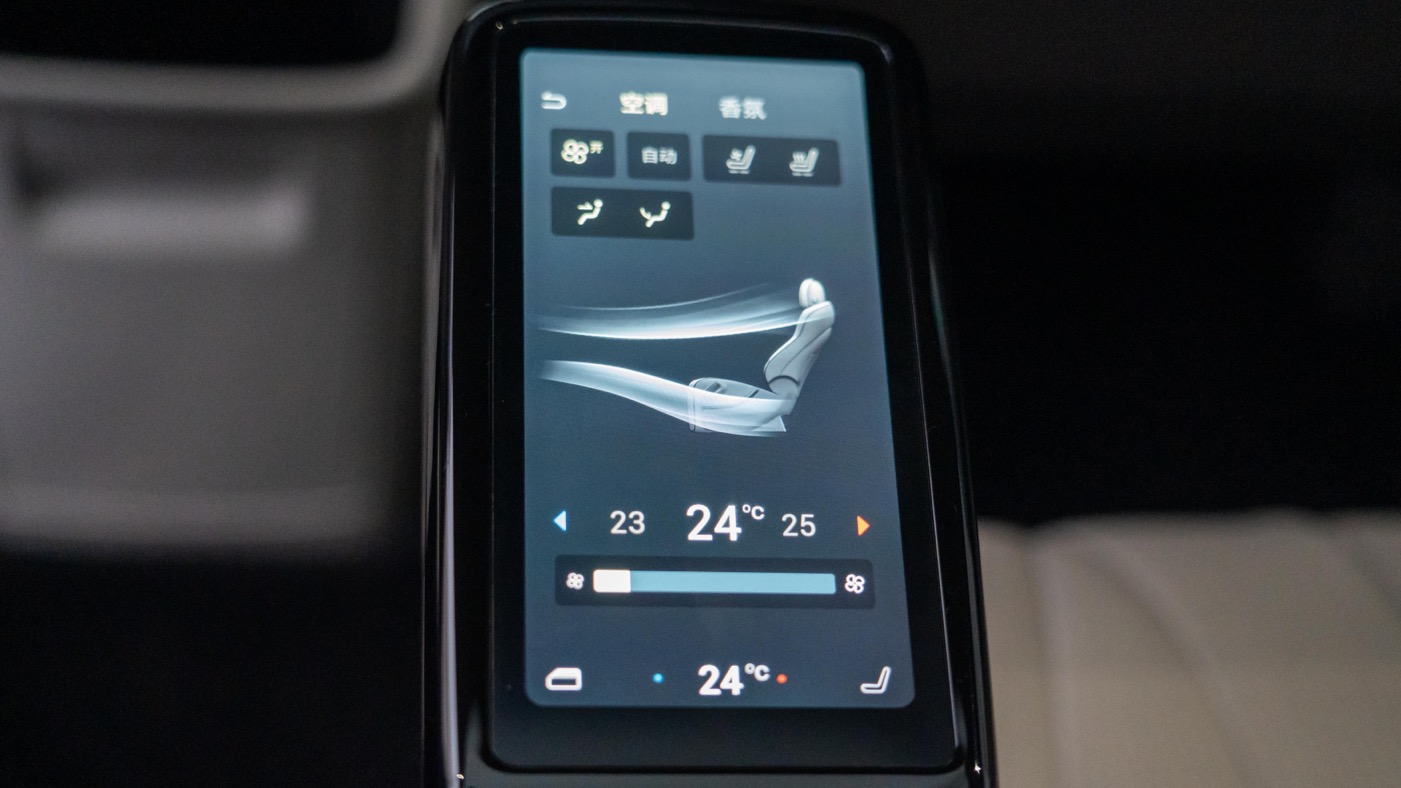
The back seat can control the switch of the second-row sunshade and the switch of the front sunroof.
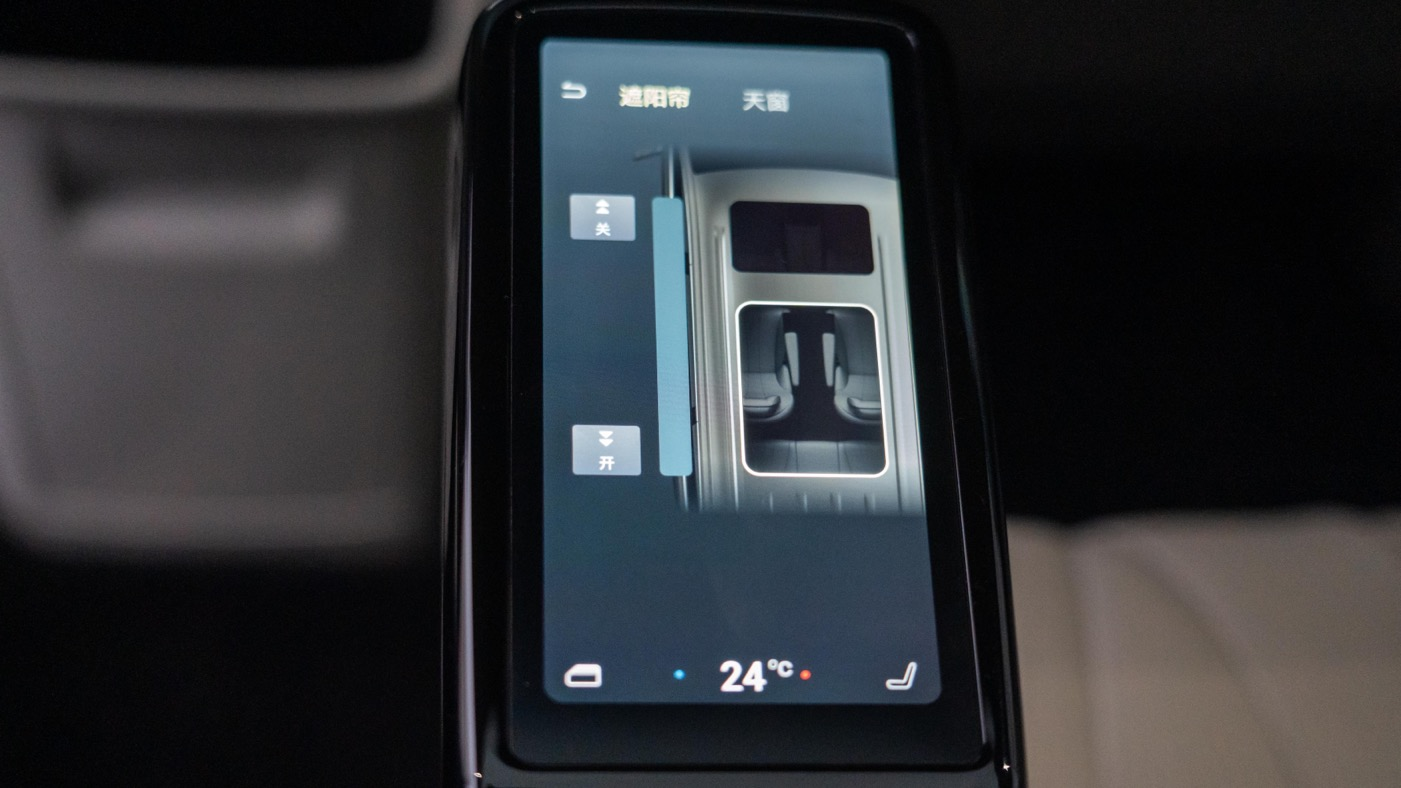
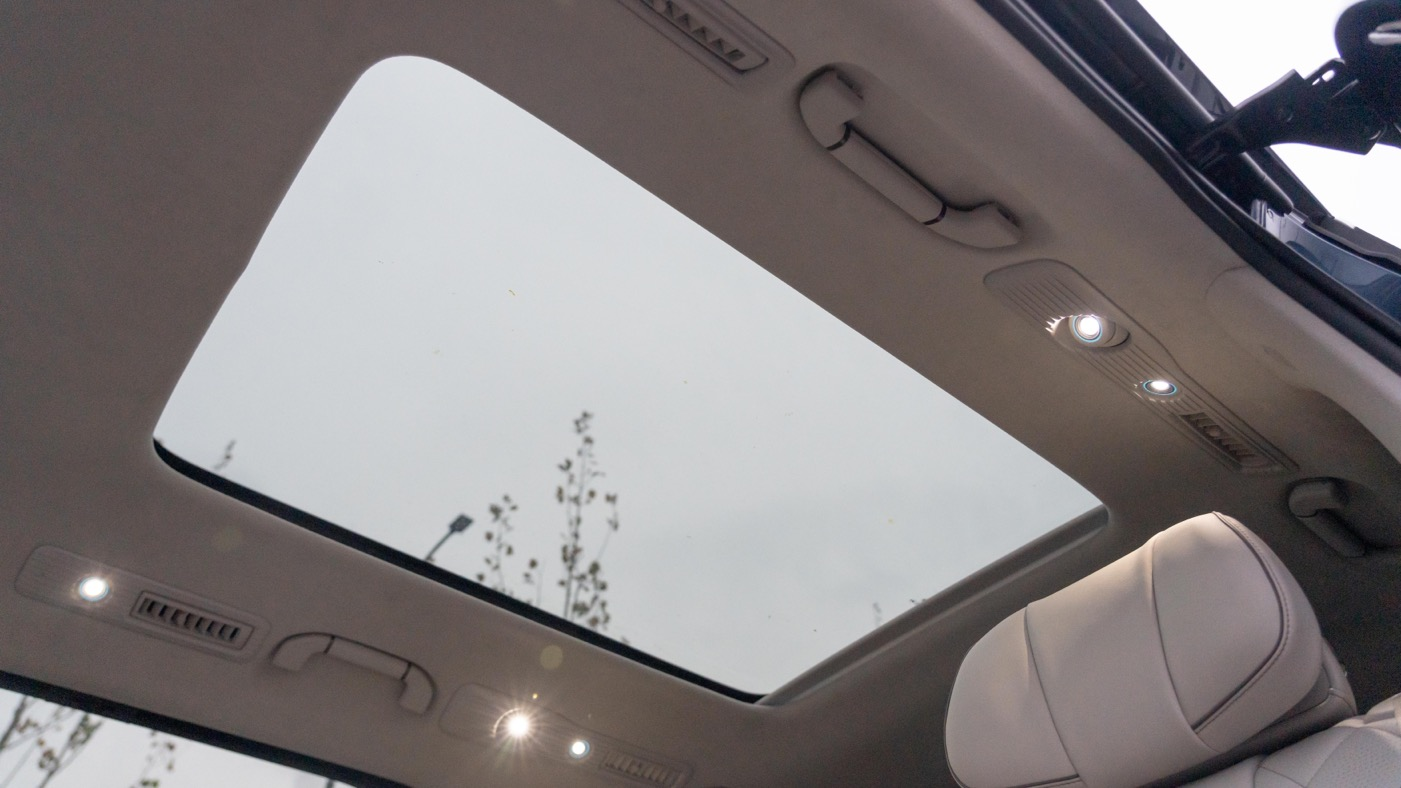
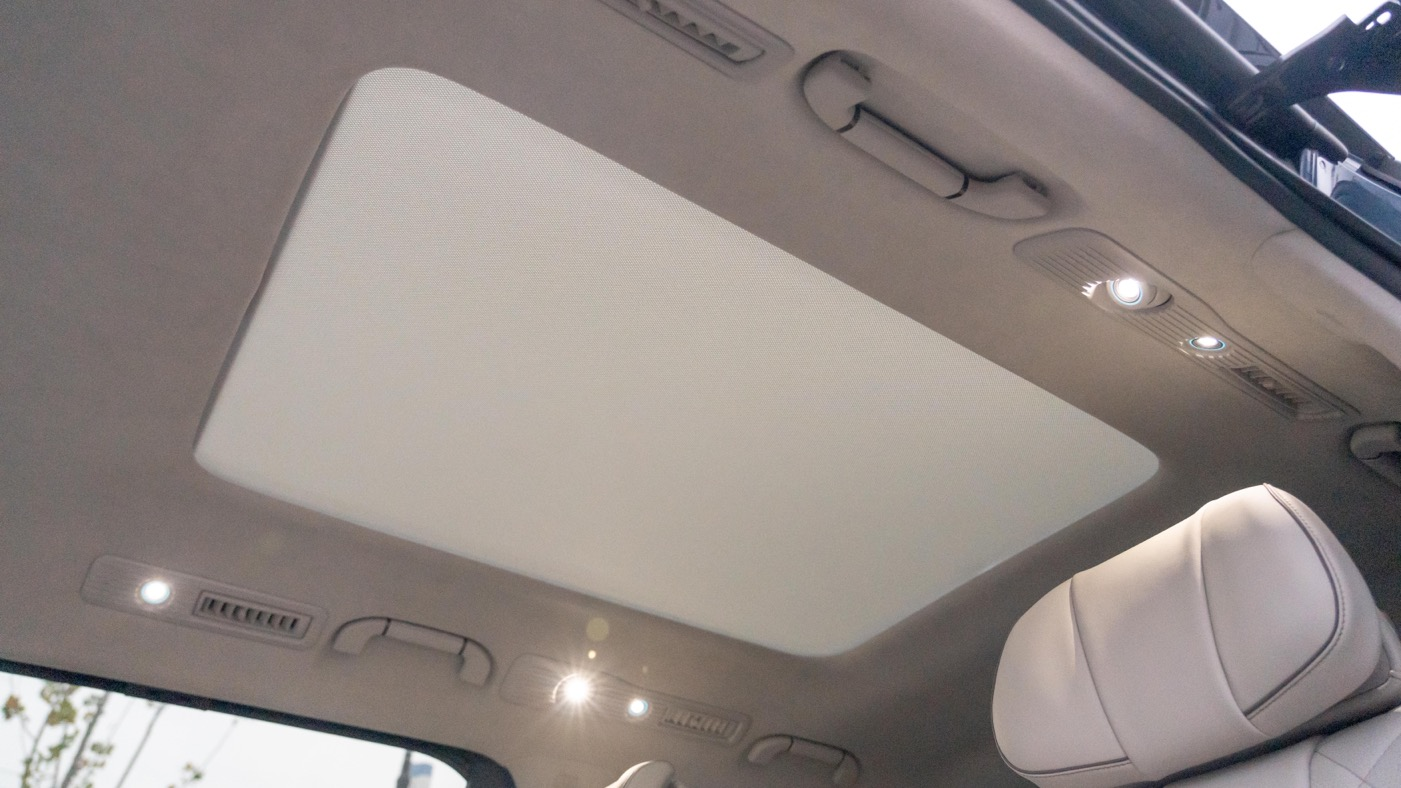
Behind the two front seats, there are two screens. This design was previously only seen in executive level vehicles. Most functions are the same as those on the front center screen, allowing second-row passengers to enjoy multimedia content on this screen.
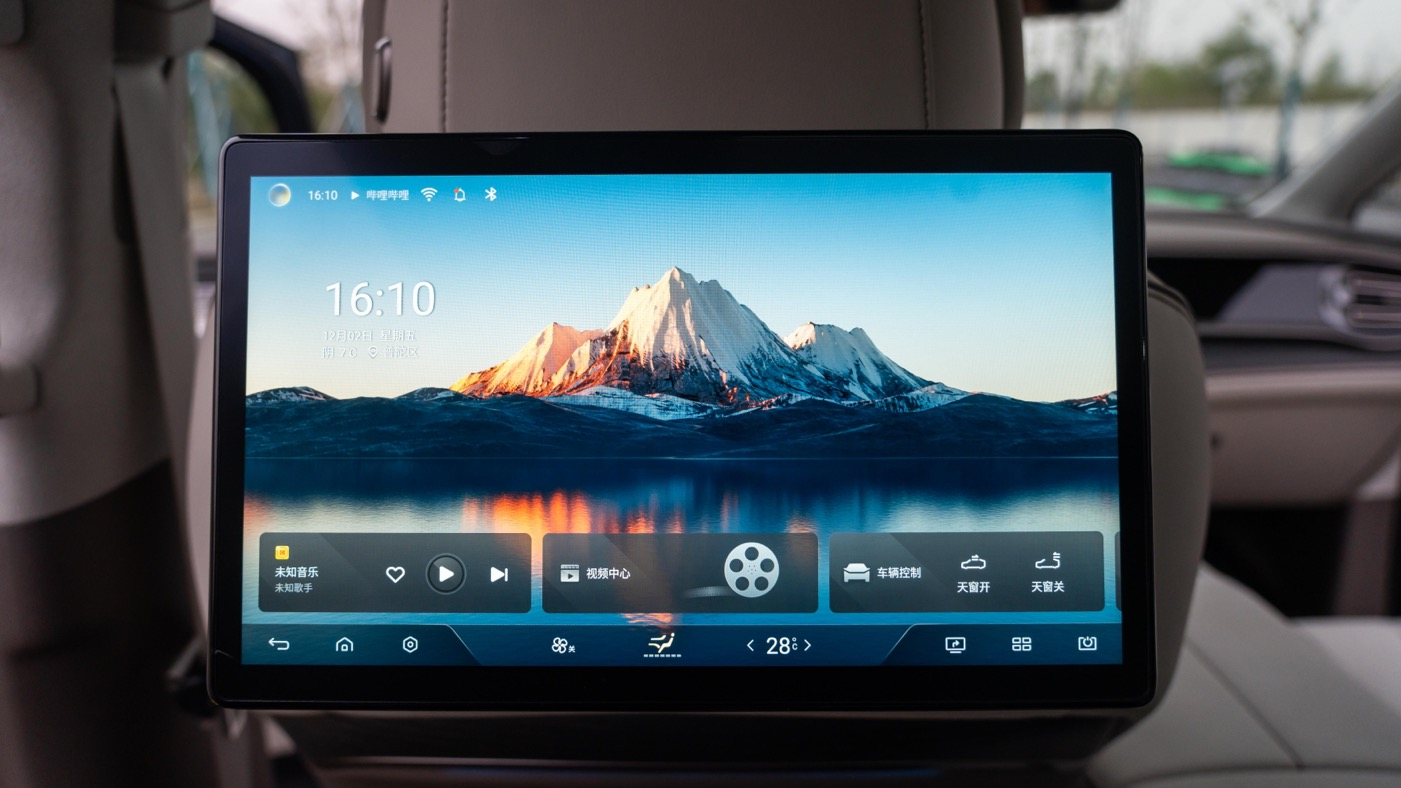
The second-row screen can also control common functions such as audio and air conditioning.
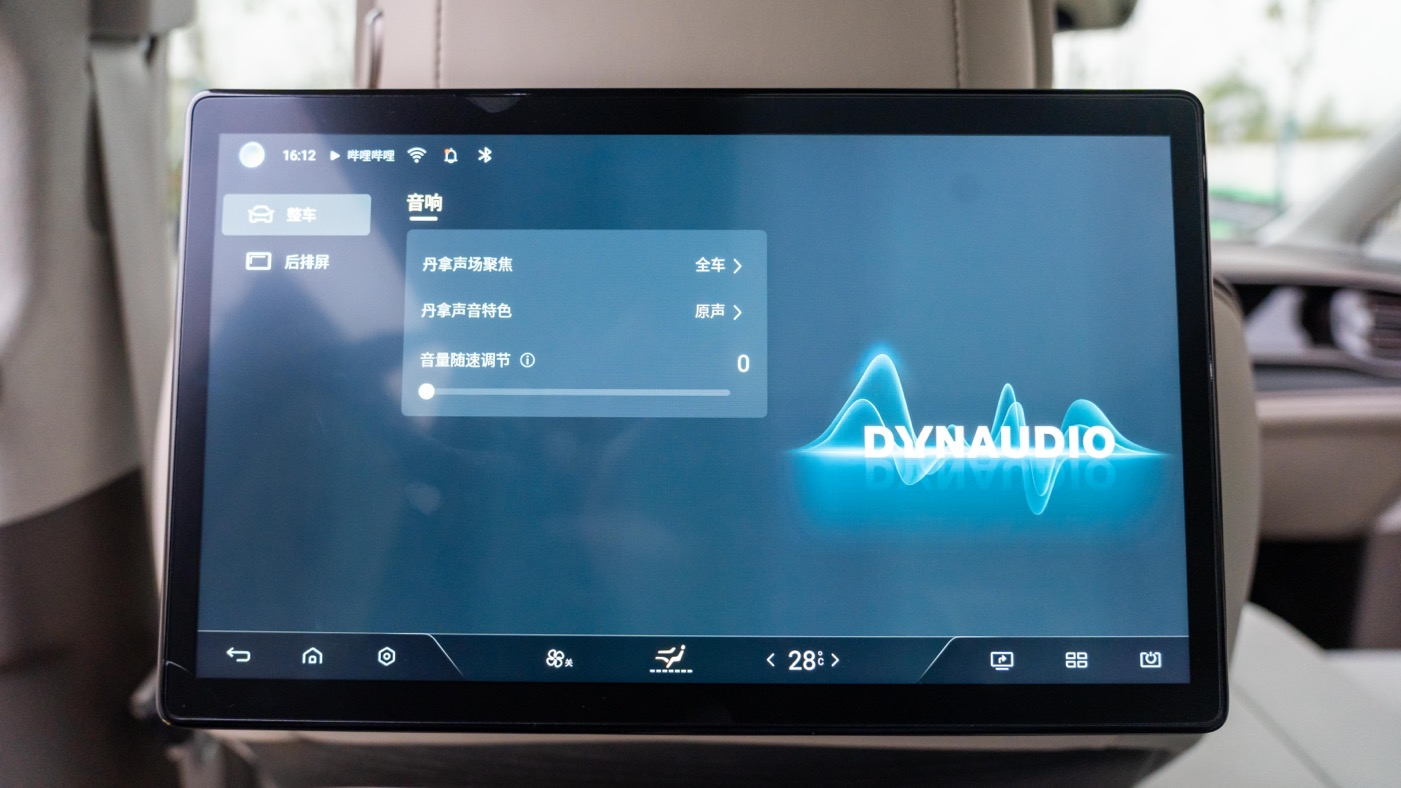
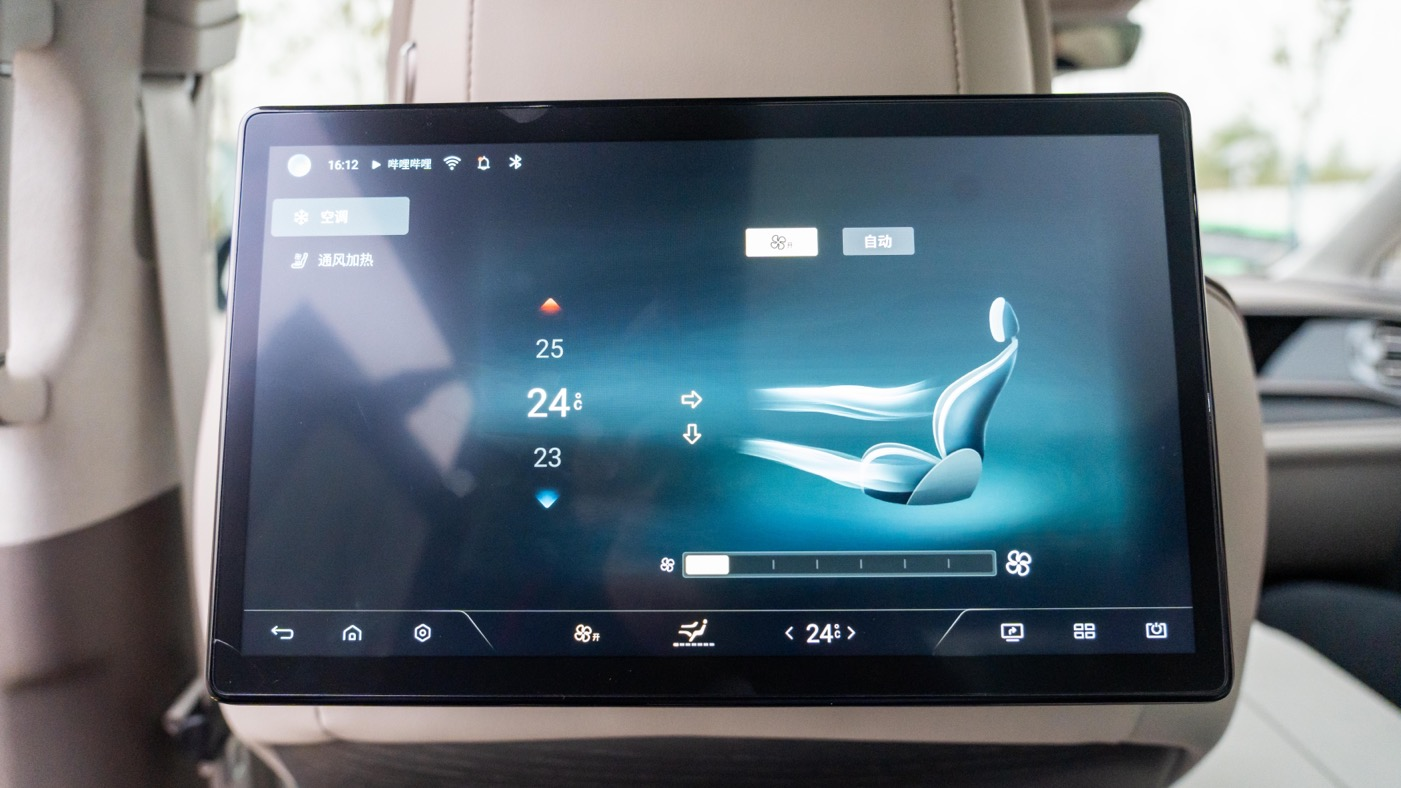
An interesting feature is the multi-screen broadcasting function, which not only allows entertainment content from the rear seats to be projected onto the front seats or another rear screen, but can also be used for business scenarios such as in-car meetings.
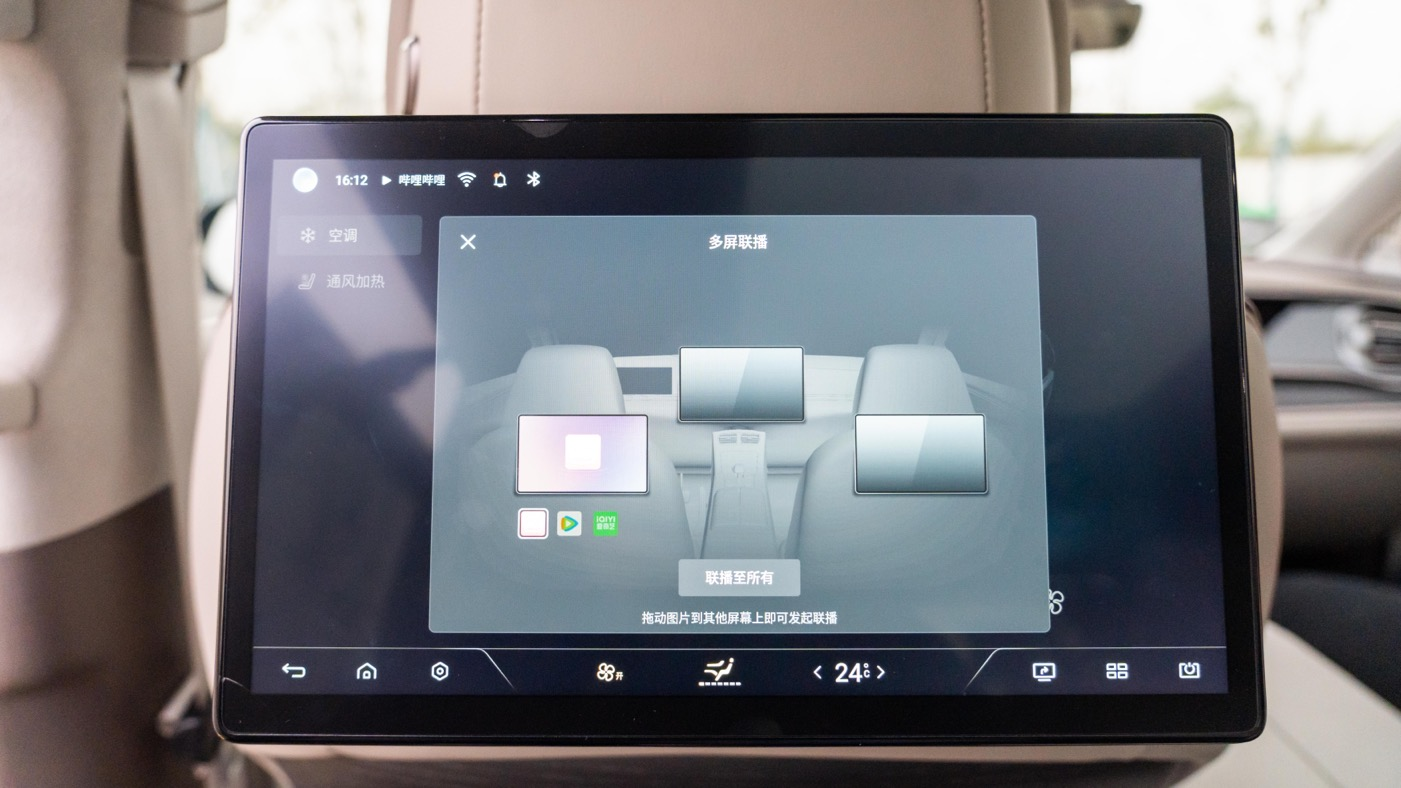
The Dynaudio speakers on the second-row door panel are larger than those on the first row, but the metal cover still has a strong cutting hand feeling.
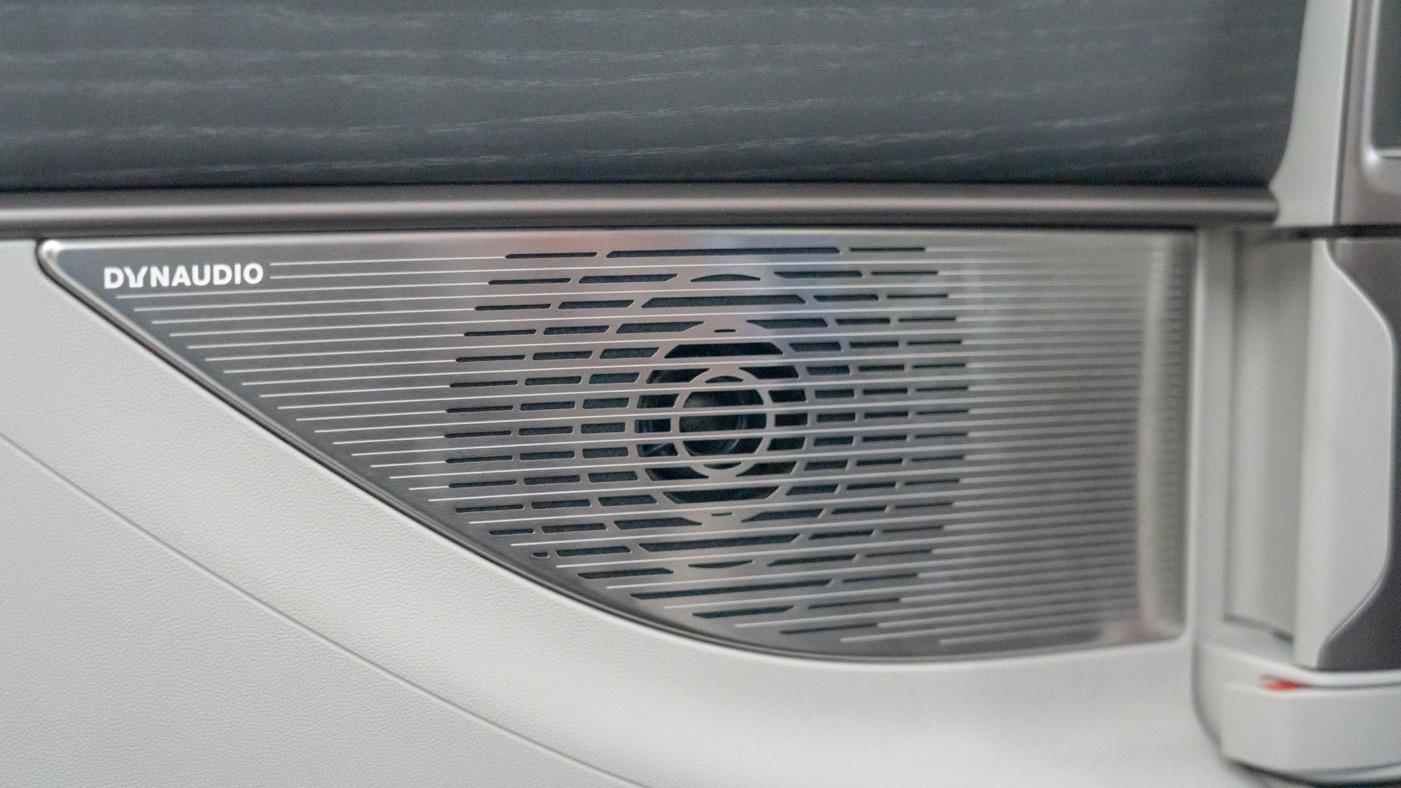
The inside handles of the sliding doors are designed to be pulled forwards and backwards. Simply pull it forward or backward to open or close the door. The button for the second-row window switch is located below the handle.
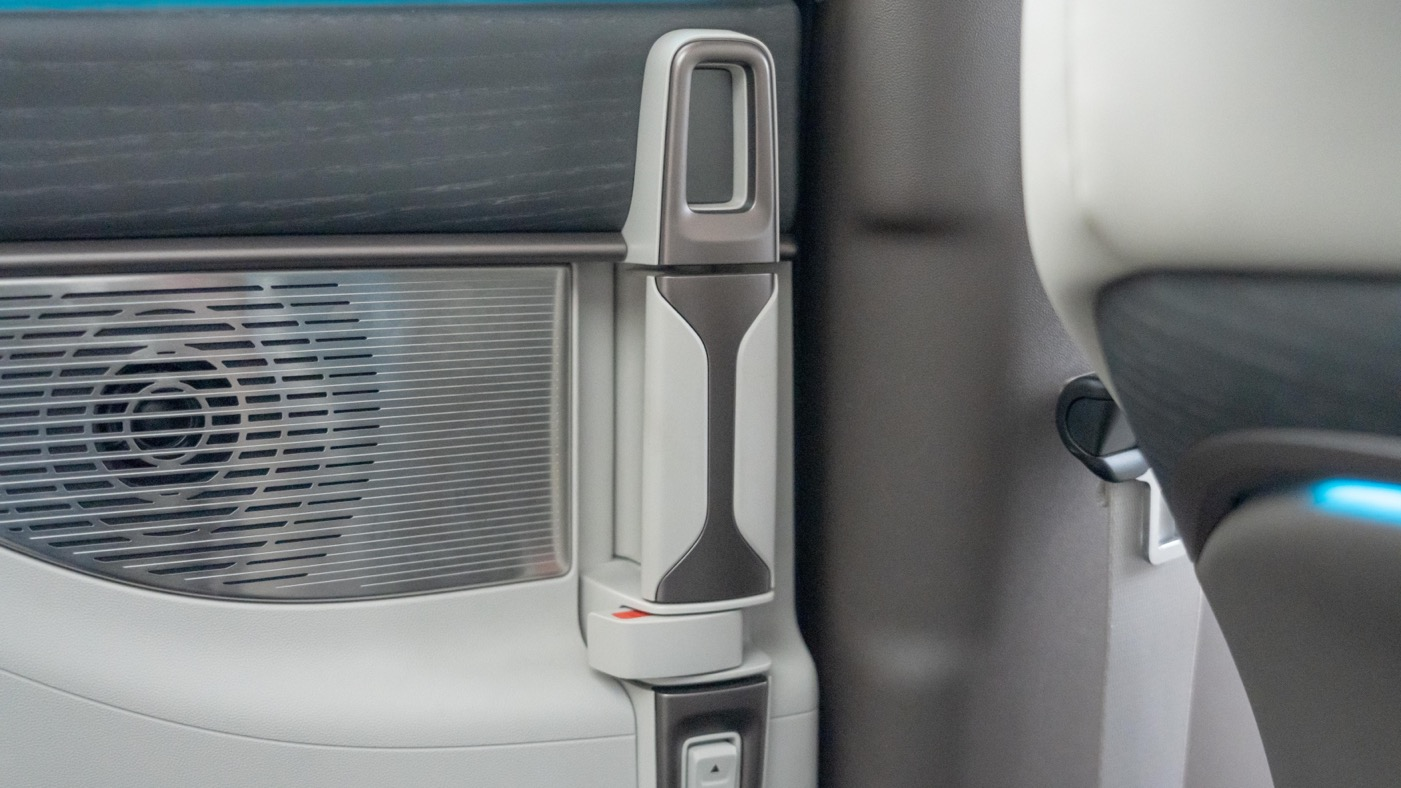
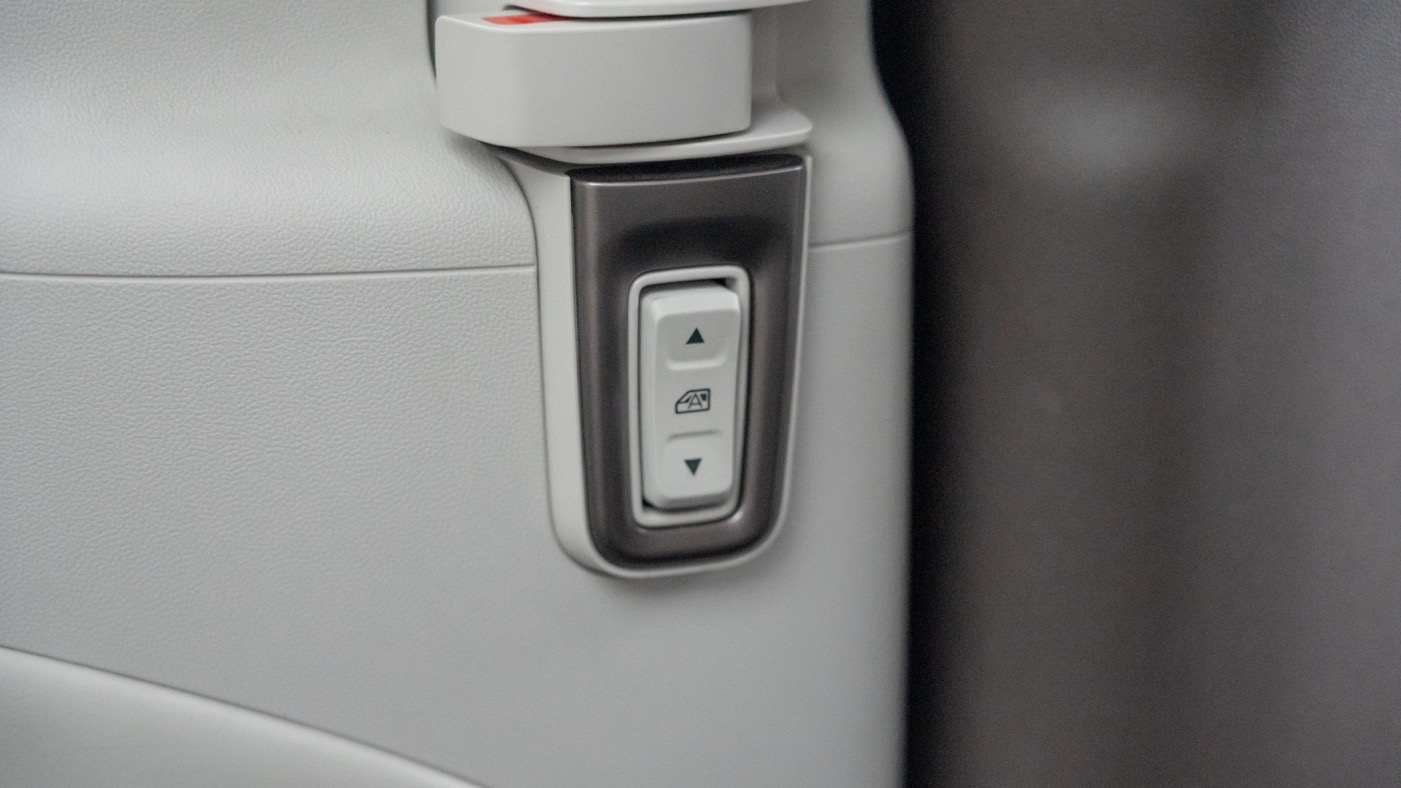 Design a handrail on the B-pillar for the convenience of the second-row passengers to get on and off, especially friendly to the elderly. A part is specially protruded above the handrail, which can be used as a hook.
Design a handrail on the B-pillar for the convenience of the second-row passengers to get on and off, especially friendly to the elderly. A part is specially protruded above the handrail, which can be used as a hook.
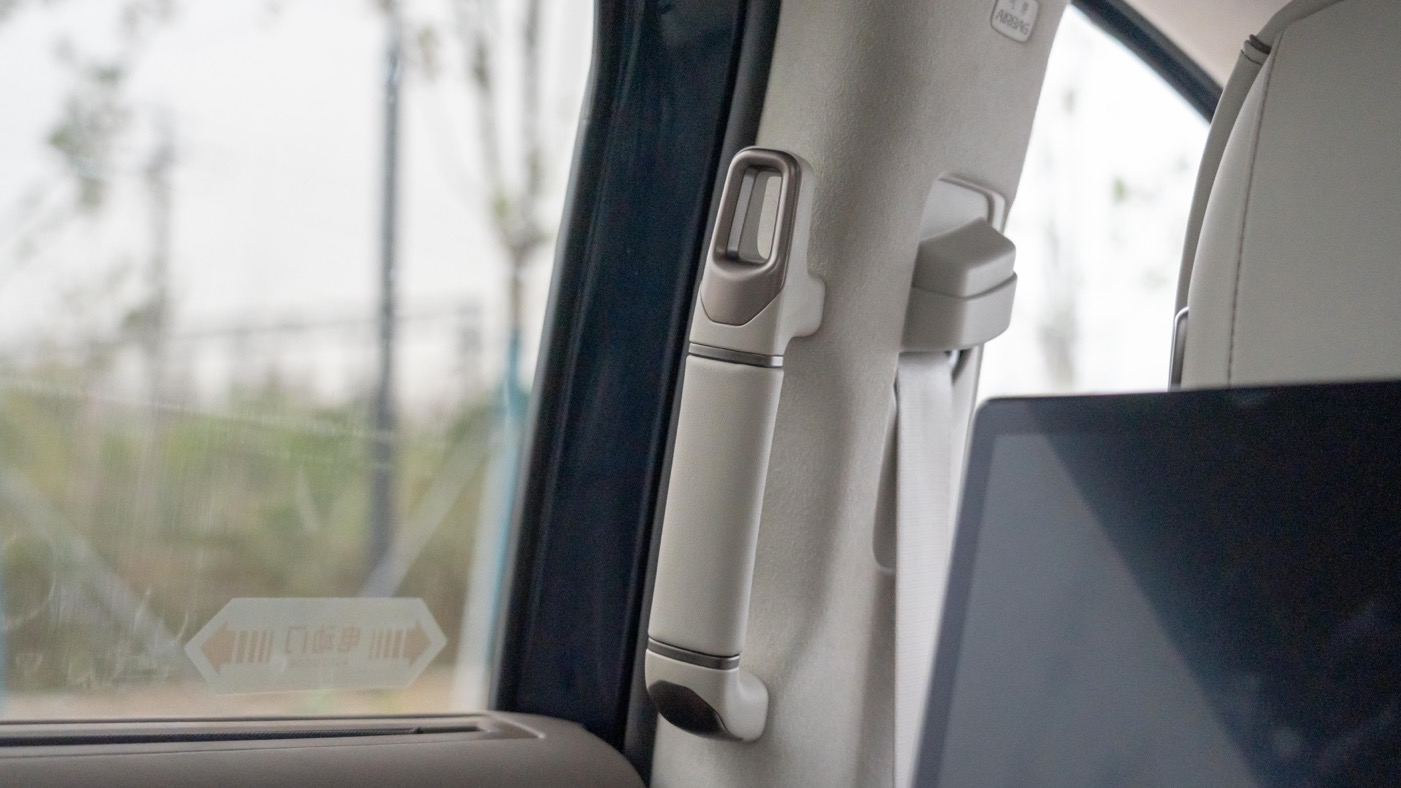
The second-row windows cannot be fully lowered and will protrude a few centimeters outside, but in most cases, they are enough for ventilation.
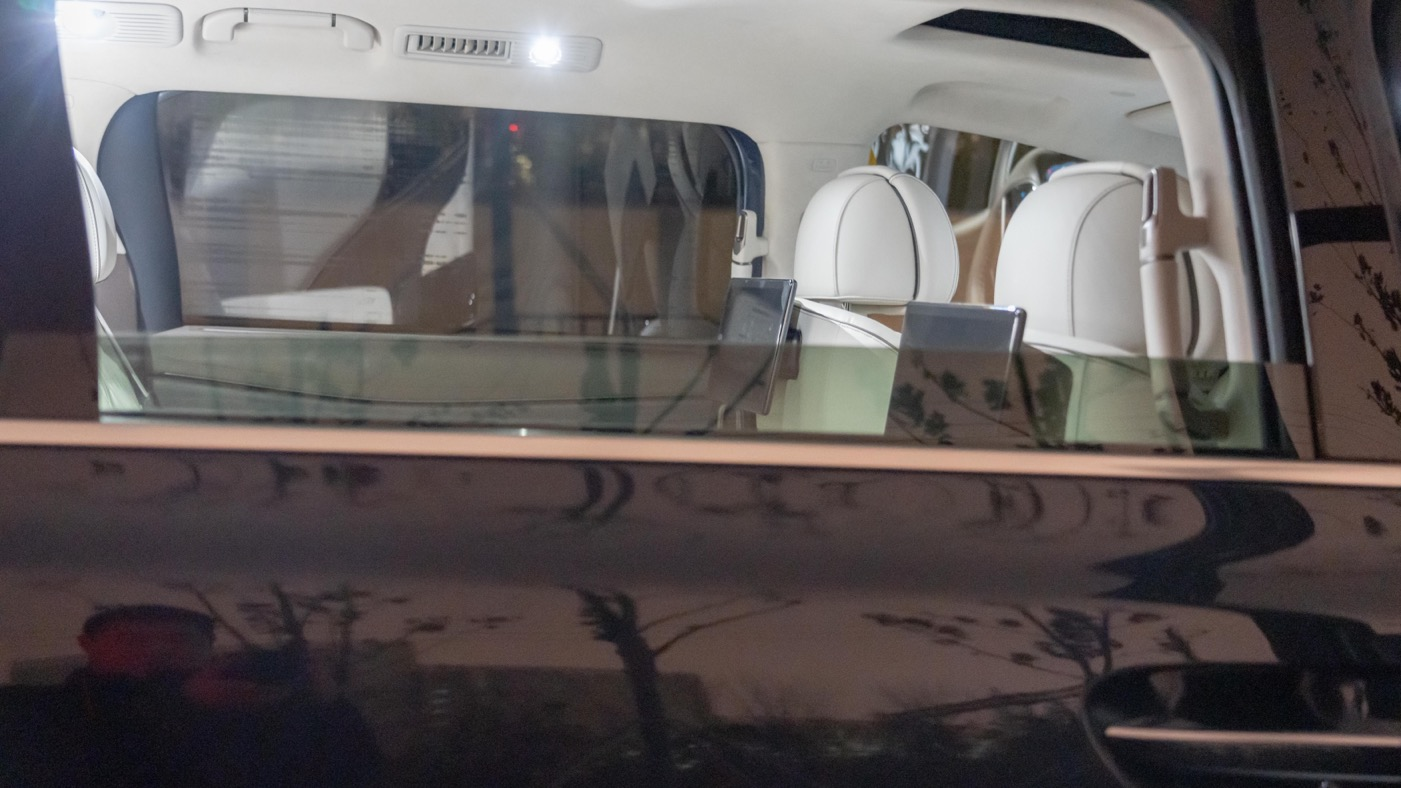
Due to the design of the sliding door, the storage space of the second-row door panel has only one cup holder.
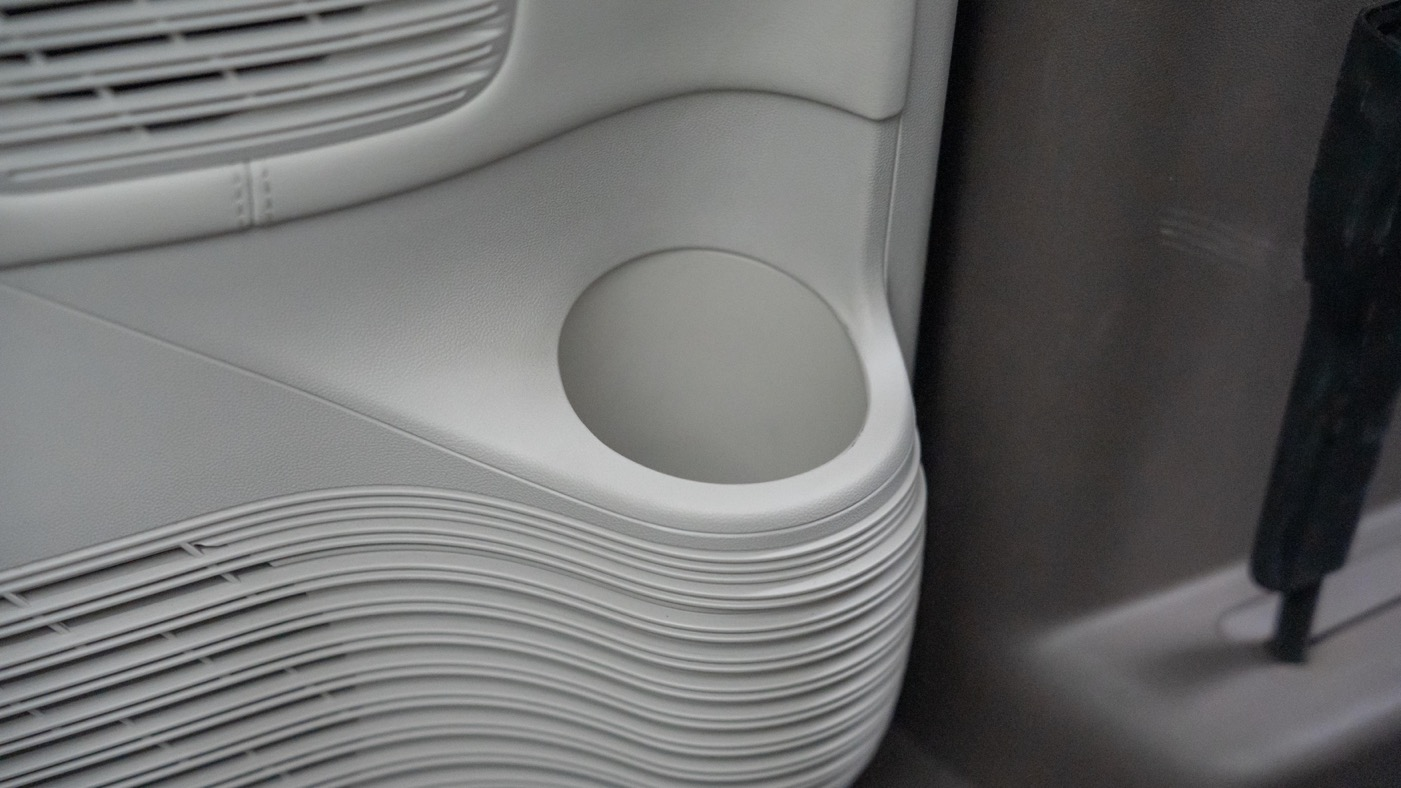
There is a small storage bag behind each of the two seats in the first row, which is usually mainly used to place files. It is more difficult to put drinks and other things.
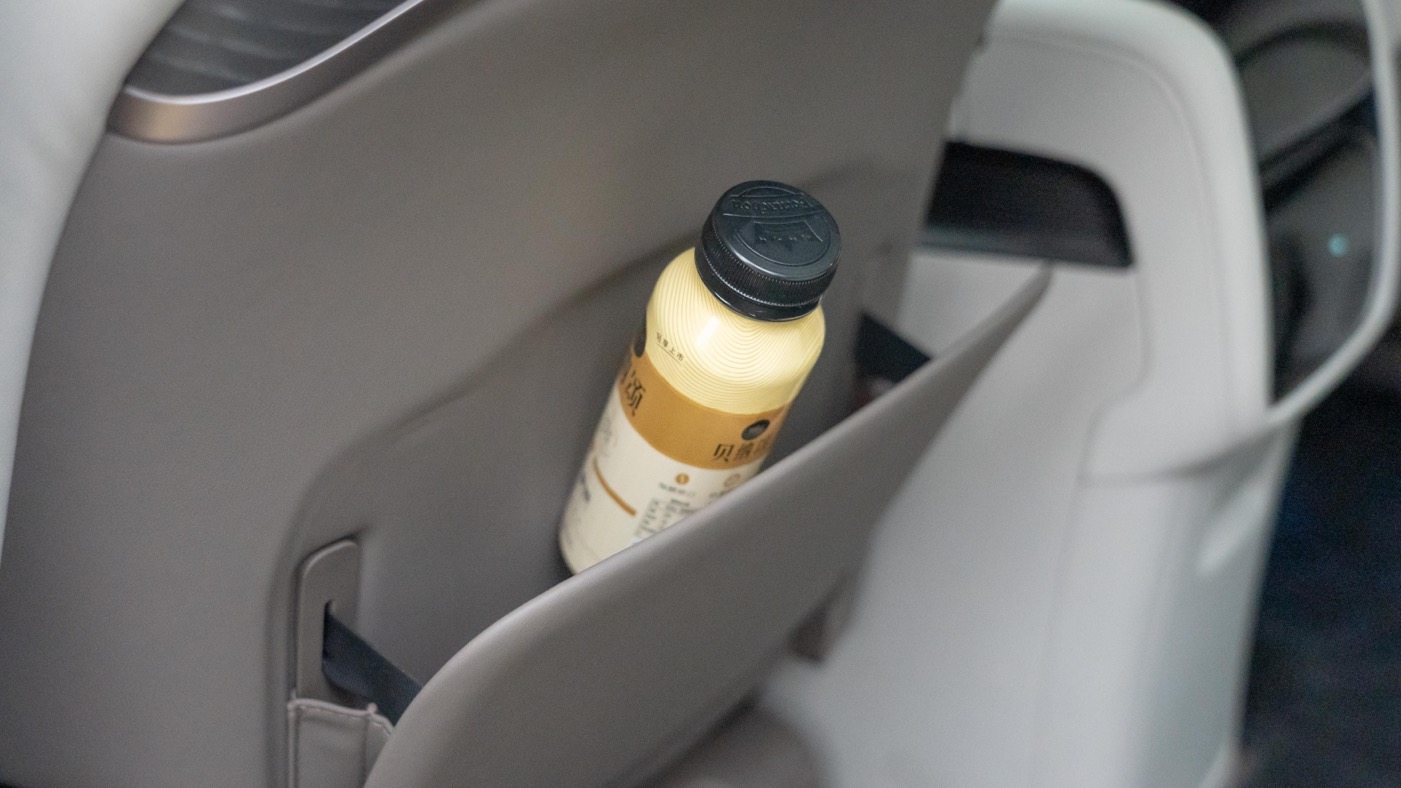
There is a small table board on the left side of the right seat in the second row. When unfolded, there are two cup holders and a small storage area. When not in use, it can be retracted to make way for the aisle.
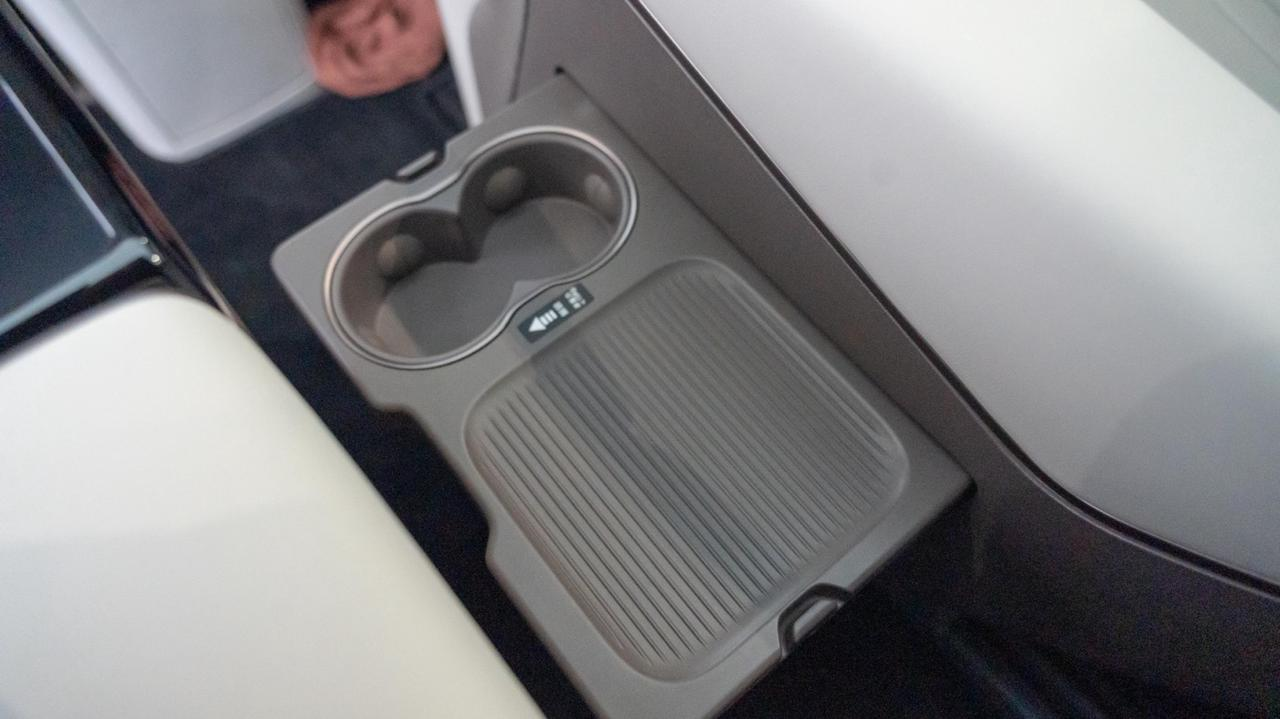
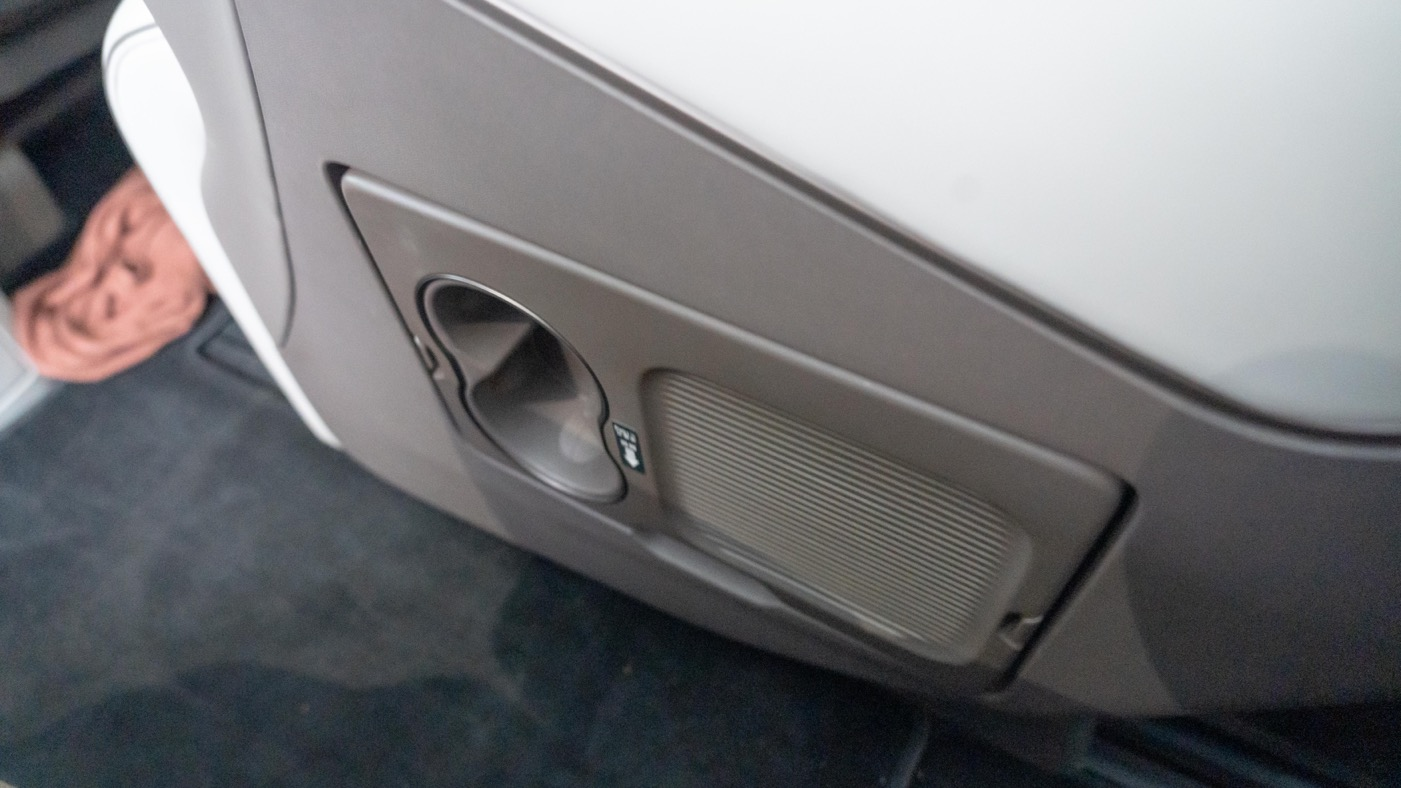
Due to the aisle between the two seats in the second row, getting in and out of the third row will be much more convenient than models without aisles.
All the handrails of the whole car are wrapped with soft materials, not hard plastics, and the feel is better.
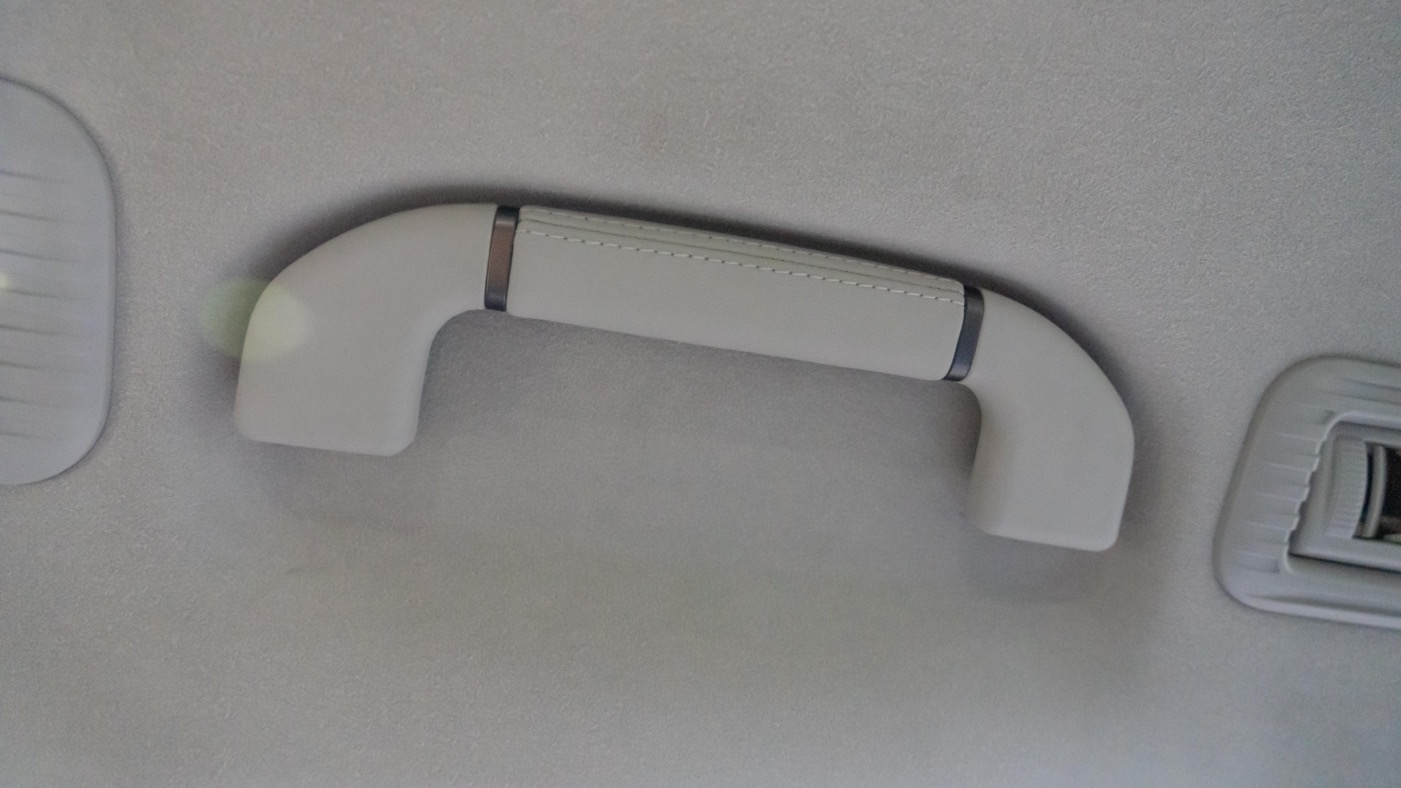
The second-row air outlet is located at the top of the vehicle on both sides, and it is also physically adjustable. There are second-row reading lights next to it.
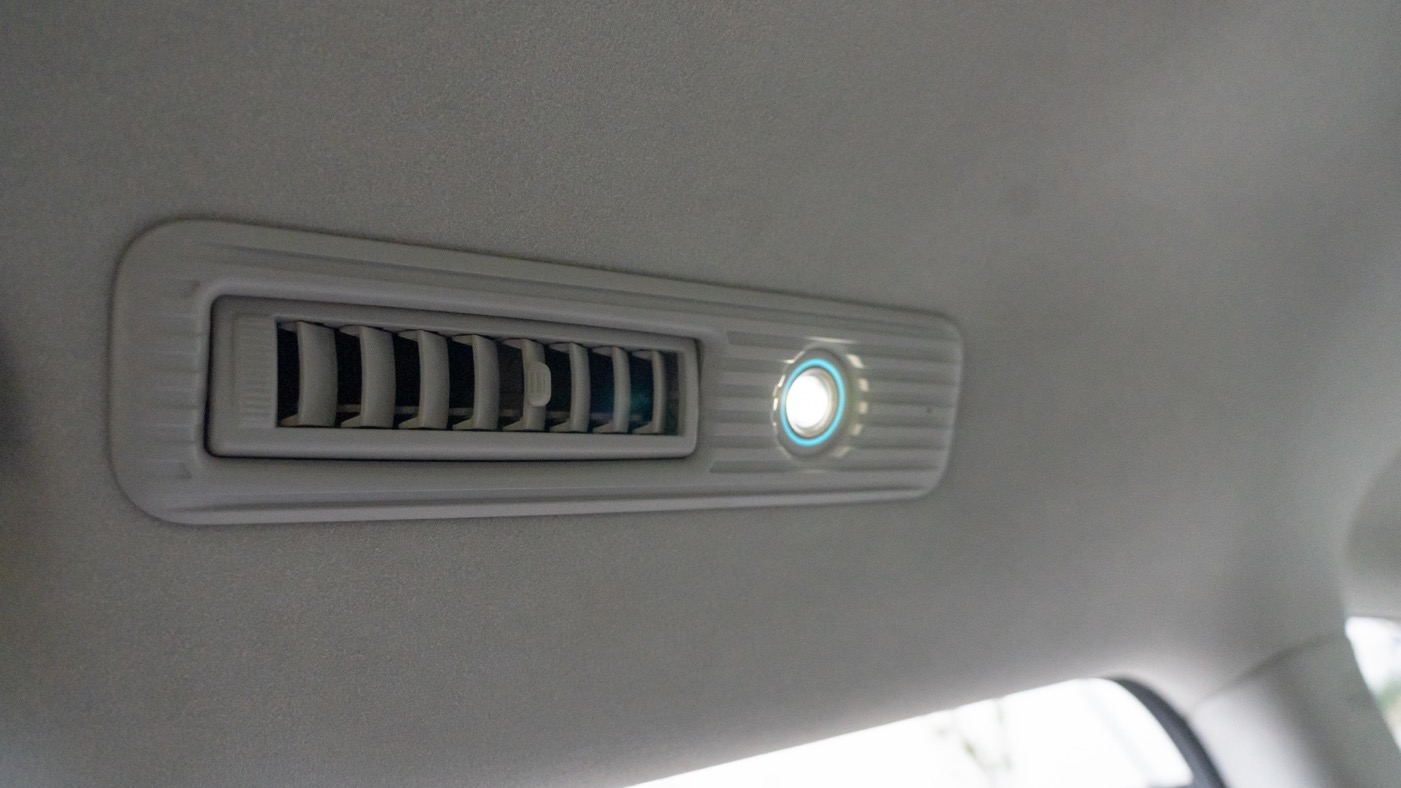
Third row seats
The headrest size of the seats in the third row is smaller than that of the second row.
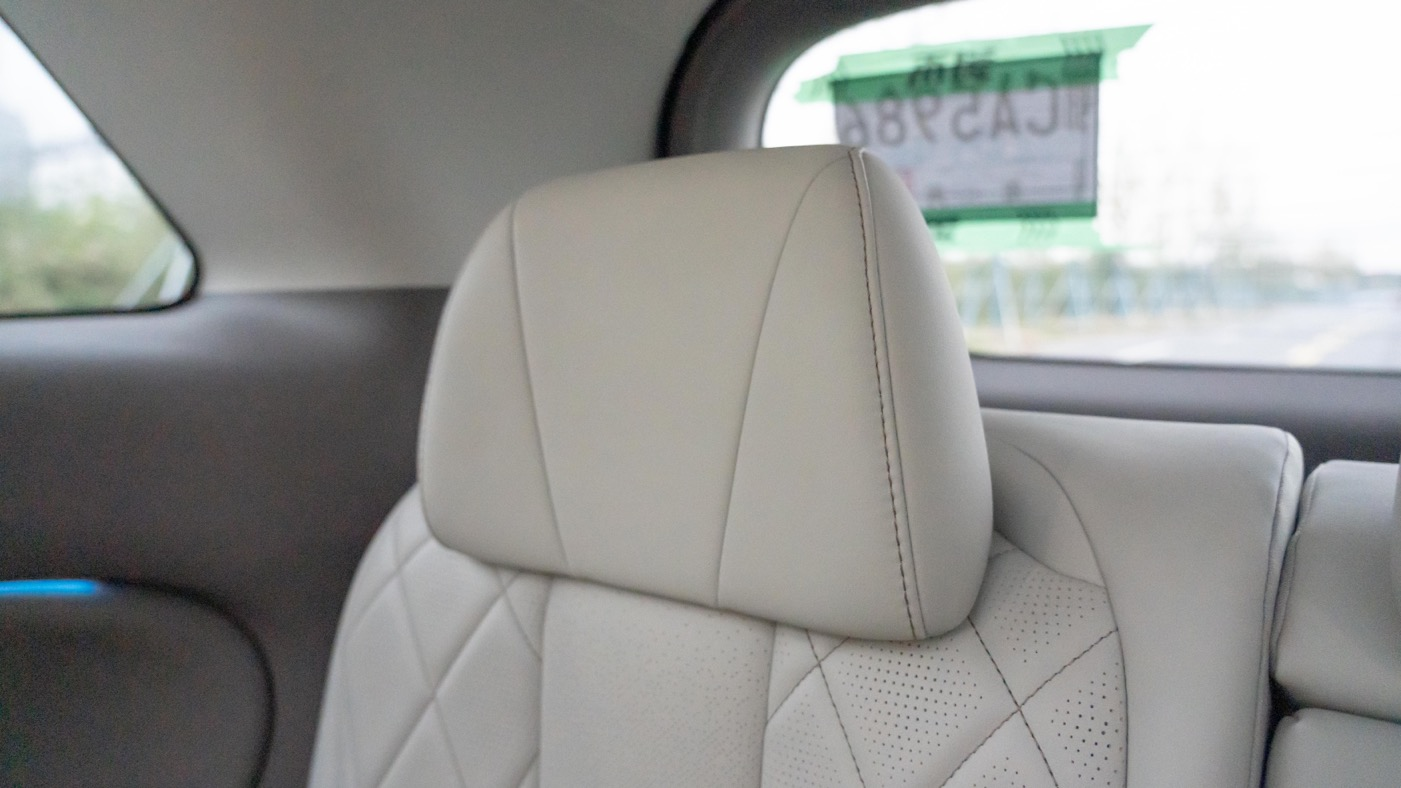
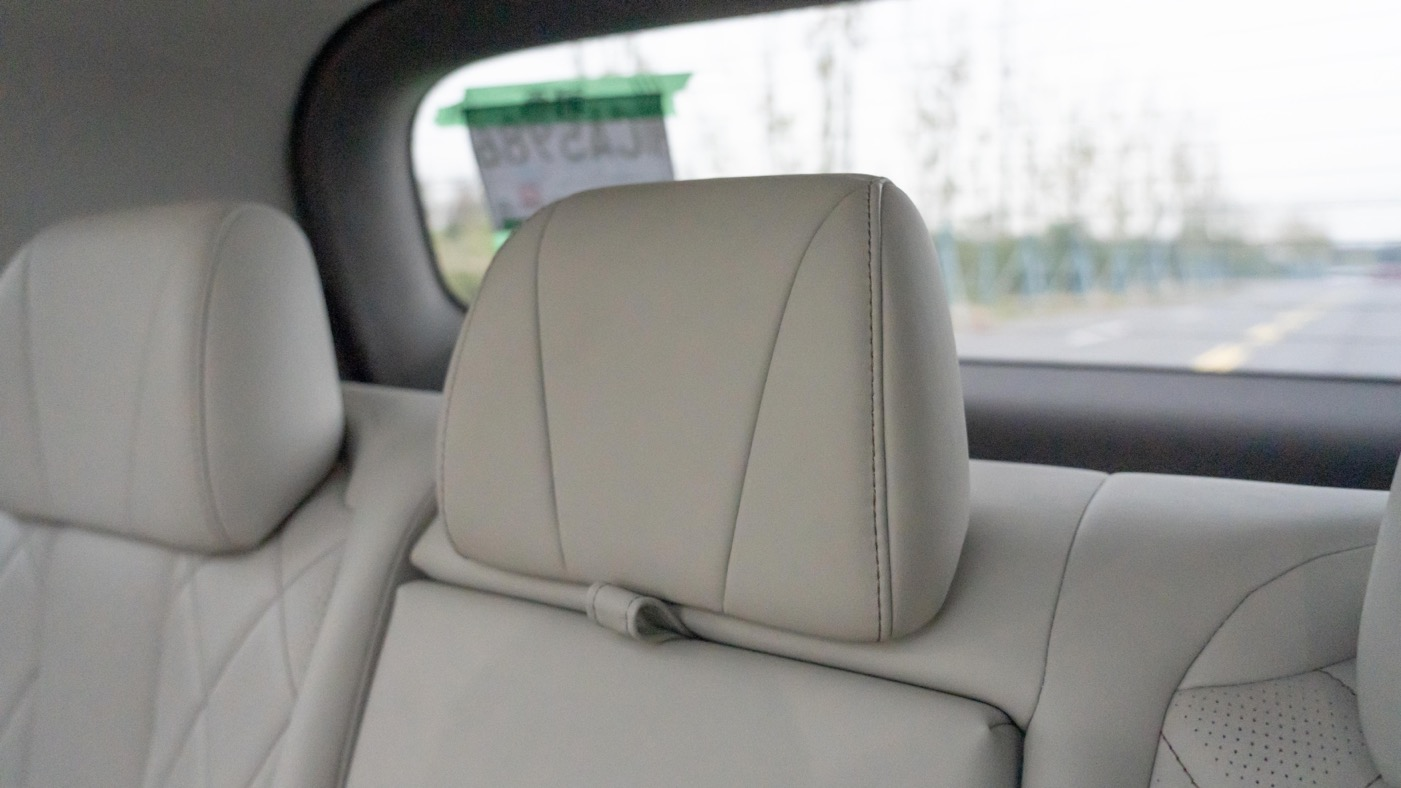
Maybe the seats in the second row are adjusted too comfortably. The posture of Little Doraemon in the third row is clearly not as comfortable as that in the second row. If the seats in the second row are adjusted to one and a half fists leg space, the seating space in the third row can still be ensured.
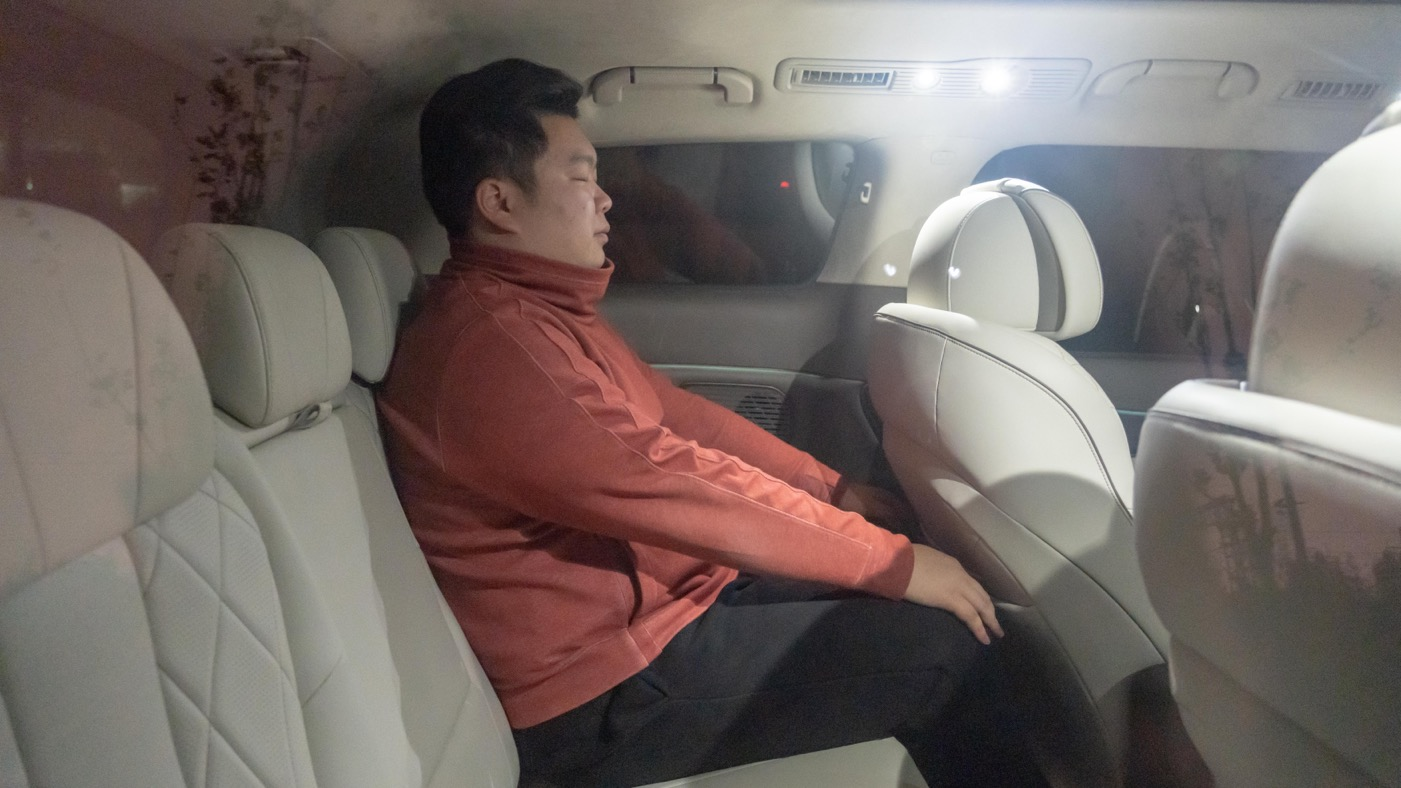
At this time, the legroom is one fist, and the headroom is only one finger long. Although the space is not large, the seat cushion in the third row is thick enough and relatively soft, so the seat comfort is still guaranteed.
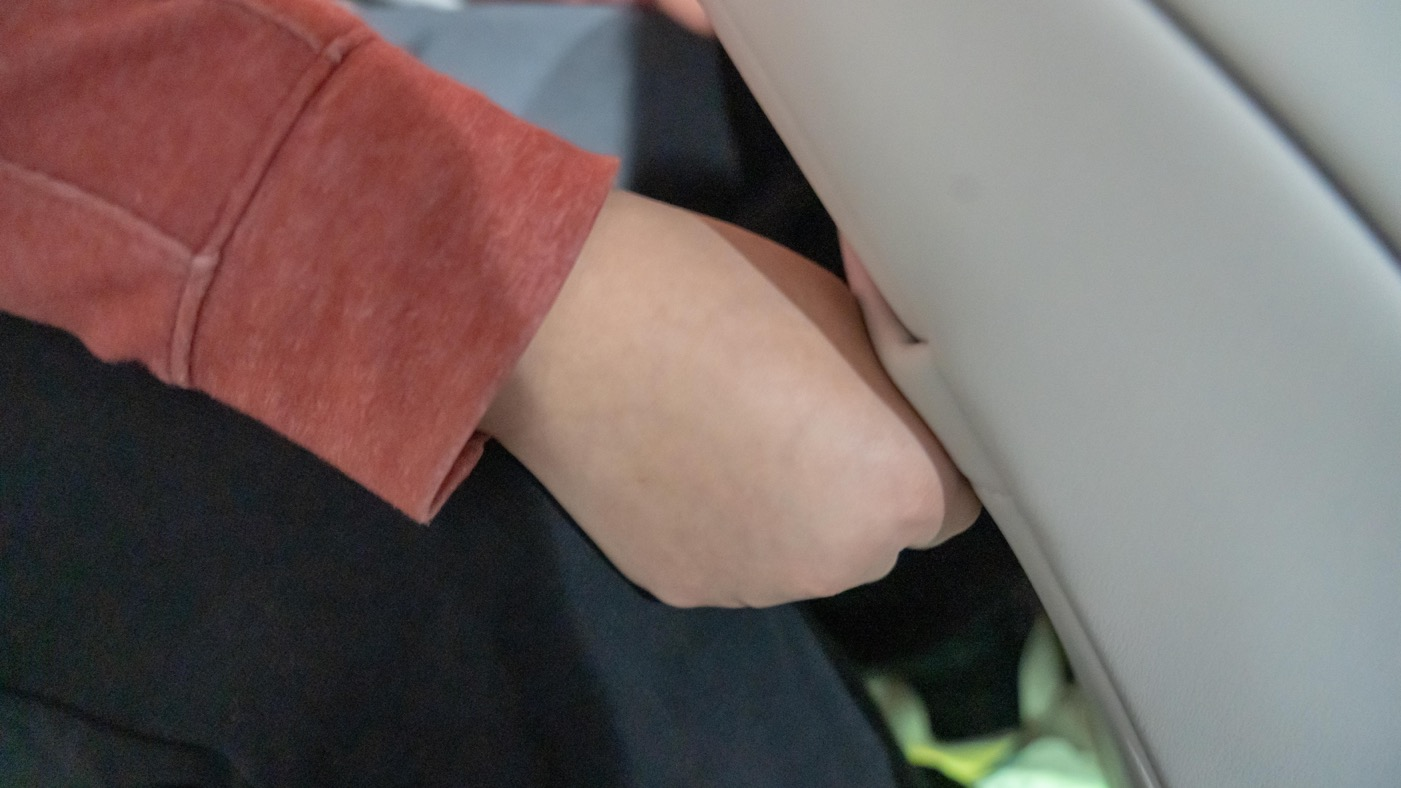

The third-row seats also have child seat interfaces. If you don’t want to sacrifice the best riding experience in the second row, you can put the child seat in the third row.

The middle armrest in the third row is really just an armrest without a cup holder inside.
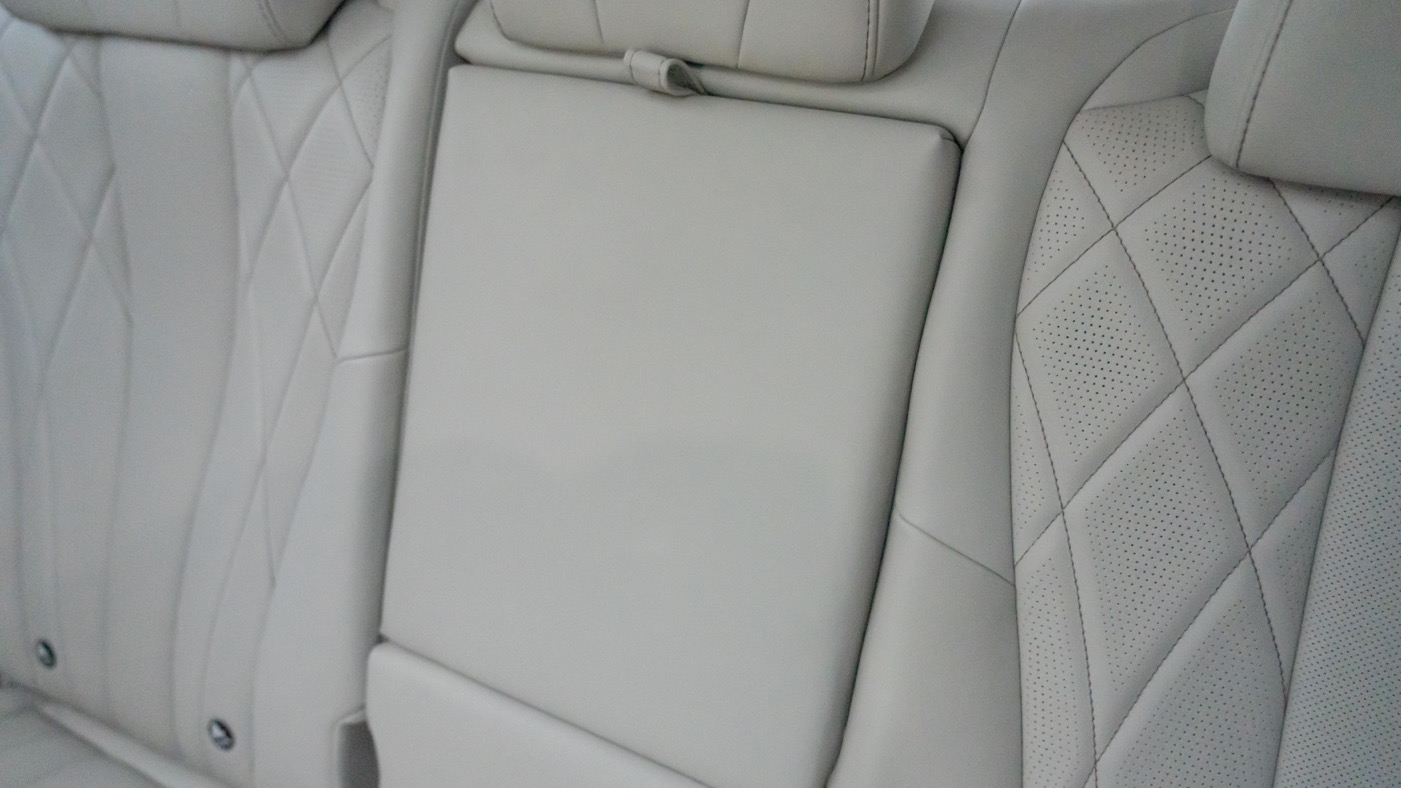
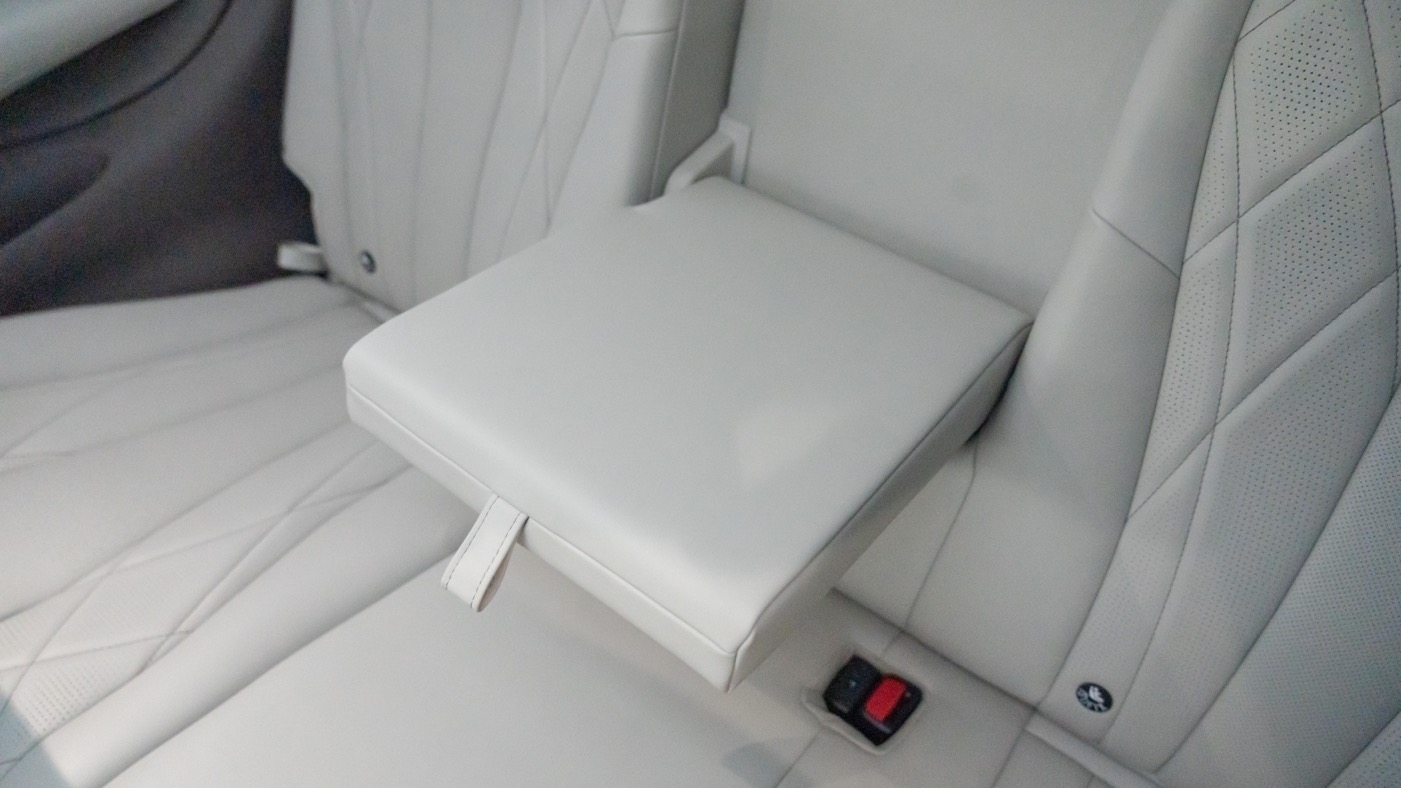
The seat belt of the middle seat in the third row is placed on the roof.
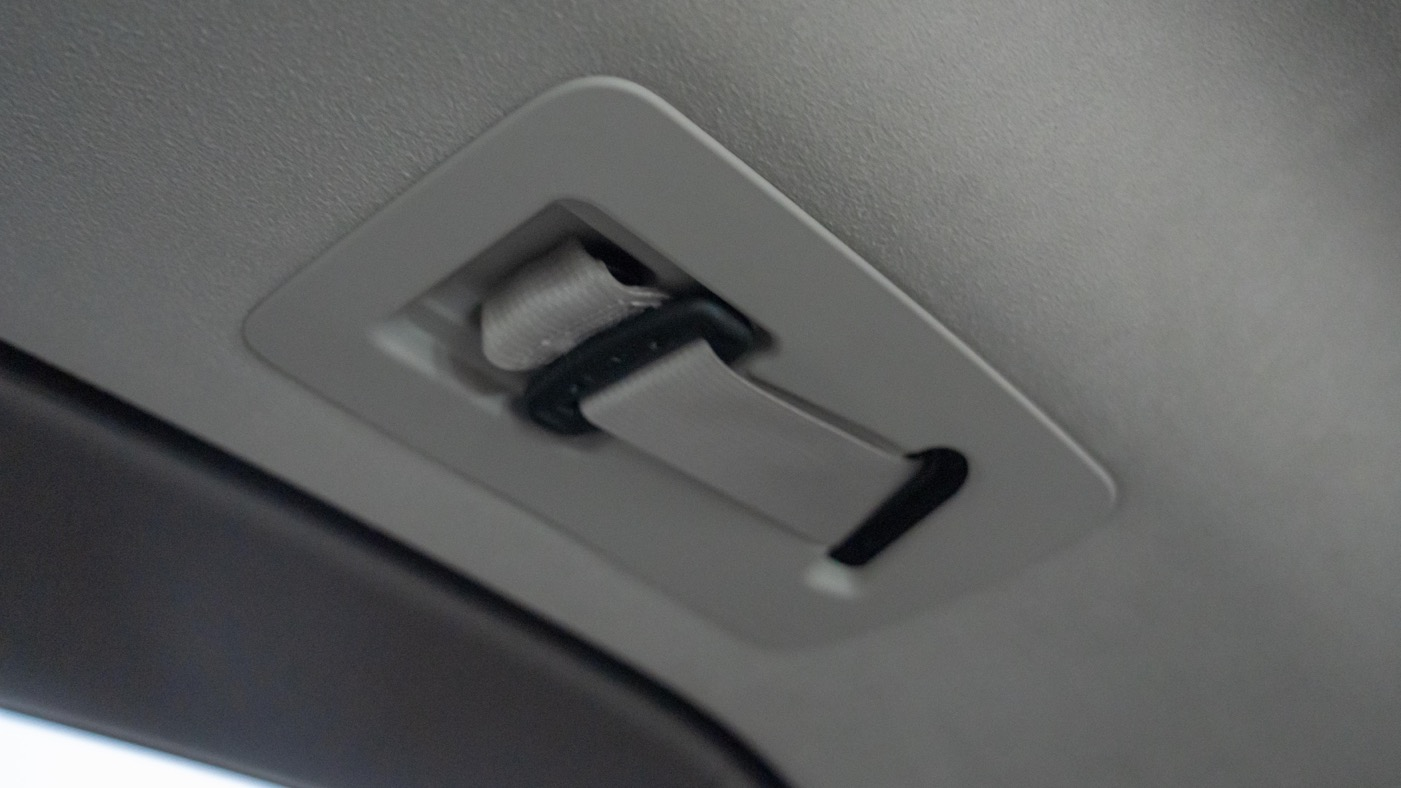
There are two cup holders on each side of the third row, with a total of four cup holders. Above the cup holders are the speakers. The metal cover can be sharp.
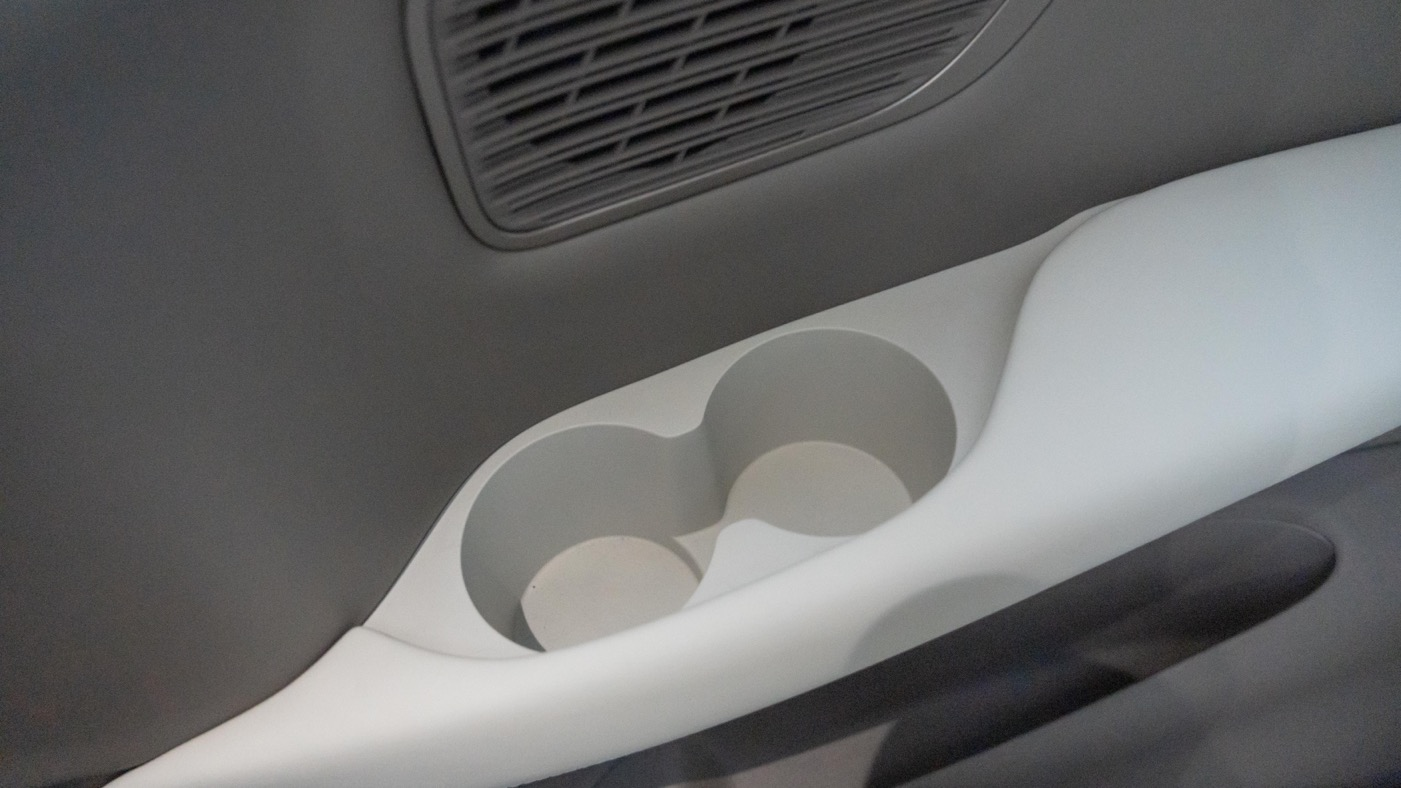
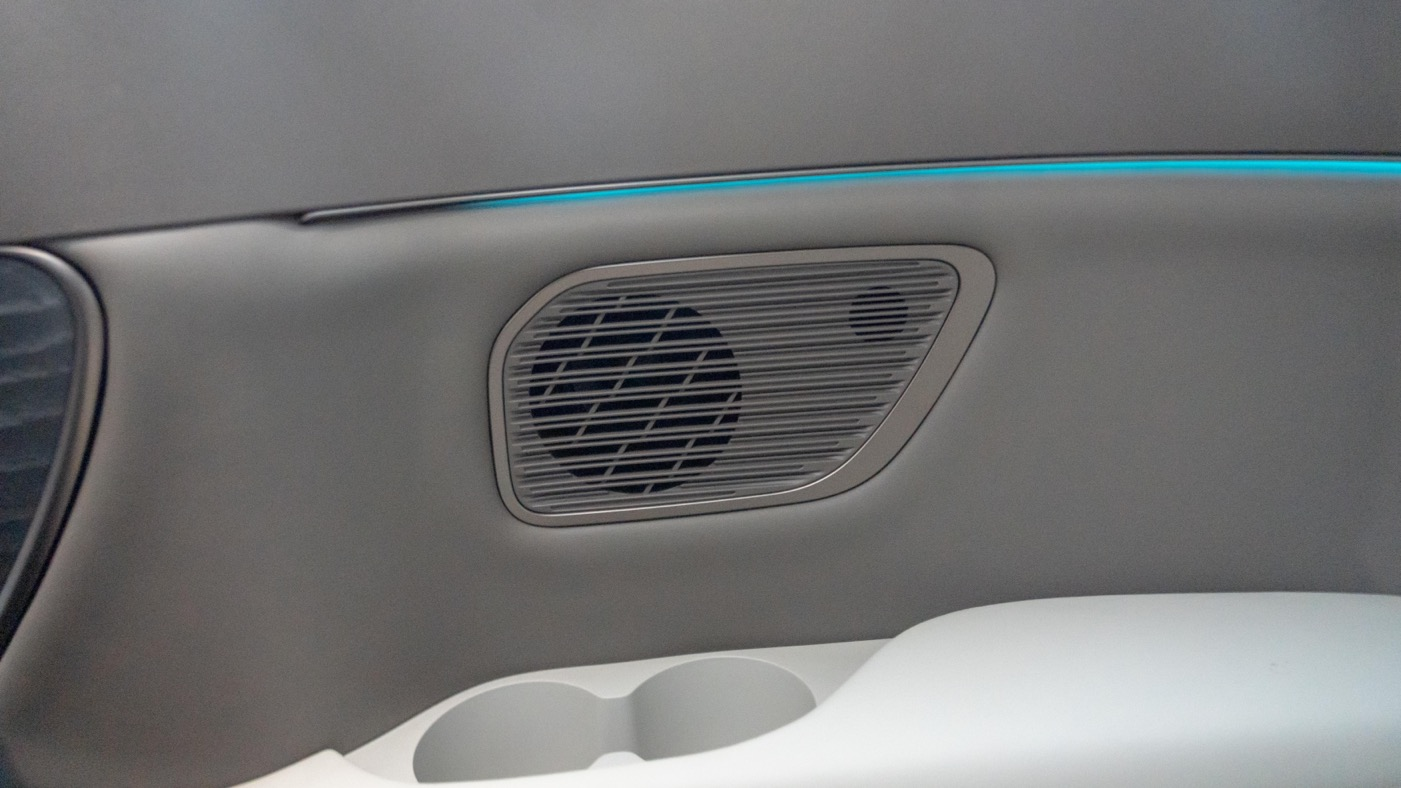
There is a Type A charging port on each side with no silicone cover. There is also a small storage slot next to it, which may be for placing a phone.
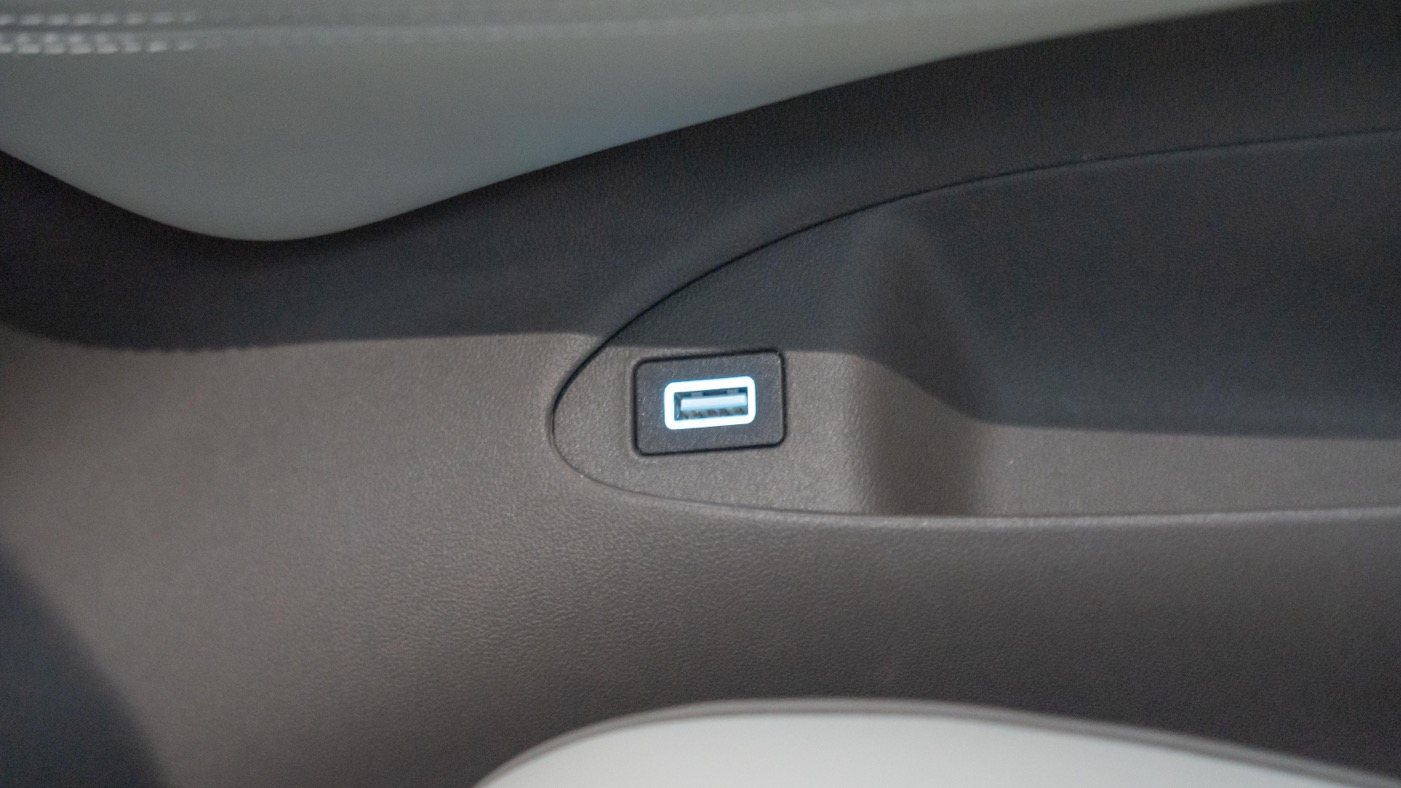
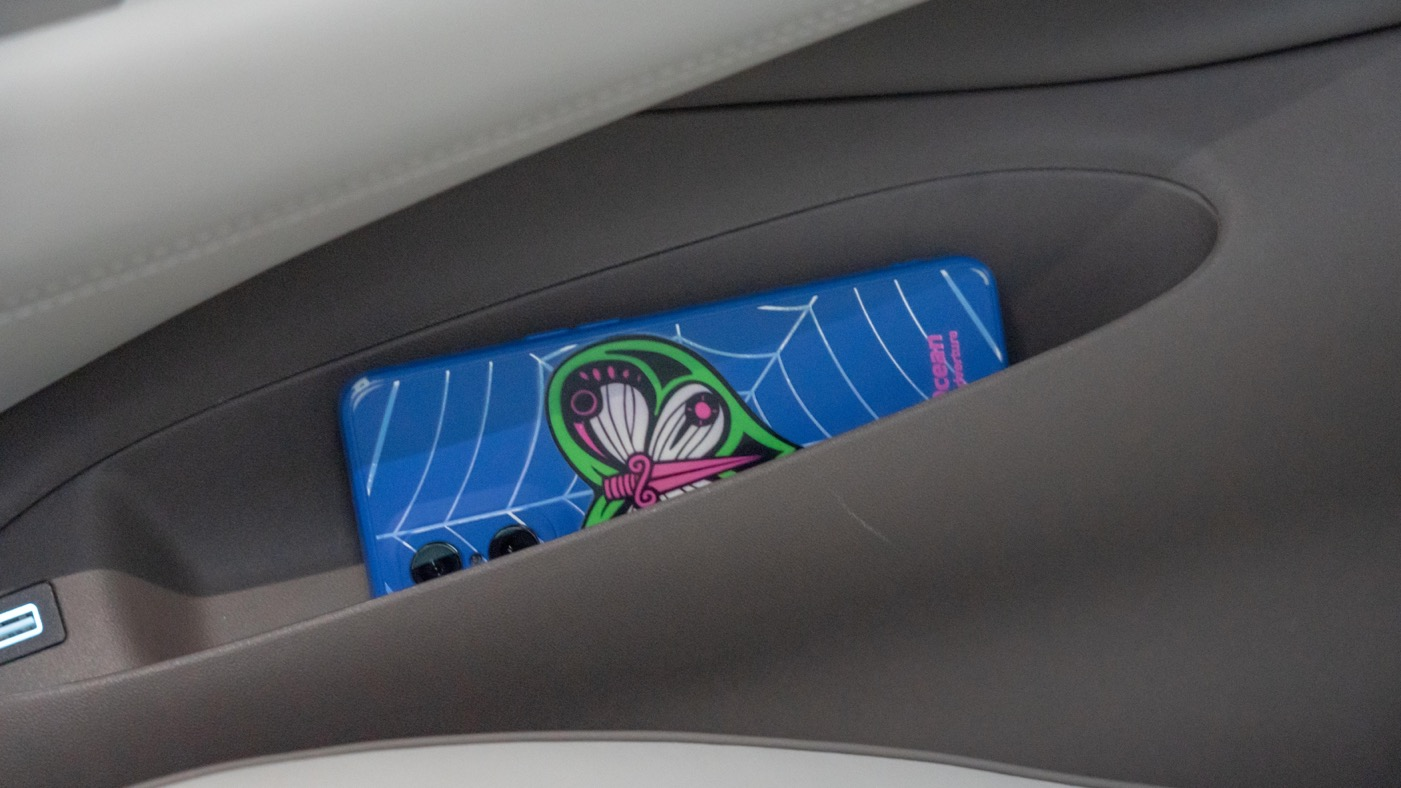
The window of the third row is not particularly small, at least it does not feel particularly oppressive. There is a hook on each of the C-pillars on both sides of the third row.
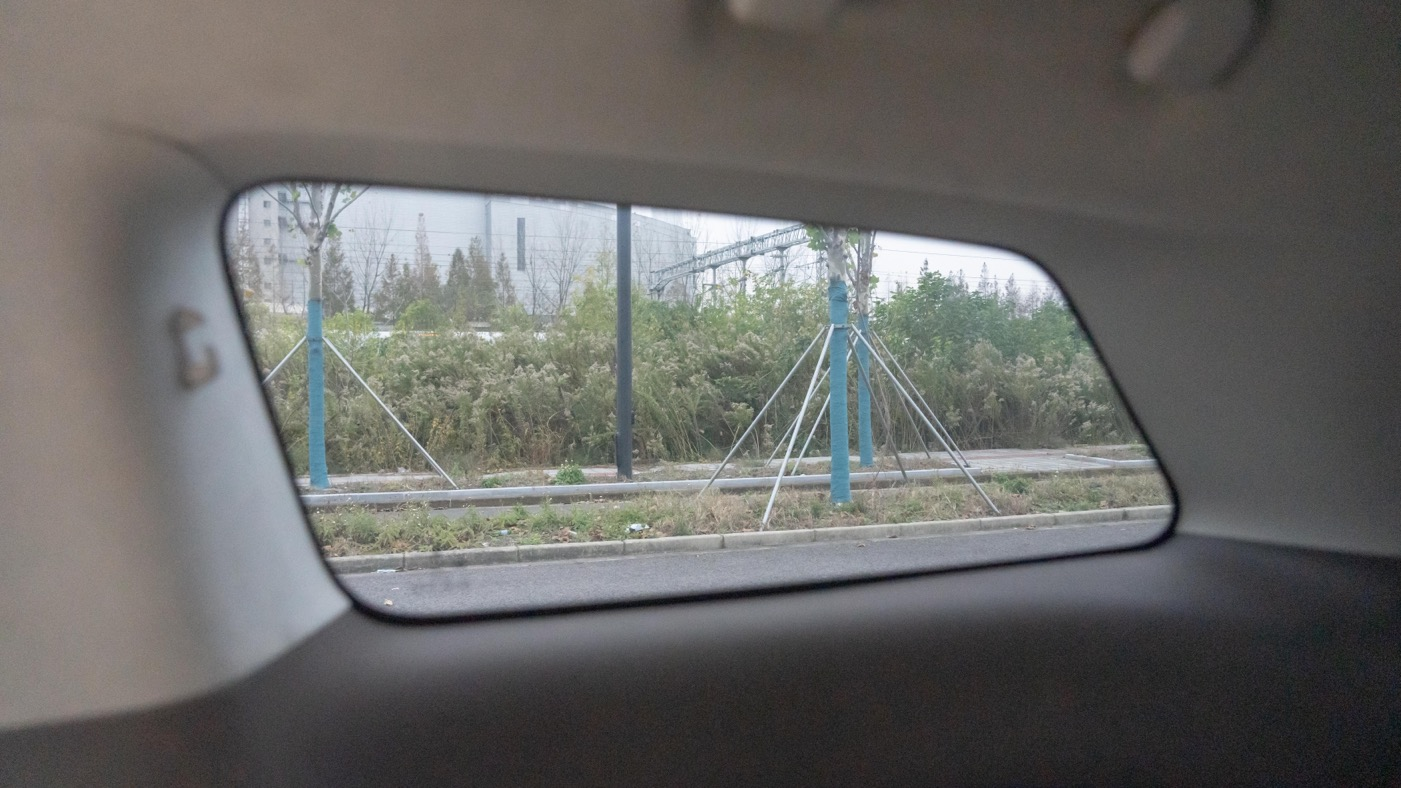
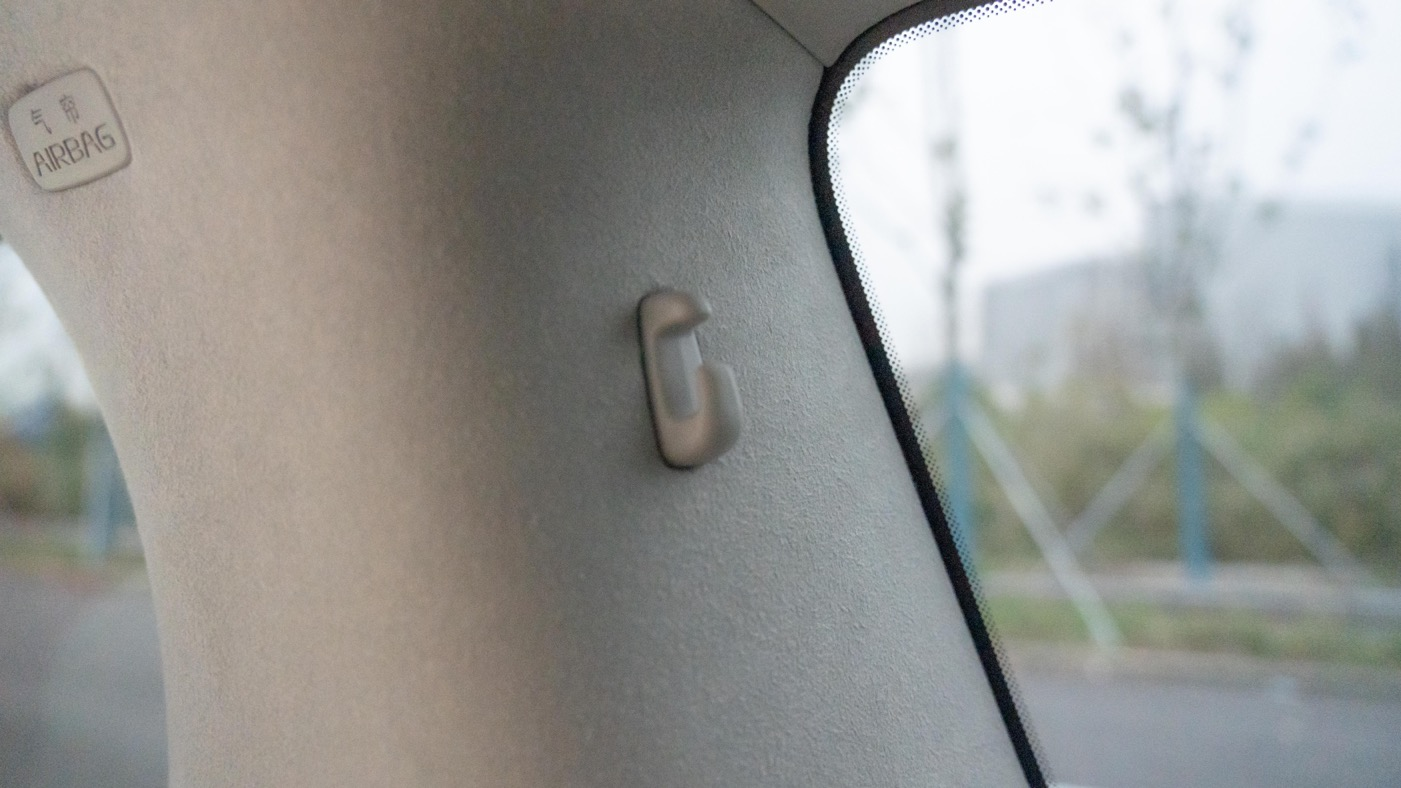
There are also air vents on both sides of the third row, which are placed next to the top reading lights. In addition, there is a reading light in front of the third-row reading light, and the illumination angle can be adjusted to make the second row brighter at night.
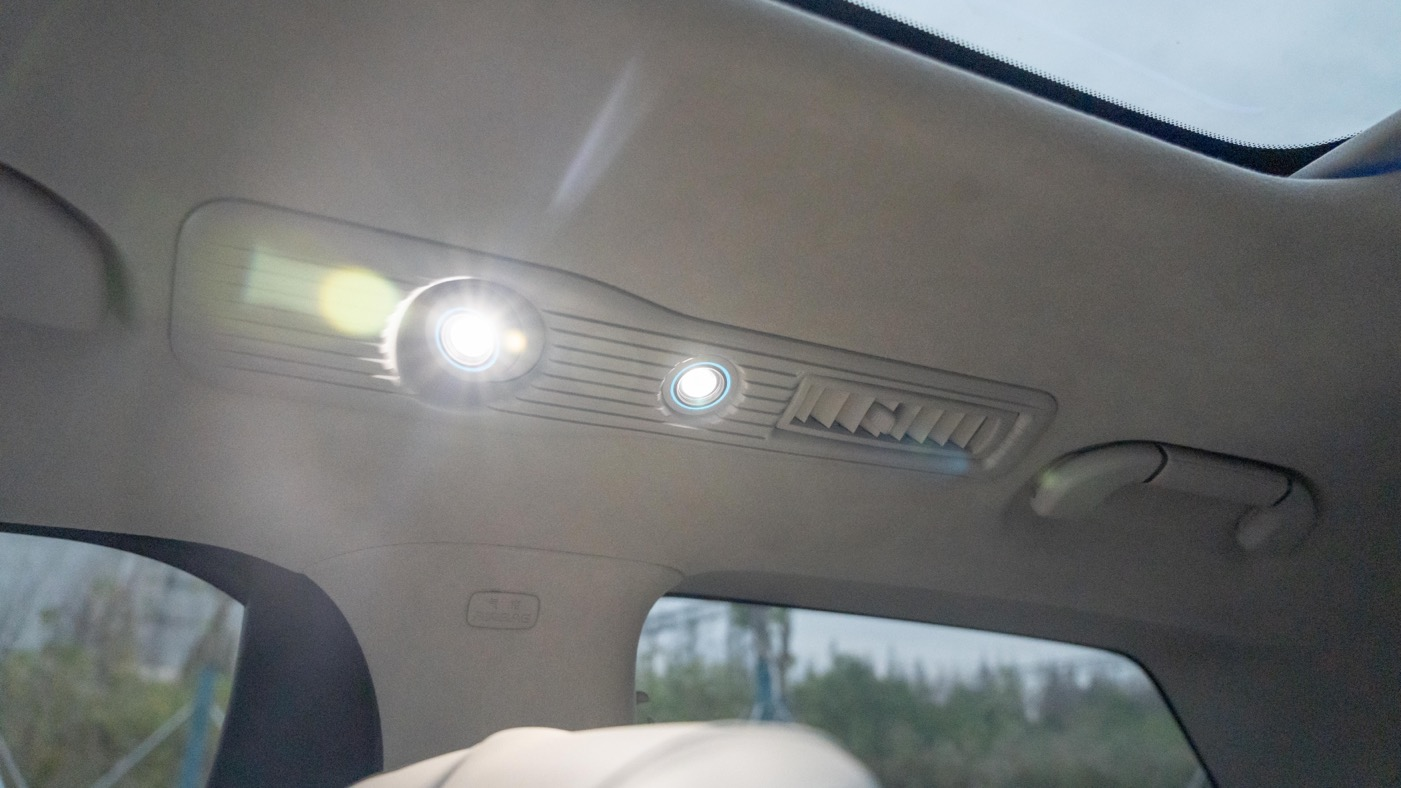
Finally, let’s take a look at the ambient lights of the DENZA D9. The front row’s light strip runs through the entire dashboard.

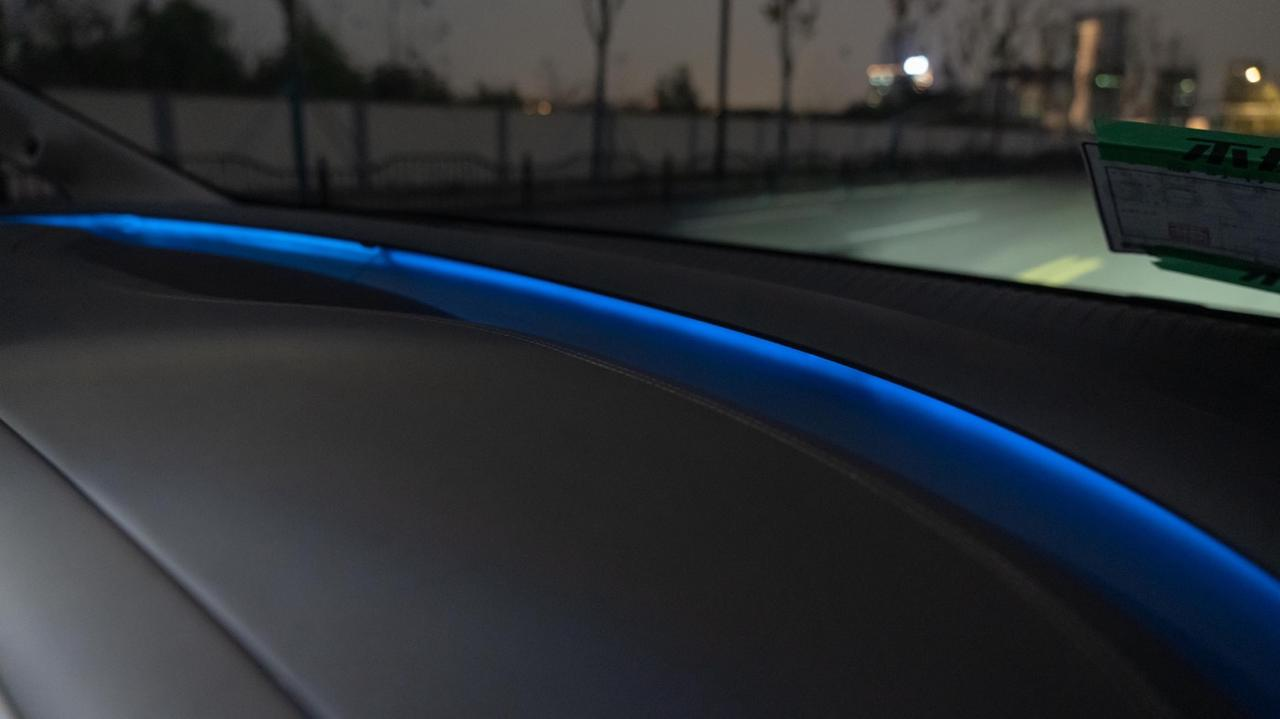 The windows on the bottom of the second and third rows, as well as the back of the seats in the first row, also have the same light strip.
The windows on the bottom of the second and third rows, as well as the back of the seats in the first row, also have the same light strip.
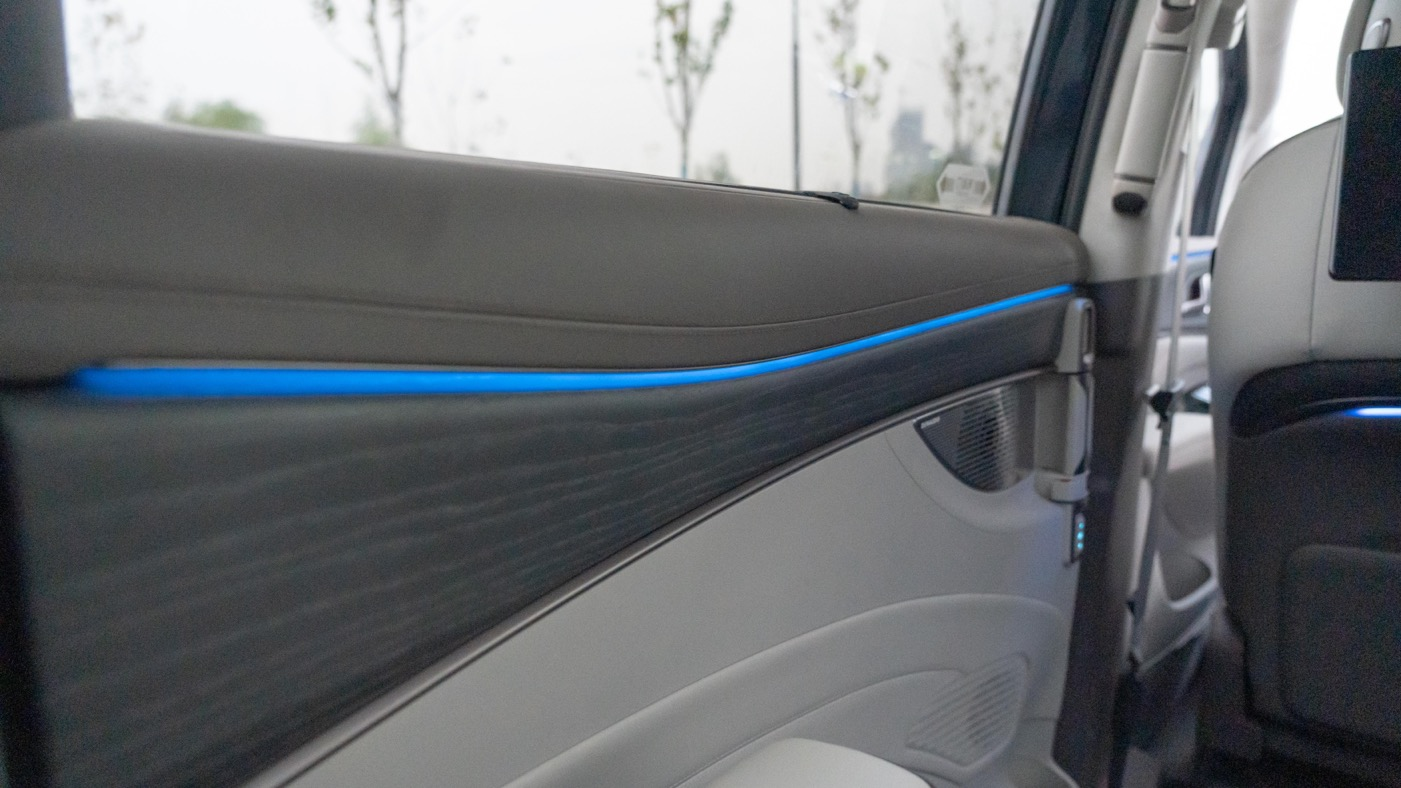
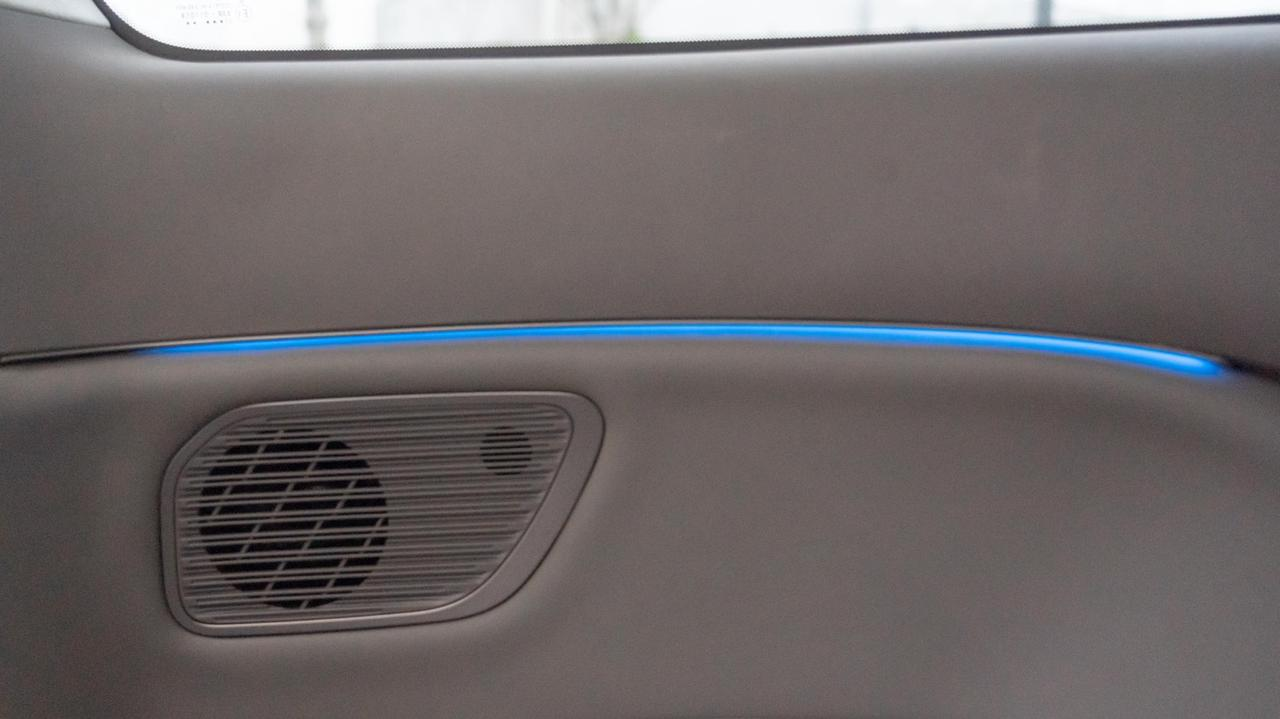
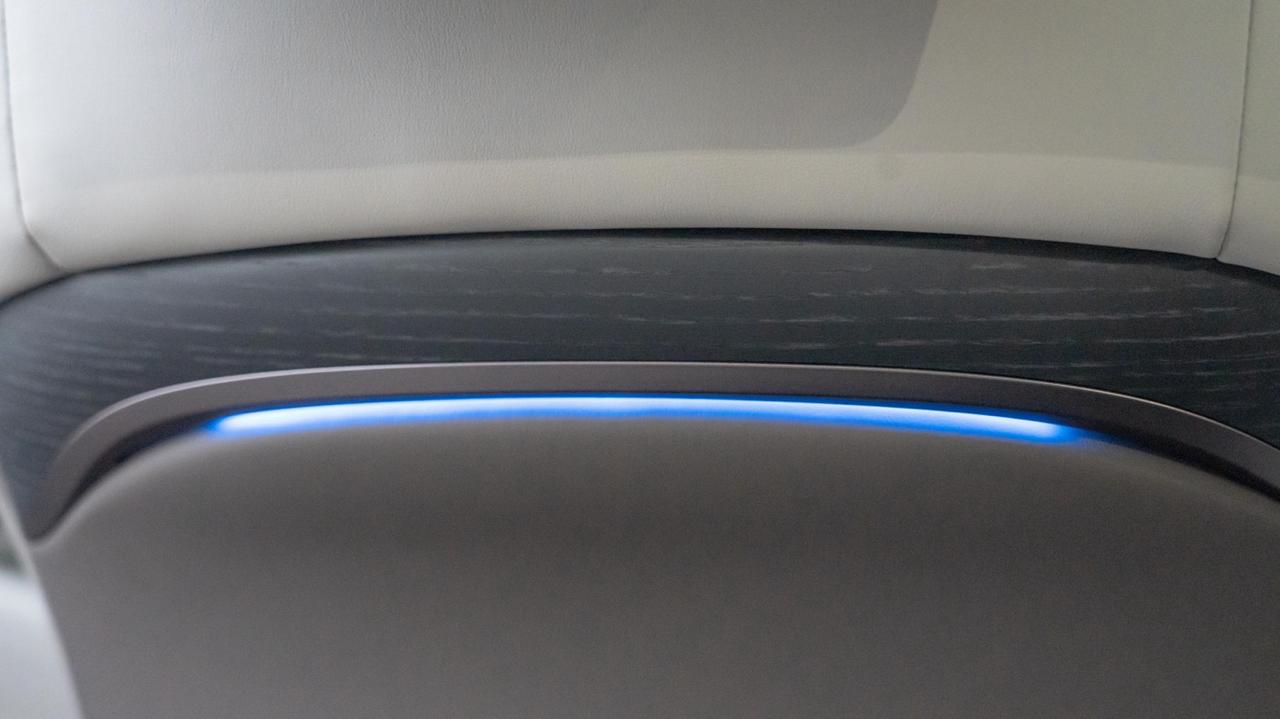
What’s particularly special is that there is also an ambient light strip on the panoramic sunroof in the second row, which is indeed relatively rare in design.
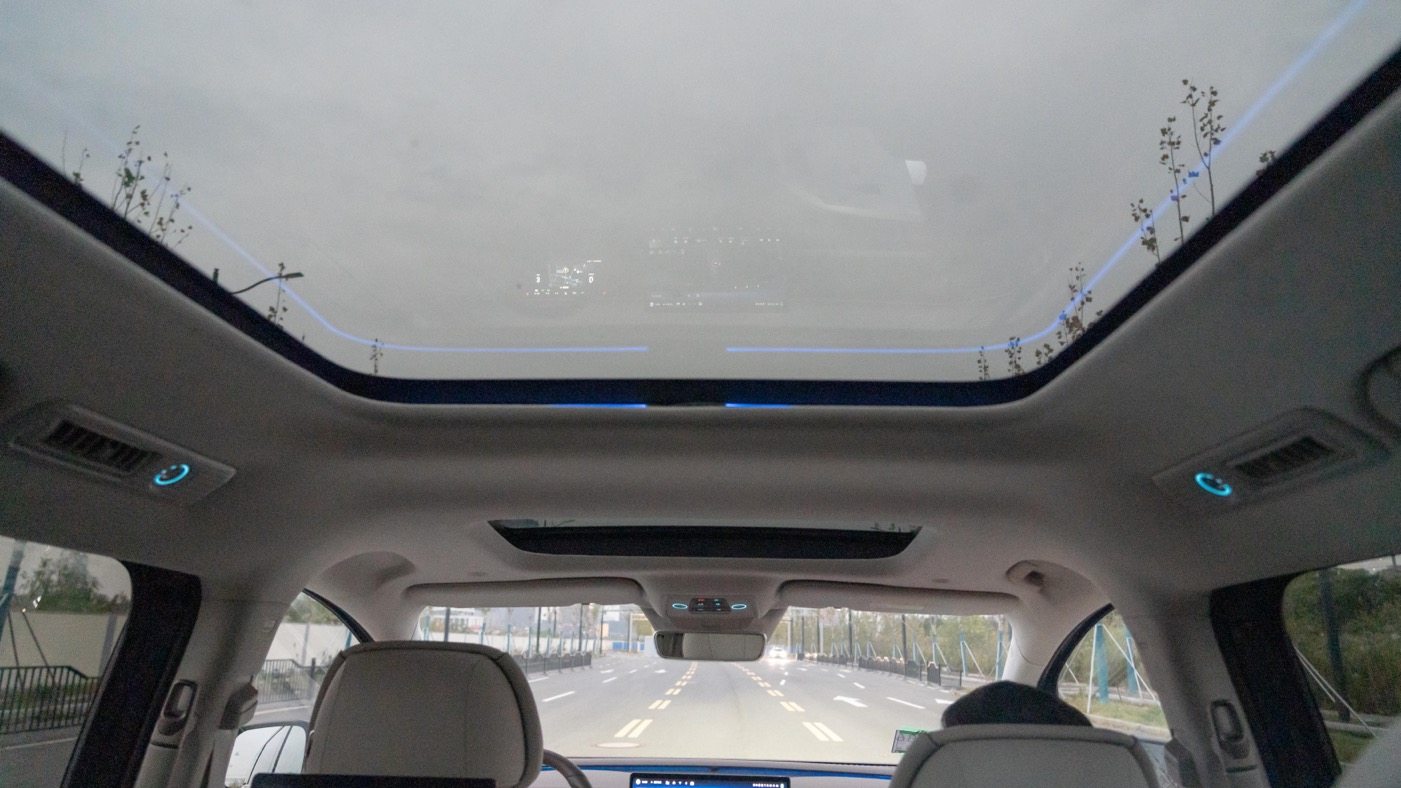
At this point, the interior is basically introduced. Overall, the DENZA D9 has done well in the core MPV experience, with good passenger space and second-row seat comfort. The NAPPA leather seats, furry leather on the top, wooden decorative panels on the door, crystal gear lever, all give a high-end feel.
The lacking parts mainly lie in some details inside the car, such as the cut-hand metal cover of the sound system and the slightly plastic feel of the welcome pedals and refrigerator that need to be optimized.
In conclusion
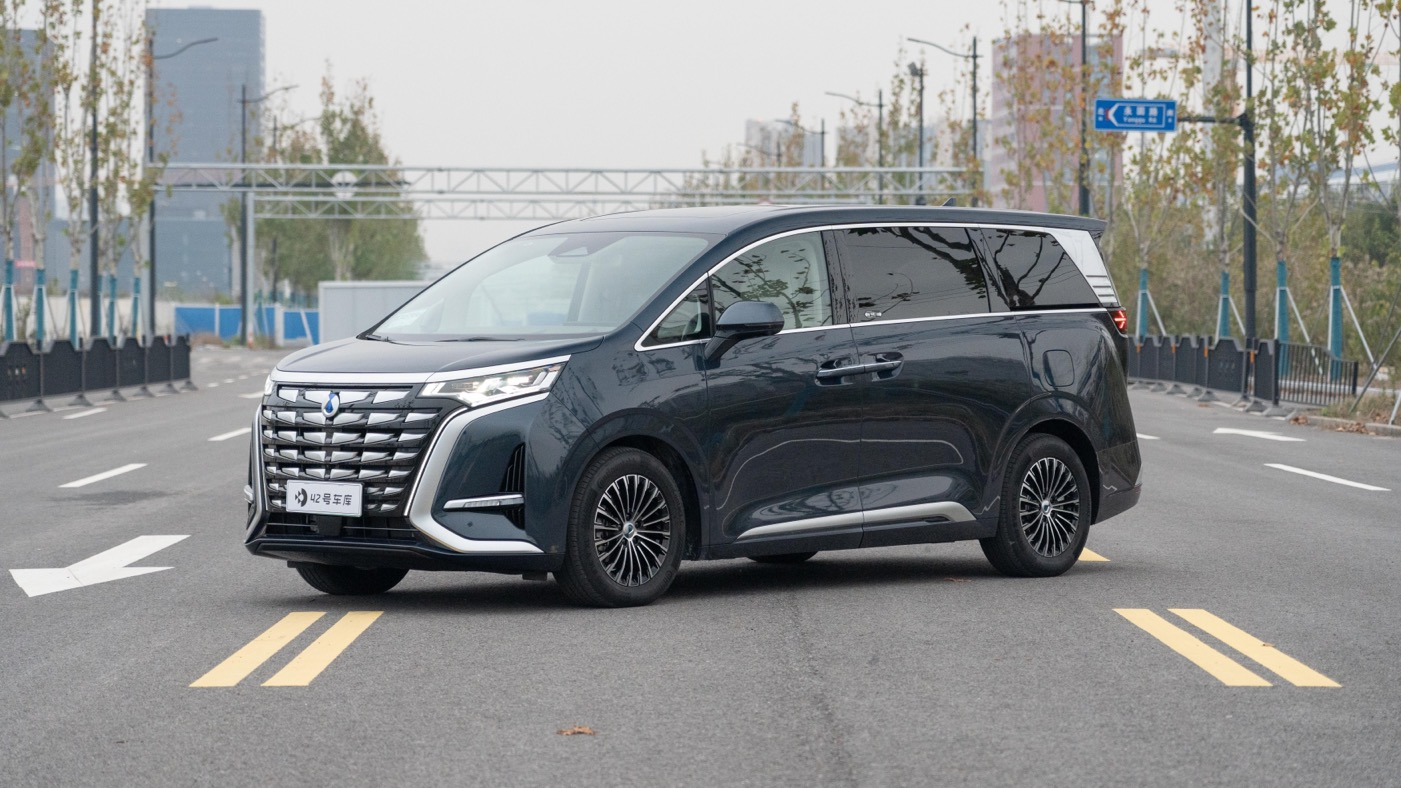
During the publicity process, DENZA D9 often mentions the phrase “high and not arrogant.” After experiencing these things, I agree with this.
However, my understanding of this phrase is not the same as theirs. High-end is not only about doing well in the basics, but also focusing on details.
As an MPV, DENZA D9 is undoubtedly qualified and even outstanding. Excellent seating and storage space, good driving comfort, and it can take care of everyone seated in the seats.
But as a high-end luxury MPV, it is not perfect enough. For example, details such as the plastic welcome pedal leave me feeling somewhat lacking.
Who is this car suitable for? I think it is suitable for both business owners who frequently use it for pick-ups and drops-offs, as well as dads who use it for daily transportation of older people and children.
The space, ride experience, and comfort of this car are all excellent. Although the luxurious feel may be lacking in details, first-time drivers of this car should not dwell on those details, but rather be impressed by the two large screens in the backseat and the small screen on the armrest, which all look quite upscale.
As the first car to launch DENZA’s brand revival, DENZA D9 does show DENZA’s sincerity. However, the high-end market is not a short-term proposition, but rather a proposition for the entire lifecycle of a brand. DENZA has not done a good enough job in the details this time, but I believe it will do better in the future.
This article is a translation by ChatGPT of a Chinese report from 42HOW. If you have any questions about it, please email bd@42how.com.
